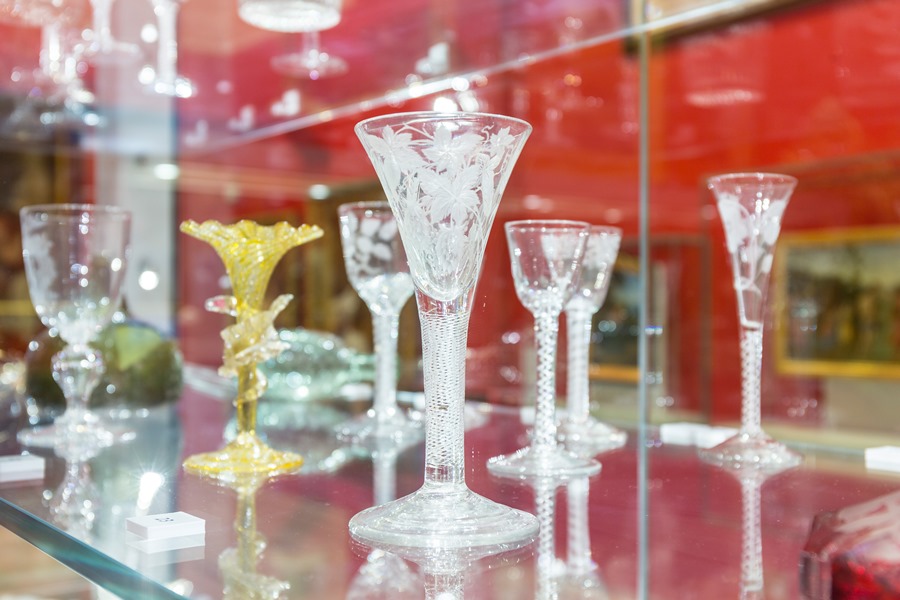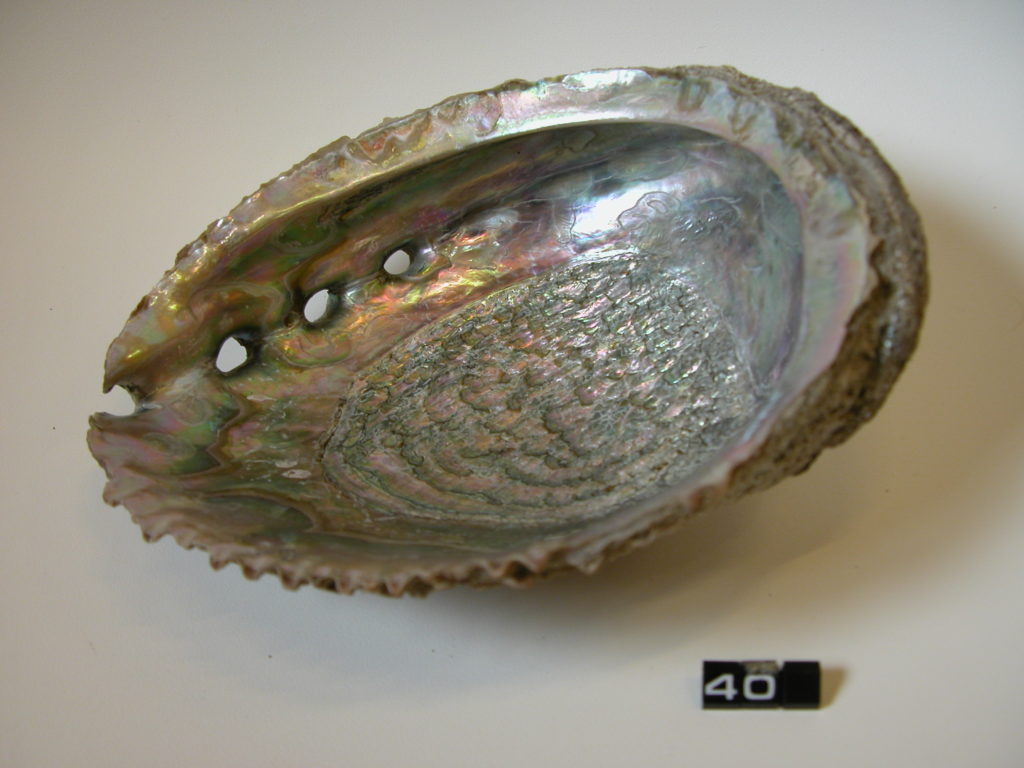
Abalone shell
Showing the encrusted outer part and mother-of-pearl interior of the shell.
Reference: L639
Can be found: Animal in Materials and Masters Collection
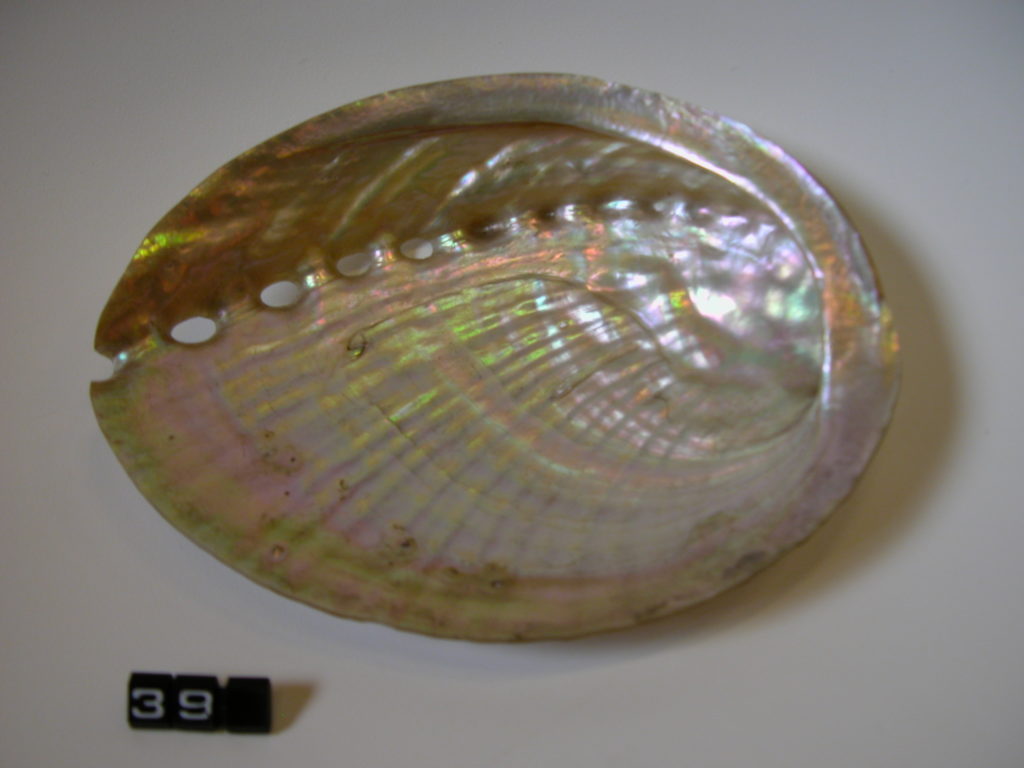
Abalone shell with outer part removed
Removal of the encrusted outer side leaves the mother of-pearl inner layer. It is this iridescent (light-refracting) material that has attracted and fascinated people for centuries and been used extensively for decoration.
Reference: 2010.12.3
Can be found: Animal in Materials and Masters Collection
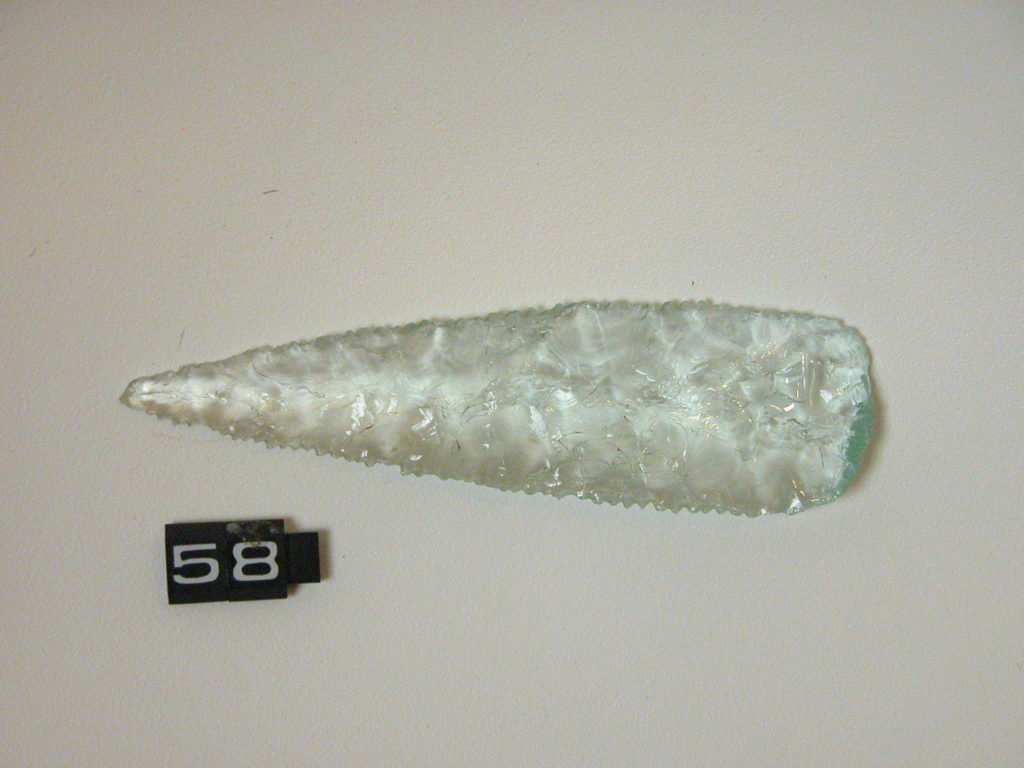
Aboriginal arrowhead
Made from the glass of a discarded bottle.
Reference: CANCM:nn
Can be found: GlassLower shelf in Materials and Masters Collection
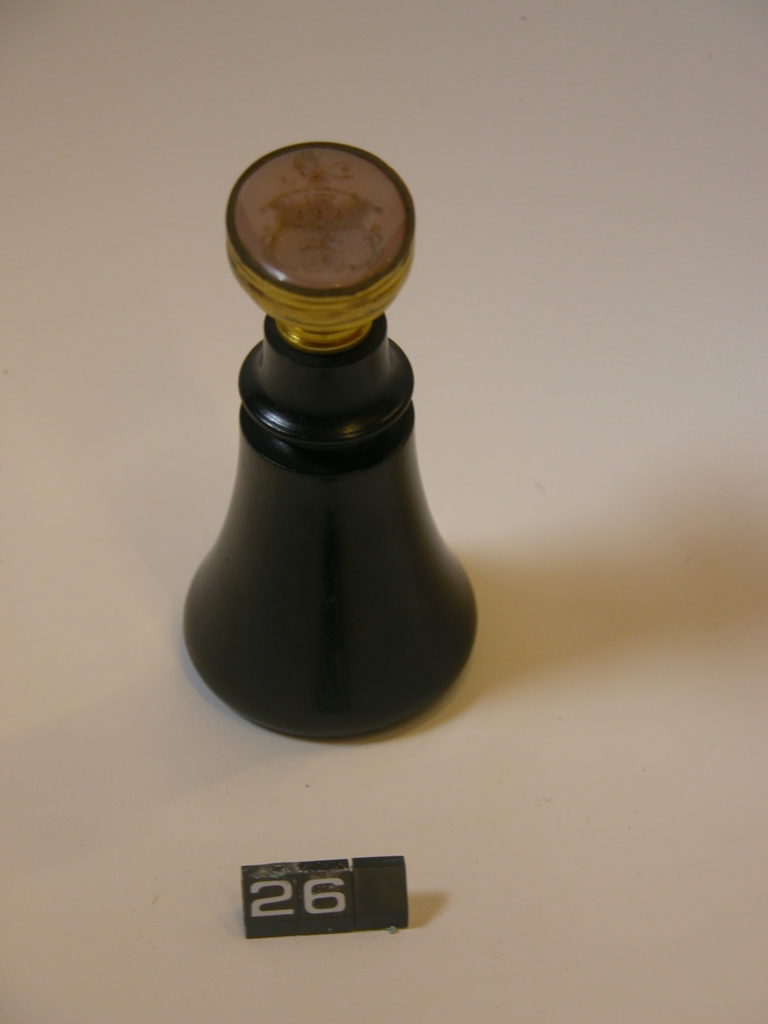
Agate seals and beads
Agate is a Silicate from the Quartz group. It is translucent, with bands of colour created by traces of Iron and Manganese. It is prized for its decorative properties. Here a pinkish-red variety has been made into stamps with a personal seal and a greenish clouded variety, smoke agate, has been made into beads.
Reference: (nn), 2000.255.11.1, 2000.255.2
Can be found: Stone in Materials and Masters Collection

Apache pinfire knuckleduster pistol
about 1850
Signed ‘Dolne-Bar’ on barrel of revolver
Arms and armour have been made of metal since the Bronze Age. This weapon has a nickel-silver frame revolver with six-chambered fluted cylinder and folding butt. It combines this with a knuckleduster and blade.
Presented by Mr James Todd of Pound Lane, 1919
Reference: 393
Can be found: Metal in Materials and Masters Collection
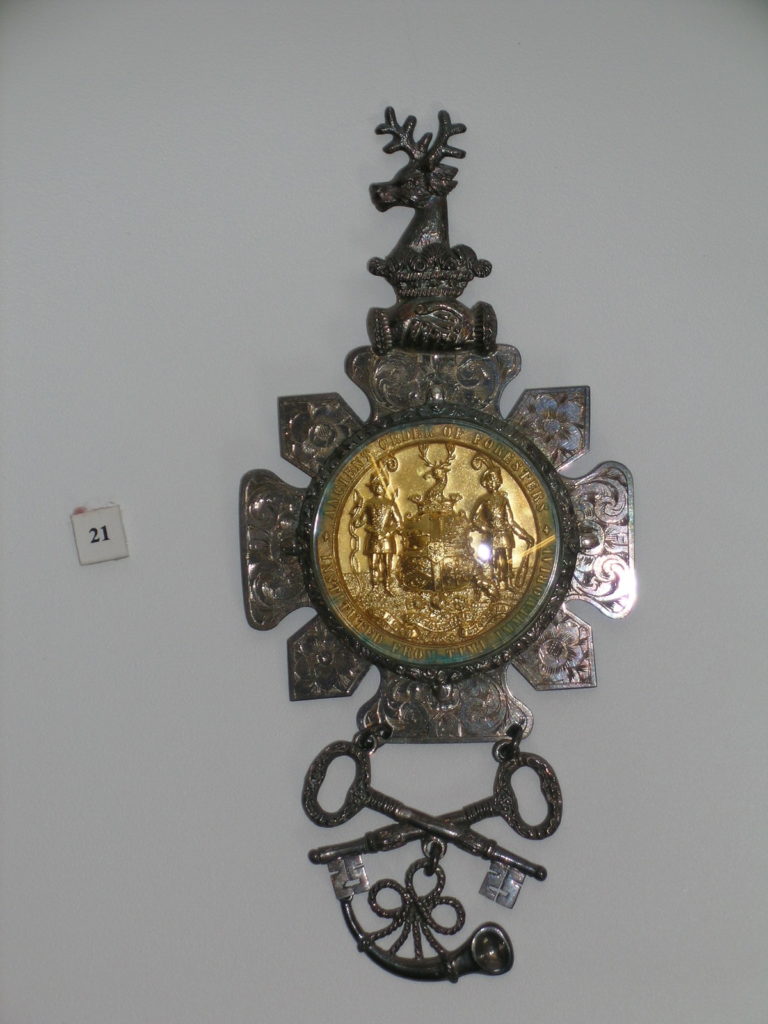
Badge of the Ancient Order of Foresters, Miniature ‘Legion d’Honneur’ medal and metal seal
Silver, gold, other metals and enamel
Presented by Mr Alexander Wetherelt, by 1884
Reference: 2000.13.1
Can be found: Metal in Materials and Masters Collection

Base of a pale blue glass vessel with fluted pattern
Reference: 2602
Can be found: BaseGlass in Materials and Masters Collection
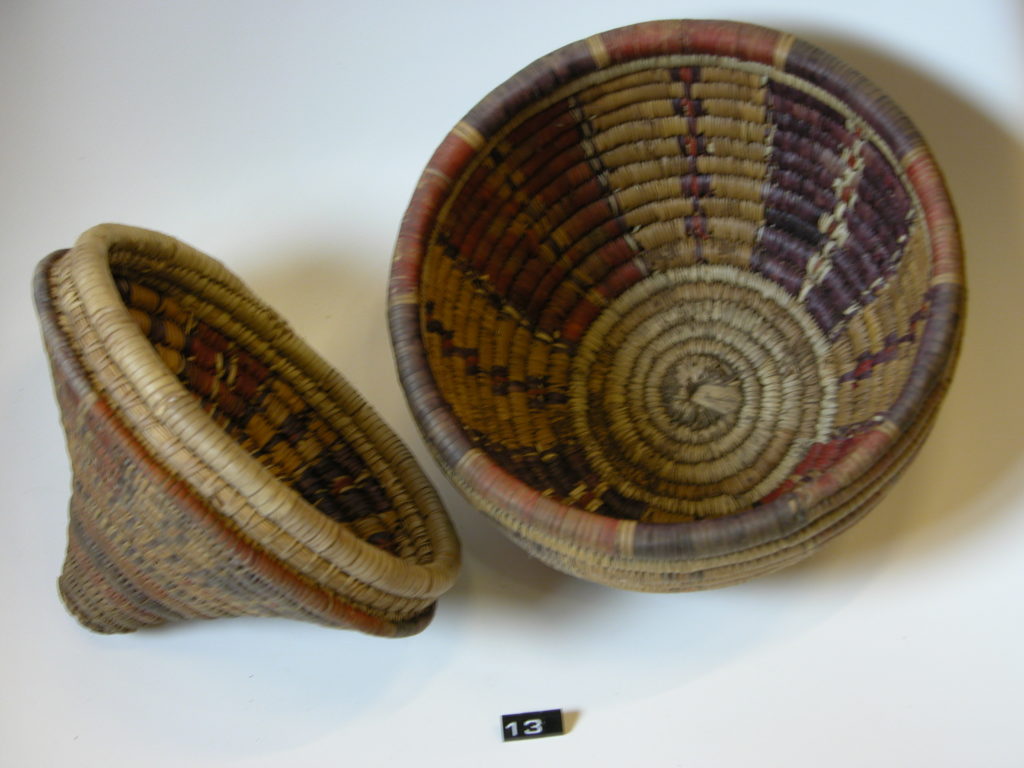
Basket with lid
Franks Collection
Reference: CANCM:nn
Can be found: Vegetable in Materials and Masters Collection
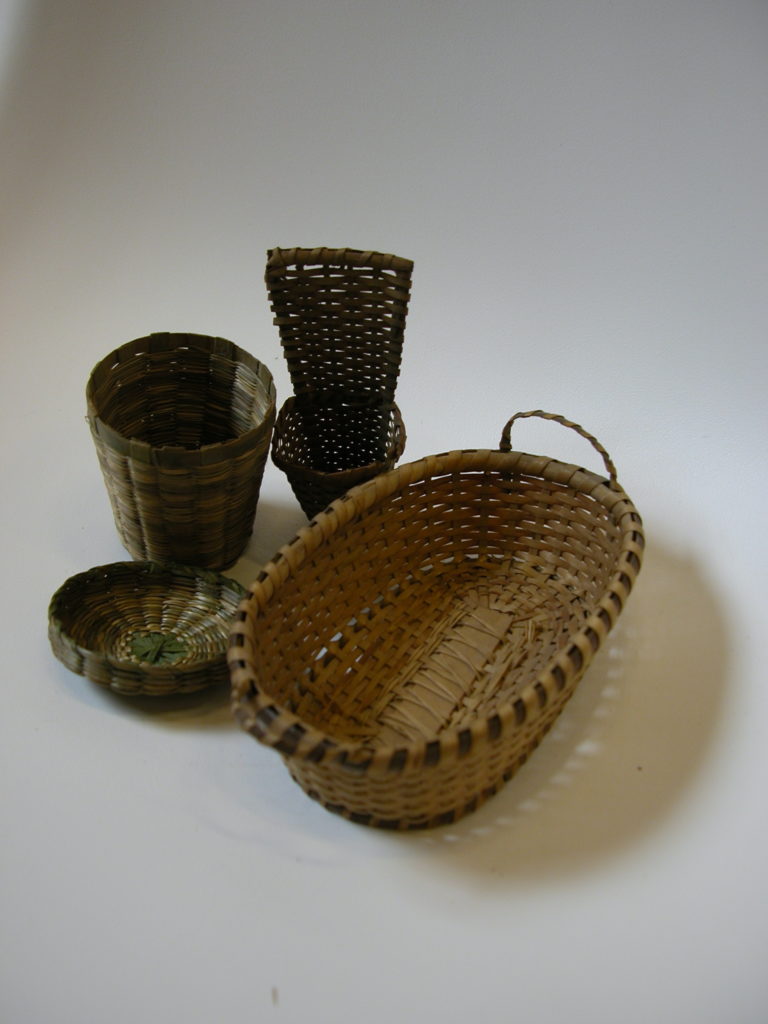
Baskets and animals from the dolls’ house furniture collection
Bequeathed by Miss G. H. Veraguth to the daughter of Dr Wynn and presented to the Museum in memory of Miss Veraguth, 1974
Reference: 9870
Can be found: Vegetable in Materials and Masters Collection

Bead or gaming counter with hole in centre
Bone
Presented by Lieutenant Colonel Copeland
Reference: 2121
Can be found: Animal in Materials and Masters Collection
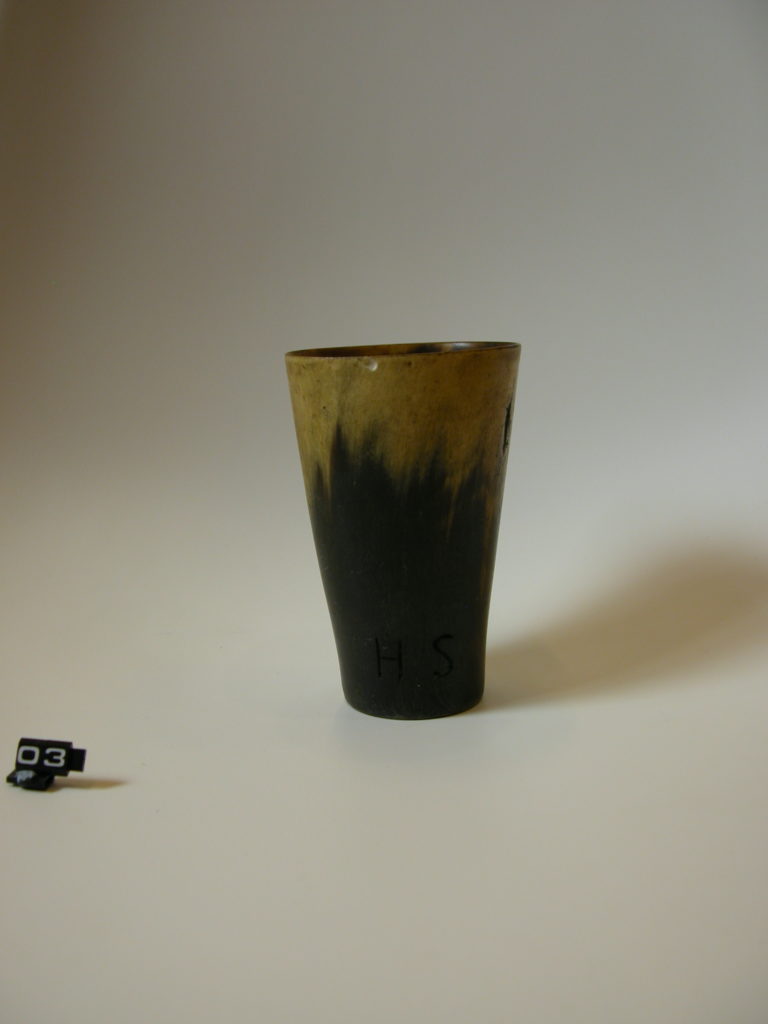
Beaker
Horn
Presented by Mr H. Stokes
Reference: 6751
Can be found: Animal in Materials and Masters Collection

Blue and red bowl
Reference: CANCM:nn
Can be found: Colour and PatternLower shelf in Materials and Masters Collection
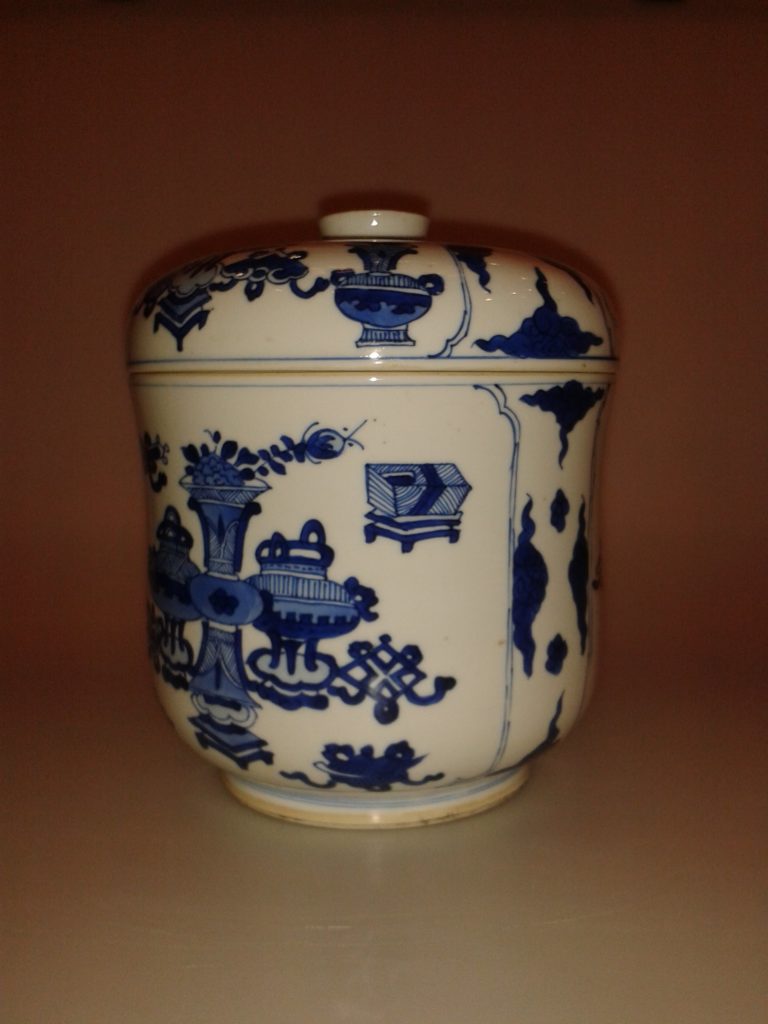
Blue and white covered bowl China, K’ang Hsi period (1662-1722)
K’ang Hsi period
Bequeathed by John Irving, 1915
Reference: 5530-31
Can be found: Colour and PatternLower shelf in Materials and Masters Collection

Blue and white covered jar China, K’ang Hsi period (1662-1722)
Bequeathed by John Irving, 1915
Reference: 5526-7
Can be found: Colour and PatternLower shelf in Materials and Masters Collection
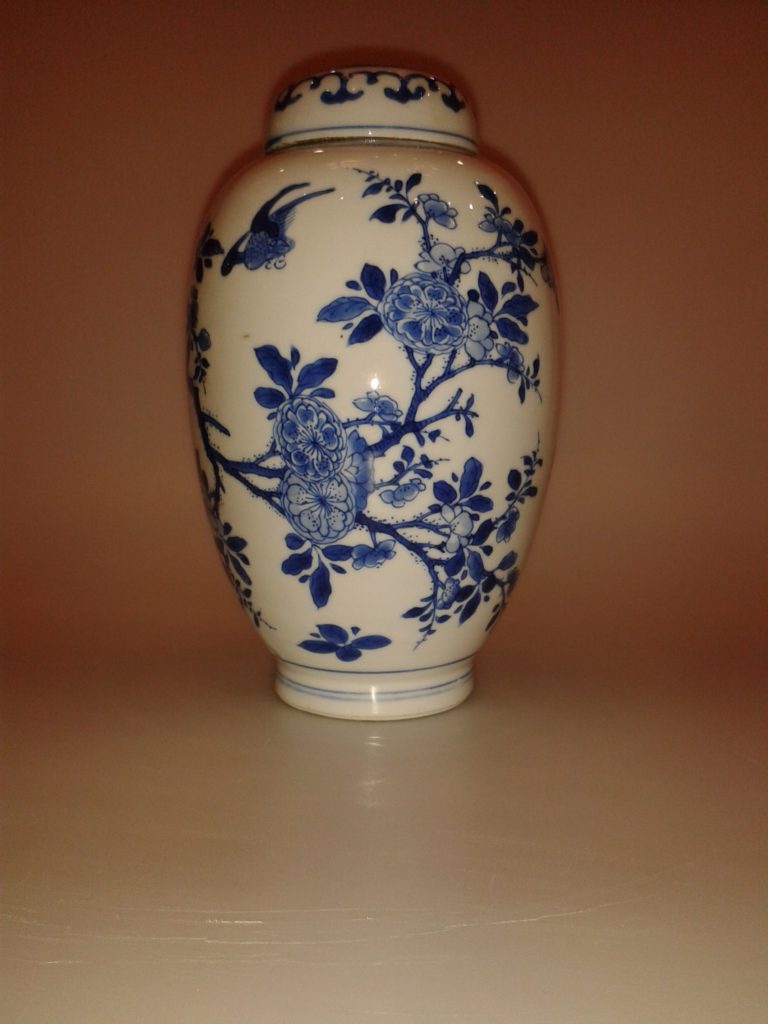
Blue and white lidded vase with flowering cherry
China, K’ang Hsi period (1662-1722)
This type of lidded vase is known as a ginger jar
Bequeathed by John Irving, 1915
Reference: 5523
Can be found: Colour and PatternLower shelf in Materials and Masters Collection
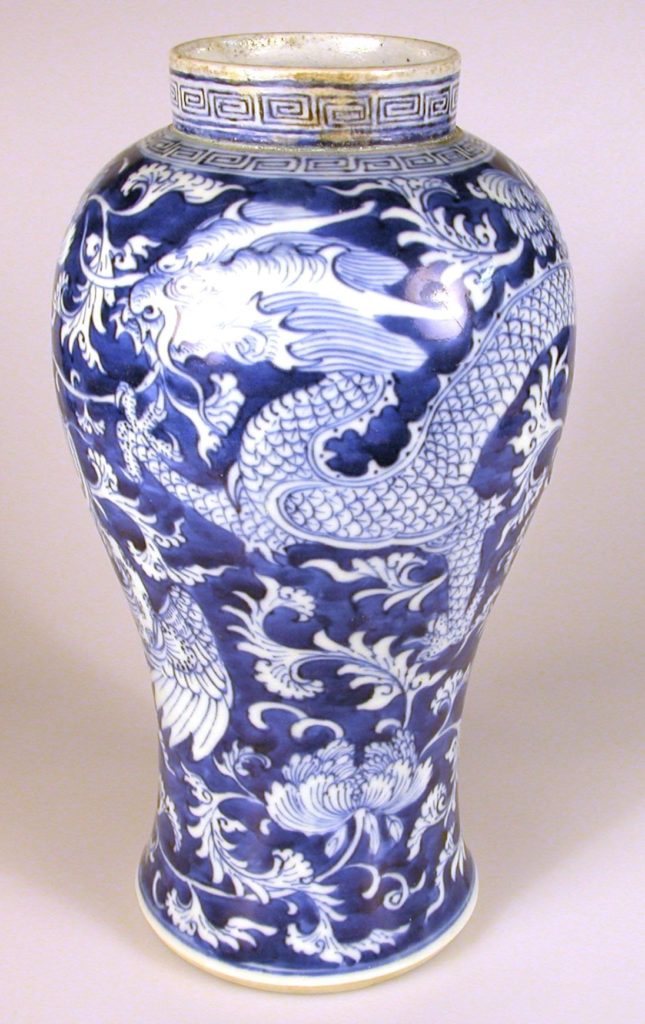
Blue and white vase with deep blue ground
Chinese, with Ch’eng Hui mark but probably not earlier than K’ang Hsi period (1662-1722)
Bequeathed by John Irving, 1915
Reference: 5535
Can be found: Centre shelfColour and Pattern in Materials and Masters Collection

Blue beads
Beads made from blue, red and ‘milles feuilles’ glass.
Reference: CANCM:nn
Can be found: GlassLower shelf in Materials and Masters Collection
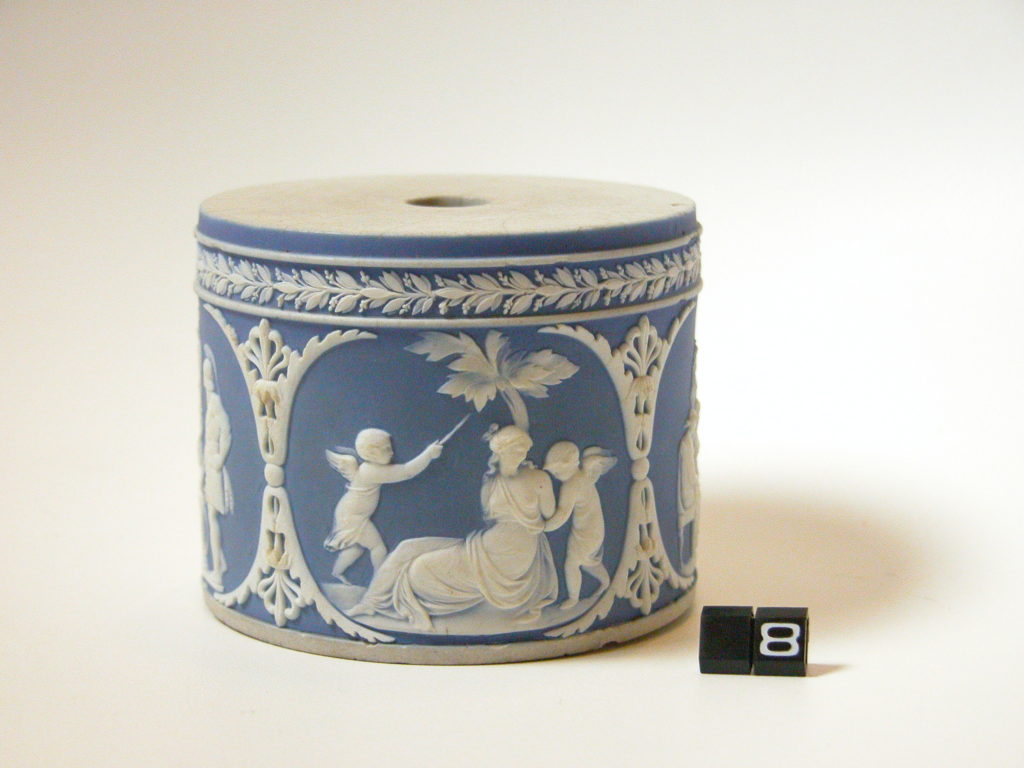
Blue Jasperware drum
Late 18th century
Wedgwood
A pedestal or base on which a lamp, candleholder, vase, figure or similar item could be mounted.
Bequeathed by John Irving, 1915
Reference: 5323
Can be found: Colour and PatternLower shelf in Materials and Masters Collection
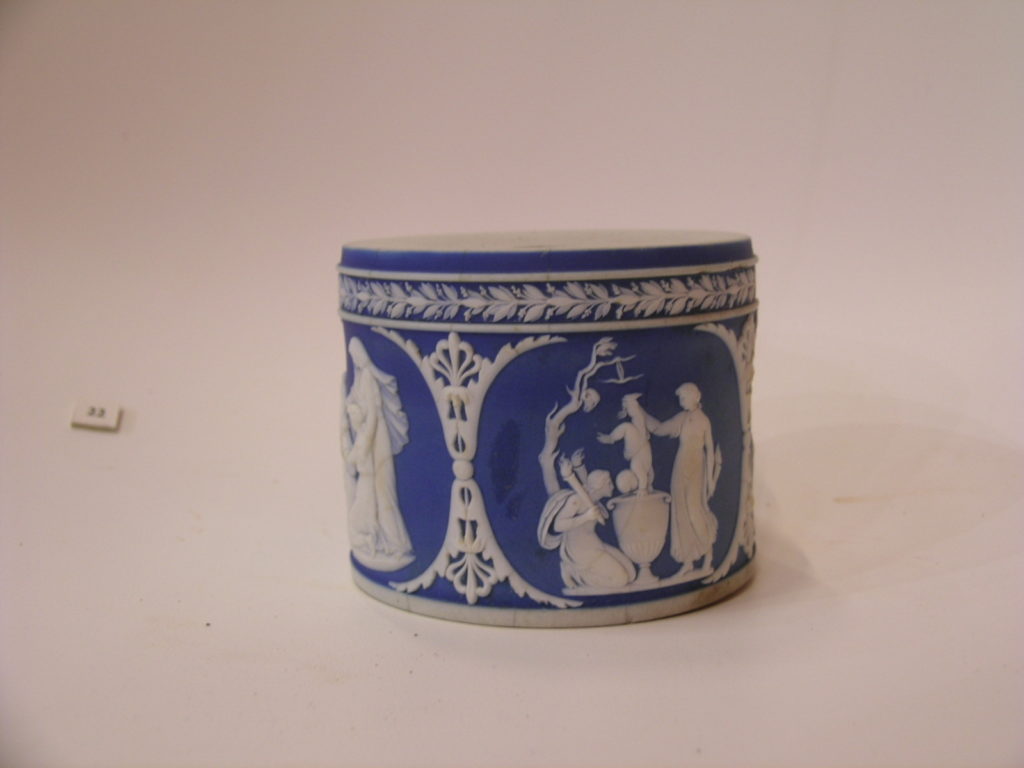
Blue Jasperware drum
Late 18th century
Wedgwood
A pedestal or base on which a lamp, candleholder, vase, figure or similar item could be mounted.
Bequeathed by John Irving, 1915
Reference: 5322
Can be found: Centre shelfEarth in Materials and Masters Collection

Bone comb
Anglo-Saxon
Found in an Anglo-Saxon rubbish pit at number 1 Watling Street, Canterbury, by Frank Jenkins in 1948.
Reference: 6415
Can be found: Animal in Materials and Masters Collection
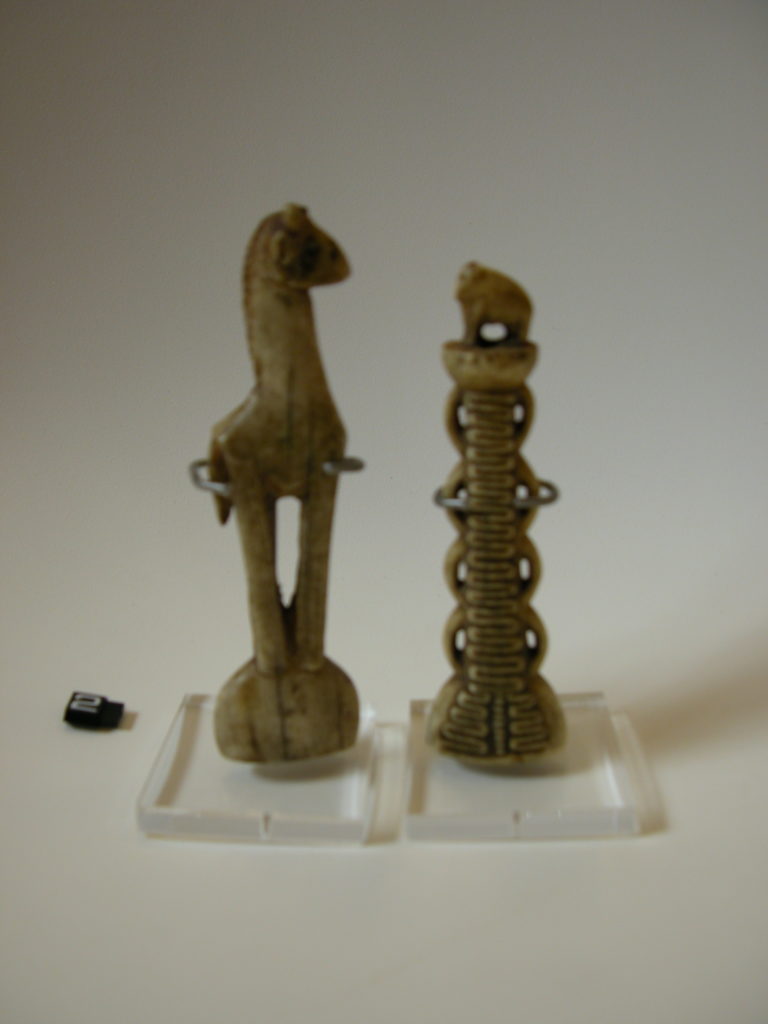
Bone knife handles
Reference: 4560, 4561
Can be found: Animal in Materials and Masters Collection

Bone or ivory carving of a saint 16th – 17th century, Florence, Italy
Depicts a saint in monk’s clothing holding and pointing to a large Communion host inscribed ‘I H S’.
Presented by Mr Ingram Godfrey, 1899
Reference: 1890
Can be found: Animal in Materials and Masters Collection
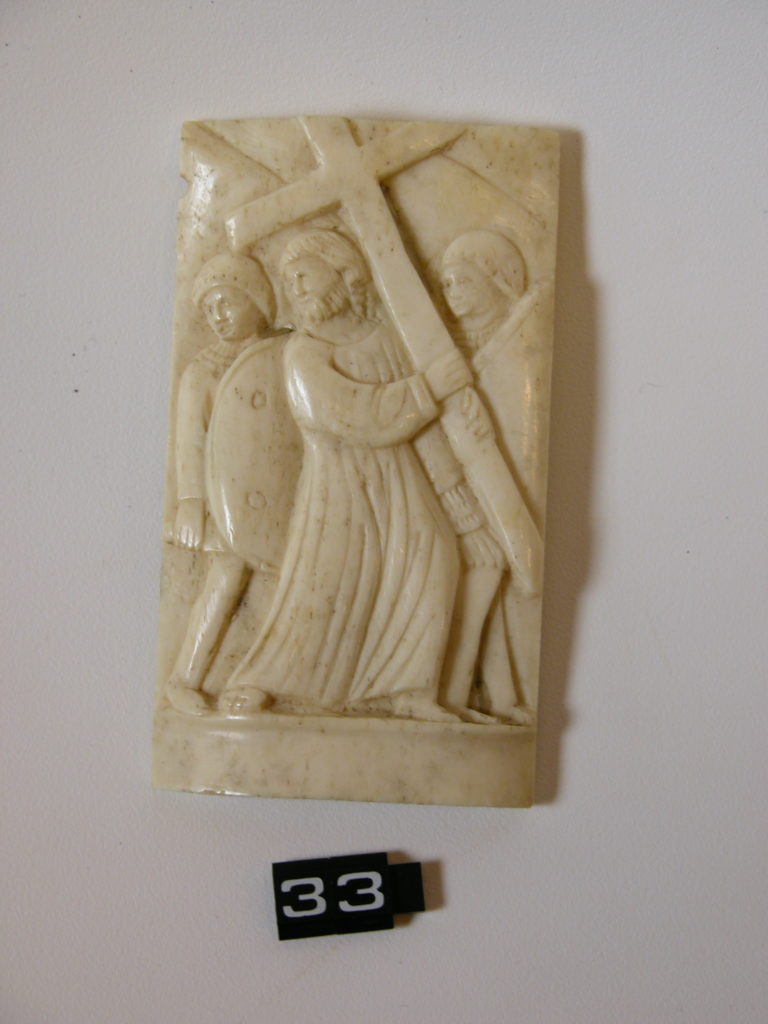
Bone or ivory carving of Jesus carrying his cross
16th – 17th century, Florence, Italy
Depicts Jesus carrying his cross on the way to Calvary, with two soldiers behind him.
Presented by Mr Ingram Godfrey, 1899
Reference: 1889
Can be found: Animal in Materials and Masters Collection
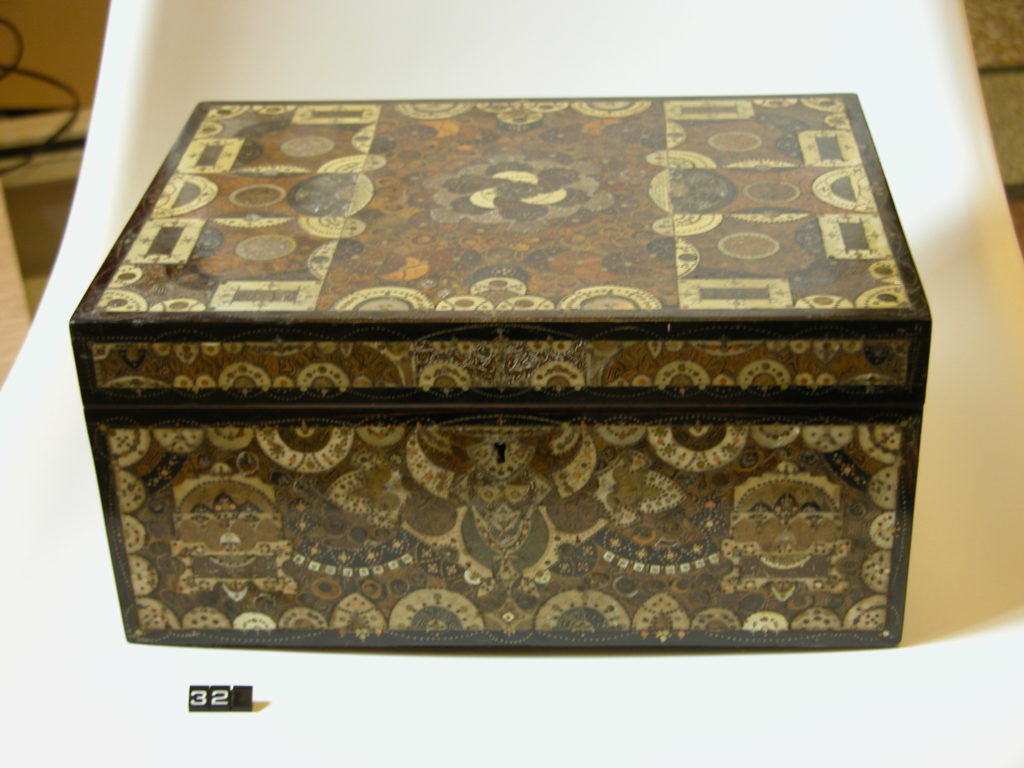
Box decorated with inlay Charles Carrick of Canterbury
Mother-of-pearl, ivory, wood and metal
Reference: 4653
Can be found: Animal in Materials and Masters Collection

Bracelet
Reference: 6149
Can be found: Metal in Materials and Masters Collection
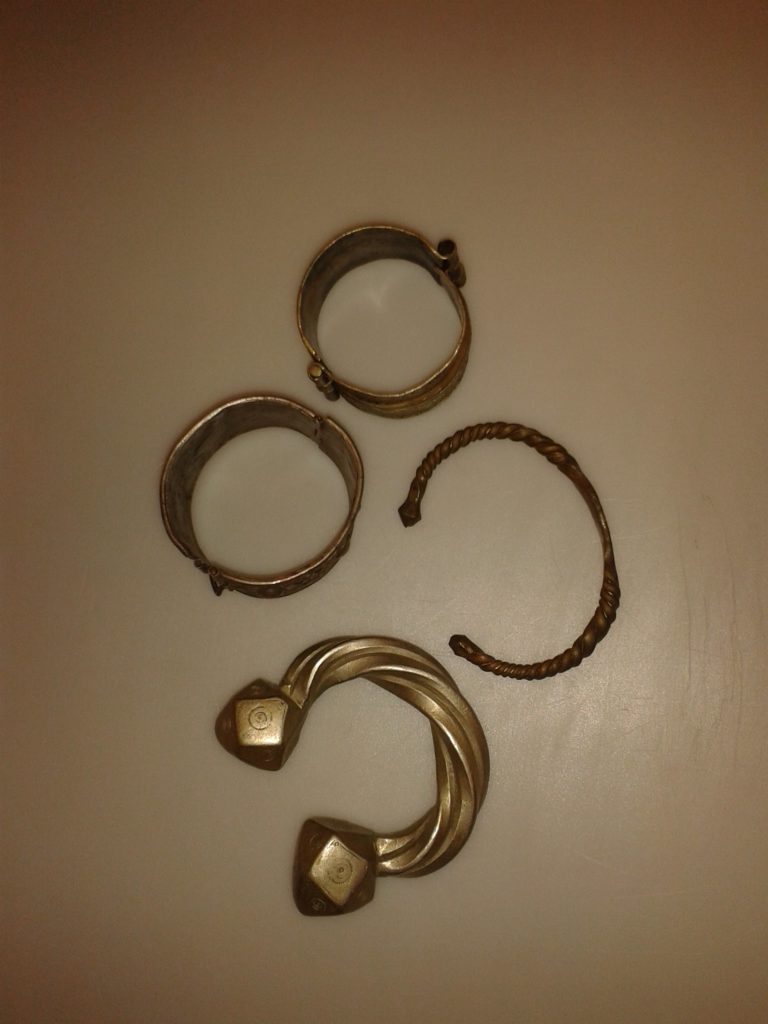
Bracelets and anklets
From northern Nigeria in Africa.
Lent by Dr David Heathcote, 2012
Reference: CANCM:nn
Can be found: Metal in Materials and Masters Collection
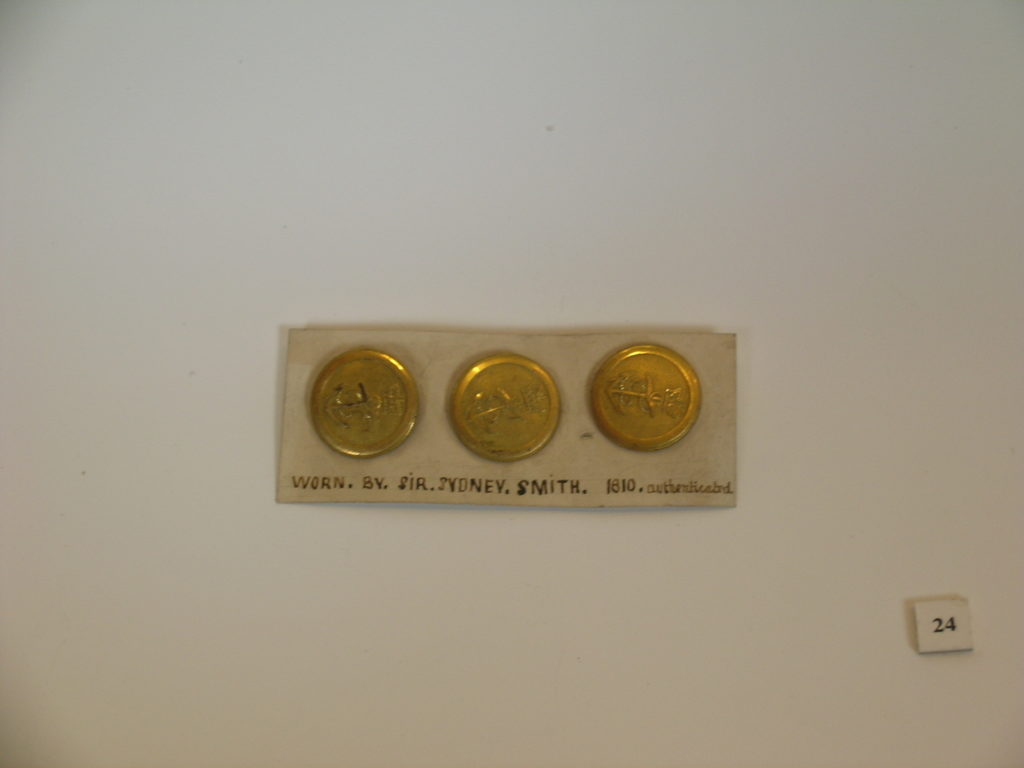
Brass buttons
This set of buttons were authenticated by the collector as having belonged to Sir Sydney Smith in 1810.
Presented by Mr Alexander Wetherelt, by 1884
Reference: CANCM:nn
Can be found: Metal in Materials and Masters Collection
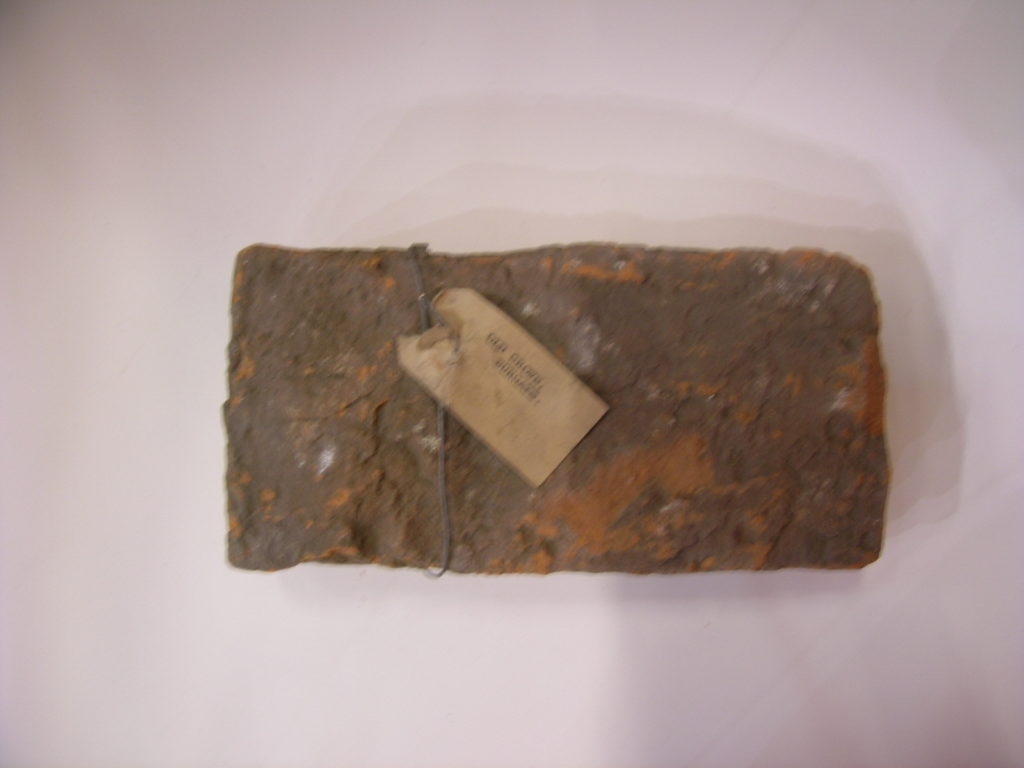
Brick from the Old Crown, Burgate Tudor
Earthenware
Tudor bricks have a distinctive shape: they are much thinner than modern bricks.
Reference: CANCM:nn
Can be found: Centre shelfEarth in Materials and Masters Collection
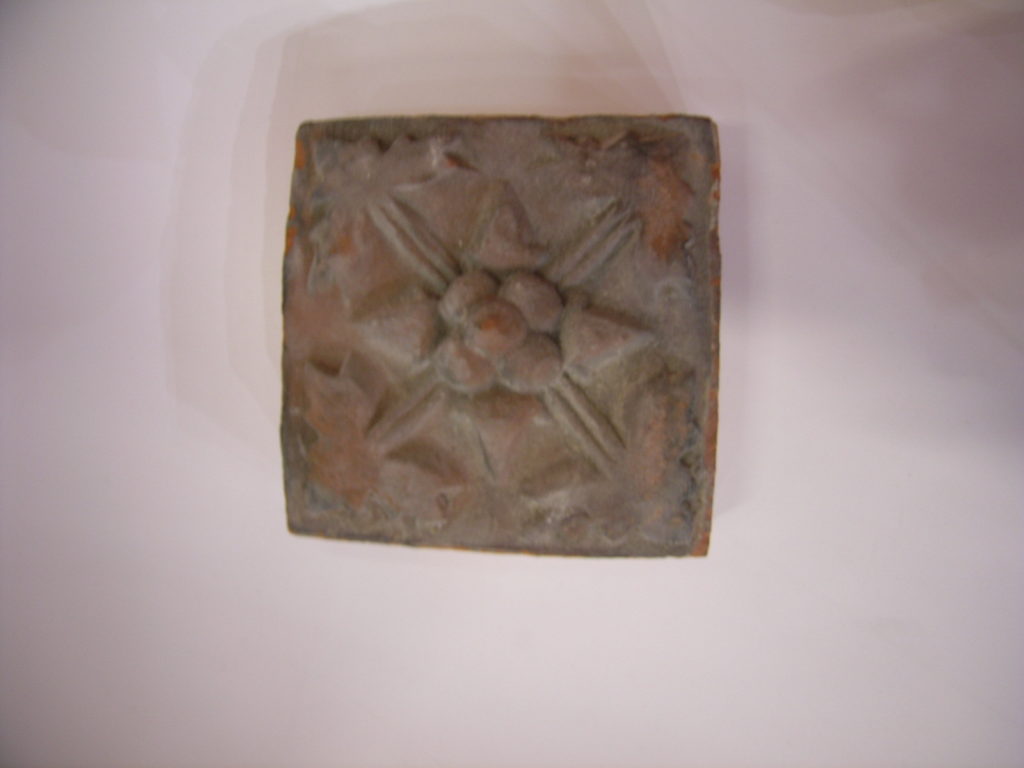
Brick with floral pattern from Kingsbridge Villas, Best Lane
19th century
Earthenware
Kingsbridge Villas used to stand where the new Beaney extension has been built in Best Lane.
Reference: CANCM:nn
Can be found: Centre shelfEarth in Materials and Masters Collection
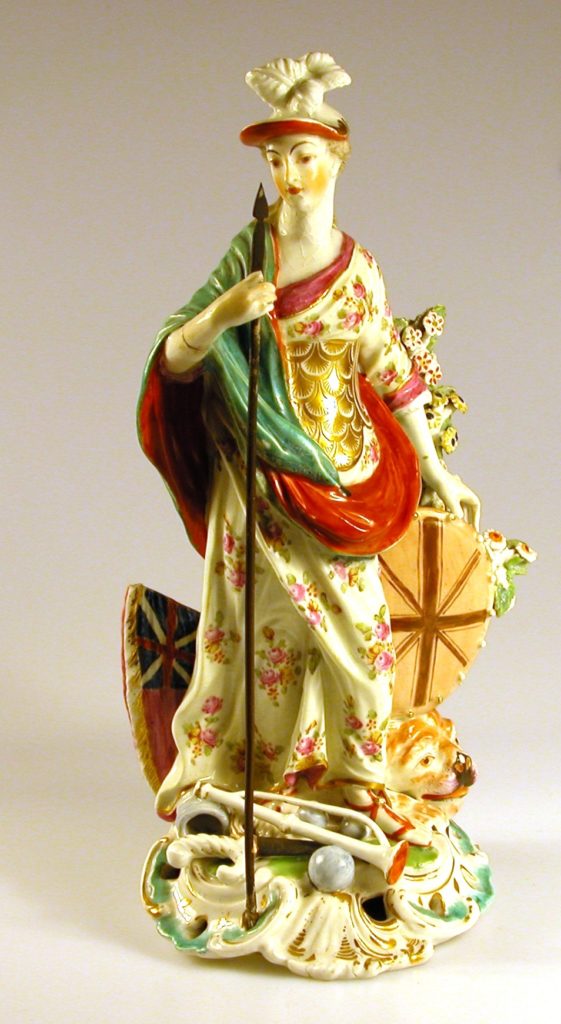
Britannia
1745, Chelsea
Porcelain
Bequeathed by John Irving, 1915
Reference: 5273
Can be found: EarthTop shelf in Materials and Masters Collection
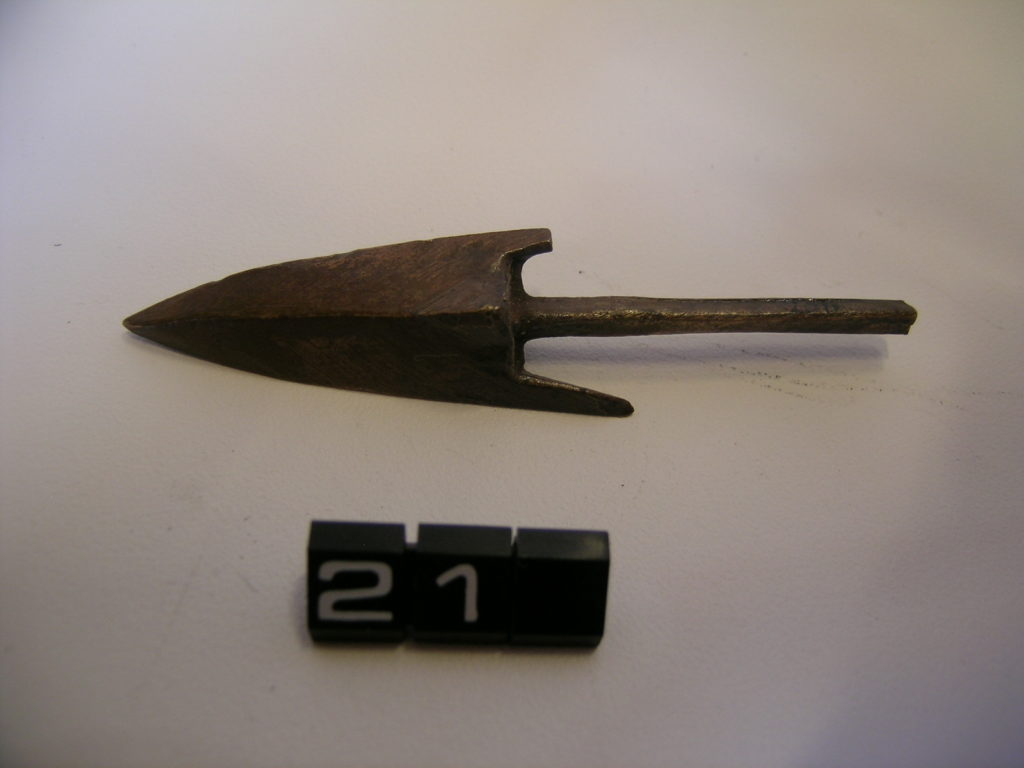
Bronze arrowheads
Bronze age
Presented by Lieutenant Colonel Copeland
Reference: 2008, 2011, (nn)
Can be found: Metal in Materials and Masters Collection
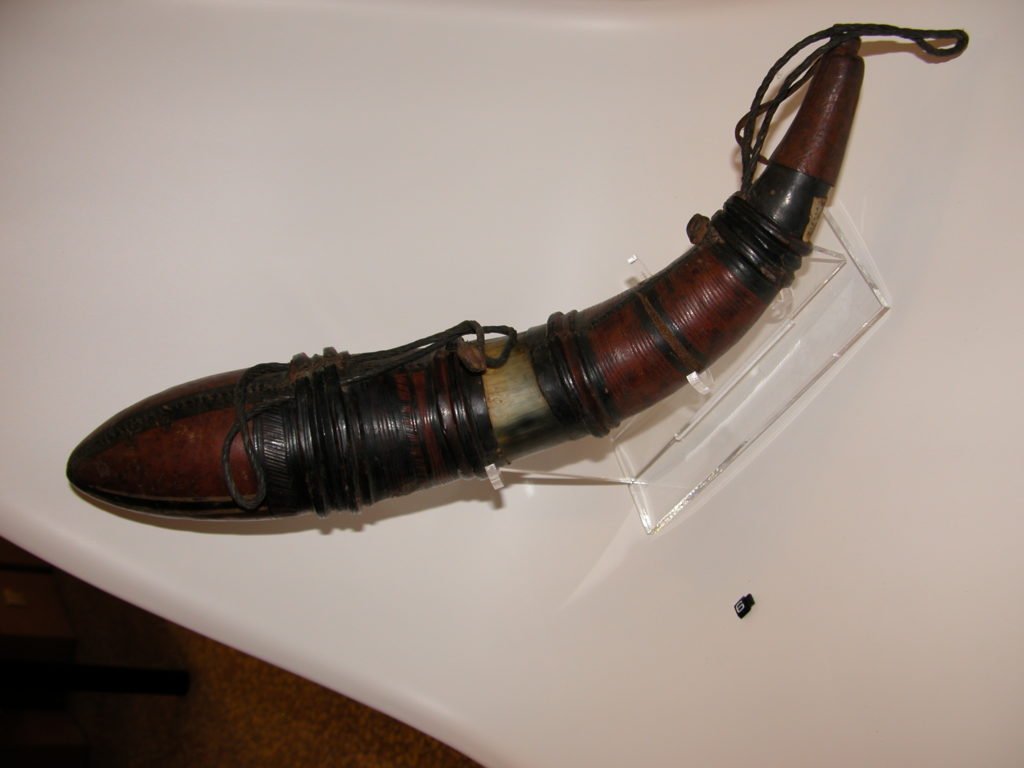
Buffalo powder horn
Buffalo horn and leather
Reference: 4829
Can be found: Animal in Materials and Masters Collection

Cannon ball
Iron
Reference: CANCM:nn
Can be found: Metal in Materials and Masters Collection
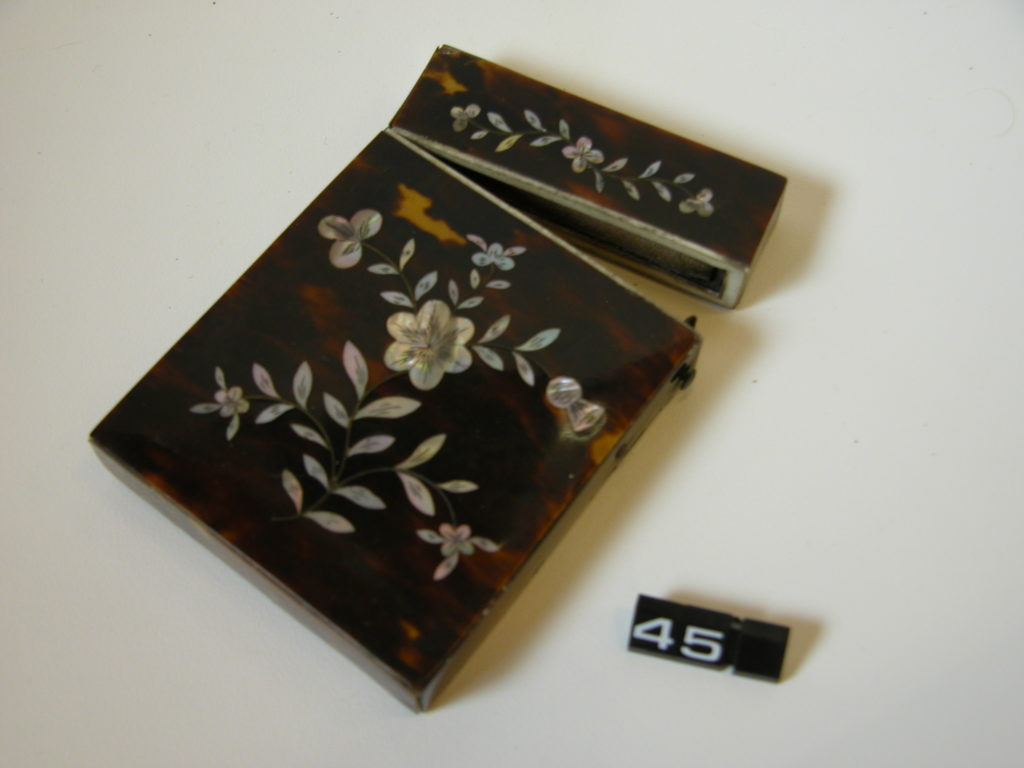
Card case
Tortoiseshell inlaid with mother-of-pearl
Bequeathed by John Irving, 1915
Reference: 5279
Can be found: Animal in Materials and Masters Collection
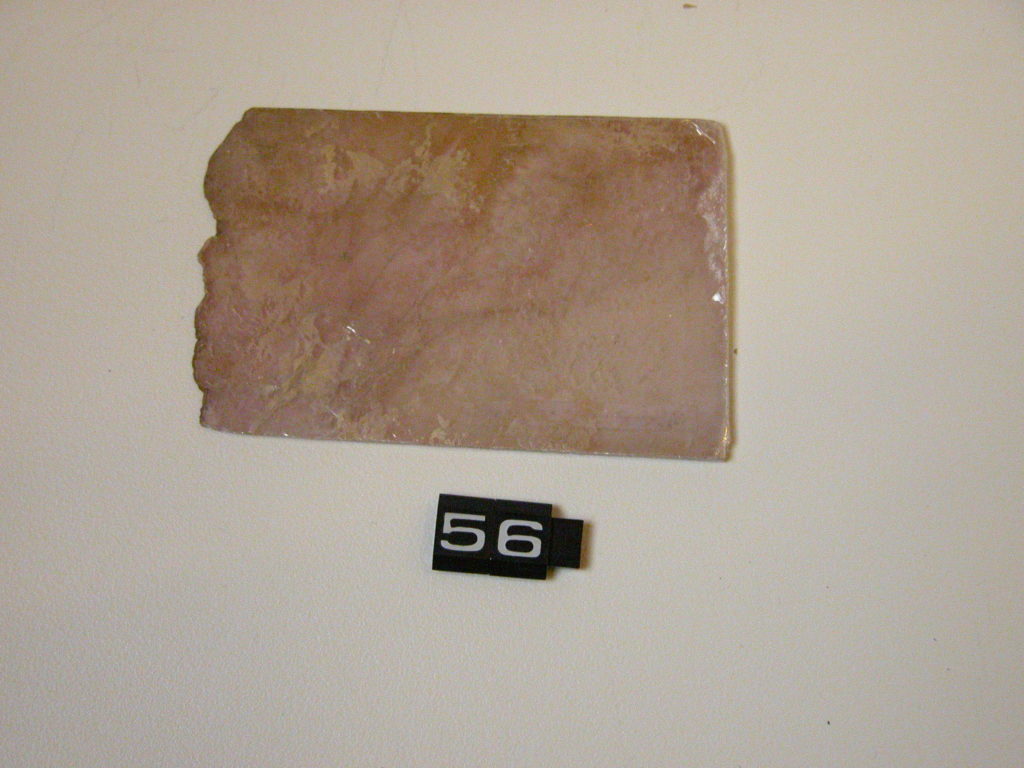
Carnival glass
Decorative coloured drinking glasses are known as Carnival Glass.
Bequeathed by Miss Frances Aitken, 1992
Reference: 1992.1.151
Can be found: Centre shelfGlass in Materials and Masters Collection
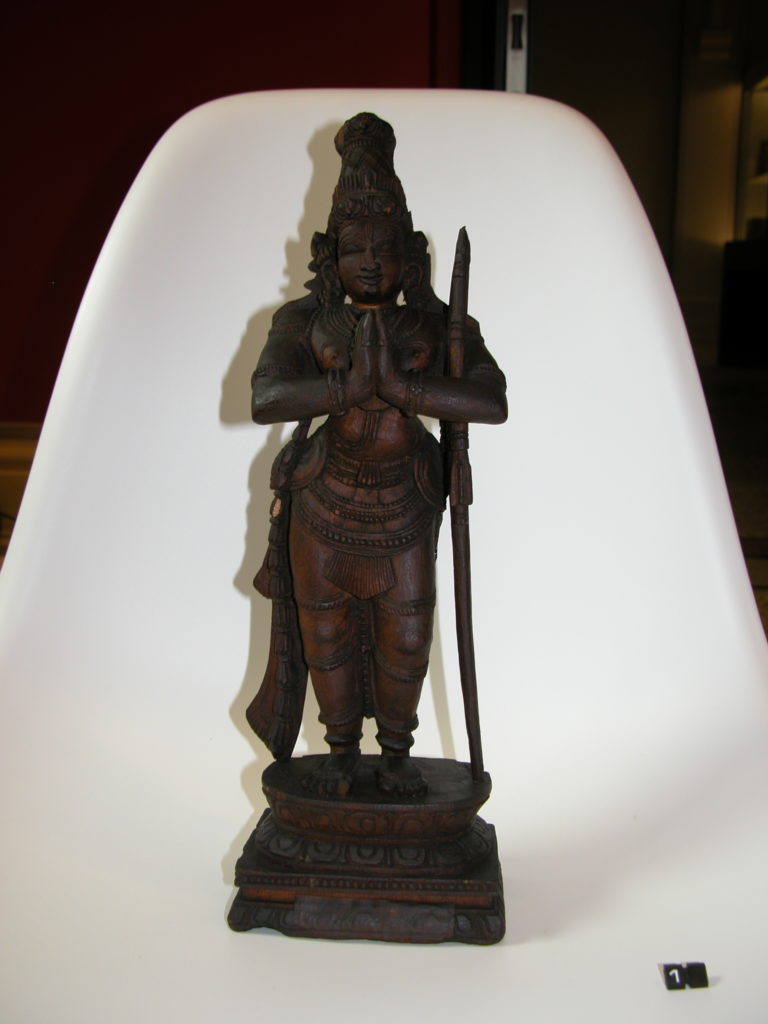
Carved figure of a standing Lord Murugan
Wood
Reference: 4435
Can be found: Vegetable in Materials and Masters Collection
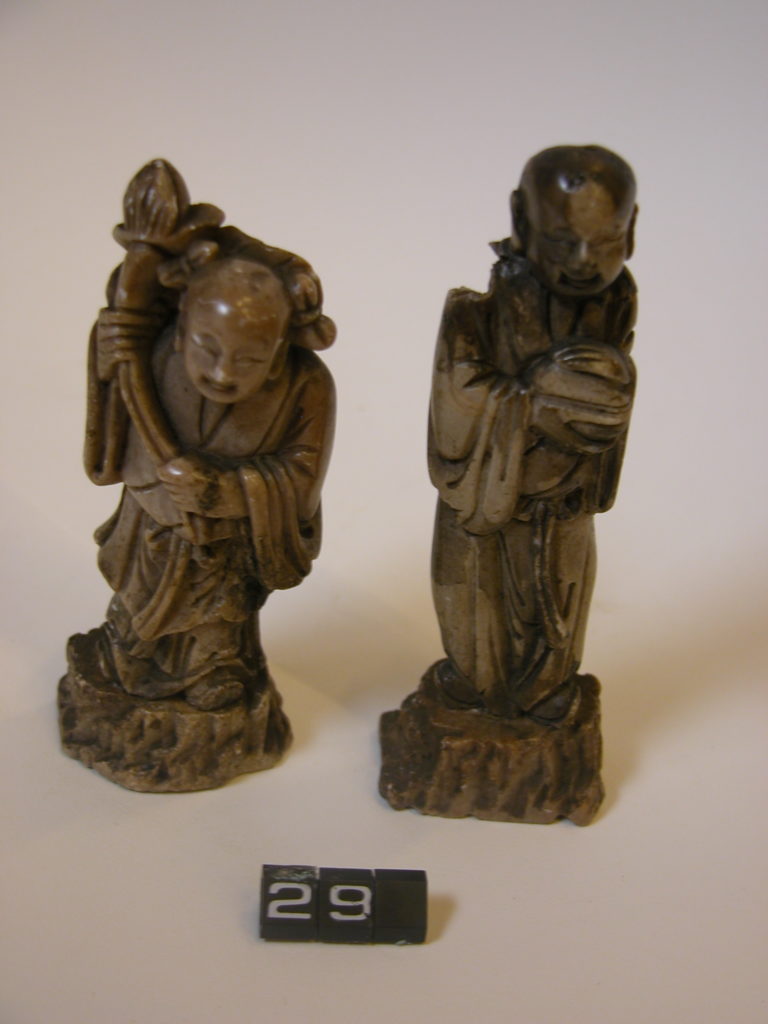
Carved stone figures
Chinese and Japanese craftsmen were renowned for making small sculptures from hard, translucent rocks.
Reference: 1753, 1754
Can be found: Stone in Materials and Masters Collection
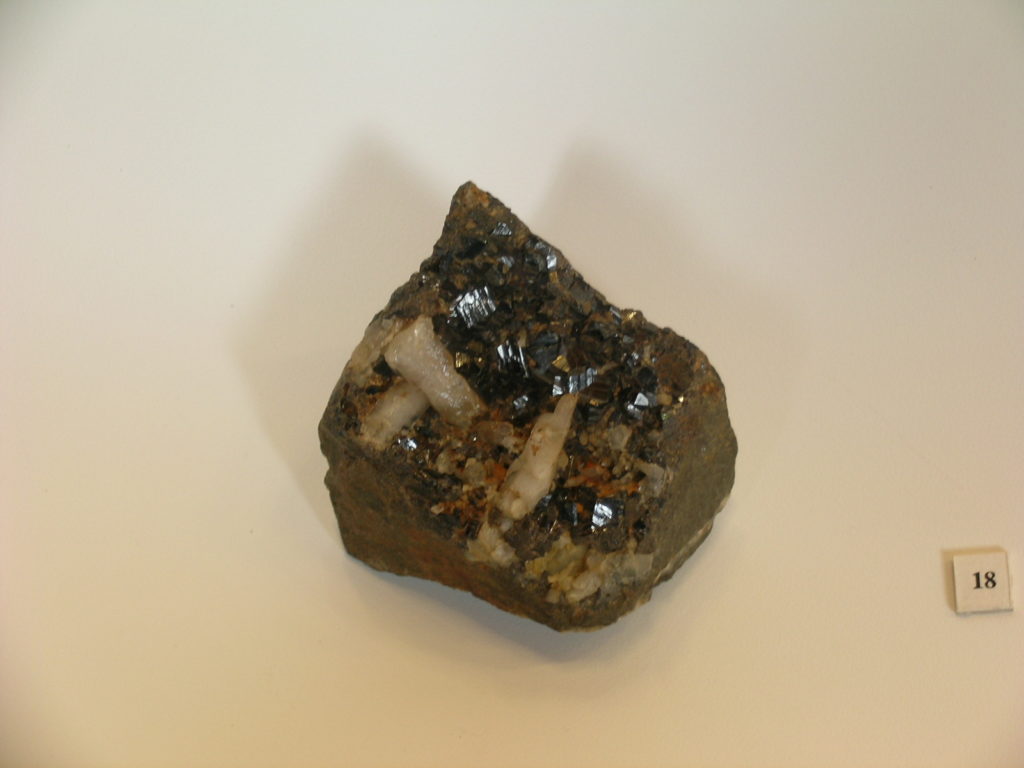
Cassiterite – tin oxide
Black and white crystal form on rock.
Reference: 2002.132
Can be found: Metal in Materials and Masters Collection
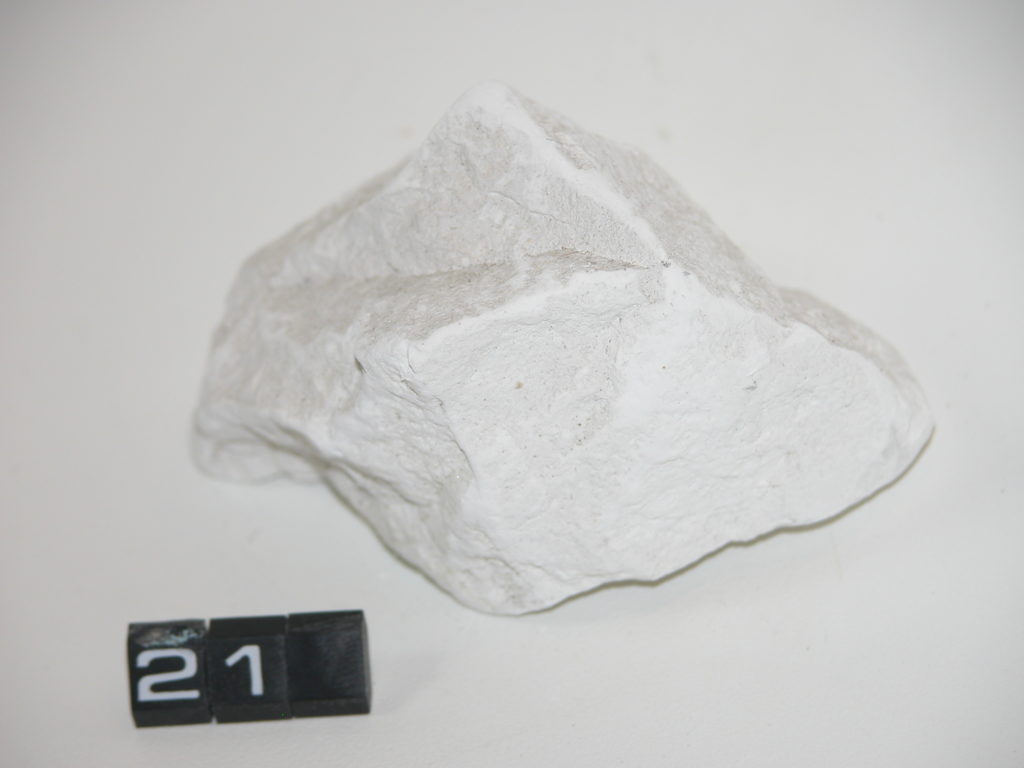
Chalk and flint
A soft, crumbly sedimentary rock made from tiny shells of microscopic organisms deposited in the sea. Nodules of flint are found in chalk.
Reference: CANCM:nn
Can be found: Stone in Materials and Masters Collection
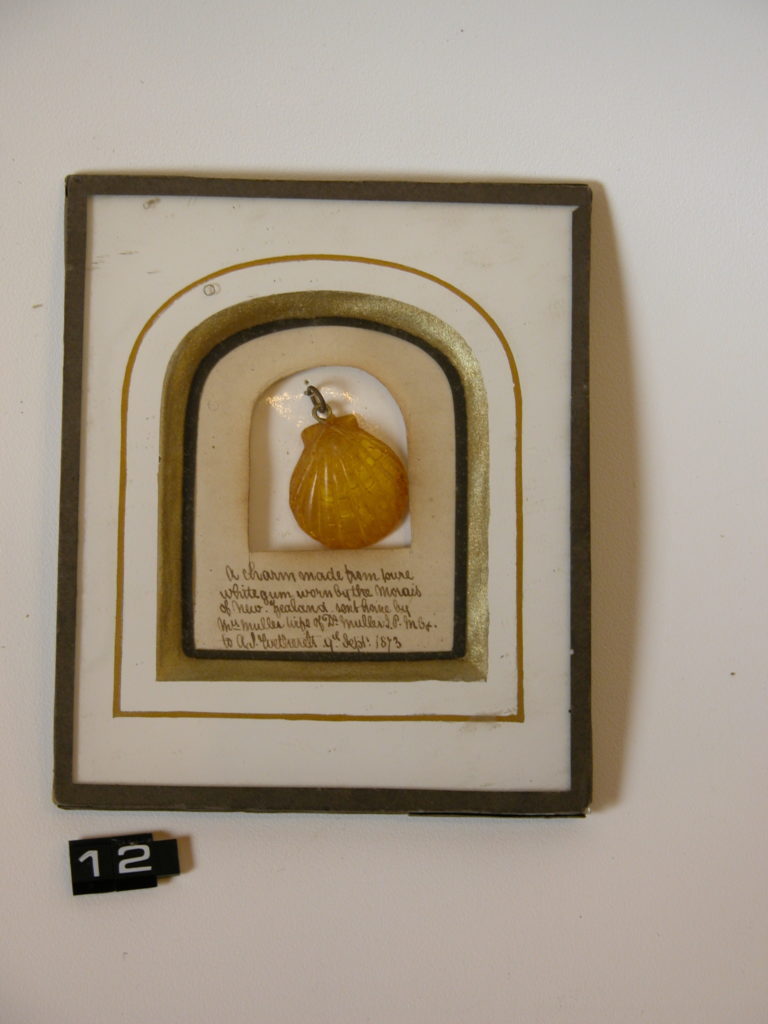
Charm in shape of a scallop shell about 1873, Maori, New Zealand
White gum (tree resin)
Presented by Mr Alexander Wetherelt, by 1884
Reference: 2000.255.19
Can be found: Vegetable in Materials and Masters Collection

Chinese-style cup and saucer 18th century, Venice
Bequeathed by John Irving, 1915
Reference: 5510, 5511
Can be found: Centre shelfEarth in Materials and Masters Collection
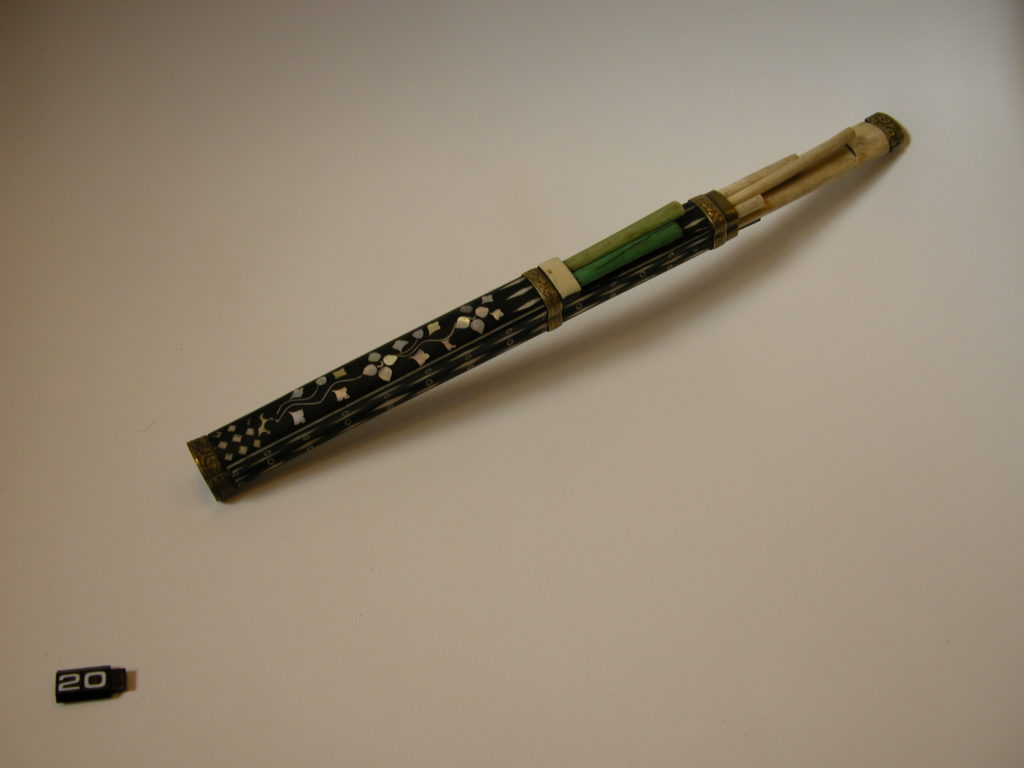
Chopsticks in a case
Bone or ivory sticks, case inlaid with mother-of pearl
Reference: 4616
Can be found: Animal in Materials and Masters Collection

Clay pipes and stump to press down tobacco
17th century
Reference: 2003.575
Can be found: Centre shelfEarth in Materials and Masters Collection

Cochiti Pueblo figure
Late 19th century
Earthenware
Typical of pottery made by the Cochiti Pueblo people in New Mexico, USA, in the second half of the 19th century and possibly by the famous Cochita potter Seferina Sevenna. The figures produced were...
Typical of pottery made by the Cochiti Pueblo people in New Mexico, USA, in the second half of the 19th century and possibly by the famous Cochita potter Seferina Sevenna. The figures produced were often humorous and wear waistcoats, standing with hands on hips, head up and mouth open. Animal-shaped pots were also popular Cochiti productions and several examples are displayed in the Cabinet of Curiosities, in The Study.
Audio description and insights Reference: CANCM:nn
Can be found: EarthTop shelf in Materials and Masters Collection
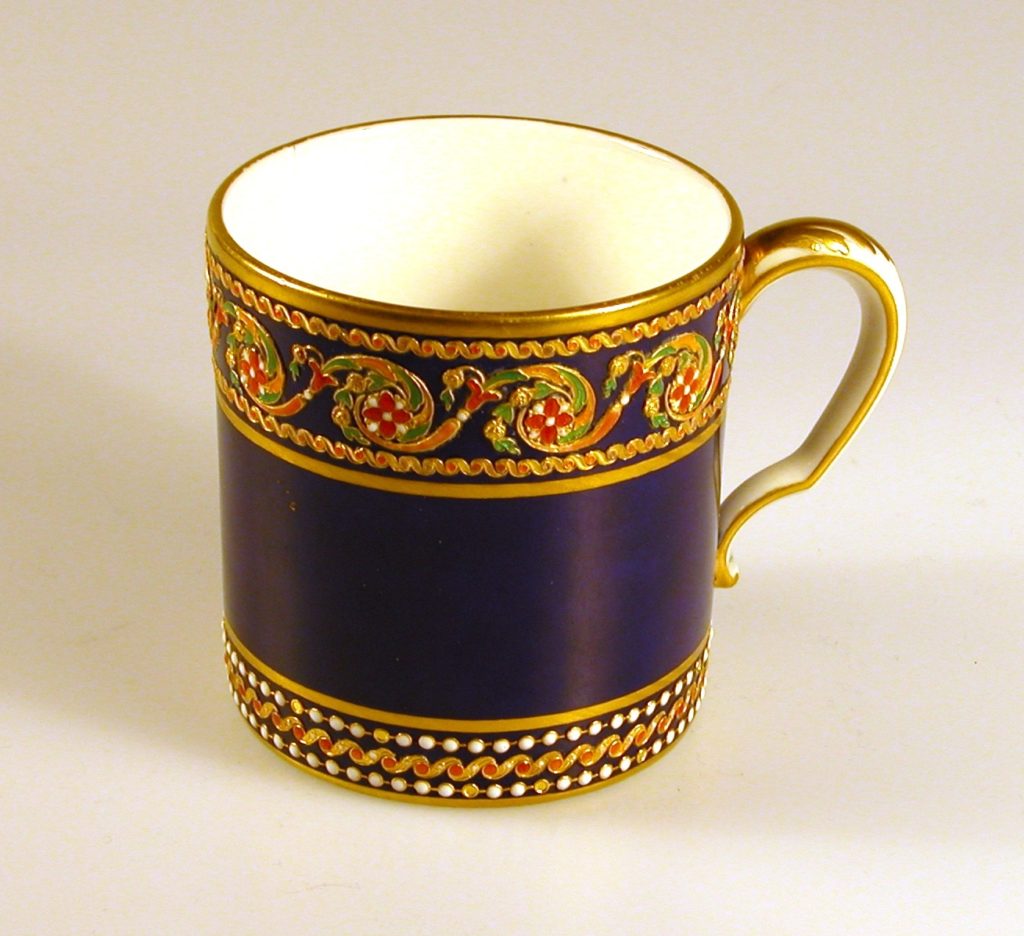
Coffee cup and saucer
1785
Porcelain
Sevres, probably made by Vincent and Chauvant
Dark blue glaze known as ‘gros bleu’.
Bequeathed by John Irving, 1915
Reference: 5471-2
Can be found: Centre shelfColour and Pattern in Materials and Masters Collection
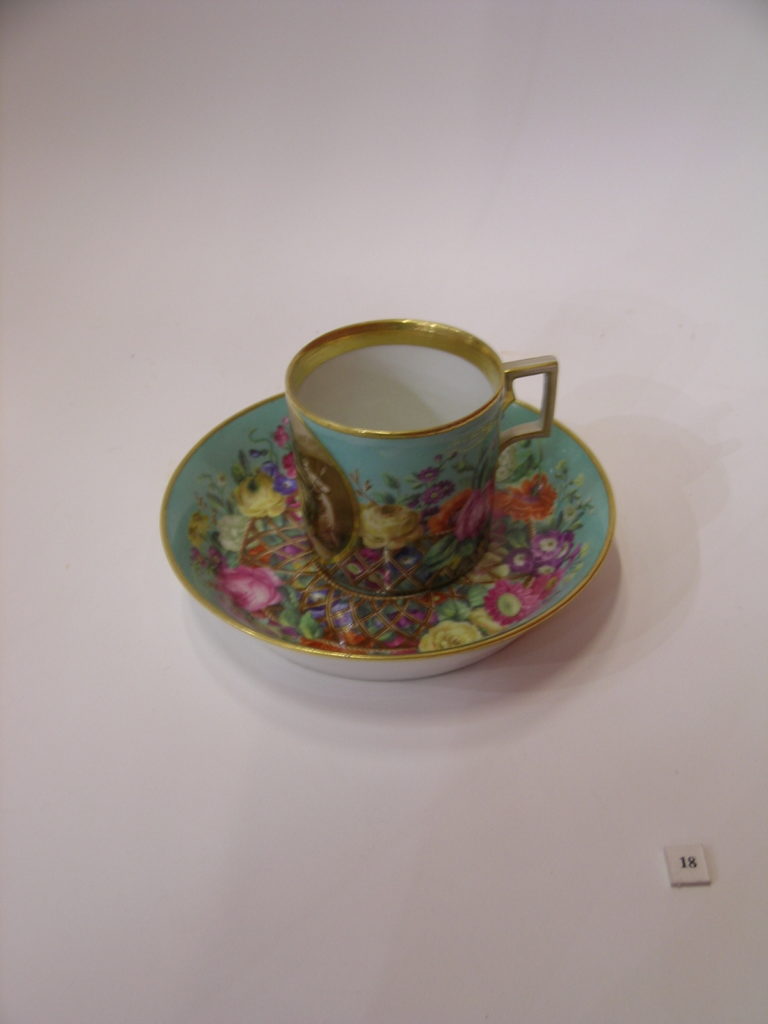
Coffee cup and saucer
18th century, Vienna
Porcelain
Bequeathed by John Irving, 1915
Reference: 5519, 5520
Can be found: Centre shelfEarth in Materials and Masters Collection
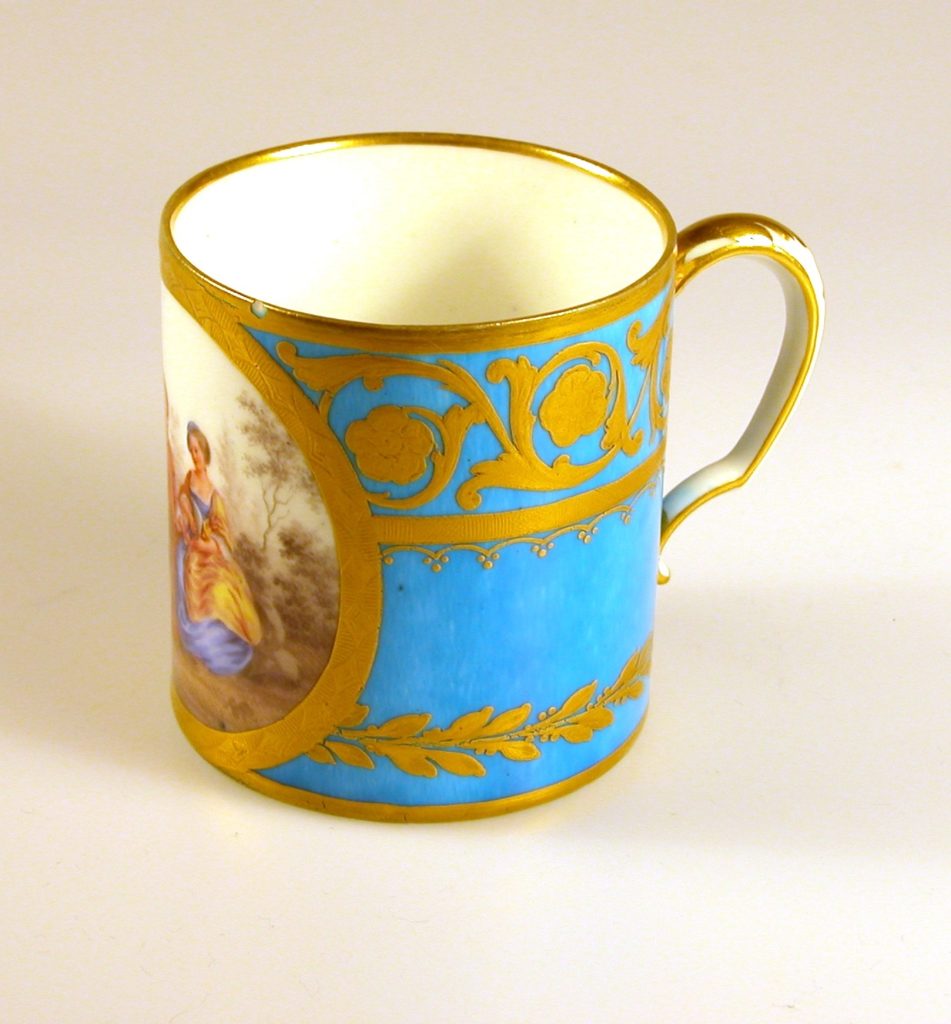
Coffee cup and saucer with turquoise ground 18th century, Sevres, Paris
18th Century
Porcelain
This colour of turquoise blue has been called ‘Sevres blue’ after the porcelain factory that created many pieces in this colour.
Bequeathed by John Irving, 1915
Reference: 5497-8
Can be found: Centre shelfColour and Pattern in Materials and Masters Collection

Coffee cup and saucer with gilded rim
18th century, Vienna, Austria
Fine porcelain with painted decoration of a cherub and swans, and rich gilding added after firing.
Bequeathed by John Irving, 1915
Reference: 5517, 5518
Can be found: Metal in Materials and Masters Collection

Coins
A principal use for metal since ancient times has been for minting money.
Presented by Mr Alexander Wetherelt, by 1884
Reference: CANCM:nn
Can be found: Metal in Materials and Masters Collection

Commemorative medal
Oscar Roty, 1872, France
Silver
This medal shows the fine detail of decoration that can be reproduced in metal. It was presented in 1872 to the Mayor and citizens of Canterbury by the French Association for the Advancement of Science, to commemorate their visit to the city. The obverse (front) has two figures in classical drapery, standing on a hillside overlooking factories, ships and trains all belching steam, with sunrise over a distant mountain signifying a new dawn. Lettering above them says ‘Pour la science, Pour la patrie’, which means ‘for Science and Country’. The reverse has a personification of the city of Canterbury as a classically draped female figure, sitting and reading a book with further books and mathematical instruments beside her, all set within an idyllic wooded landscape.
Reference: 1491
Can be found: Metal in Materials and Masters Collection
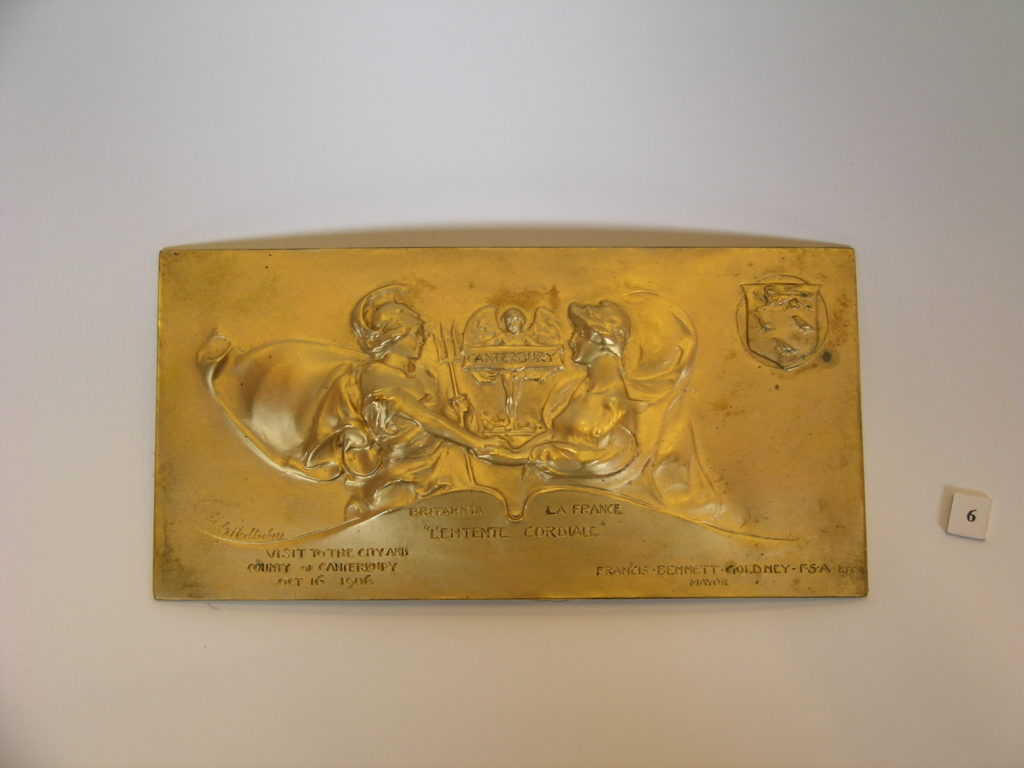
Commemorative plaque
1906, Elkington of Birmingham
Gilded bronze
This plaque commemorates a French visit to city of Canterbury on 16 October 1906 and was probably commissioned by the Mayor, Francis Bennett Goldney, whose name is inscribed on the bottom right. It shows the personifications of Britannia and France facing one another and shaking hands, with a winged cherub between them holding a scroll saying ‘Canterbury’. Below them is inscribed ‘L’Entente Cordiale’. The arms of the city of Canterbury are included on the top right. One or more copies of the plaque would have been given to the French party as souvenirs.
Reference: 5756
Can be found: Metal in Materials and Masters Collection
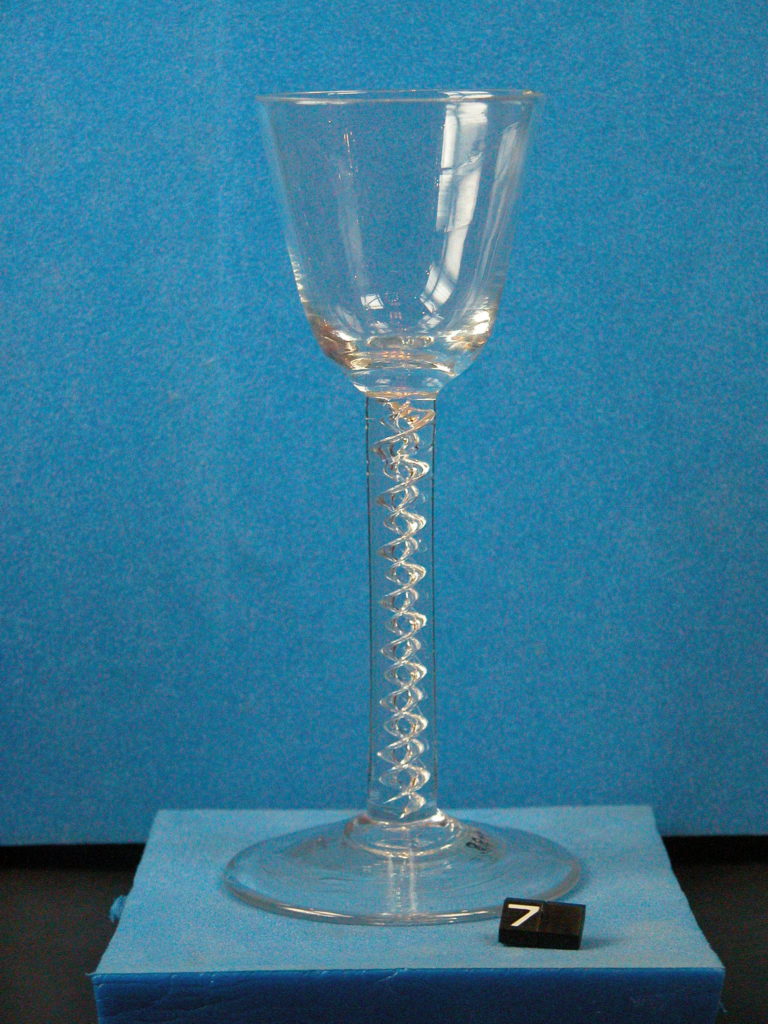
Cordial glass
18th century
With plain bowl and air twist stem.
Bequeathed by John Irving, 1915
Reference: 8644
Can be found: Centre shelfGlass in Materials and Masters Collection
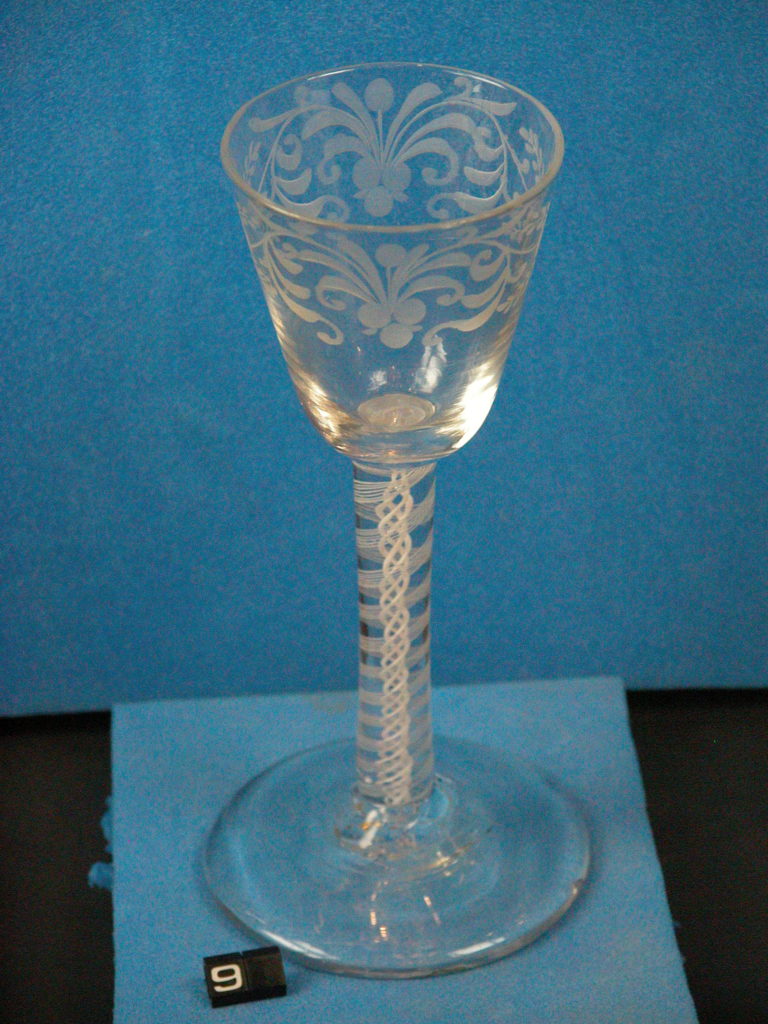
Cordial glass
18th century
With engraved decoration and opaque twist stem.
Bequeathed by John Irving, 1915
Reference: 5576
Can be found: Centre shelfGlass in Materials and Masters Collection
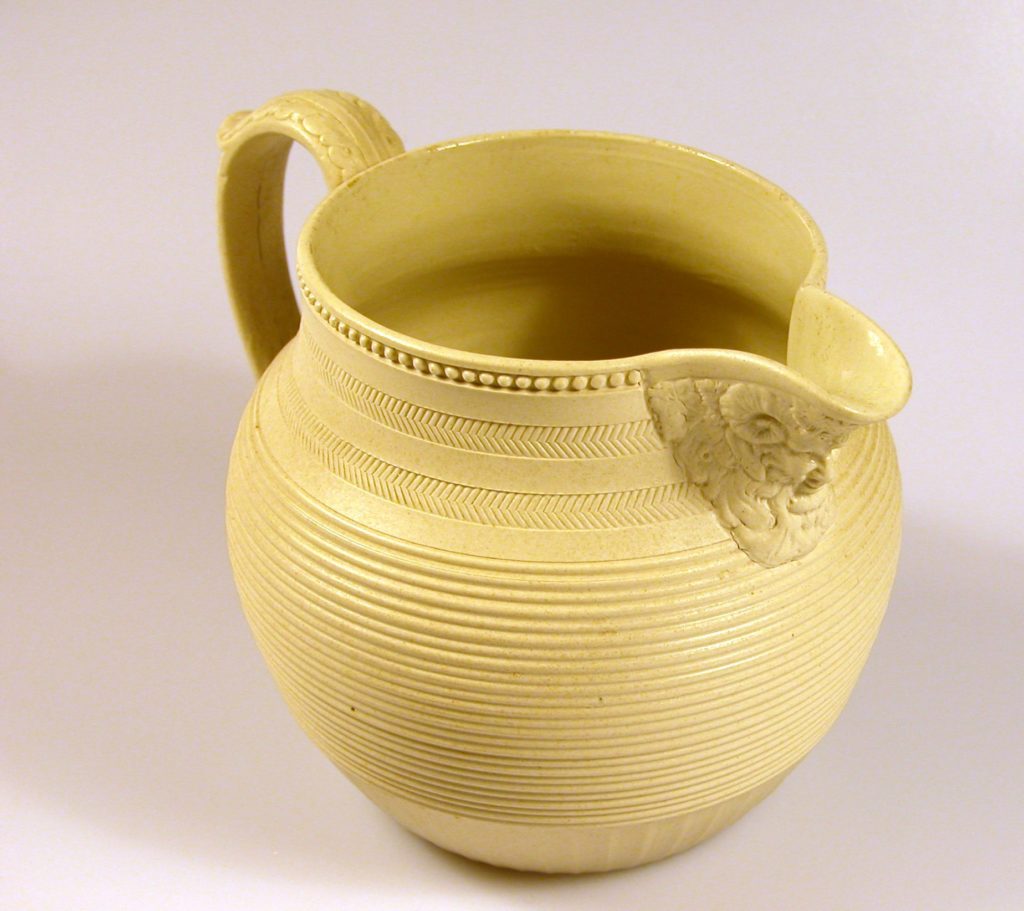
Cream-coloured jug
About 1820
Stoneware
Reference: 10350.2
Can be found: Colour and PatternTop shelf in Materials and Masters Collection
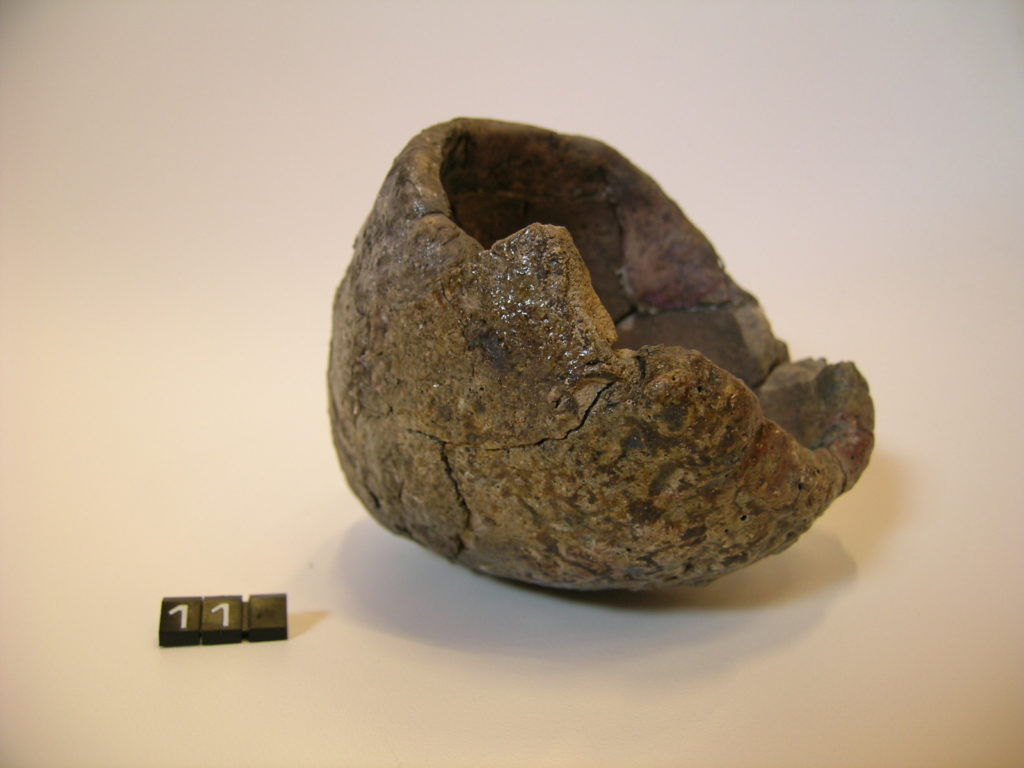
Crucible
Metal was smelted (melted) in ceramic containers like this, known as crucibles. The ceramics could withstand higher heat than metal, so the metal they contained melted long before the crucible burned.
Reference: MIII 80 421
Can be found: Metal in Materials and Masters Collection
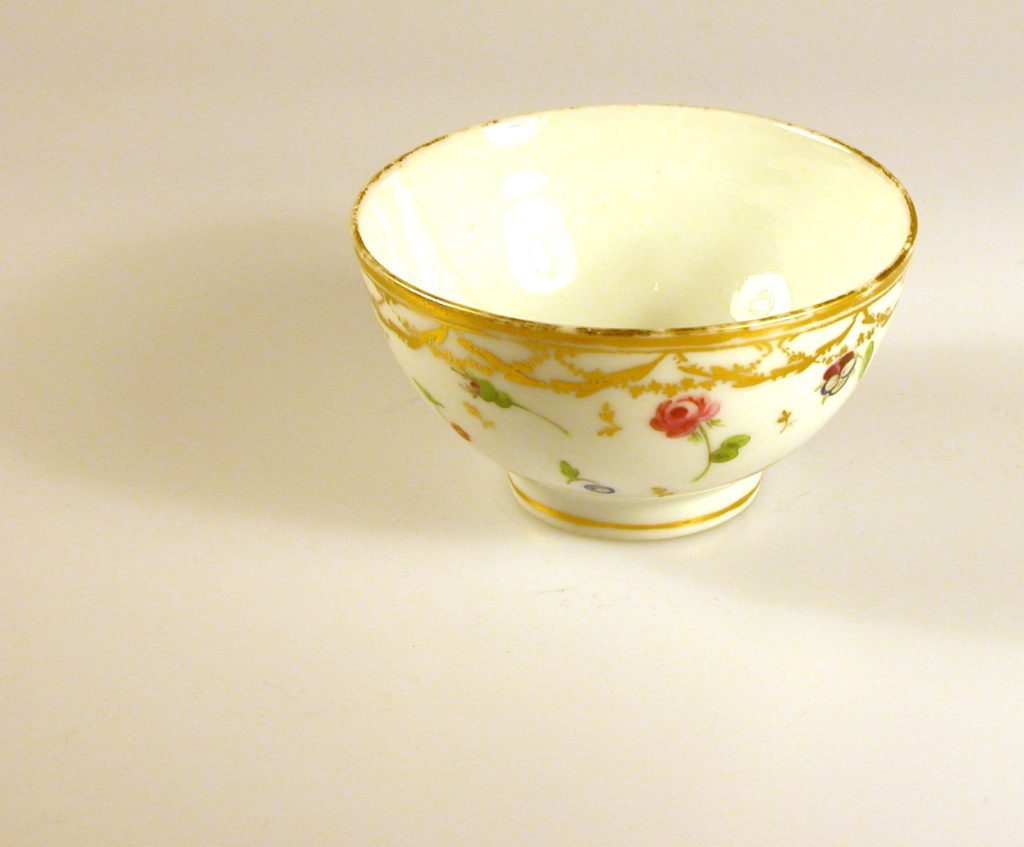
Cup and saucer
Early 19th century, Nyon, Switzerland
Bequeathed by John Irving, 1915
Reference: 5457-8
Can be found: Centre shelfEarth in Materials and Masters Collection

Cup and saucer in oriental style 18th century, Chantilly, France
18th Century
Porcelain
Bequeathed by John Irving, 1915
Reference: 5385, 5388
Can be found: Colour and PatternLower shelf in Materials and Masters Collection
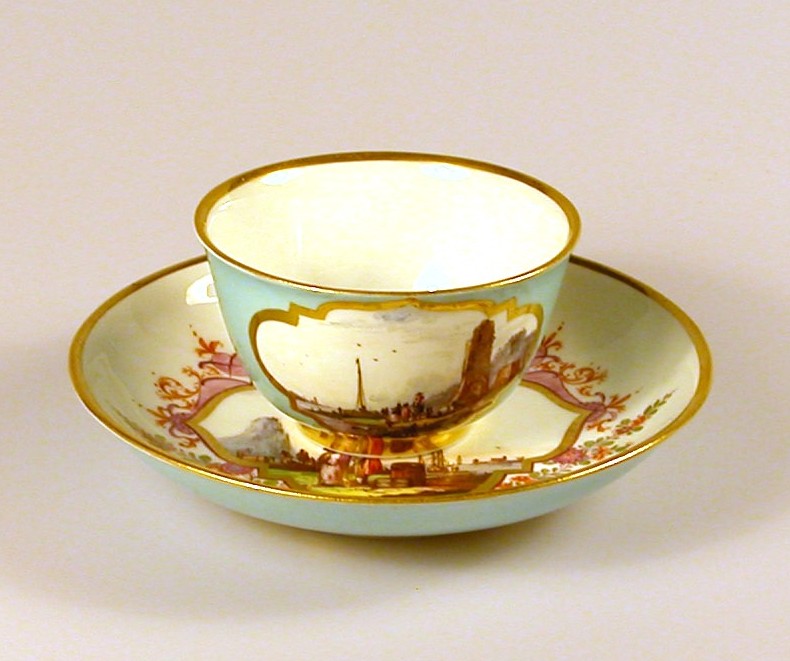
Cup and saucer with celadon green ground
Early 18th century, Meissen
Bequeathed by John Irving, 1915
Reference: 5398-9
Can be found: Colour and PatternLower shelf in Materials and Masters Collection
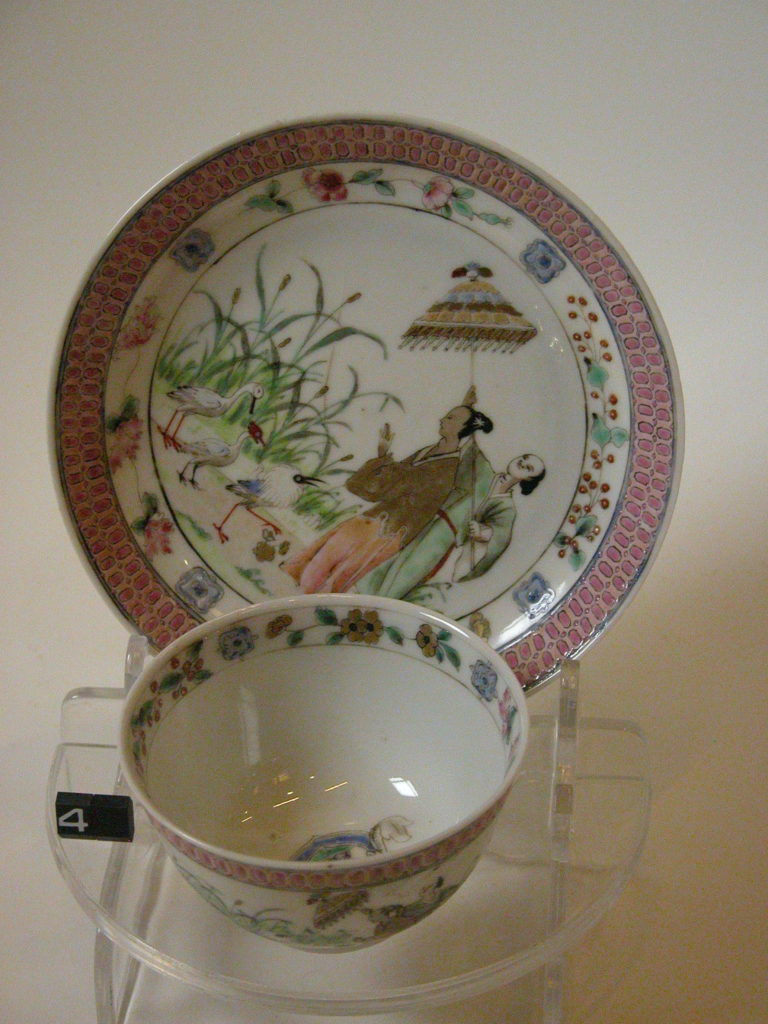
Cup and saucer with figures and birds
1735-95, China, Kien Lung
Porcelain
Bequeathed by John Irving, 1915
Reference: 5557-8
Can be found: Colour and PatternLower shelf in Materials and Masters Collection

Cup and saucer with green-glazed ground
1761, Sevres, Paris
Porcelain
Made by Castell and H. Prevost
Bequeathed by John Irving, 1915
Reference: 5481-2
Can be found: BaseColour and Pattern in Materials and Masters Collection
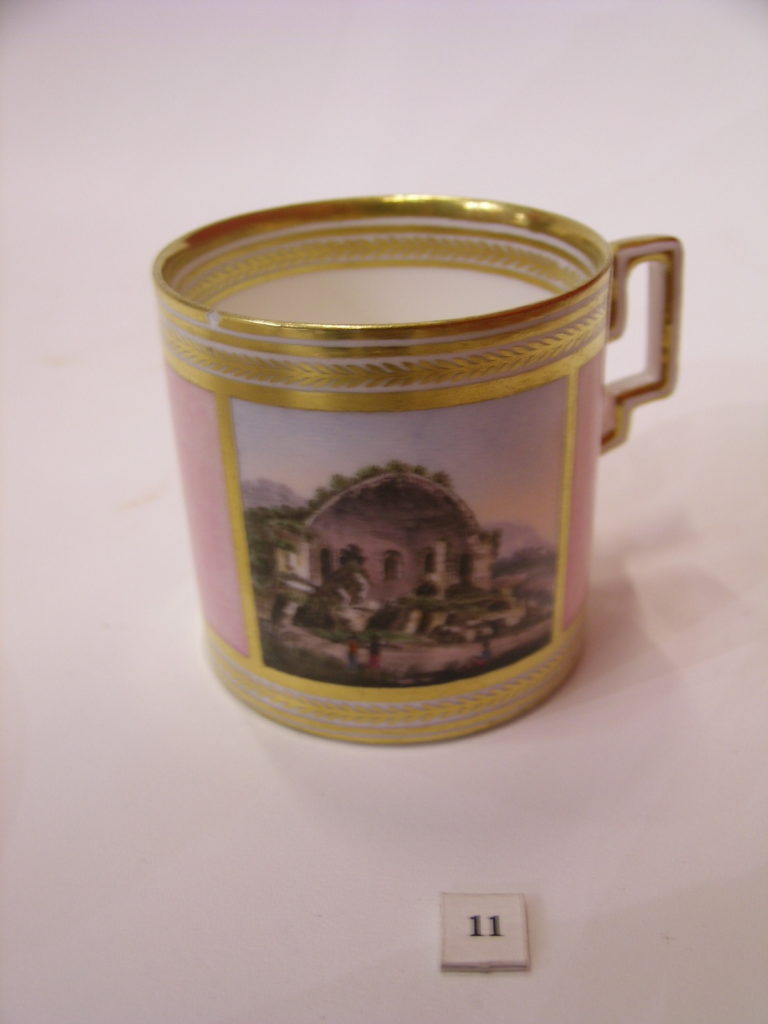
Cup and saucer with Italian views 18th century, Naples
Porcelain
Bequeathed by John Irving, 1915
Reference: 5451-2
Can be found: Centre shelfEarth in Materials and Masters Collection
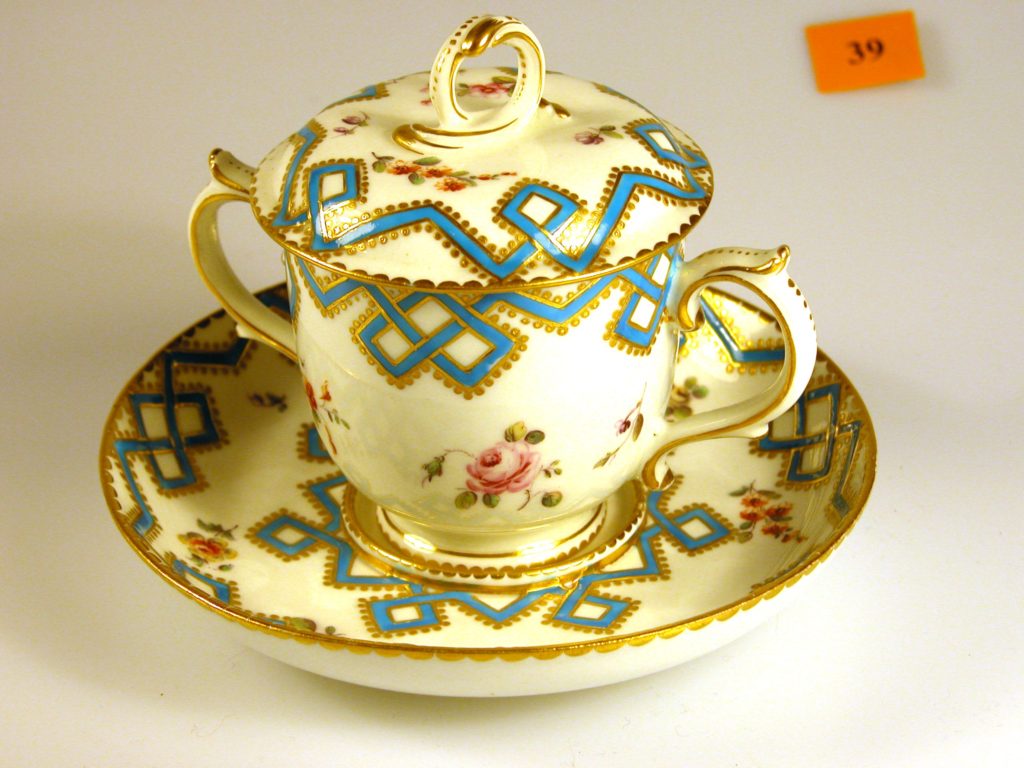
Cup, saucer and cover with turquoise riband
18th century, Derby
Bequeathed by John Irving, 1915
Reference: 5283
Can be found: BaseEarth in Materials and Masters Collection
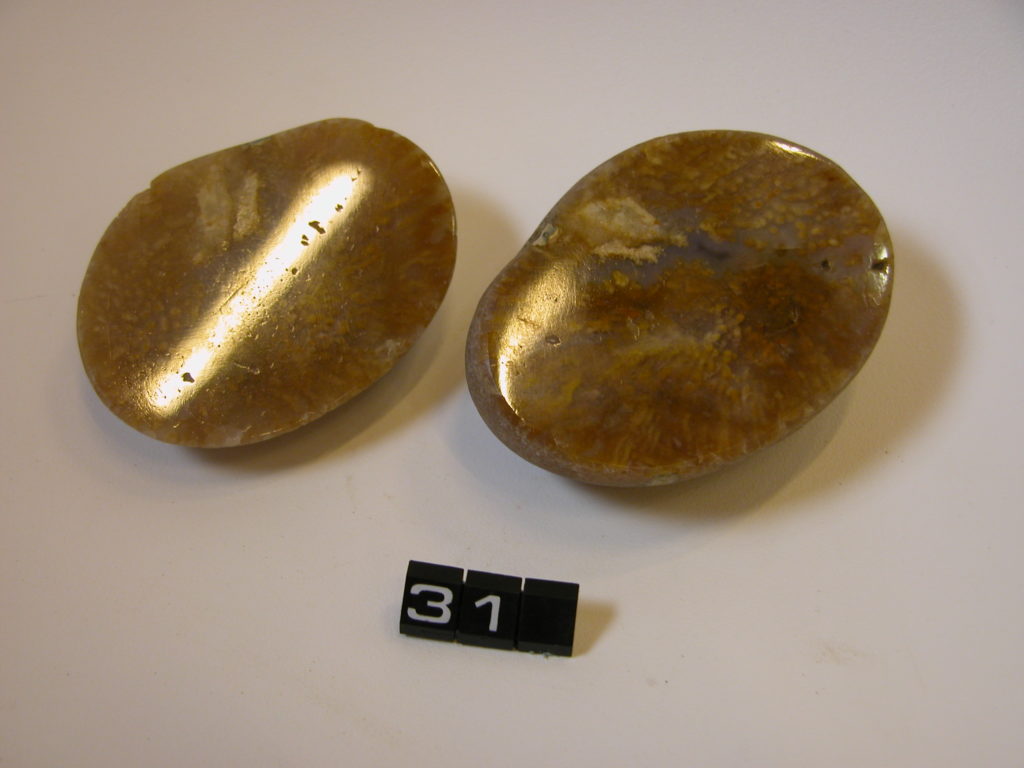
Cut and polished flint pebble
Shows a fossilised sponge inside – a sponge once a living organism that has had its cells replaced by Silica in formation of a flint nodule, later worn to a pebble.
Presented by Colonel C J Cox, 1889
Reference: 2008.359
Can be found: Stone in Materials and Masters Collection
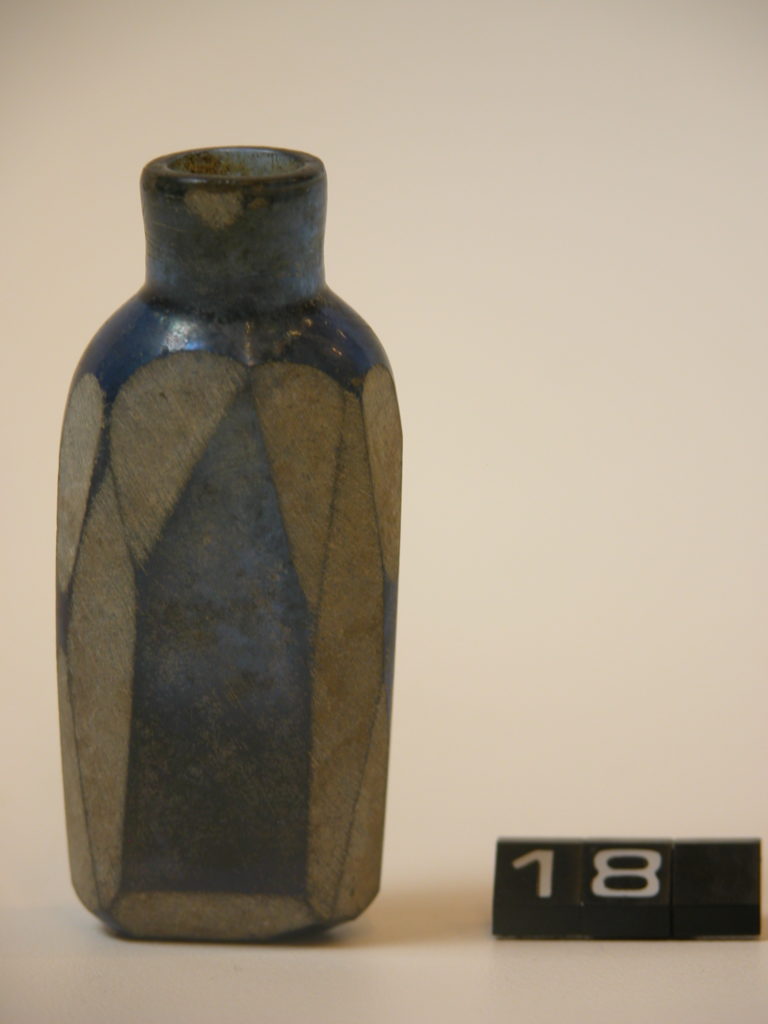
Dark blue bottle with ground bevelled edges
Presented by John Brent
Reference: 2458
Can be found: BaseGlass in Materials and Masters Collection

Decorated tiles made at Tyler Hill, Canterbury
Medieval
Glazed earthenware
Tiles like these were made by pressing clay into a mould and filling the pattern indented in the clay with slip (slightly diluted clay) of another colour, before glazing and firing. They were expensive and used in cathedrals, abbeys, churches and royal palaces. Many depict flowers or mythical beasts such as dragons. They can be joined in various ways for extended and repeat patterns.
Reference: 8743 and (nn)
Can be found: BaseEarth in Materials and Masters Collection

Delft ware dish
Reference: 128
Can be found: BaseColour and Pattern in Materials and Masters Collection

Dessert plate with marble pattern and gilding in oriental style
19th century, Spode
Bequeathed by John Irving, 1915
Reference: 5304
Can be found: BaseColour and Pattern in Materials and Masters Collection

Dish from one piece of mother-of pearl
Bequeathed by Miss Frances Aitken, 1992
Reference: 1992.1.240
Can be found: Animal in Materials and Masters Collection
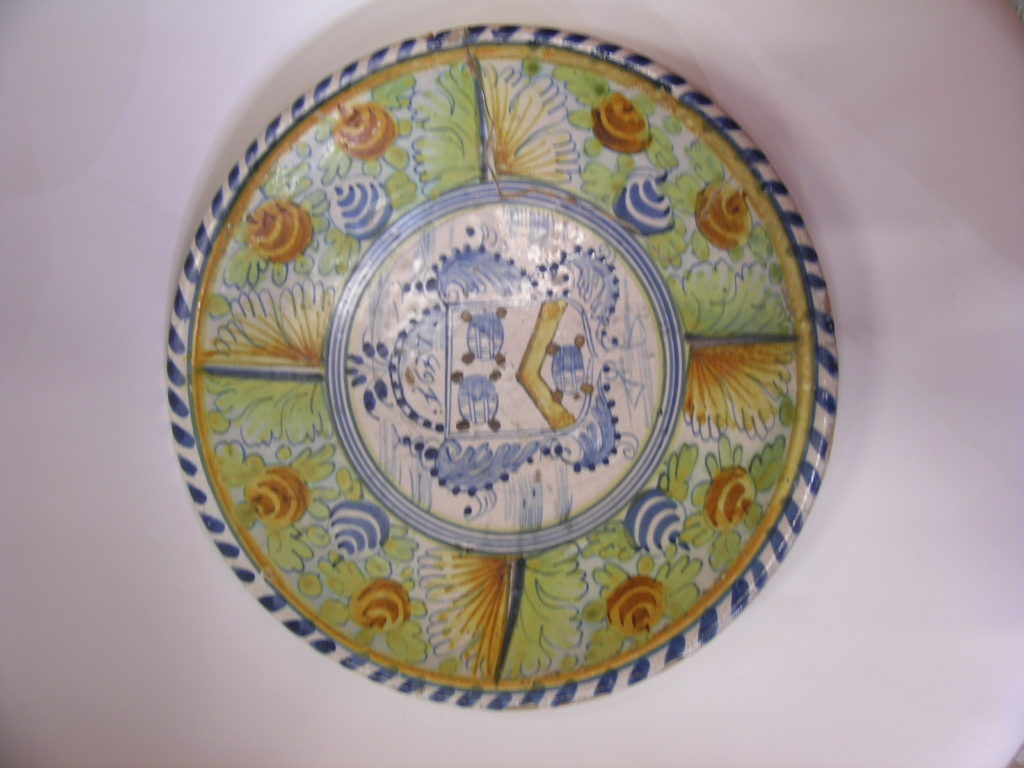
Dish with coat of arms 1637, Delft, Netherlands
Tin-glazed earthenware
Reference: 20
Can be found: EarthTop shelf in Materials and Masters Collection

Dish with portrait of Charles II 1661 (inscribed 1616 in error), Delft, Netherlands
Tin-glazed earthenware
Presented by Mrs Faure
Reference: 21
Can be found: Colour and PatternTop shelf in Materials and Masters Collection


Dolls house glass and miniature perfume sample bottles
Bequeathed by Miss G H Veraguth to the daughter of Dr Wynn and presented to the Museum in memory of Miss Veraguth, 1974
Reference: 9870
Can be found: GlassLower shelf in Materials and Masters Collection


Dolls shoe
Bequeathed by Miss G H Veraguth to the daughter of Dr Wynn and presented to the Museum in memory of Miss Veraguth, 1974
Reference: 9870
Can be found: Animal in Materials and Masters Collection
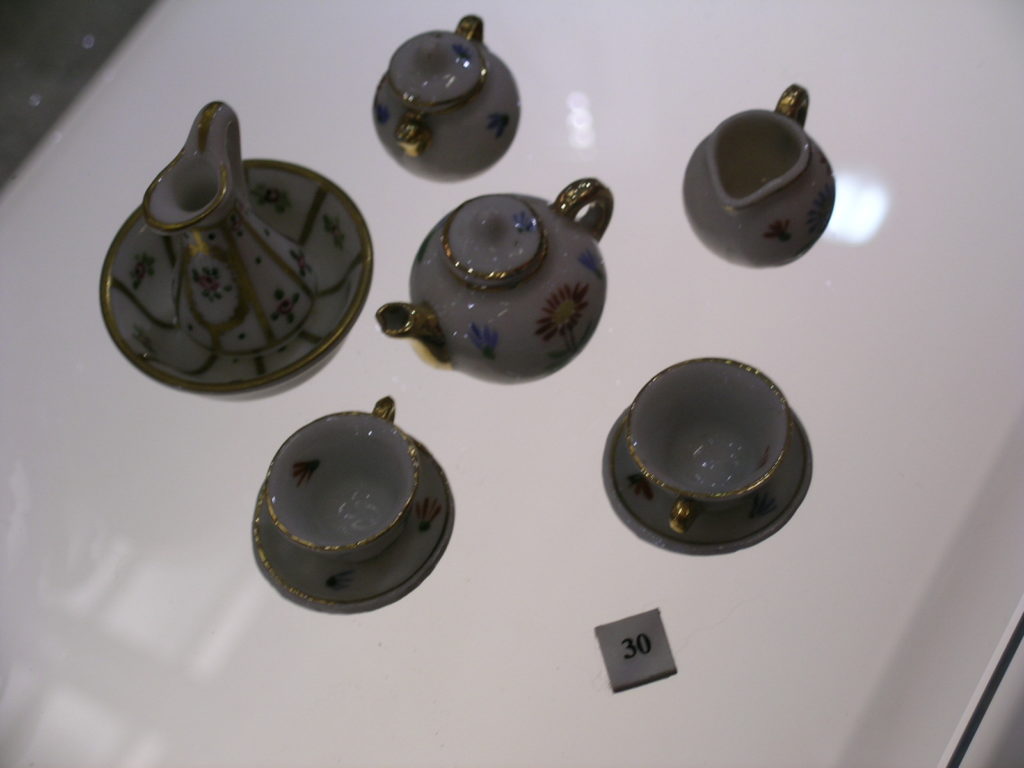

Dolls’ house tea set, washing basin and water jug
Bequeathed by Miss G. H. Veraguth to the daughter of Dr Wynn and presented to the Museum in memory of Miss Veraguth, 1974
Reference: 9870
Can be found: Centre shelfEarth in Materials and Masters Collection
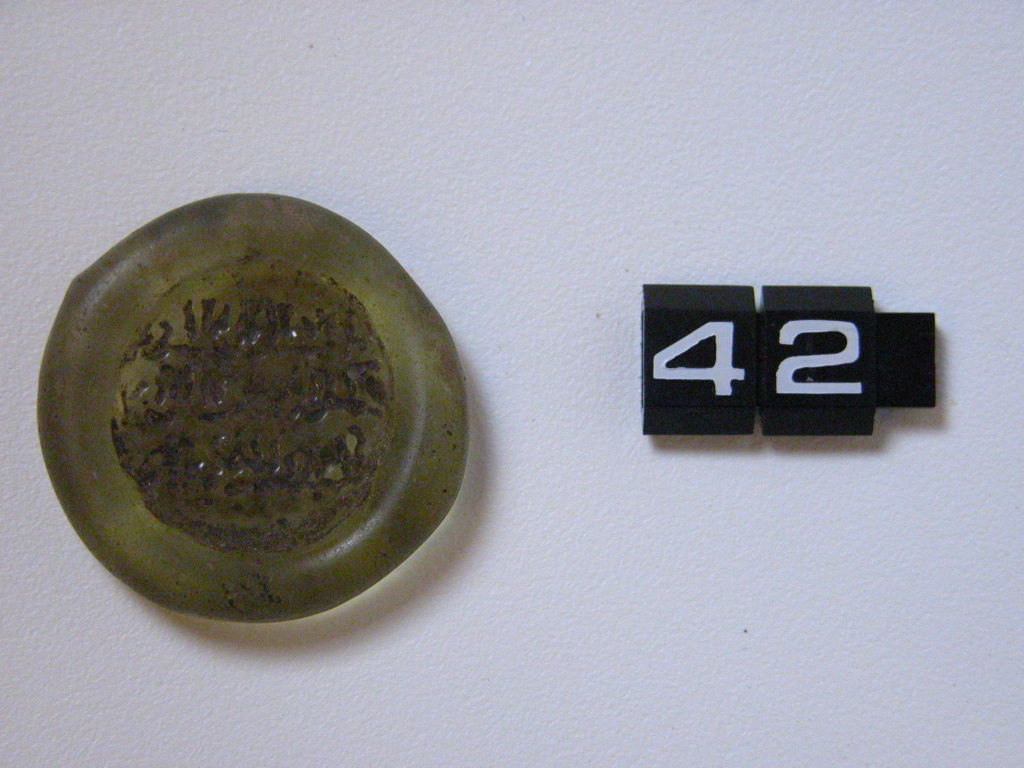

Egyptian buttons or counters and money weight
Glass buttons or counters found in Egypt. The ancient Egyptians were the first to make coloured glass objects.
Several presented by Lt Col Copeland
Reference: 2100, 2039, (nn)
Can be found: GlassLower shelf in Materials and Masters Collection
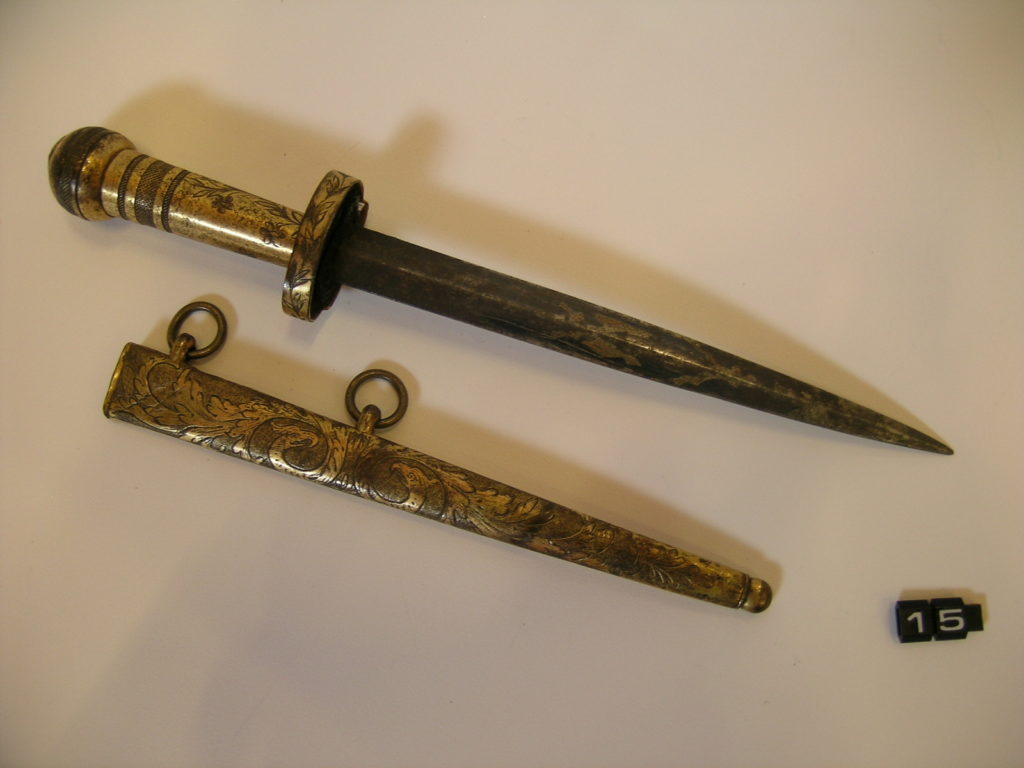

Engraved gilt dirk
Small dagger and sheath, given by Sir Sidney Smith to Lieutenant Thomas Doorne RN, according to the donor’s catalogue.
Presented by Alexander Wetherelt, by 1884
Reference: 2000.255.17
Can be found: Metal in Materials and Masters Collection


Fish knife and fork with engraved silver blades
Once the property of Lady Elizabeth Muller, according to the donor.
Presented by Mr Alexander Wetherelt, by 1884
Reference: 2000.255.16
Can be found: Metal in Materials and Masters Collection
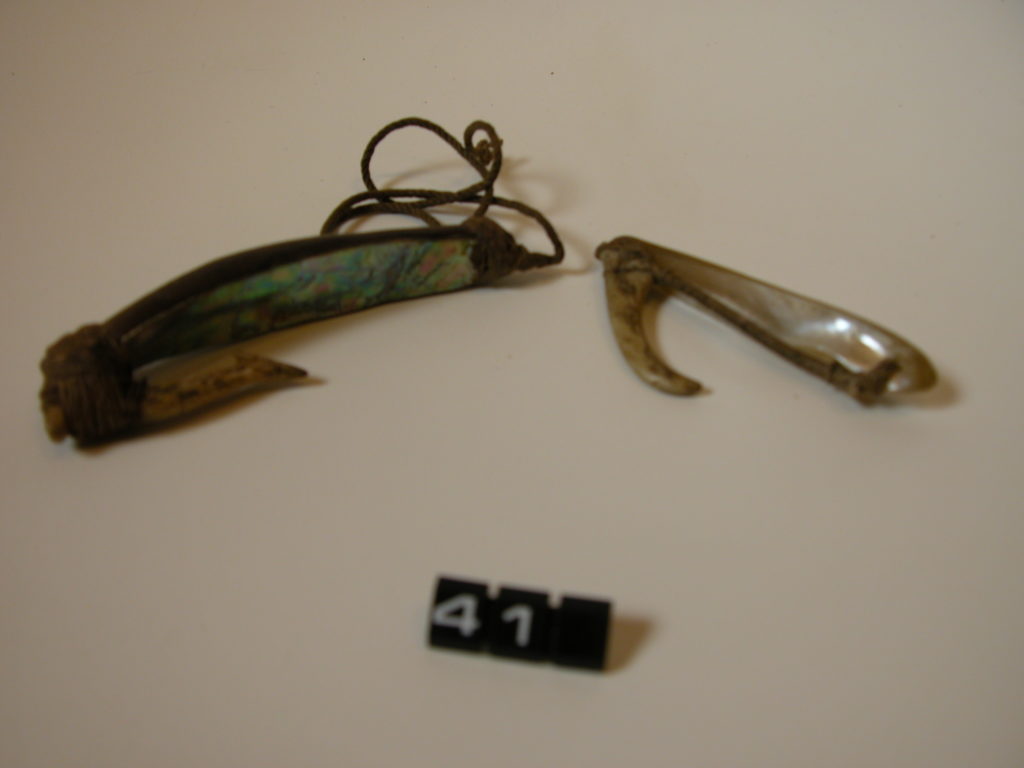

Fish lures or hooks
Pacific islands including Hawaii
Abalone shell, bone
Reference: 4463, 1969.8
Can be found: Animal in Materials and Masters Collection


Flint axe
A polished example from Shorncliffe, Folkestone. See 1.
Reference: 7797
Can be found: Stone in Materials and Masters Collection
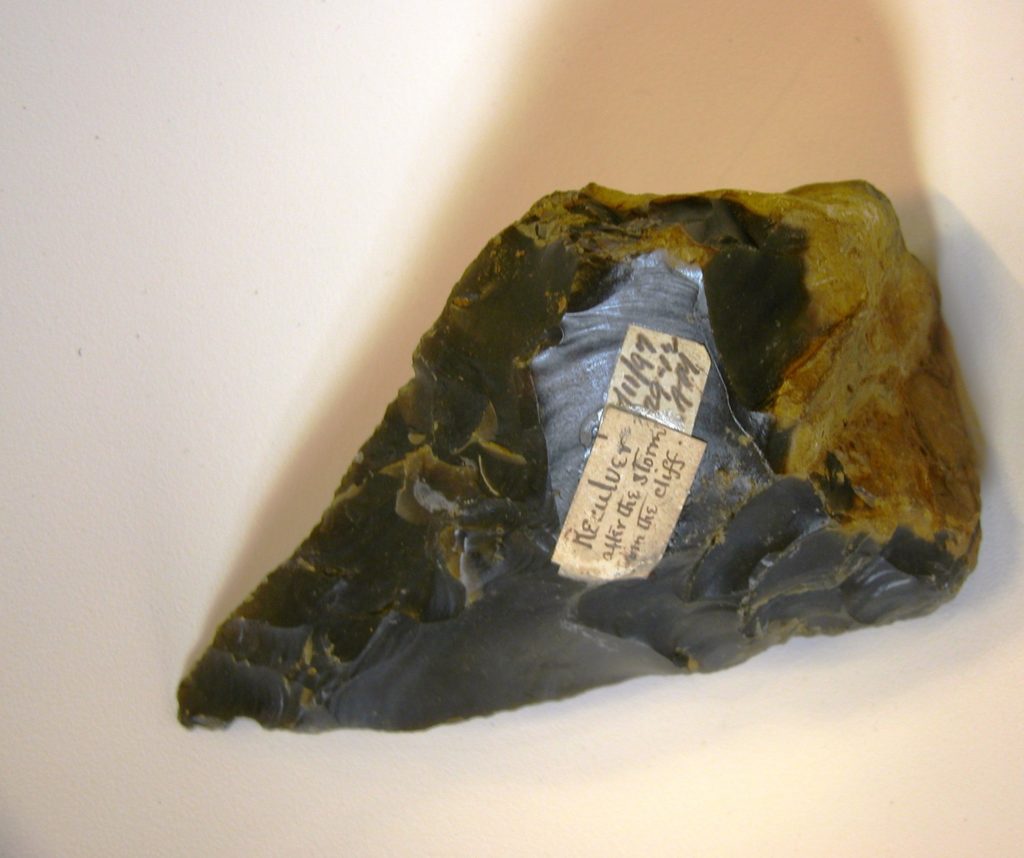

Flint axes
Flint is a Silicate mineral. It is very hard but when chipped has glassy, sharp edges. Hand-axes, hammer stones and blades like those on display in this case were made by Prehistoric hunters, who lived in Britain from about 600,000 to 5,000 years ago. Selecting the best flint and knapping it (hitting one rock against another to chip bits off), to make a range of tools for specific jobs, required very great skill. This ovate axe and pointed axe were both found at Reculver, near Herne Bay in the Canterbury district.
Reference: 9193, 259
Can be found: Stone in Materials and Masters Collection
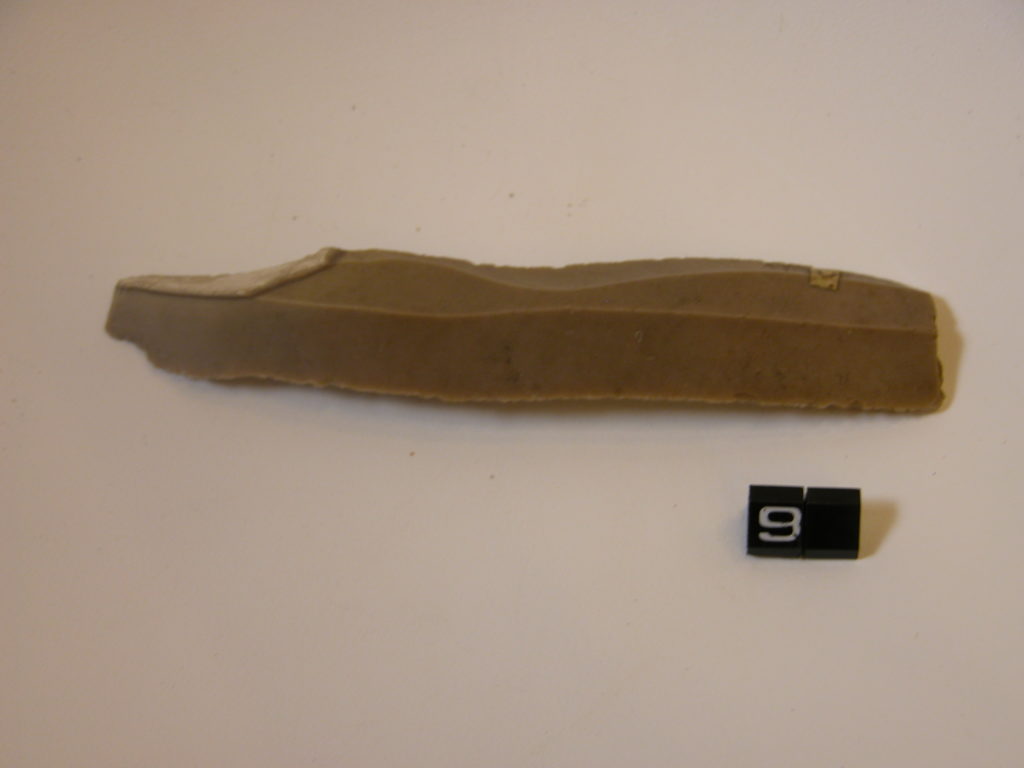





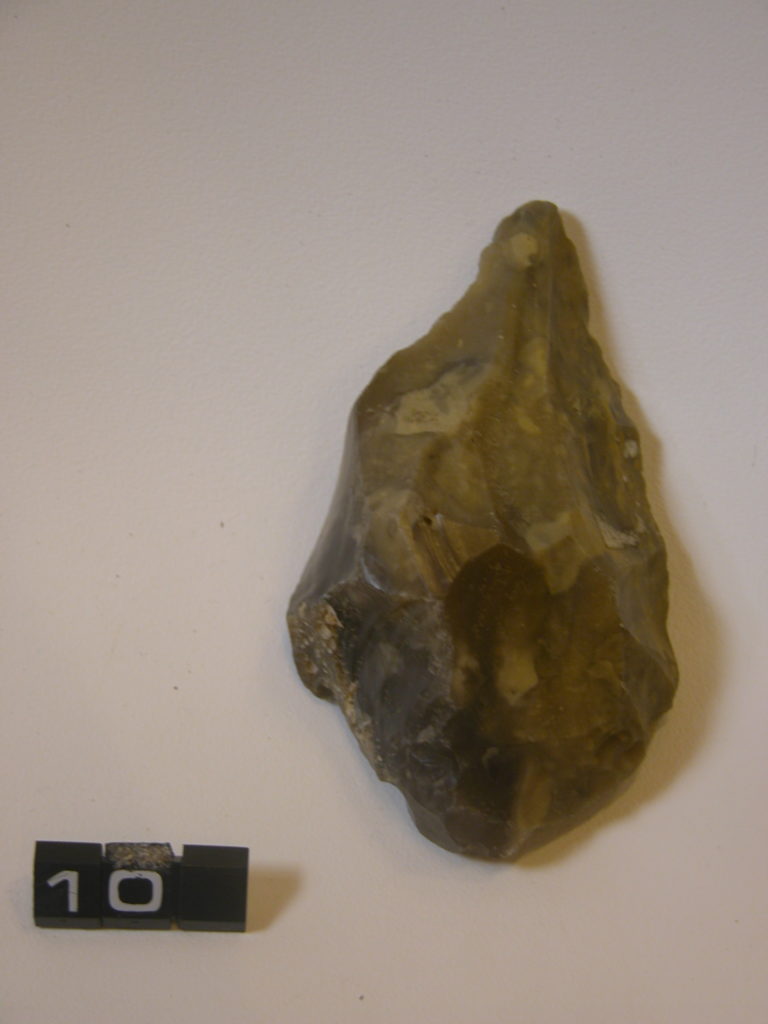

Flint tools
See 1. Quartz crystals can be seen in the flint.
Reference: 428, 429
Can be found: Stone in Materials and Masters Collection


Flue tile from Fordwich with combed pattern
Roman
Presented by Mrs Harrison
Reference: 9757
Can be found: Centre shelfEarth in Materials and Masters Collection


Flute with carved decoration British Guyana
Bamboo
Reference: 4628
Can be found: Vegetable in Materials and Masters Collection


Fossilised wood
Part of a tree that has had its cells replaced by minerals over millions of years and has become a stone.
Reference: CANCM:nn
Can be found: Stone in Materials and Masters Collection
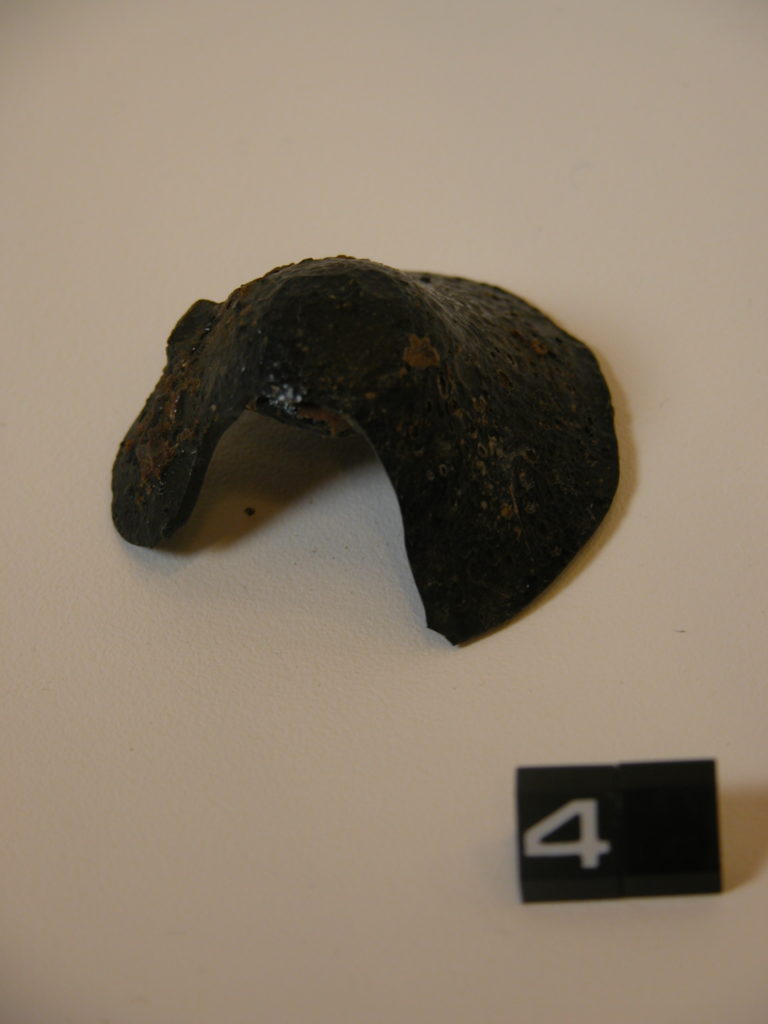

Fragment of a thin-walled black glass vessel, probably a bowl
Reference: 2480
Can be found: BaseGlass in Materials and Masters Collection
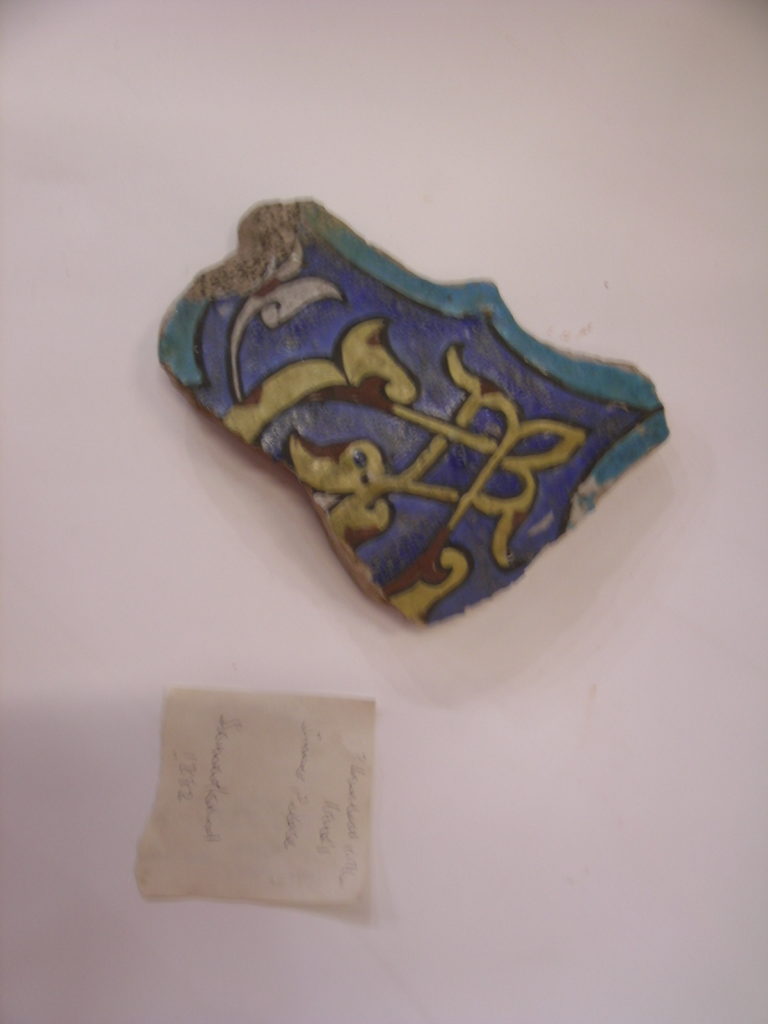

Fragment of an Iznik tile
From the Summer Palace at Samarkand
Probably collected by the Reverend Henry Lansdell, 1882, and presented by Mary Lansdell in memory of her husband, 1922
Reference: CANCM:nn
Can be found: BaseEarth in Materials and Masters Collection


Fragment of multi-coloured glass
Reference: 2598
Can be found: BaseGlass in Materials and Masters Collection


Fragments of pipe clay figurines
Roman
Reference: (78 & 82)
Can be found: Centre shelfEarth in Materials and Masters Collection
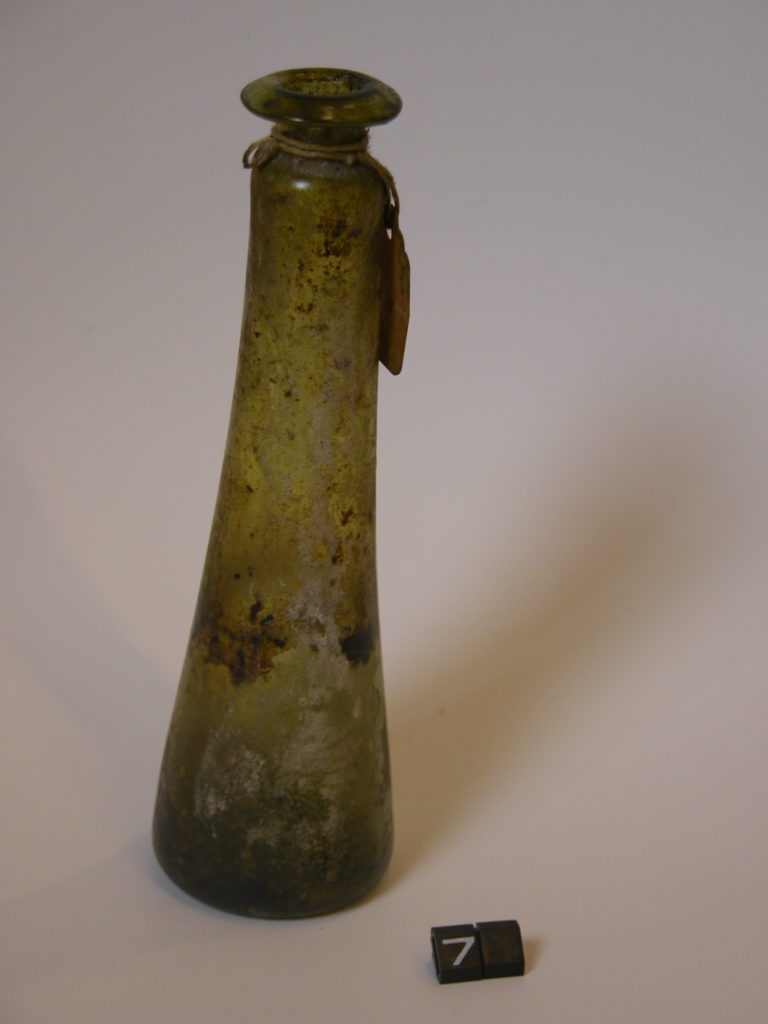

Glass phial containing wood(?)
Bequeathed by John Brent
Reference: 2290
Can be found: BaseGlass in Materials and Masters Collection


Glass slag
A lump of glass made from molten Silica.
Reference: MDB.499
Can be found: GlassLower shelf in Materials and Masters Collection


Glasses and pinces-nez
Glasses can be made to sit on the nose, without earpieces. Such glasses are known as pinces-nez – literally ‘nose pinchers’.
Pince-nez bequeathed by Miss Frances Aitken, 1992
Reference: 1992.1.133-4
Can be found: Centre shelfGlass in Materials and Masters Collection
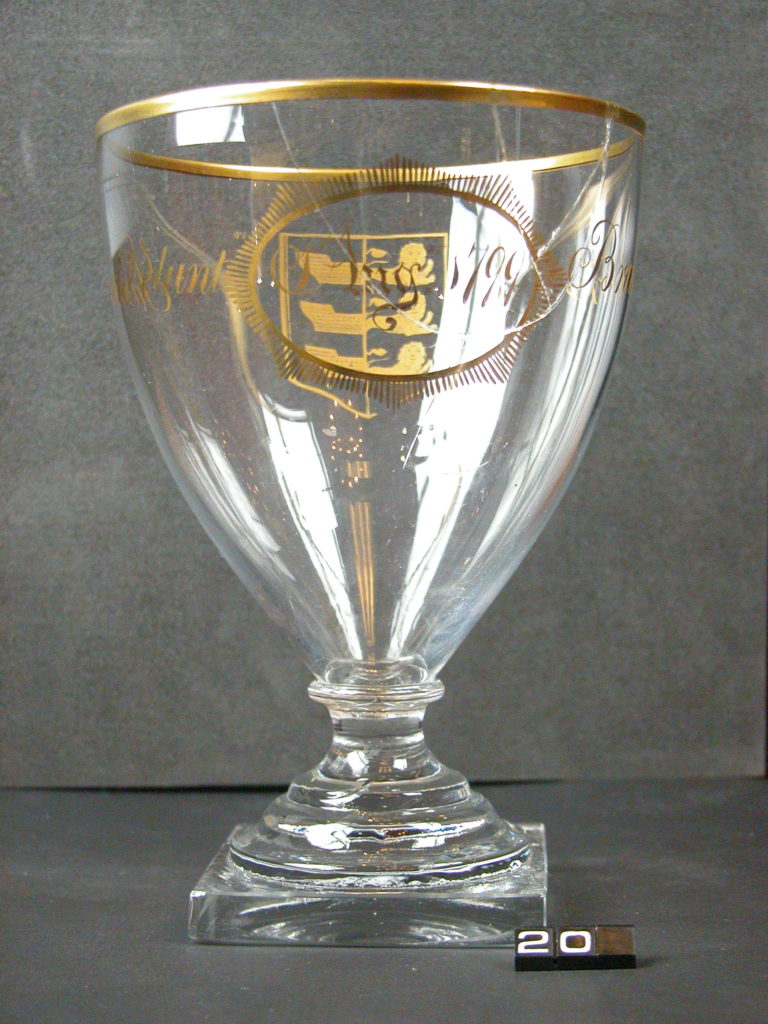

Goblet
1799
With gilded coat of arms and the wording ‘Sandwich Volunteer Aug 1799 Brave and Free’.
Presented by Miss B Street from her brother’s collection, 1933
Reference: CANCM:nn
Can be found: GlassTop shelf in Materials and Masters Collection
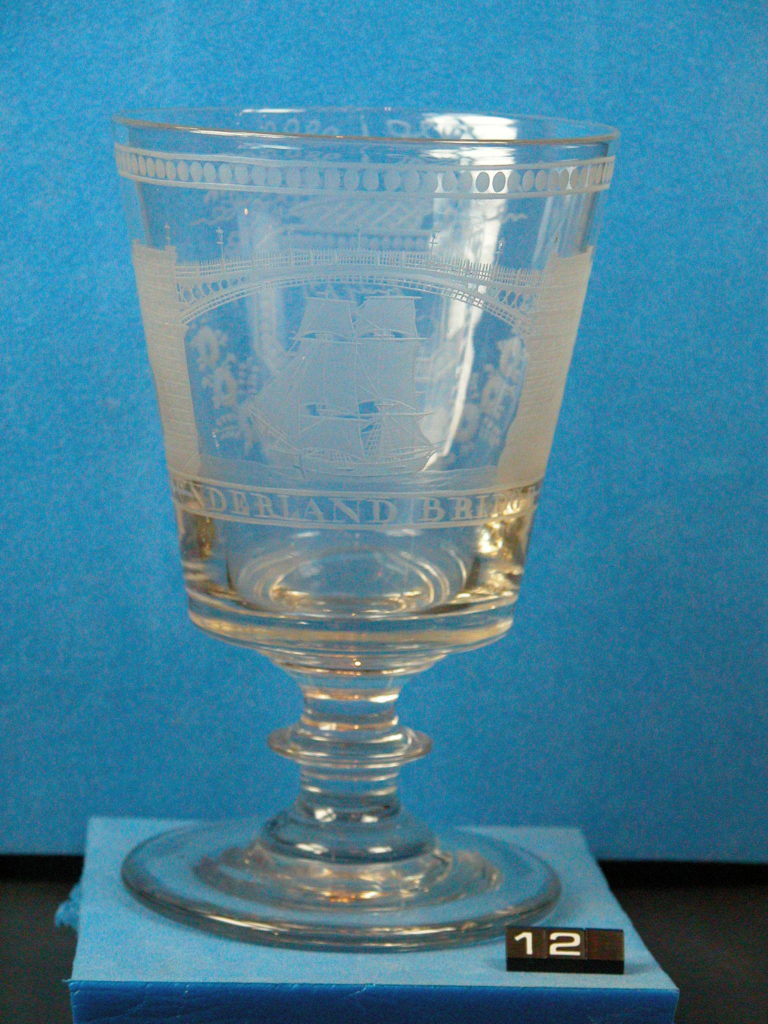

Goblet
18th century
Engraved with initials and an image of Sunderland Bridge, with a ship passing below it.
Bequeathed by John Irving, 1915
Reference: 5580
Can be found: GlassTop shelf in Materials and Masters Collection


Gold
Particles of gold in quartz.
Reference: D1.A.14
Can be found: Metal in Materials and Masters Collection


Gold purse with cathedral image
Reference: CANCM:nn
Can be found: Metal in Materials and Masters Collection
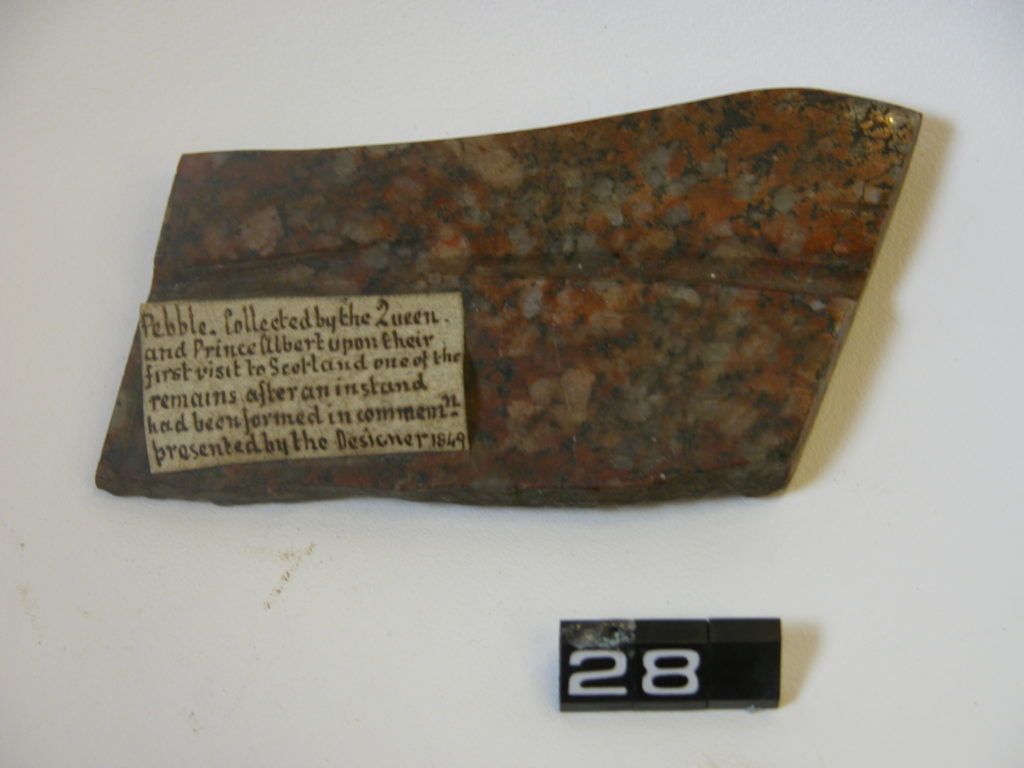

Granite
Remnant of a ‘pebble’ collected by Queen Victoria and Prince Albert on a visit to Scotland in 1849, which was made into an inkstand to commemorate their visit.
Reference: CANCM:nn
Can be found: Stone in Materials and Masters Collection
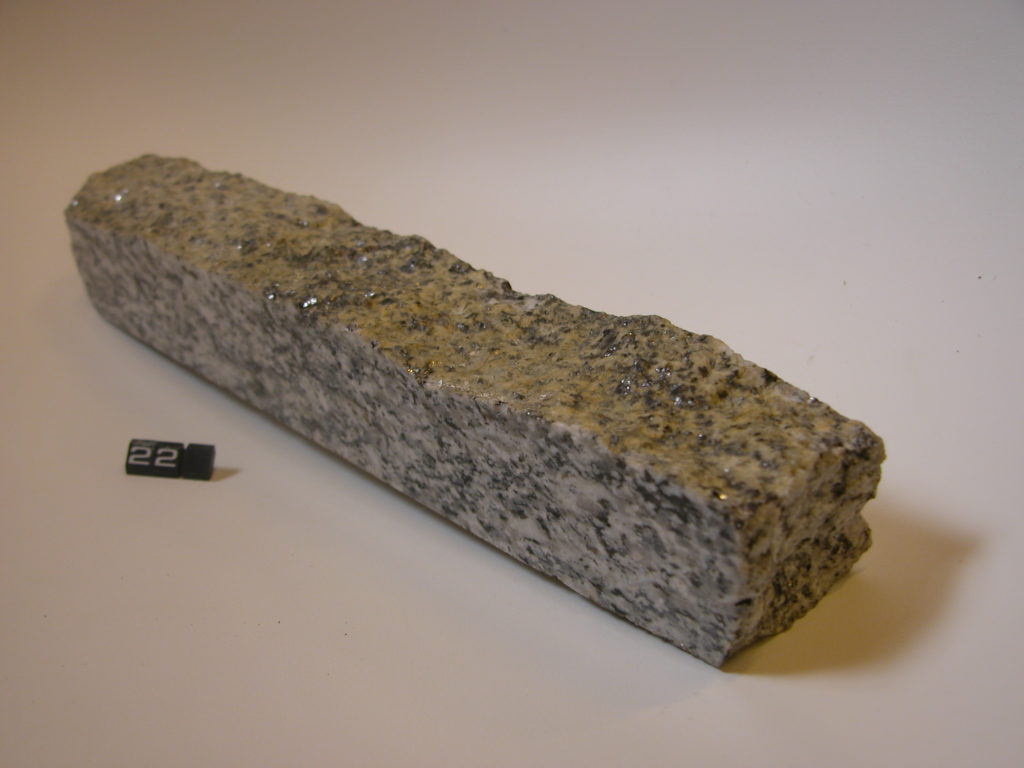

Granite
Granite is a very hard igneous stone containing minerals in large crystals, which formed as the molten rock cooled. It occurs in numerous varieties with different compositions of minerals.
Reference: CANCM:nn
Can be found: Stone in Materials and Masters Collection
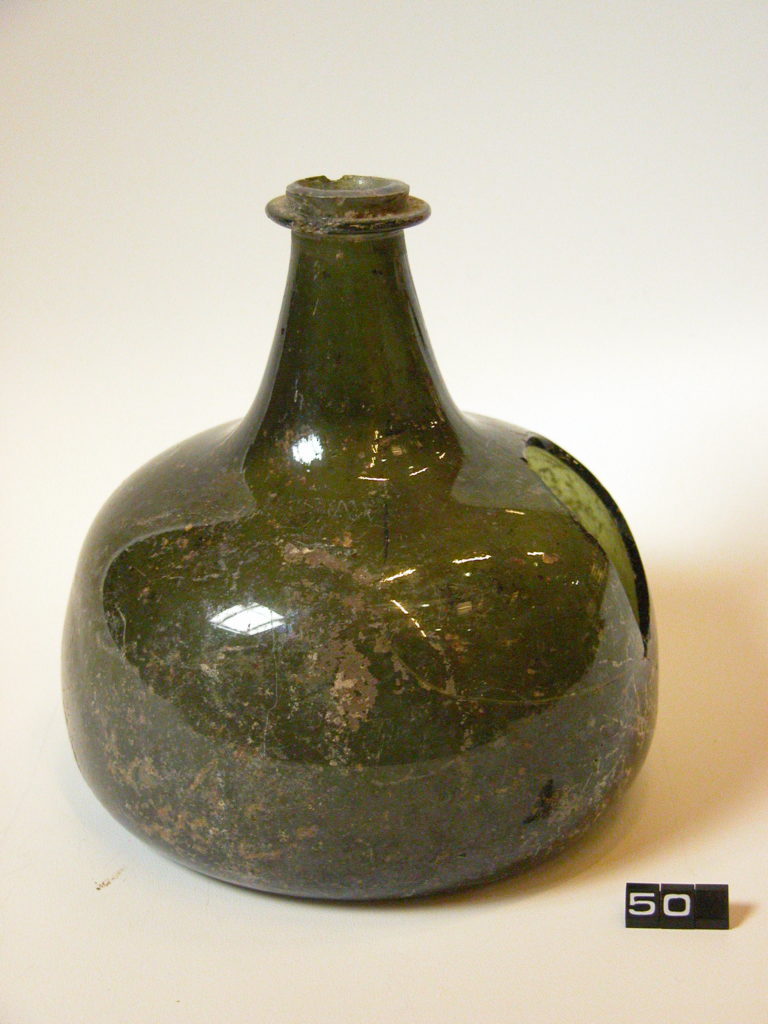

Green bottle
Bottles like this are often found with holes in a similar place. Recent research has suggested that the holes were made by collectors who broke off the seals on bottles as the broken areas correspond to where seals would have been located.
Reference: CANCM:nn
Can be found: Centre shelfGlass in Materials and Masters Collection
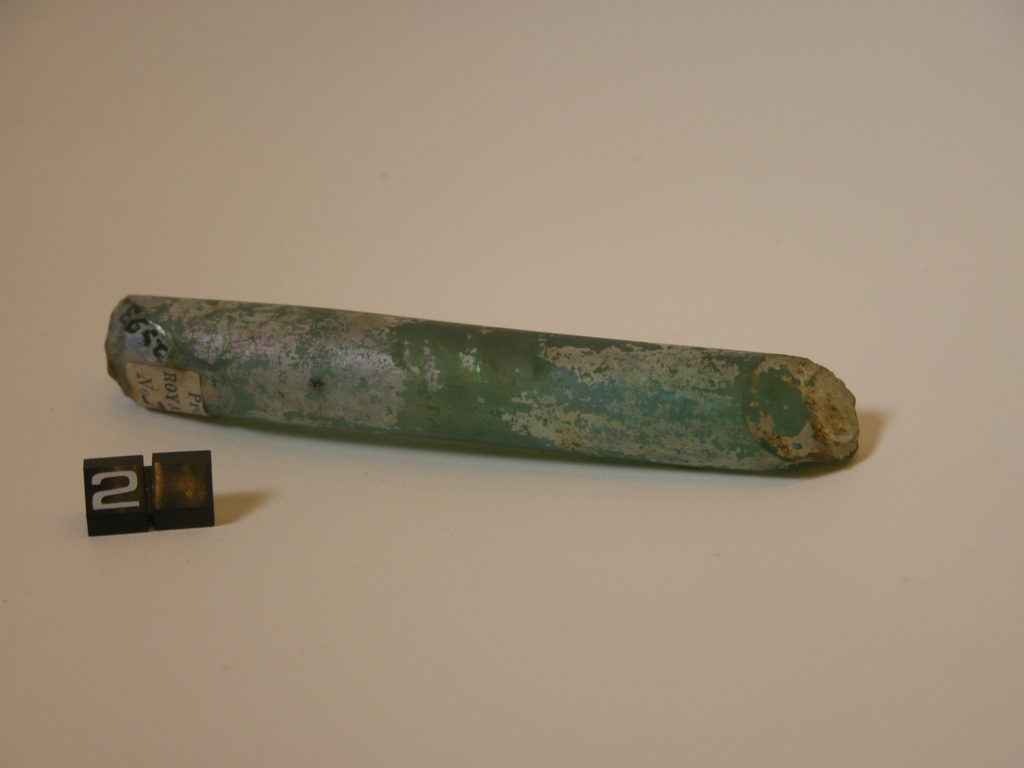

Green glass rod
Reference: 2593
Can be found: BaseGlass in Materials and Masters Collection


Green glazed jug
16th – 17th century, Spain
Presented by Mr Dawkins
Reference: 8375
Can be found: Centre shelfColour and Pattern in Materials and Masters Collection
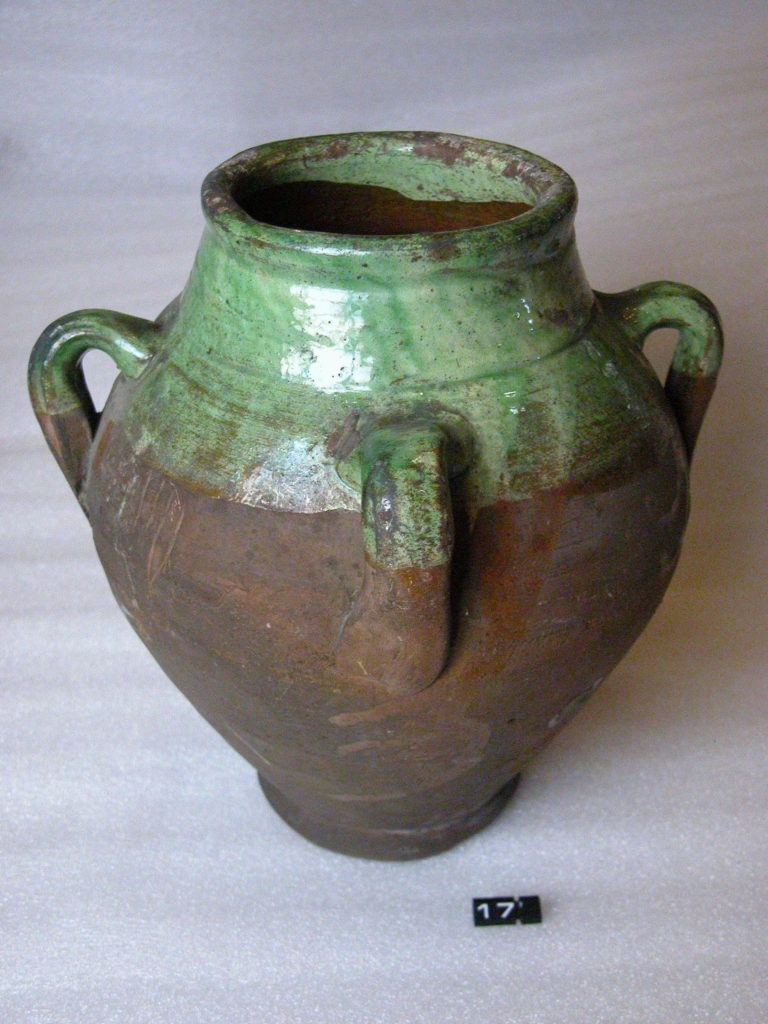

Green glazed red ware four handled vase
17th century
Reference: 6681
Can be found: Centre shelfColour and Pattern in Materials and Masters Collection


Green-glazed plate with vine leaves
Reference: CANCM:nn
Can be found: Colour and PatternLower shelf in Materials and Masters Collection


Grey ware jug with fingerprint decoration
Medieval
Earthenware
Reference: 8807
Can be found: Centre shelfEarth in Materials and Masters Collection
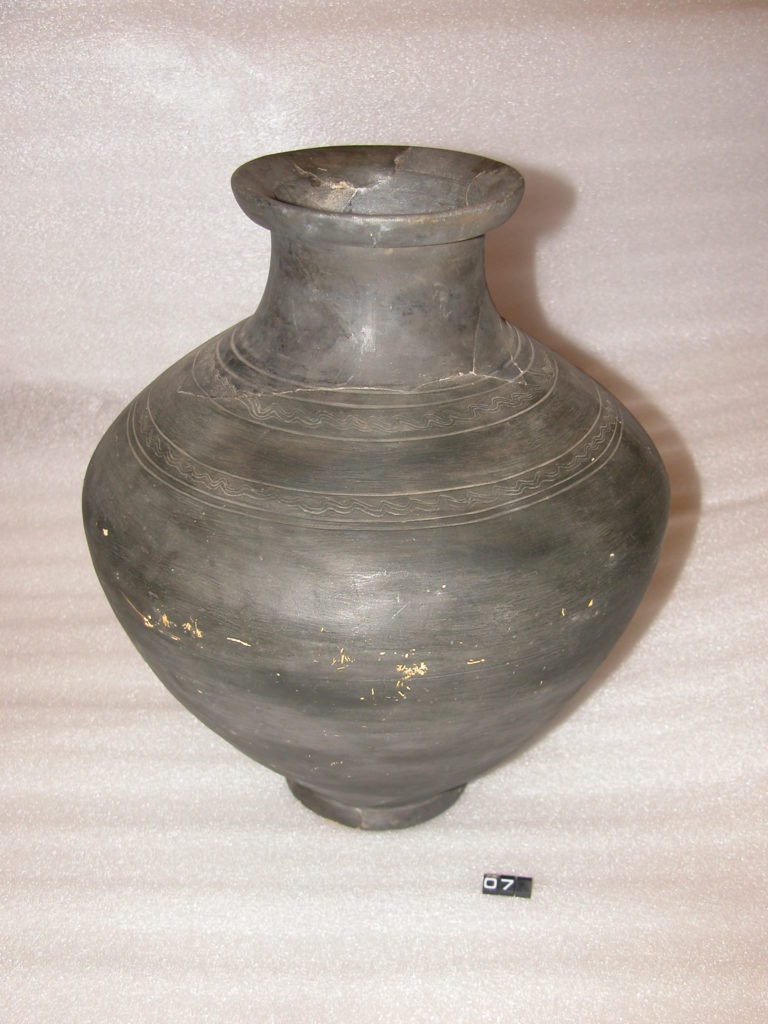

Grey ware pot
Romano-British
Found in Canterbury
Reference: 8448
Can be found: EarthTop shelf in Materials and Masters Collection
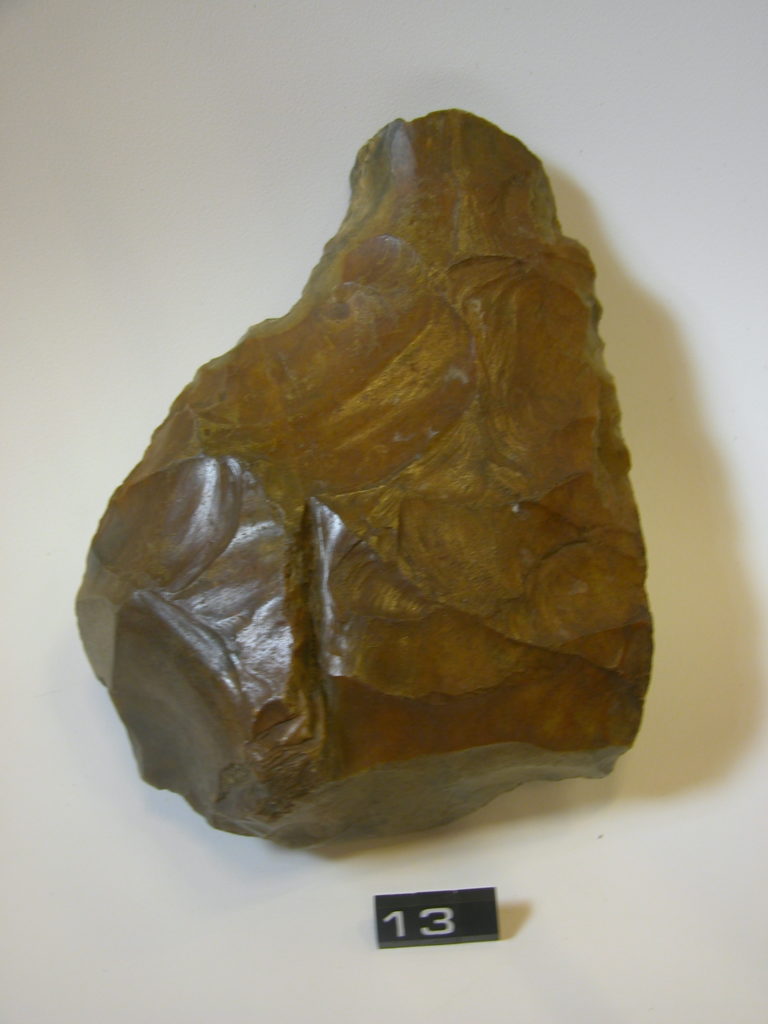

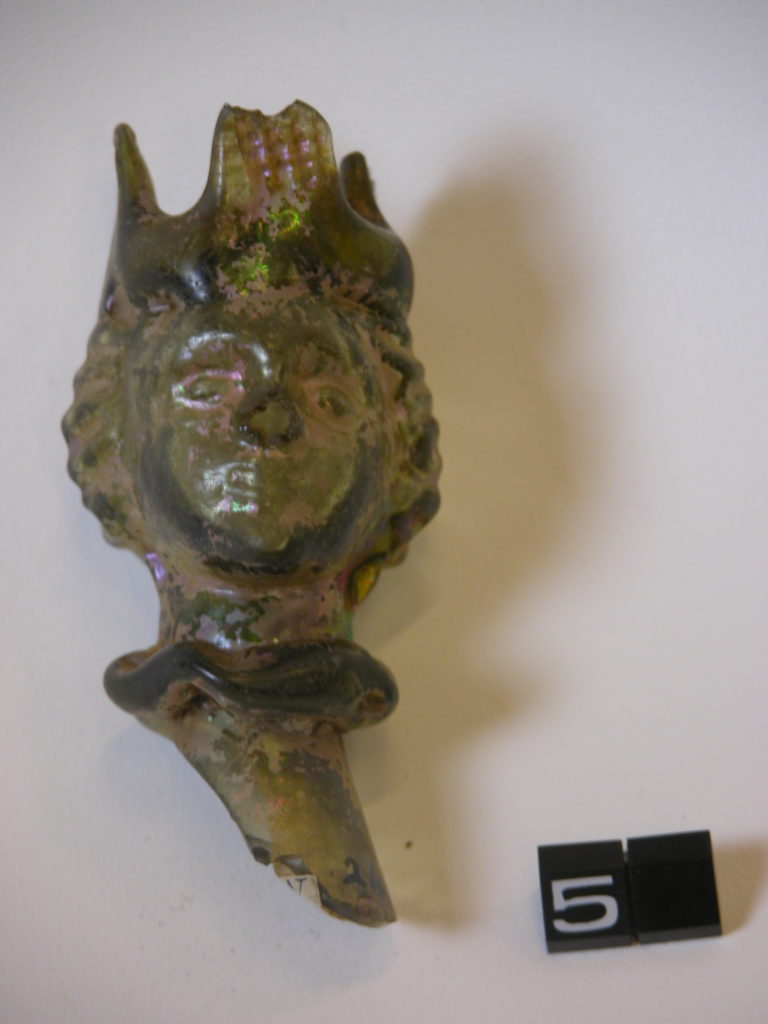

Head of a female wearing a crown
The glass is hollow and would have been blown into a mould.
Reference: 2499
Can be found: BaseGlass in Materials and Masters Collection
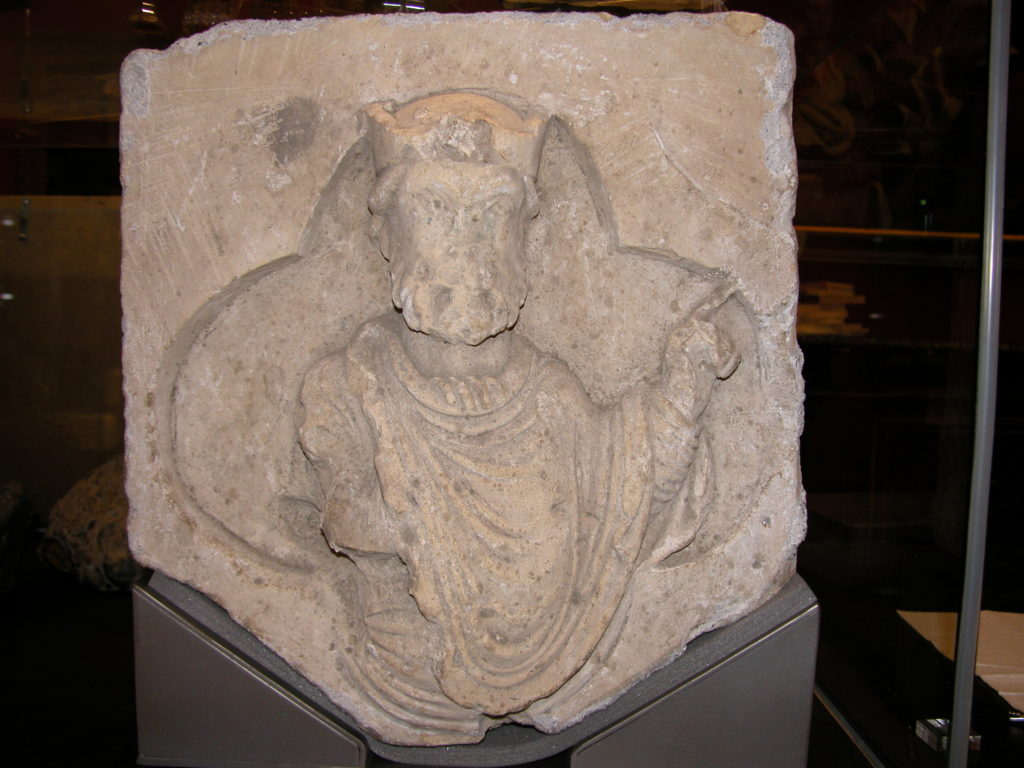

Head of a prophet
Made about 1190 by an unknown Medieval sculptor from Caen stone, a fine creamy-coloured sandstone from France that was imported for building Canterbury Cathedral and Canterbury Castle.
From the Faussett collection
Reference: 6853
Can be found: Stone in Materials and Masters Collection
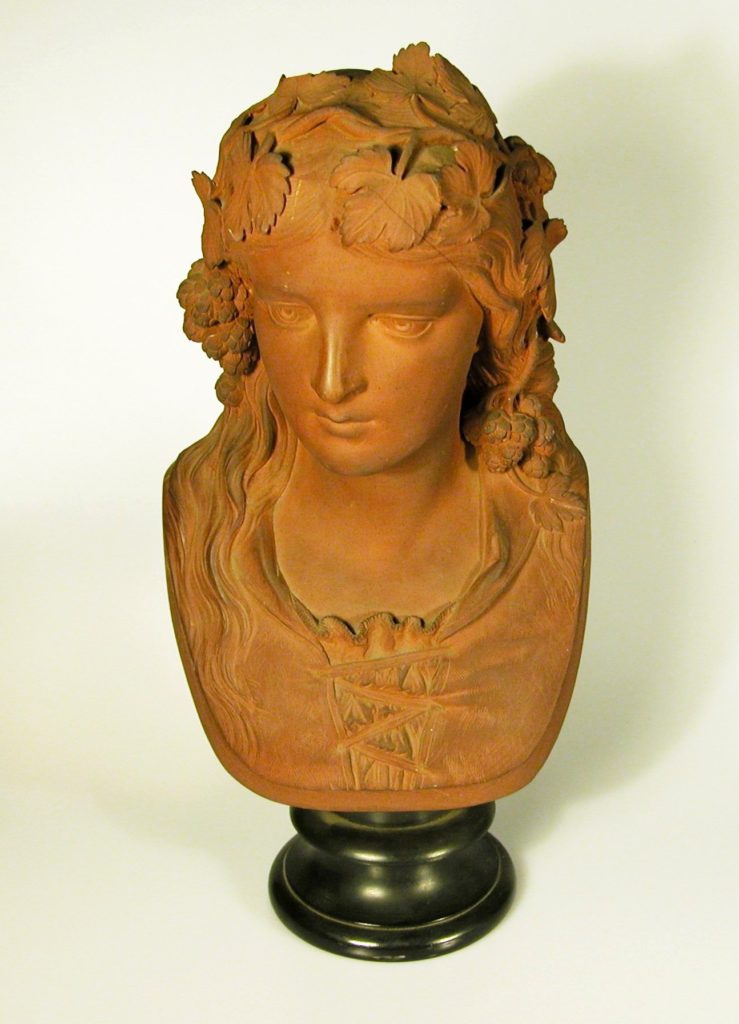

Hop Queen
1865-72, Ceramic and Crystal Palace Art Union
Designed by Joseph Durham, carved by E Foster
‘Made from a trial clay sent to Alderman Copeland’, according to the museum accessions register.
Presented by Lieutenant Colonel Copeland
Reference: 5182
Can be found: EarthTop shelf in Materials and Masters Collection


Hop Queen
1872, Joseph Durham
Parian ware
Made from fine white china clay known as ‘Parian marble’.
Reference: 10432
Can be found: EarthTop shelf in Materials and Masters Collection
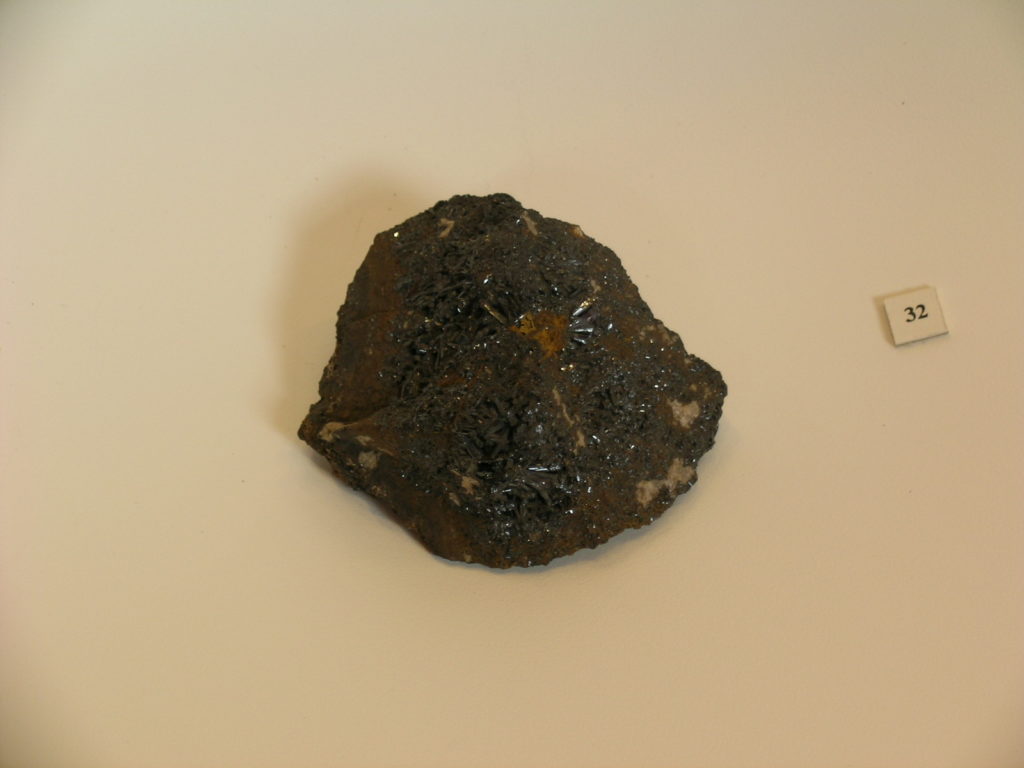

Iron ore
Reticulated or Specular haematite (iron oxide) from Norway.
Presented by J C Taylor, 1946
Reference: D4.A187
Can be found: Metal in Materials and Masters Collection
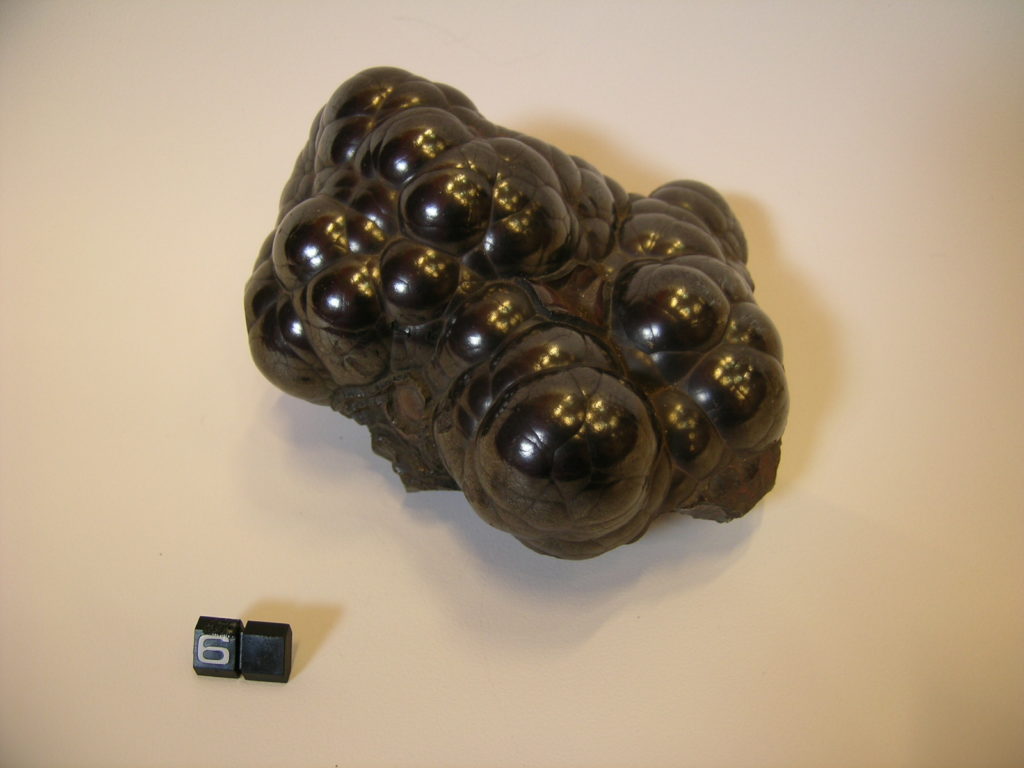

Iron ore (Haematite)
Reference: D4.A105
Can be found: Metal in Materials and Masters Collection


Iron pyrite cube
Reference: 2001.388
Can be found: Metal in Materials and Masters Collection


Iron sand
From Auckland, New Zealand
Reference: K1335
Can be found: Metal in Materials and Masters Collection
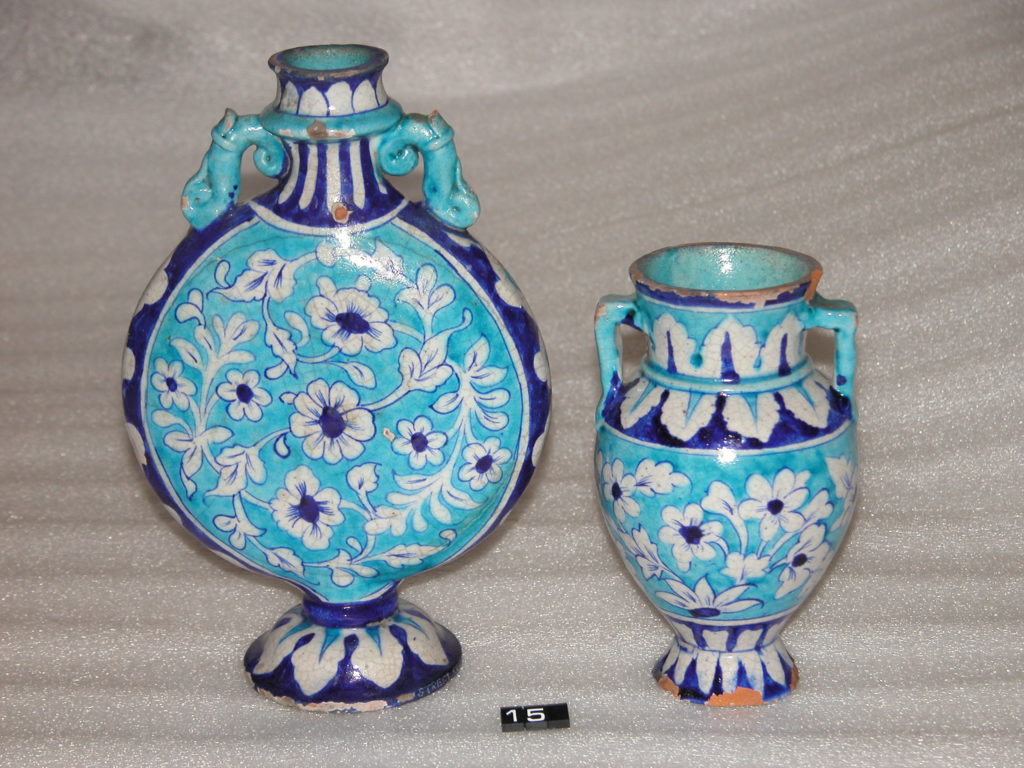

Iznik bottle and vase Turkish
Presented by Miss B. Street from her brother’s collection, 1933
Reference: CANCM:nn
Can be found: Centre shelfColour and Pattern in Materials and Masters Collection
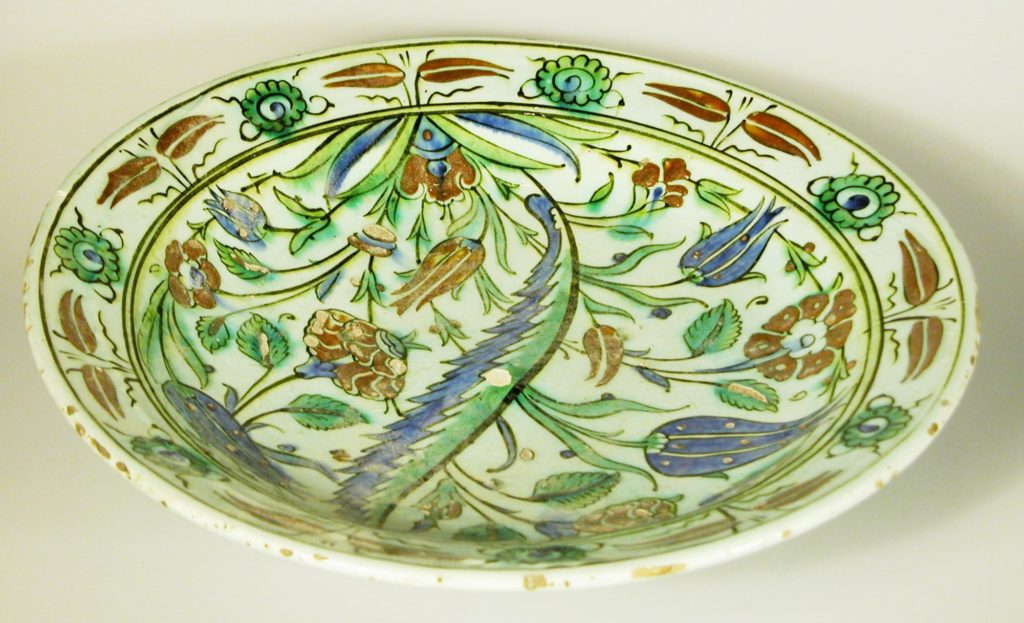

Iznik dish with stylised flowers Turkish
Bequeathed by John Irving, 1915
Reference: 5589
Can be found: Centre shelfColour and Pattern in Materials and Masters Collection


Jacobite wine glass
18th century
Engraved with the Jacobite rose and a butterfly, and having an opaque twist stem.
Bequeathed by John Irving, 1915
Reference: 5579
Can be found: Centre shelfGlass in Materials and Masters Collection
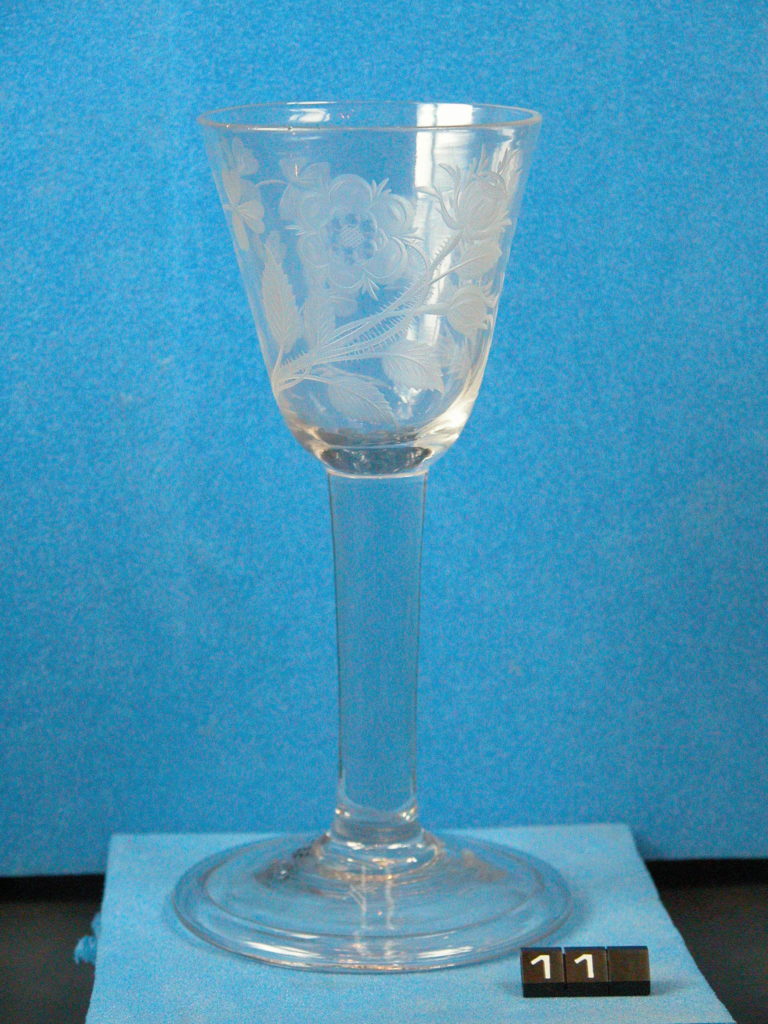

Jacobite wine glass
1745 – 70
Engraved with the Jacobite rose and having a plain stem.
Bequeathed by John Irving, 1915
Reference: 5573
Can be found: Centre shelfGlass in Materials and Masters Collection


Jade tools and pendant
Jade is a Silicate mineral. It is very hard and durable, and has been used since ancient times for tools as well as decoration. Some of our examples of tools come from New Zealand, where jade can be found.
Reference: 771, 776, 2045
Can be found: Stone in Materials and Masters Collection


Jewellery made from English and French jet
19th – 20th century
Jet is fossil wood, formed when wood lies in stagnant water. It was popular for costume accessories to wear as a sign of mourning.
Presented by Mrs Bruce Binney, 1991, and Miss Anne Clelland, 1993
Reference: 1991.25.11-12, 1993.57.5-6, 1993.57.10
Can be found: Vegetable in Materials and Masters Collection
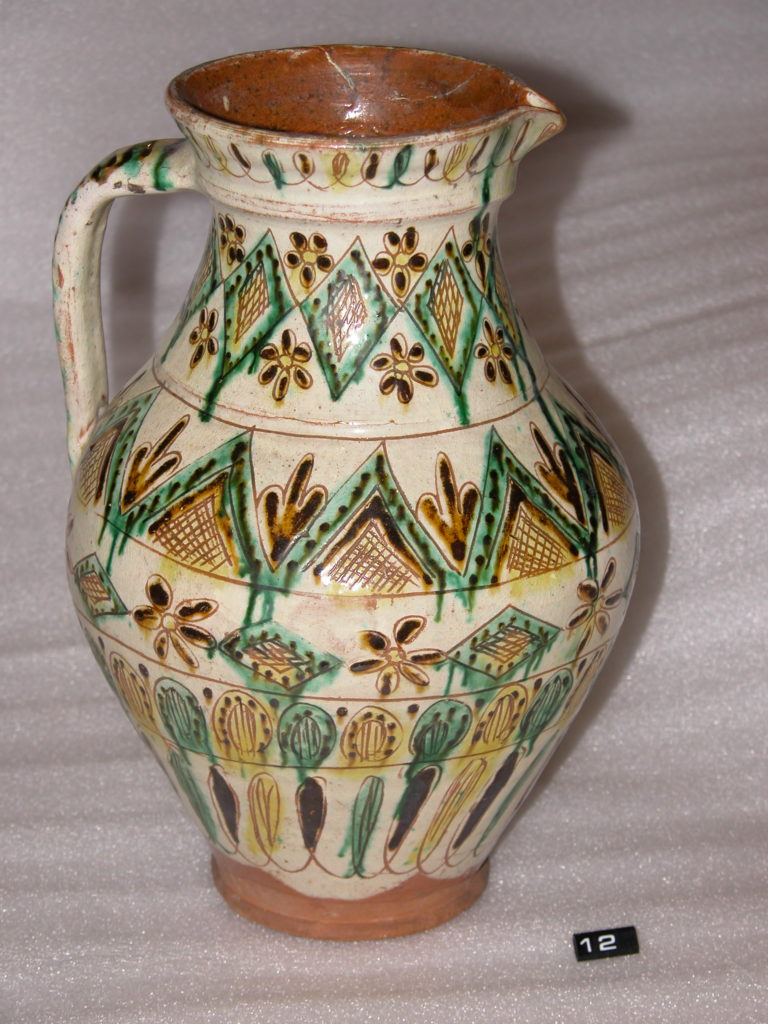

Jug
19th century, North Africa
Bequeathed by Geoffrey Walton, 2004
Reference: 2004.13.1
Can be found: Centre shelfColour and Pattern in Materials and Masters Collection
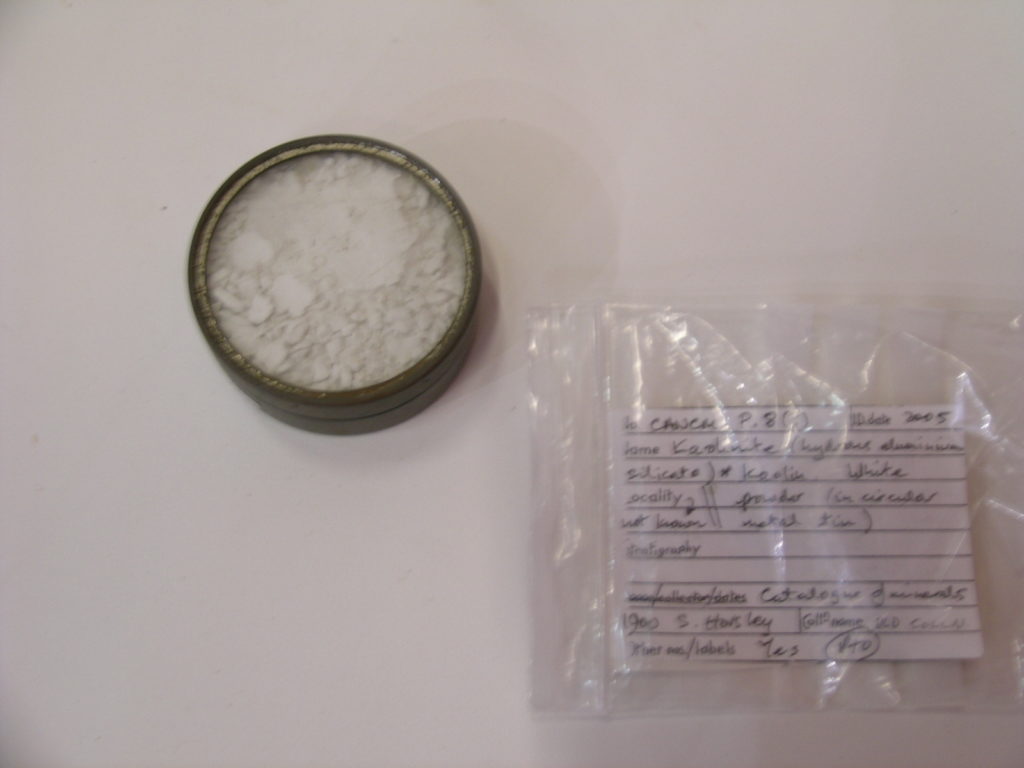

Kaolin powder
Presented by S. Horsley, 1900
Reference: P.8
Can be found: BaseEarth in Materials and Masters Collection
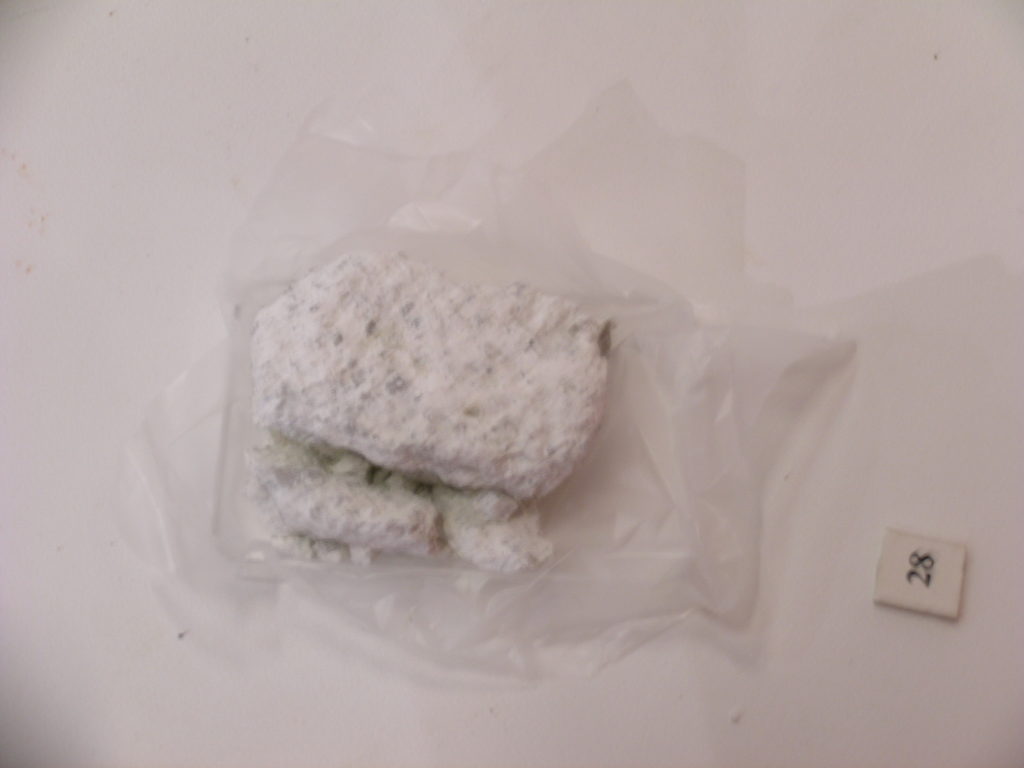

Kaolinite
Reference: P.7
Can be found: BaseEarth in Materials and Masters Collection


Kaolinite from Cornwall
Hydrous aluminium silicate, the ‘magic’ ingredient that gives strength and translucency to pottery when added to clay, creating porcelain.
Reference: K1320
Can be found: BaseEarth in Materials and Masters Collection
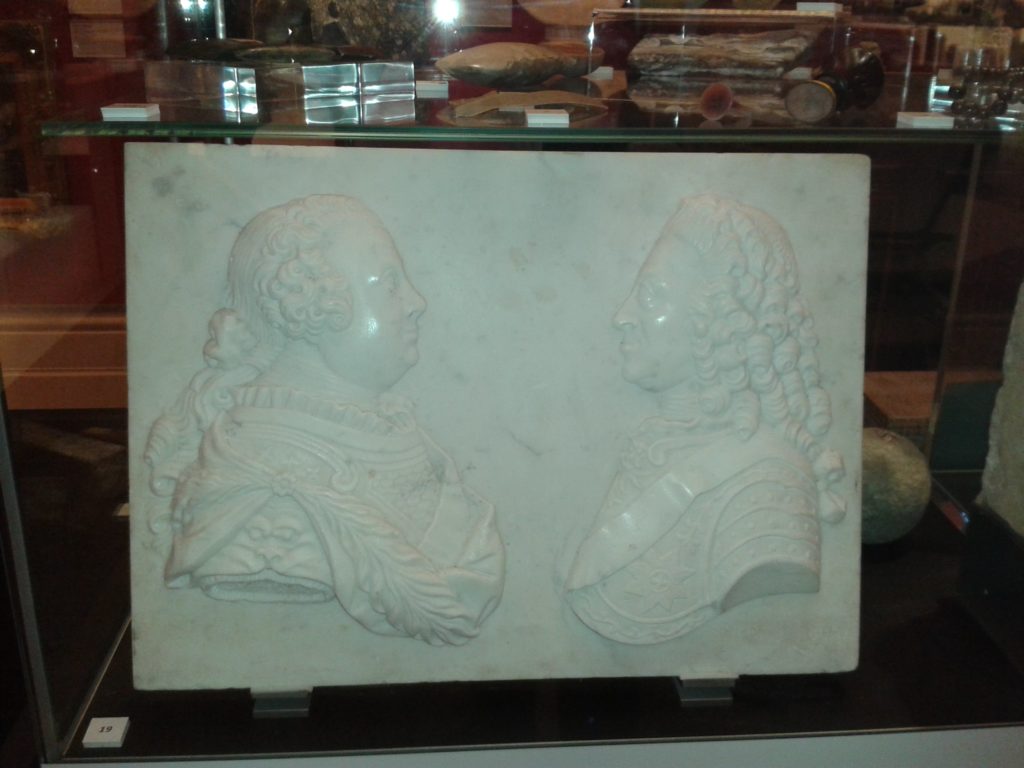

King George II and his son, the Duke of Cumberland
Sculptured in marble by John Frend, a Canterbury sculptor. Marble is a metamorphic rock that can take a fine polish.
Purchased with grant-aid from the MGC/V&A Purchase Grant Fund, the Beecroft Bequest and the Friends of Canterbury Museums, 1996
Reference: 1996.105
Can be found: Stone in Materials and Masters Collection
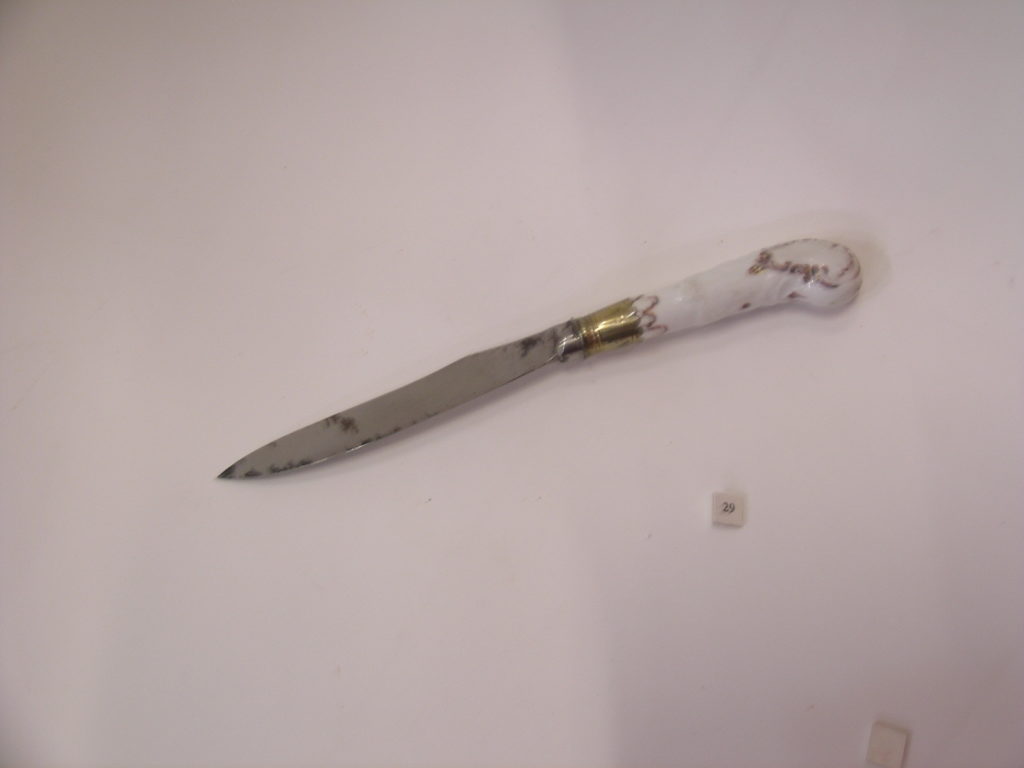

Knife with porcelain handle
Reference: 635
Can be found: Centre shelfEarth in Materials and Masters Collection
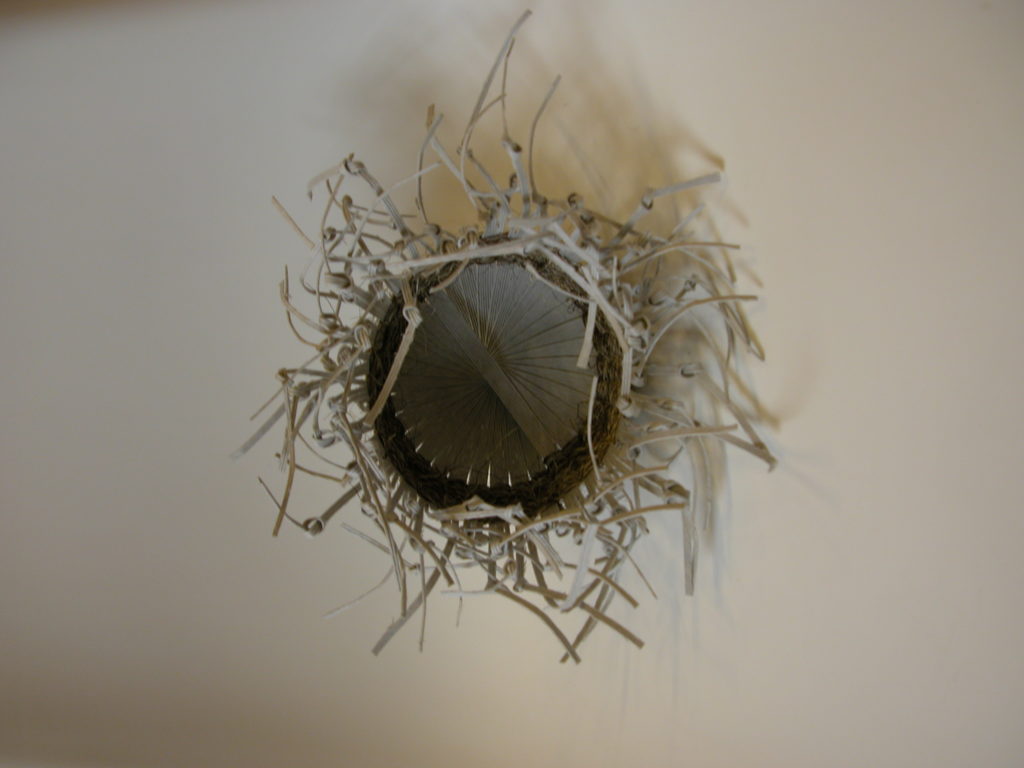

Knotted V&A bowl
Mary Butcher, MBE
Paper band and sisal
Lent by Mary Butcher, 2012
Reference: CANCM:nn
Can be found: Vegetable in Materials and Masters Collection
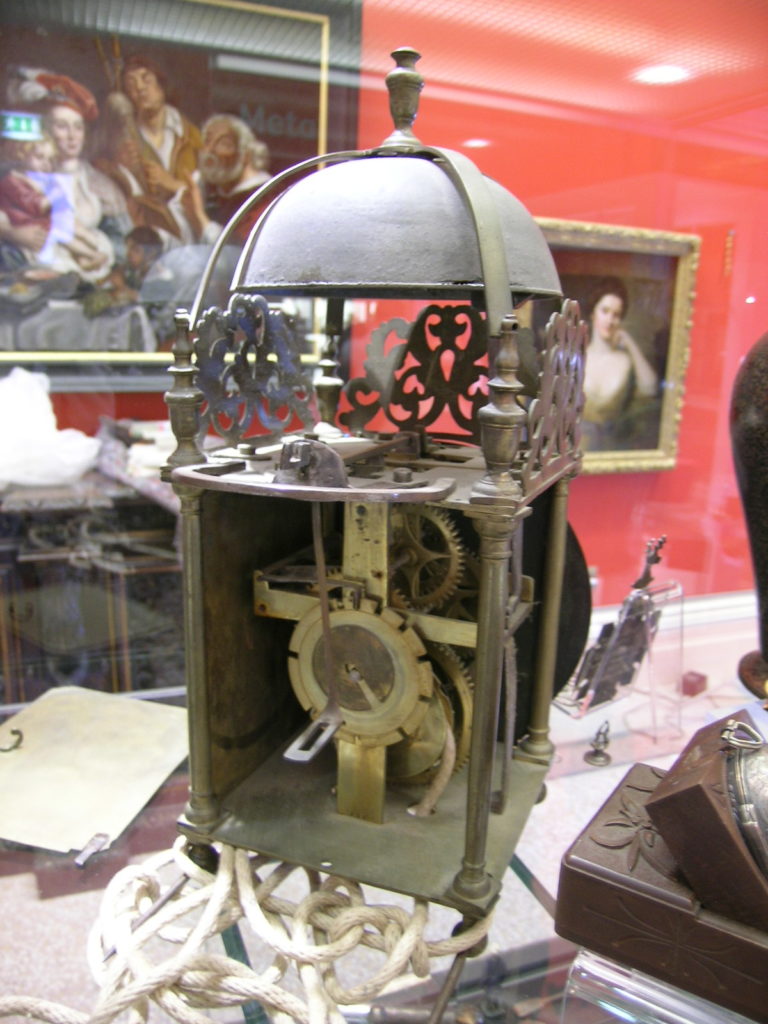

Lantern clock
Early 18th century
John Watts of Canterbury
Restored by Dr Georges Turle and presented in his memory by his children, William, John and Philip Turle and Mary Woods, 2012
Reference: 2012
Can be found: Metal in Materials and Masters Collection


Lantern slides
Glass slides with images painted on them, which were projected large by shining a light through the slides using an early form of projector.
Bequeathed by Miss Frances Aitken, 1992
Reference: 1992.1.151
Can be found: Centre shelfGlass in Materials and Masters Collection








Large blue and white armorial dish
1623, Dutch or Italian
With the arms of Antonio di Paola XIII Gran Maestro elected in 1623.
Reference: CANCM:nn
Can be found: Colour and PatternLower shelf in Materials and Masters Collection
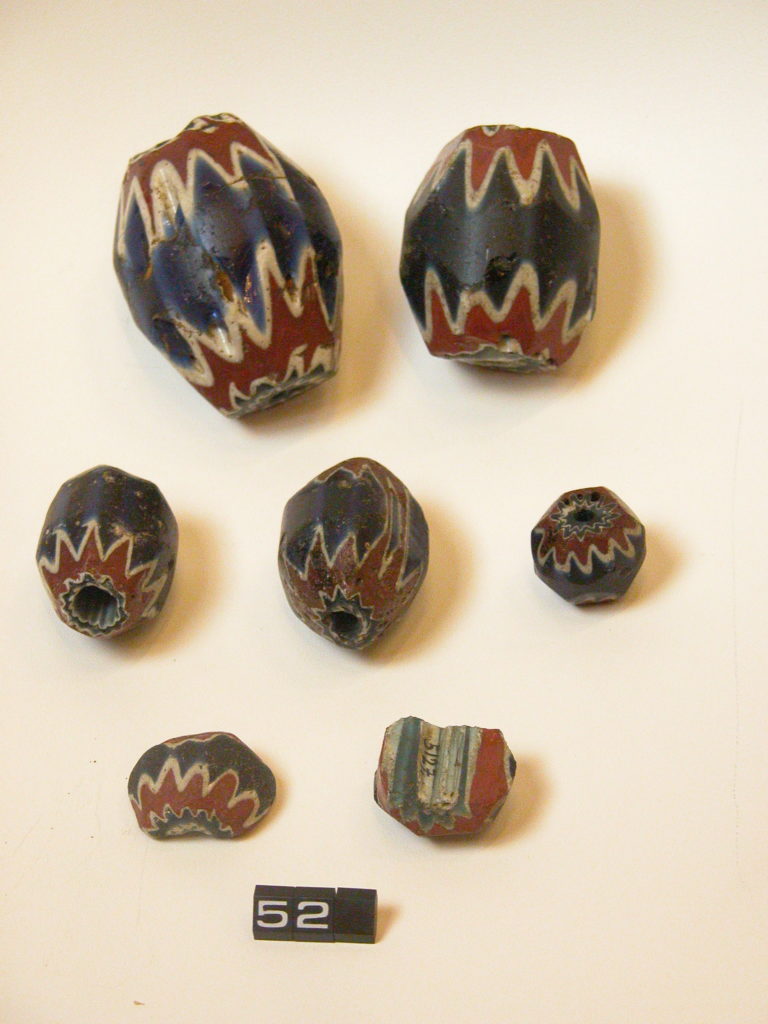

Large blue beads with chevron patterns
These beads are of unknown date and have been variously described as Egyptian, Medieval and Renaissance. The two halves of bead show how the colours are added by progressive dipping and coating.
Several presented by Lt Col Copeland and John Brent
Reference: 2131, 1983, 1982, 2607, 2613, 1998, 5127
Can be found: GlassLower shelf in Materials and Masters Collection
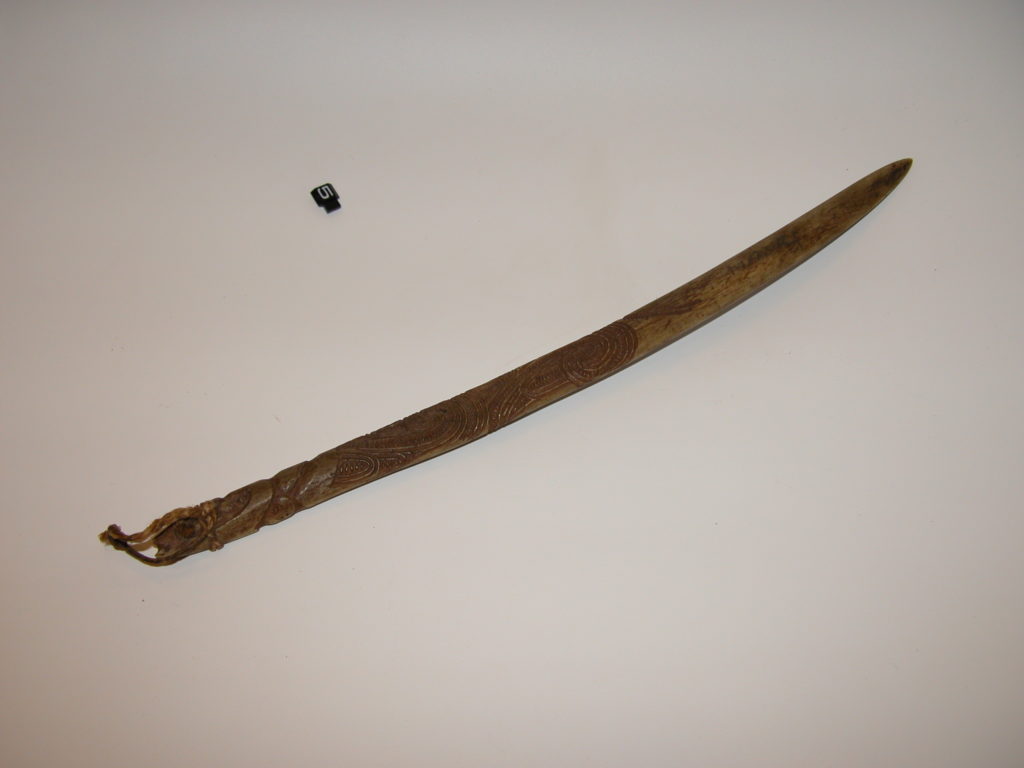

Large needle
Maori
Bone
Reference: 4621
Can be found: Animal in Materials and Masters Collection
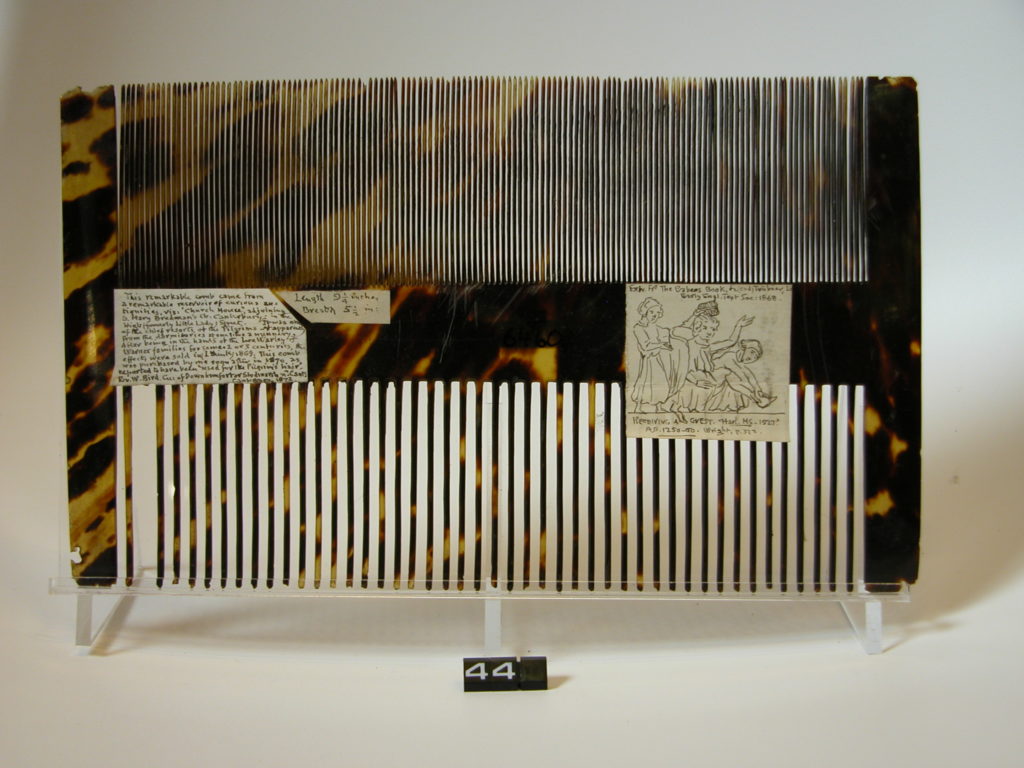

Large tortoiseshell comb
Described as a ‘curious old hair comb’ used by pilgrims to Canterbury when acquired by the donor in 1870.
Presented by Mr G. Goulden
Reference: 6460
Can be found: Animal in Materials and Masters Collection


Laundry iron
19th century
This iron has a solid ‘heart’ that was removable for heating
Reference: CANCM:nn
Can be found: Metal in Materials and Masters Collection
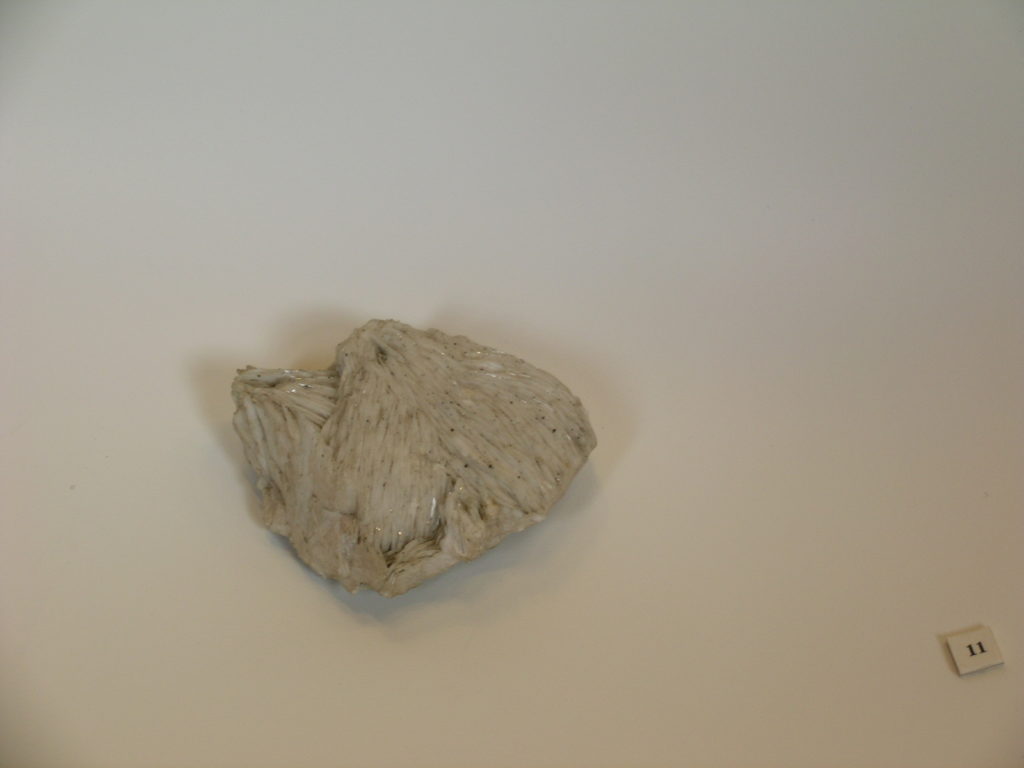

Lead ore
Galena (sulphide of lead) in crystalline Baryte, from Derbyshire.
Reference: D.2B.69
Can be found: Metal in Materials and Masters Collection
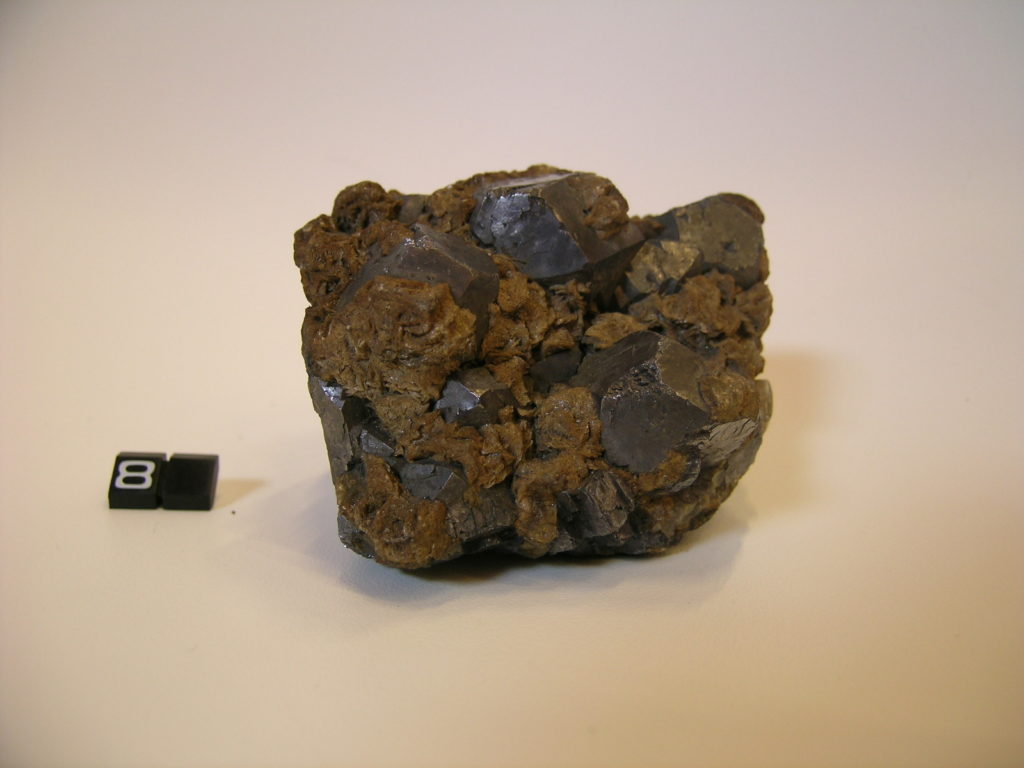

Lead ore (Galena)
Lead sulphide in cubo-octagonal crystals with Dolomite, from Cumberland.
Reference: D2.B.68
Can be found: Metal in Materials and Masters Collection
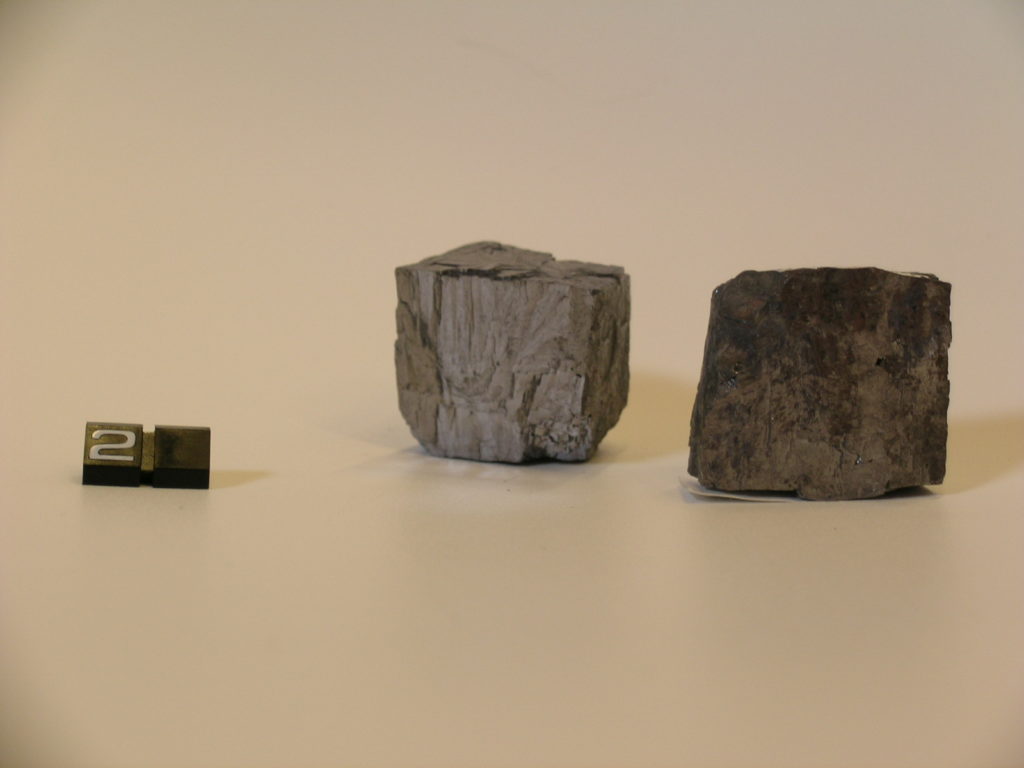

Lead ore (Galena)
A cube, in two pieces, of lead sulphide, an ore of lead.
Reference: 2000.184.1.2
Can be found: Metal in Materials and Masters Collection
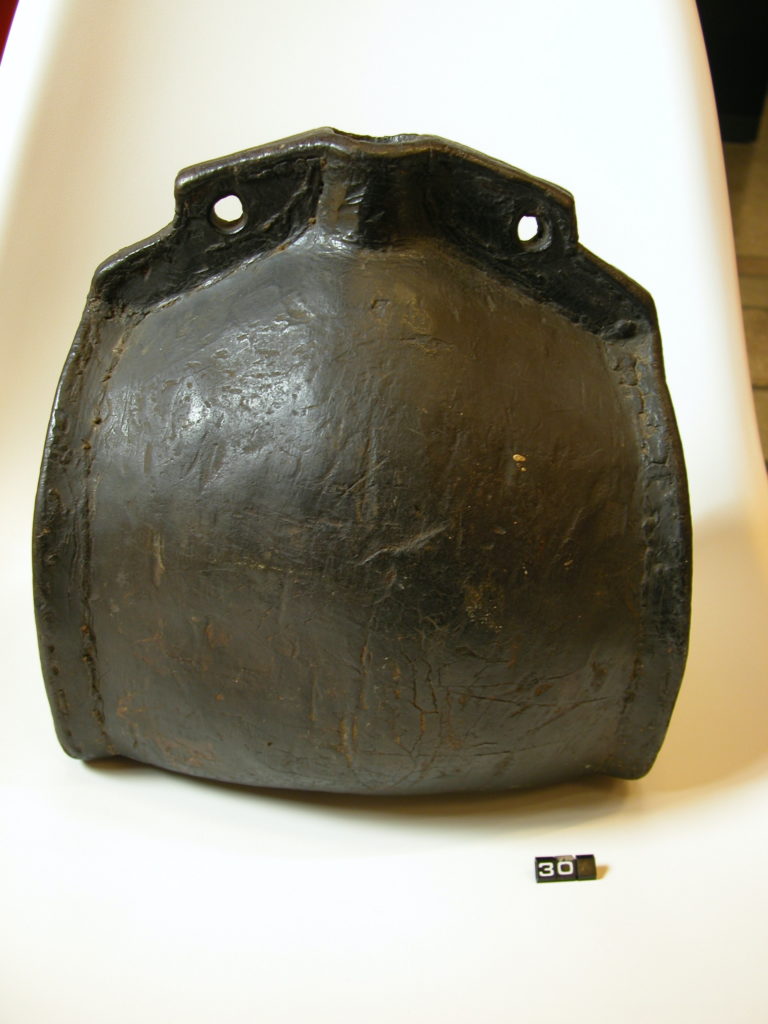

Leather pilgrim’s bottle
16th – 17th century
Leather
For carrying water and with two holes for suspension.
Reference: 2986
Can be found: Animal in Materials and Masters Collection
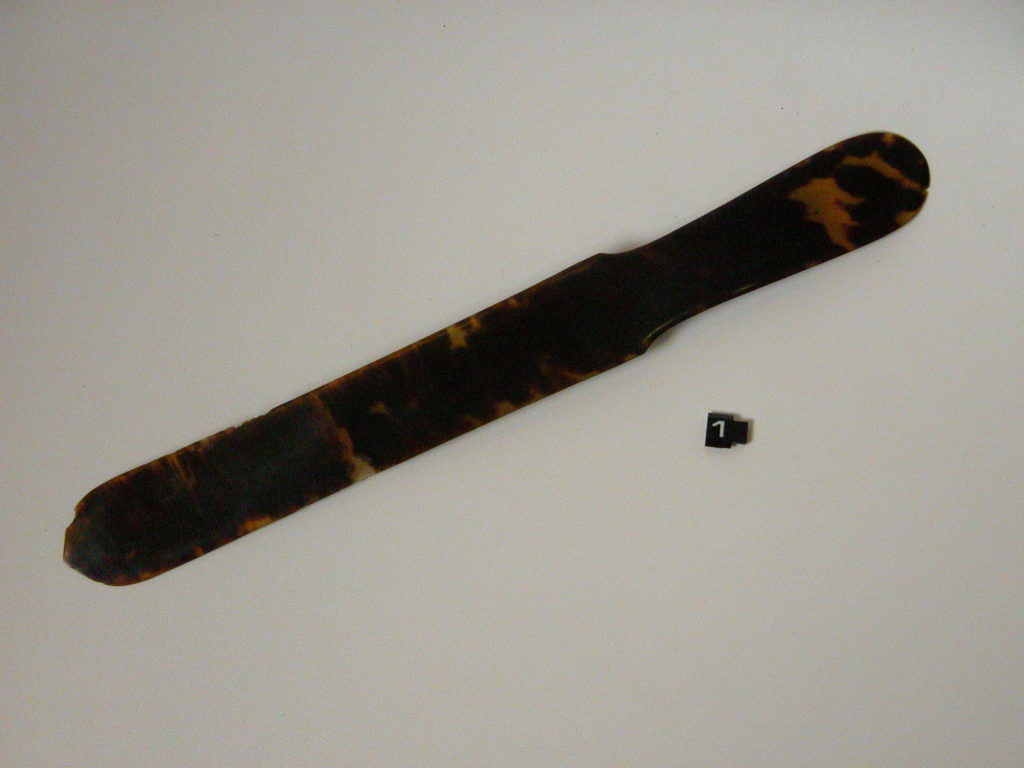

Letter opener
Tortoiseshell
Bequeathed by Miss Frances Aitken, 1992
Reference: 1992.1.339
Can be found: Animal in Materials and Masters Collection


Lilac Jasperware drum
Late 18th century
Wedgwood
A pedestal or base on which a lamp, candleholder, vase, figure or similar item could be mounted.
Bequeathed by John Irving, 1915
Reference: 5325
Can be found: Colour and PatternLower shelf in Materials and Masters Collection
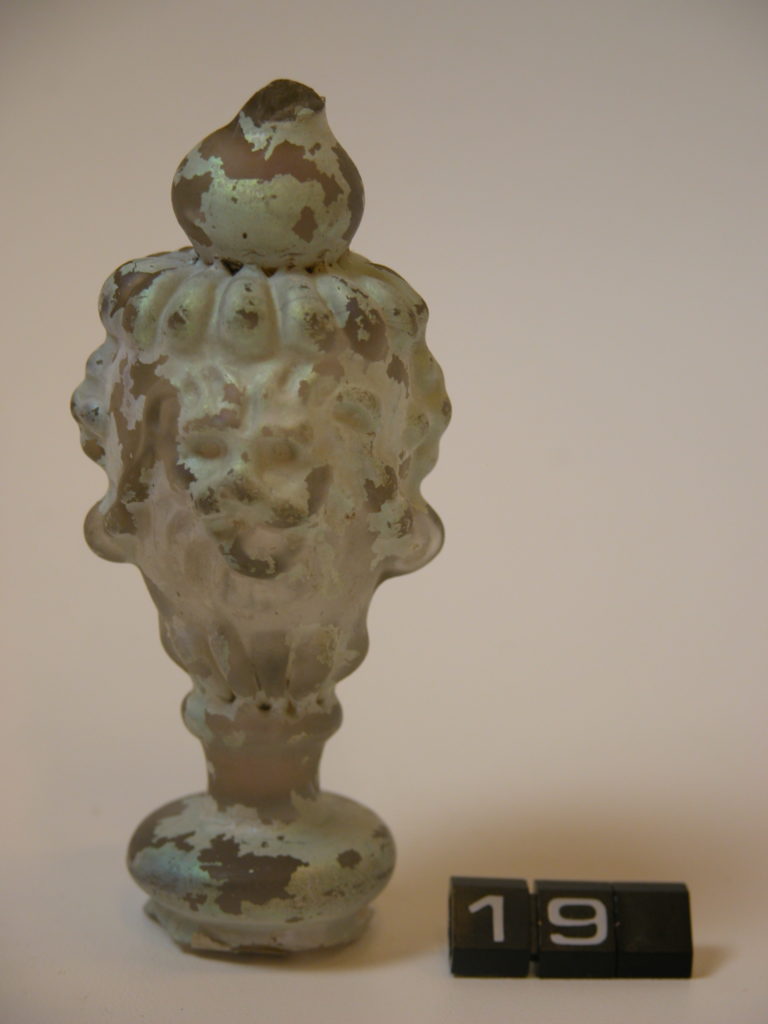

Lion’s head, part of a vase or glass
The glass is hollow and would have been blown into a mould.
Reference: 2603
Can be found: BaseGlass in Materials and Masters Collection
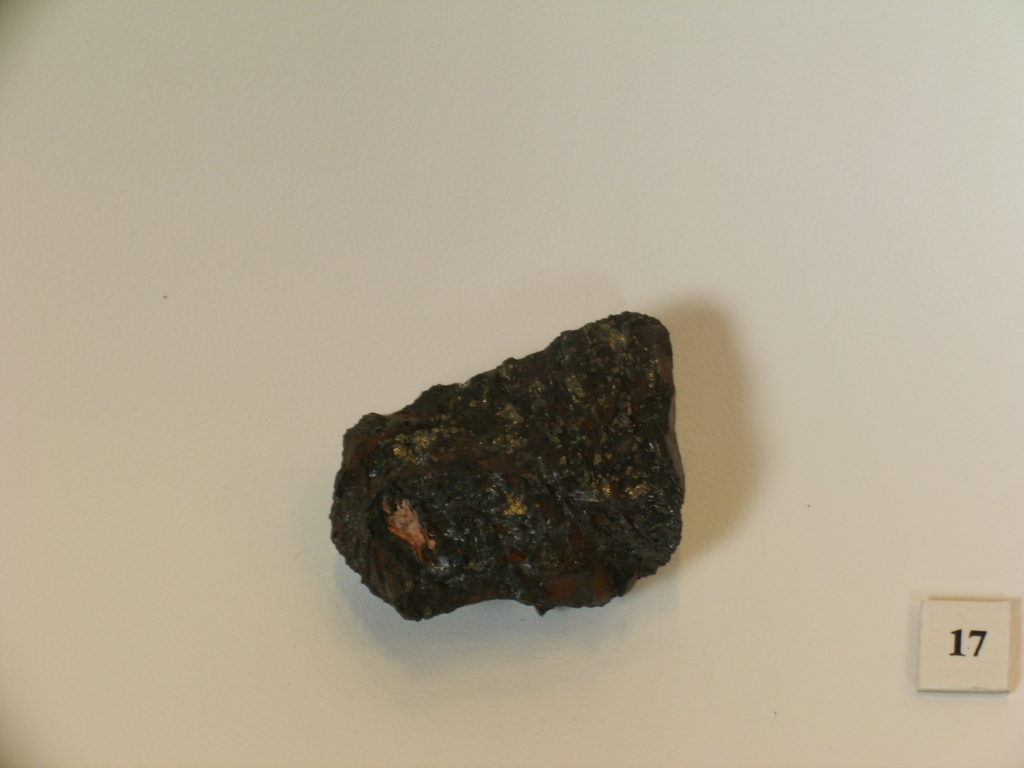

Lodestone or Magnetite
Iron oxide from Arkansas, USA.
Reference: D4.A.169
Can be found: Metal in Materials and Masters Collection
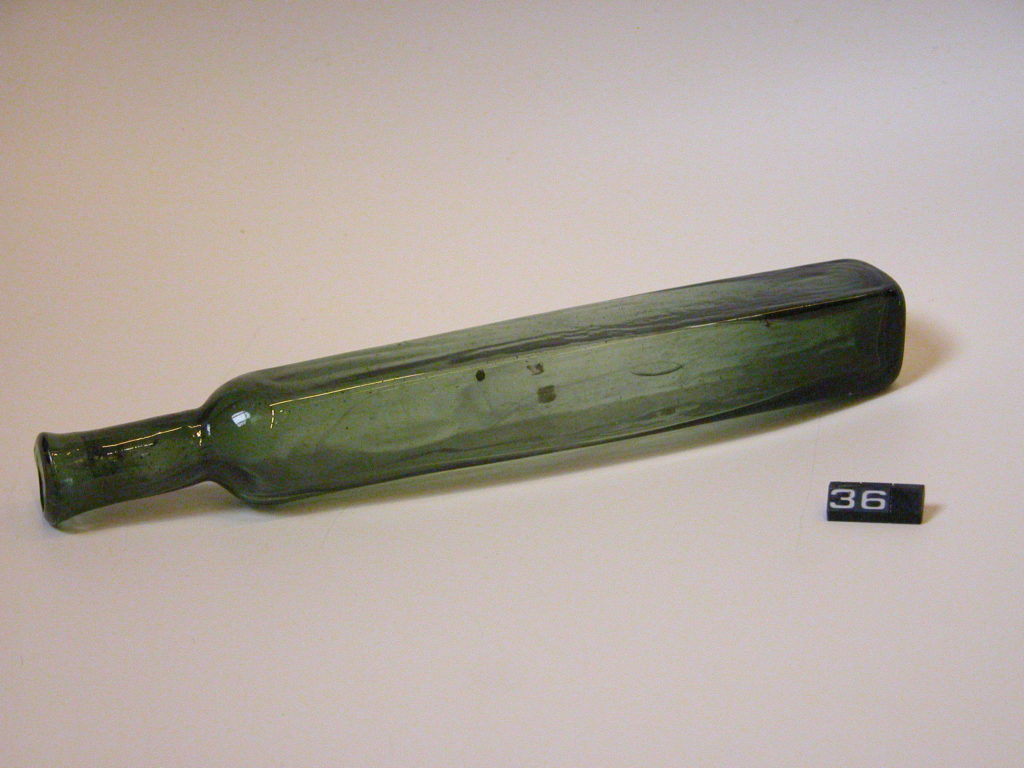

Long dark green glass bottle
Presented by Mr E W H Court, 1928
Reference: 6663
Can be found: BaseEarth in Materials and Masters Collection
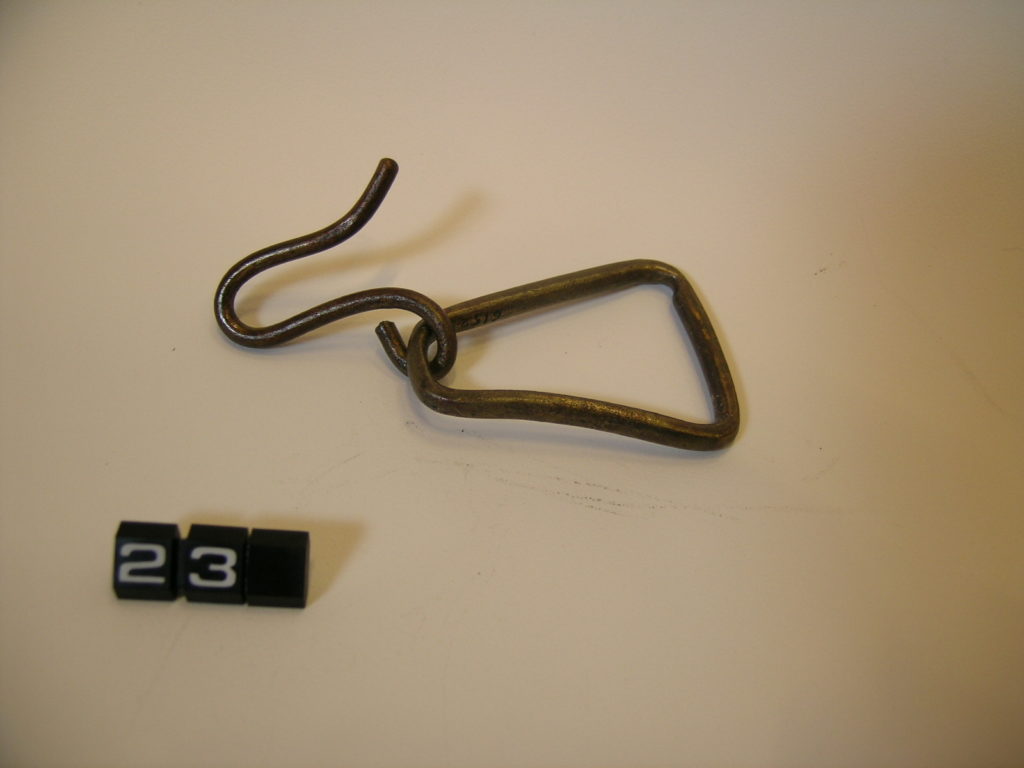

Loop and hook
Unknown date and origin
Reference: 6152
Can be found: Metal in Materials and Masters Collection


Maiolica plate
Reference: 3156
Can be found: Colour and PatternTop shelf in Materials and Masters Collection
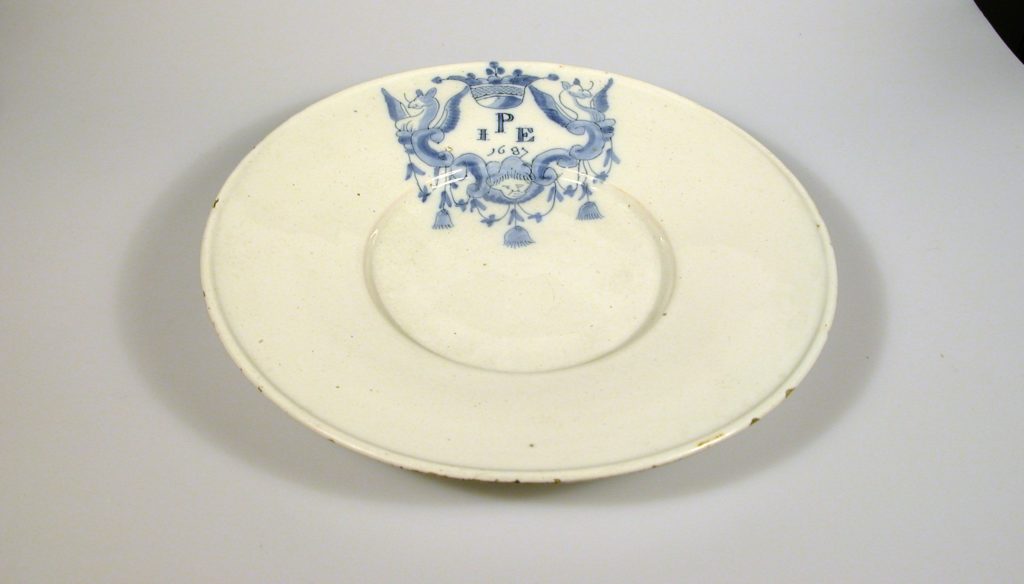

Marriage plate with initials ‘I P E’ 1687, Delft, Netherlands
Tin-glazed earthenware
Bequeathed by John Irving, 1915
Reference: 5815
Can be found: Colour and PatternLower shelf in Materials and Masters Collection
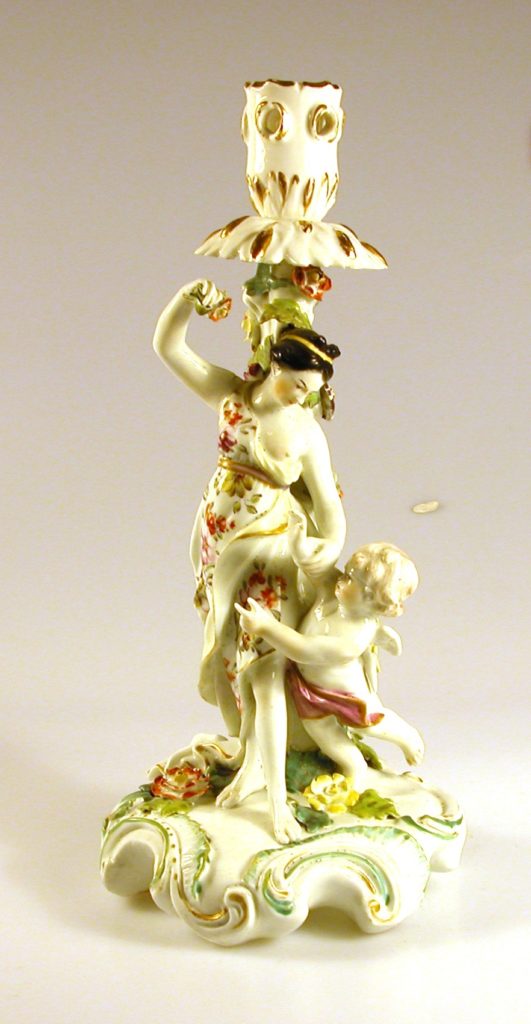

Mars and Cupid, and Venus and Cupid
1745, Chelsea
Porcelain
Bequeathed by John Irving, 1915
Reference: 5274, 5275
Can be found: EarthTop shelf in Materials and Masters Collection
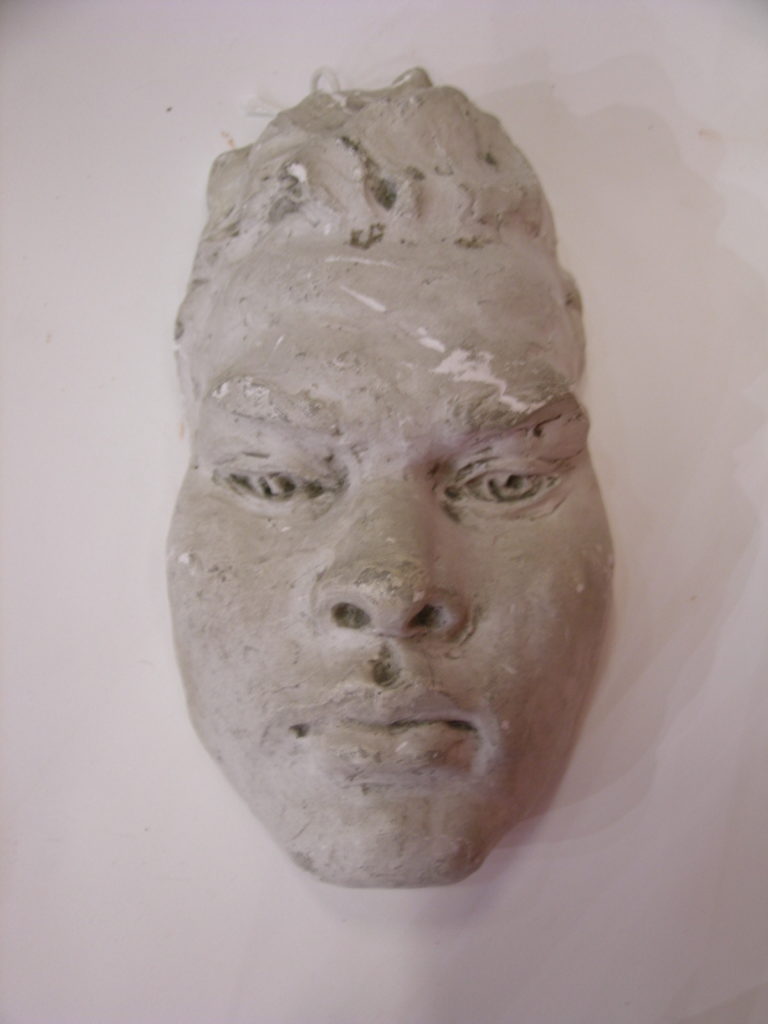

Mask sculpture
Alfred Palmer (1877-1951)
Plaster
Plaster is made from the earth mineral Gypsum, which also forms the Selenite on display in the case opposite focused on Glass.
Purchased from the artist’s family with aid from the Friends of Canterbury Museums, 1997
Reference: CANCM:nn
Can be found: Centre shelfEarth in Materials and Masters Collection
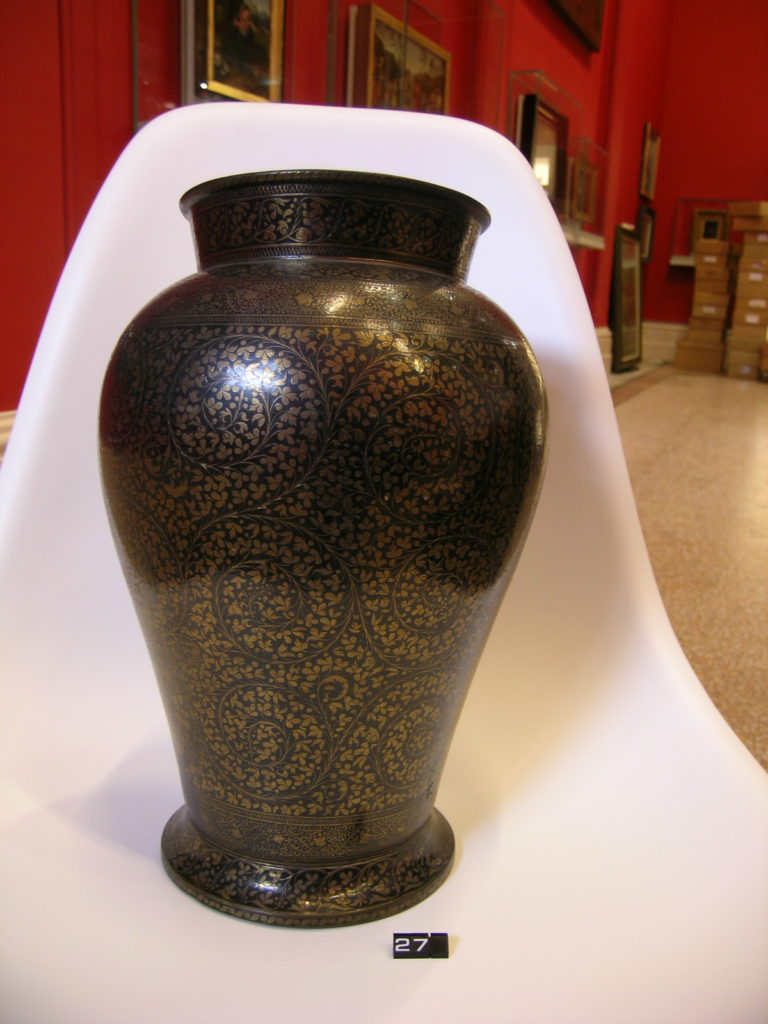

Metal vase
One of a pair, of unknown origin.
Presented by F. Bennett-Goldney
Reference: 8152
Can be found: Metal in Materials and Masters Collection
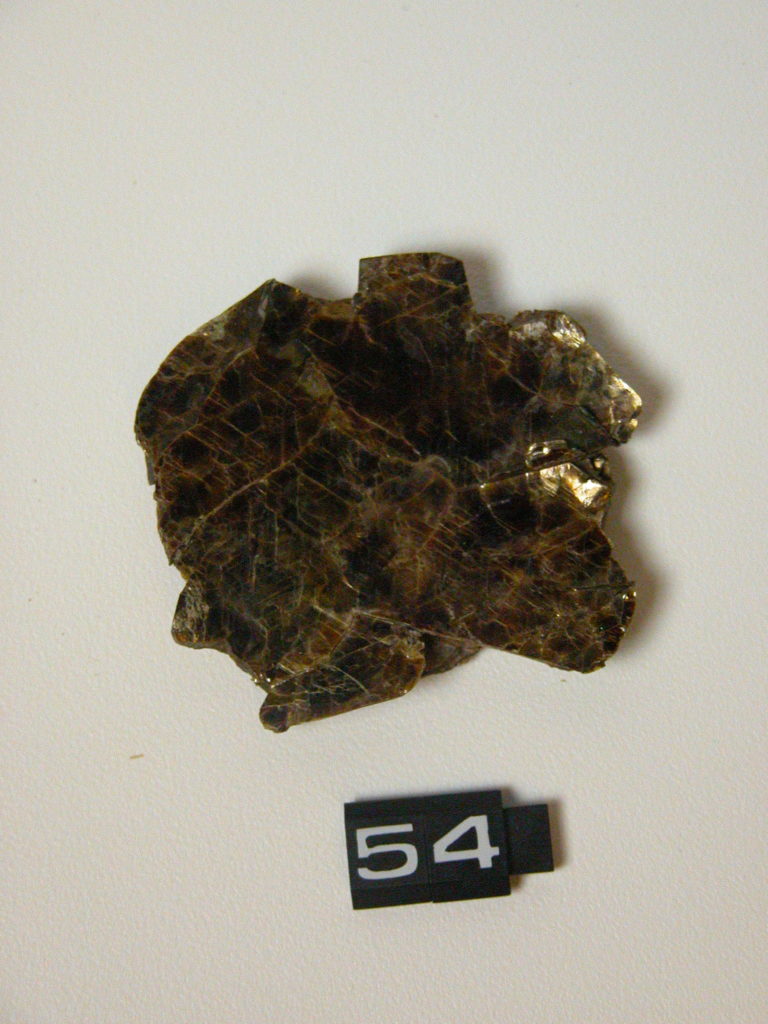

Mica
The mineral Mica is a Silicate that forms in very thin layers; the single sheet shows how transparent it can be. It was known as Muscovy Glass. Mica is mainly white but there is a black variety containing iron.
Reference: O.I.24, D4.B468, 2006.25, D4.B470, (nn)
Can be found: GlassLower shelf in Materials and Masters Collection
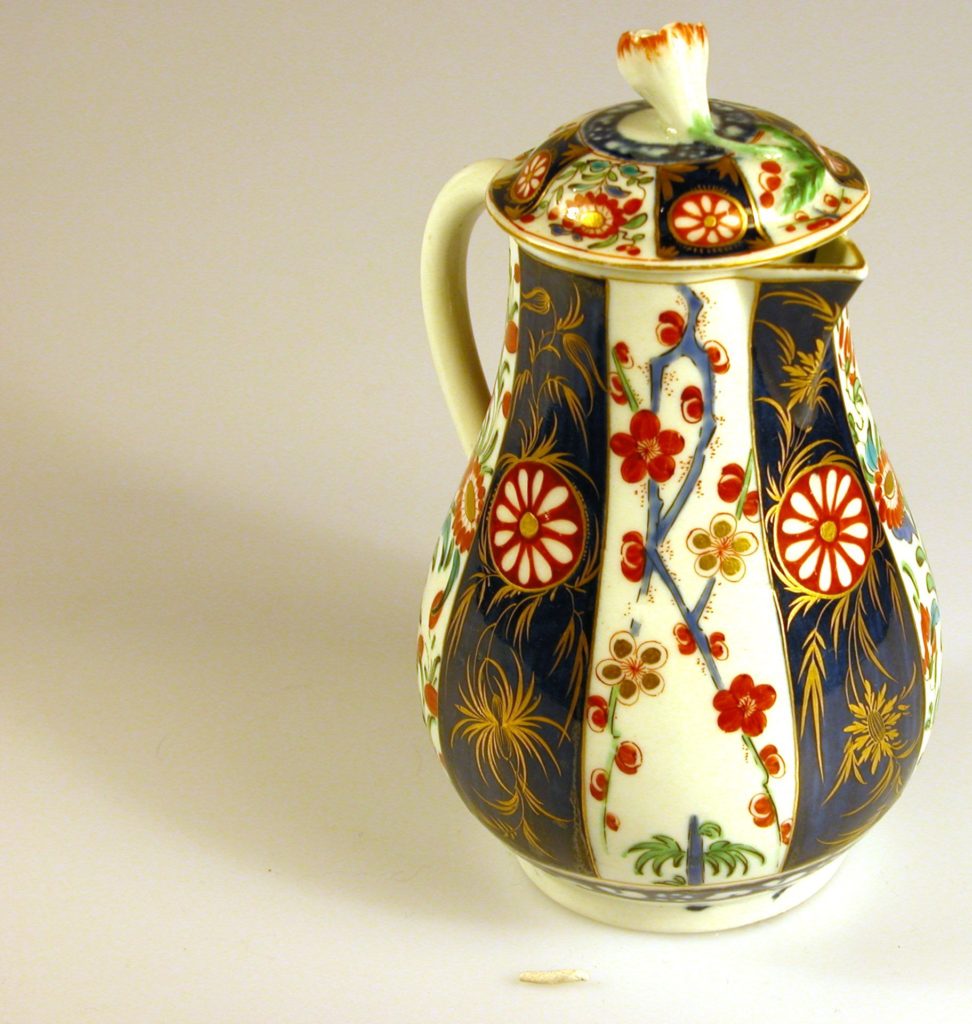

Milk jug with lid
18th century, Worcester
Porcelain
Bequeathed by John Irving, 1915
Reference: 5355-6
Can be found: Centre shelfColour and Pattern in Materials and Masters Collection


Milles feuilles brooches
Coloured opaque glass can be used to fill small compartments of metal objects, and is known as enamel. Decoration using tiny compartments is known as milles feuilles – French for millions of leaves.
Reference: 1995.17.1-2
Can be found: GlassLower shelf in Materials and Masters Collection
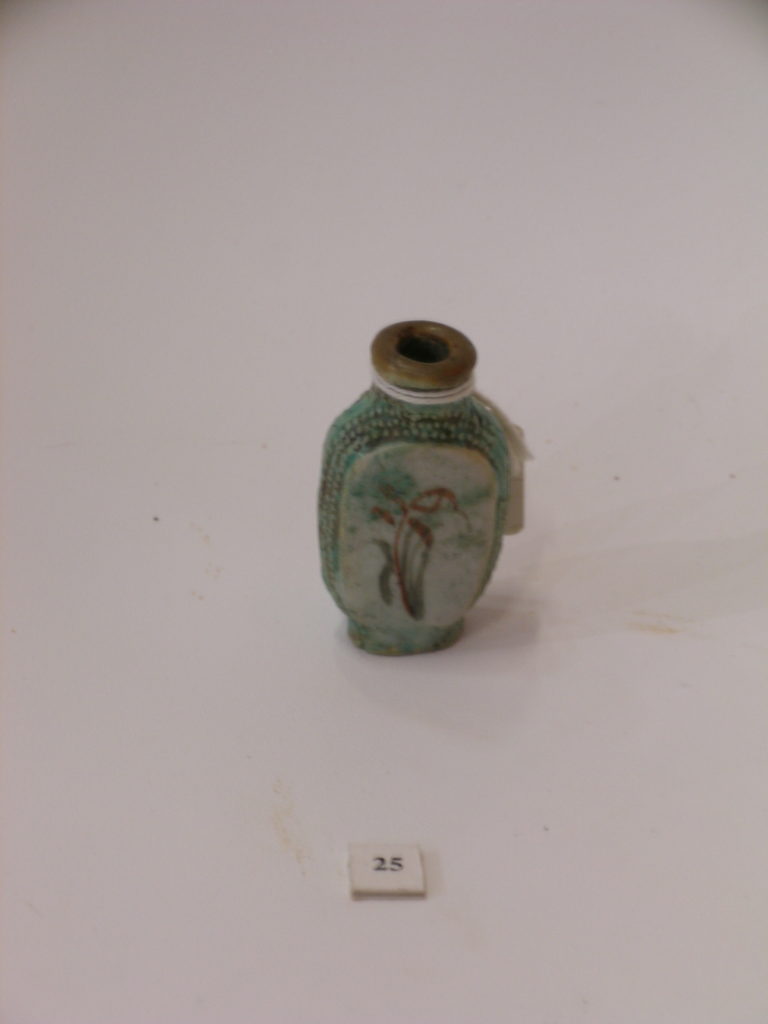

Miniature bottle
Ceramic
Reference: 6153
Can be found: Centre shelfEarth in Materials and Masters Collection
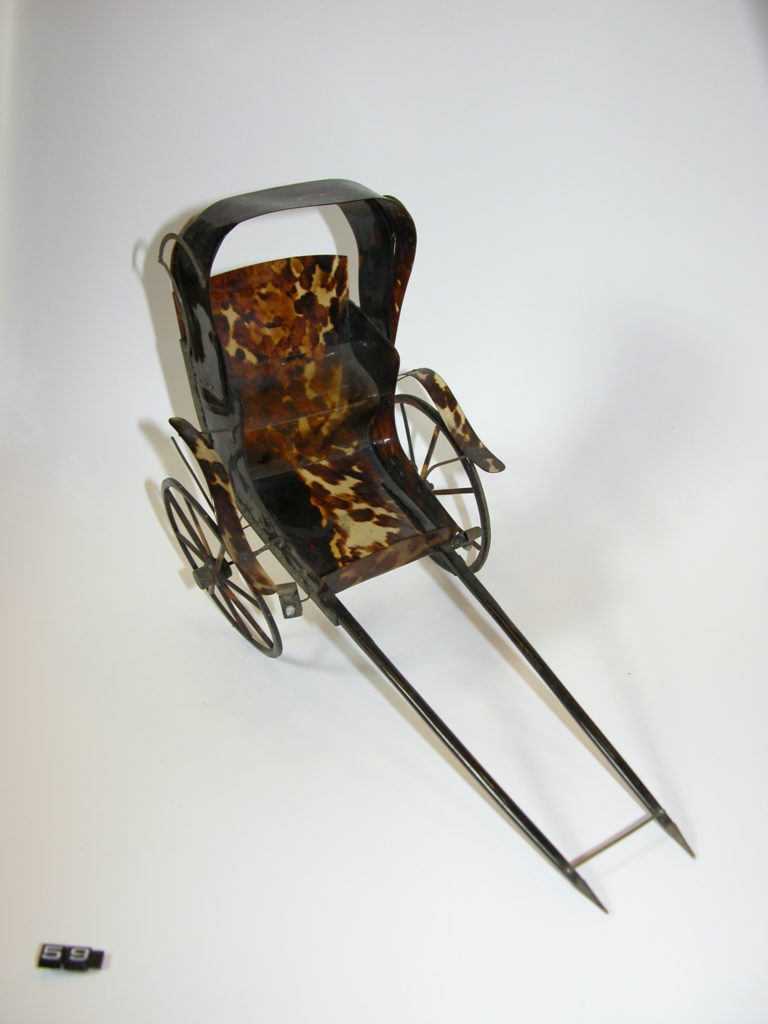

Model of a rickshaw
Tortoiseshell
Presented by Mr Wolseley, 1939
Reference: CANCM:nn
Can be found: Animal in Materials and Masters Collection
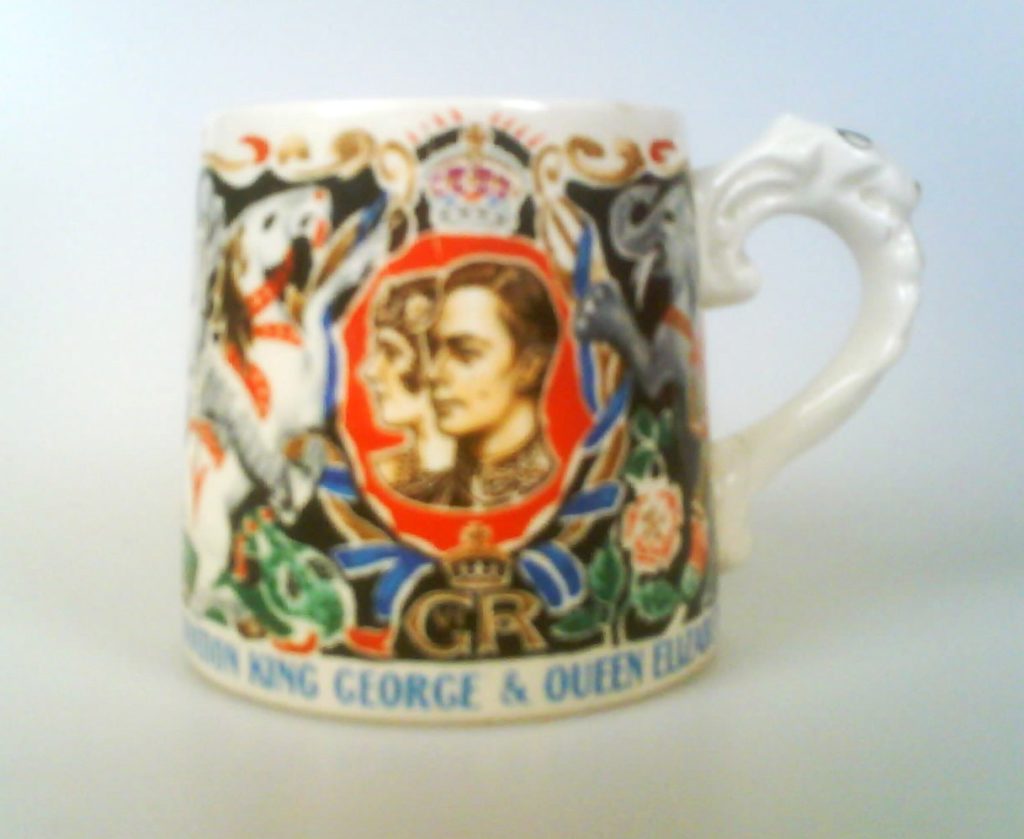

Mug commemorating coronation of George VI
Designed by Dame Laura Knight, DBE, RA Earthenware
Reference: 2009.830
Can be found: Centre shelfEarth in Materials and Masters Collection
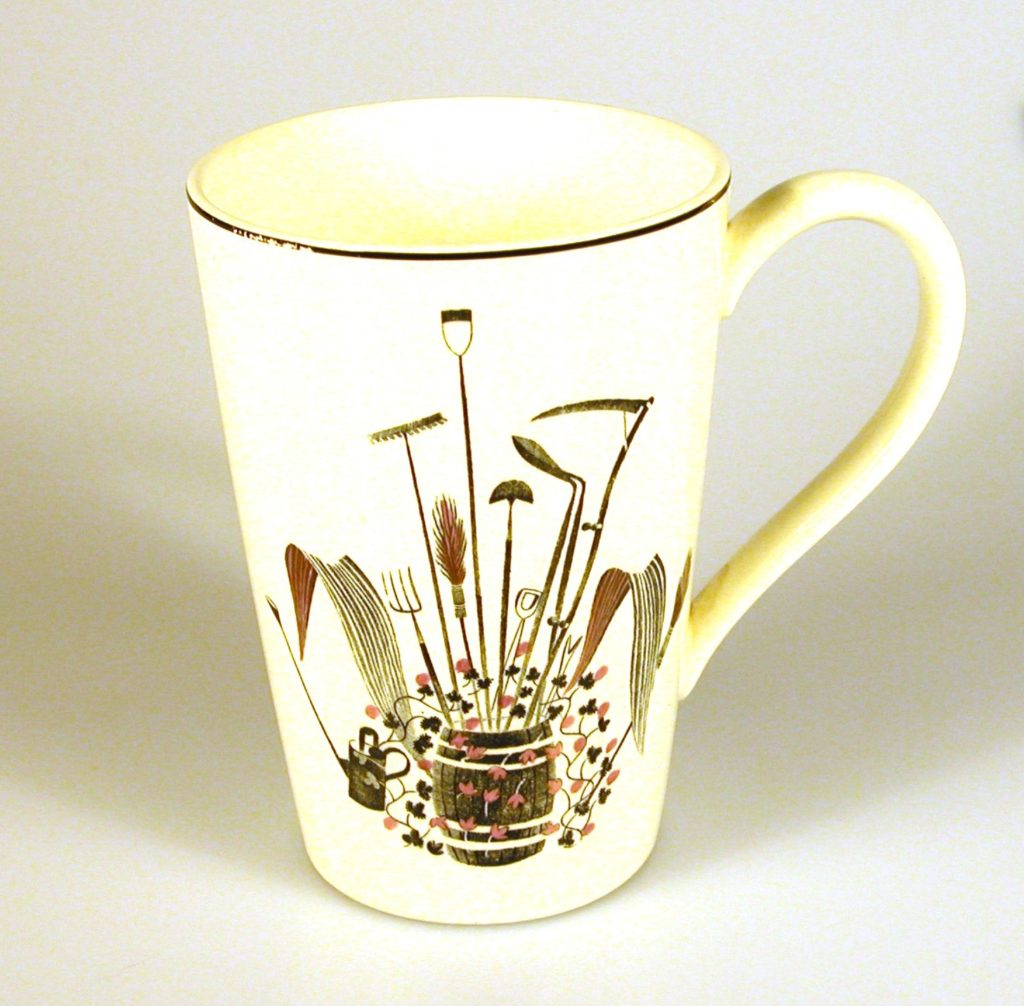

Mug with image of garden tools
Wedgwood
Designed by Eric Ravilious.
Presented by Hilary Alpin, 2003
Reference: 2003.492
Can be found: EarthTop shelf in Materials and Masters Collection
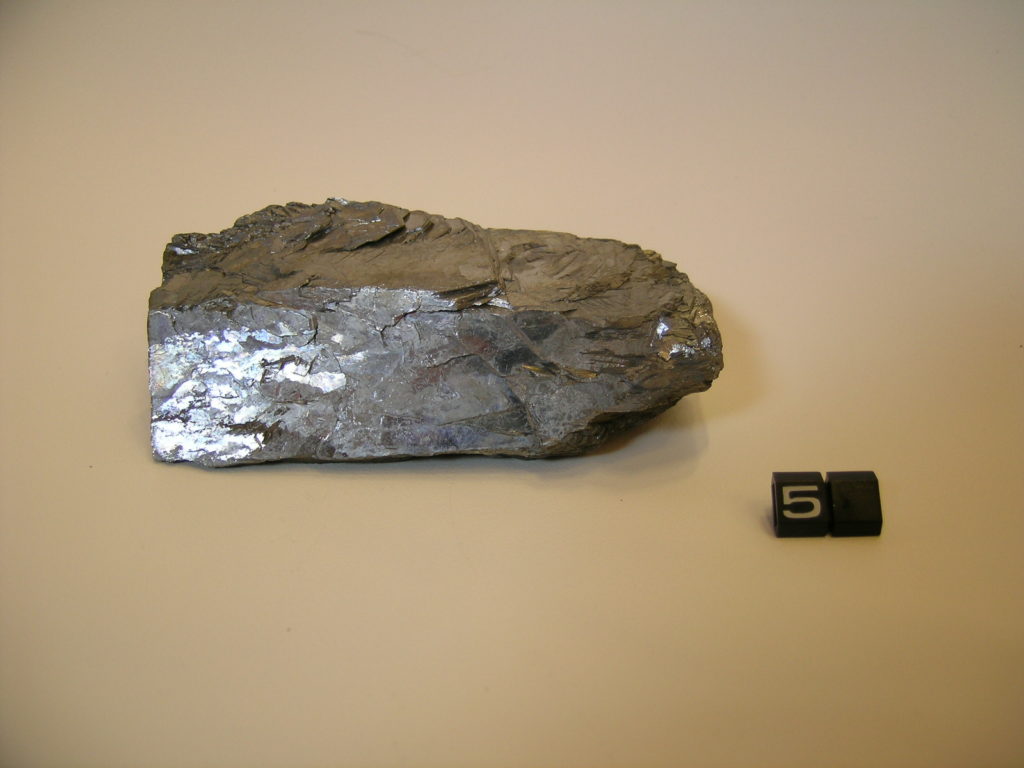

Native antimony
Smelted with surface bubbles
Reference: 2000.187.1
Can be found: Metal in Materials and Masters Collection
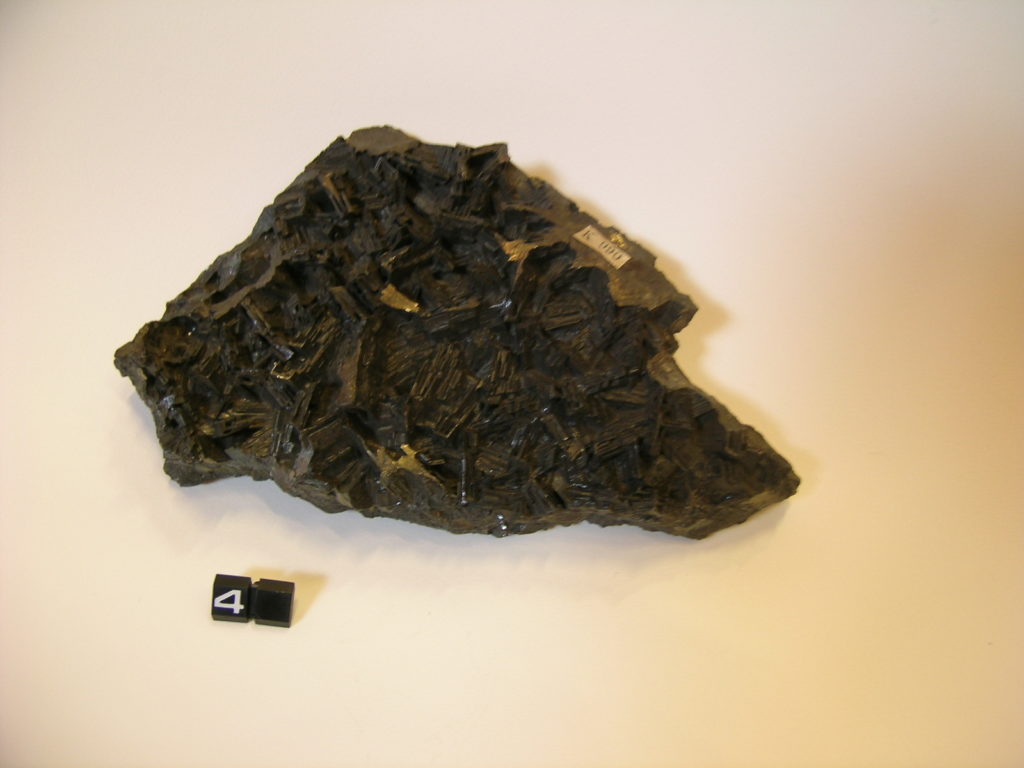

Native bismuth
Reference: K 990
Can be found: Metal in Materials and Masters Collection
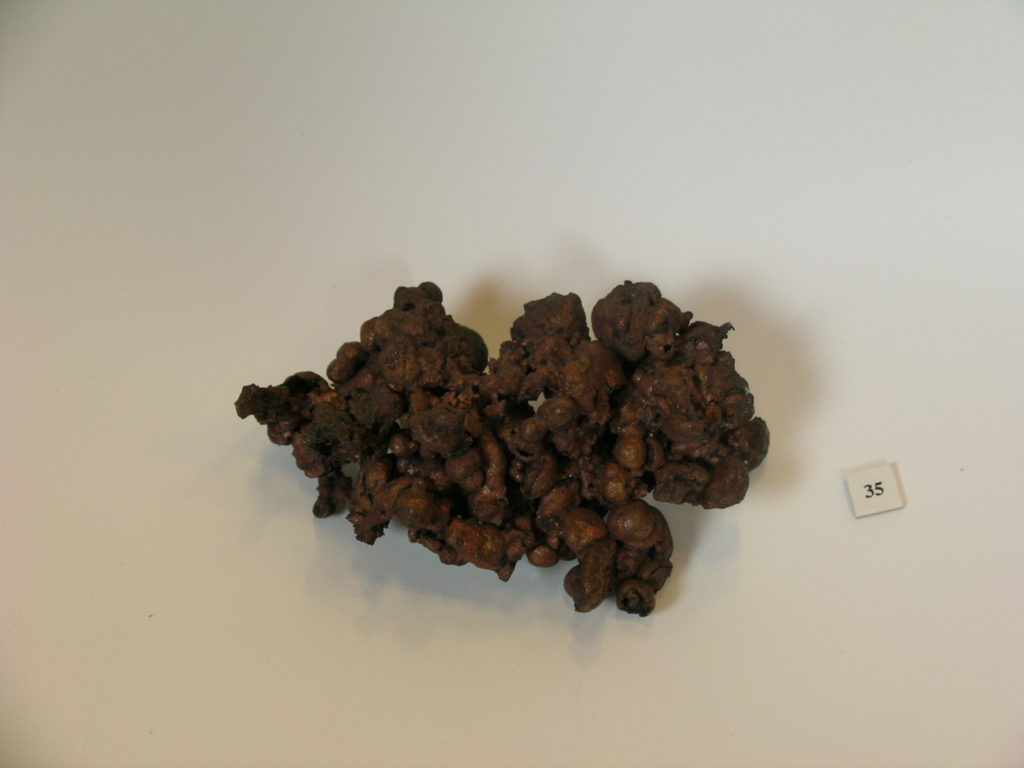

Native Copper
Copper in its natural state.
Reference: 2000.67
Can be found: Metal in Materials and Masters Collection


Native copper partly coated with Malachite
From Cornwall
Reference: D1.A.1
Can be found: Metal in Materials and Masters Collection
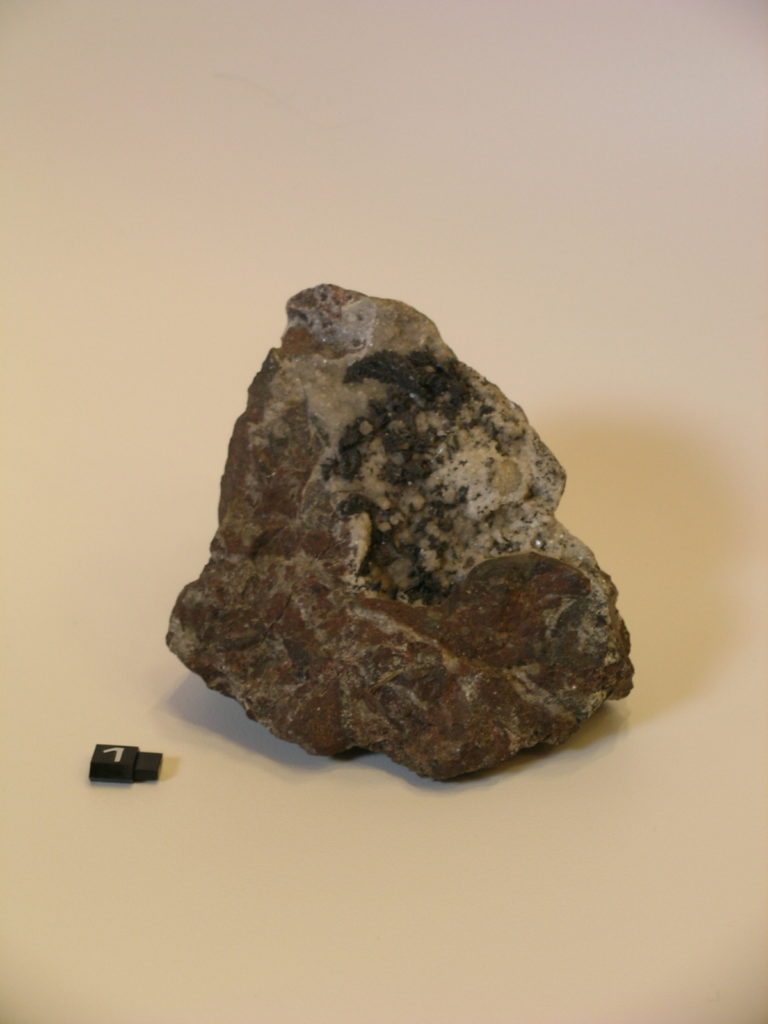

Native Silver
Small branches or dendritic crystals on calcite from Kongsberg, Norway.
Reference: D1.A6
Can be found: Metal in Materials and Masters Collection
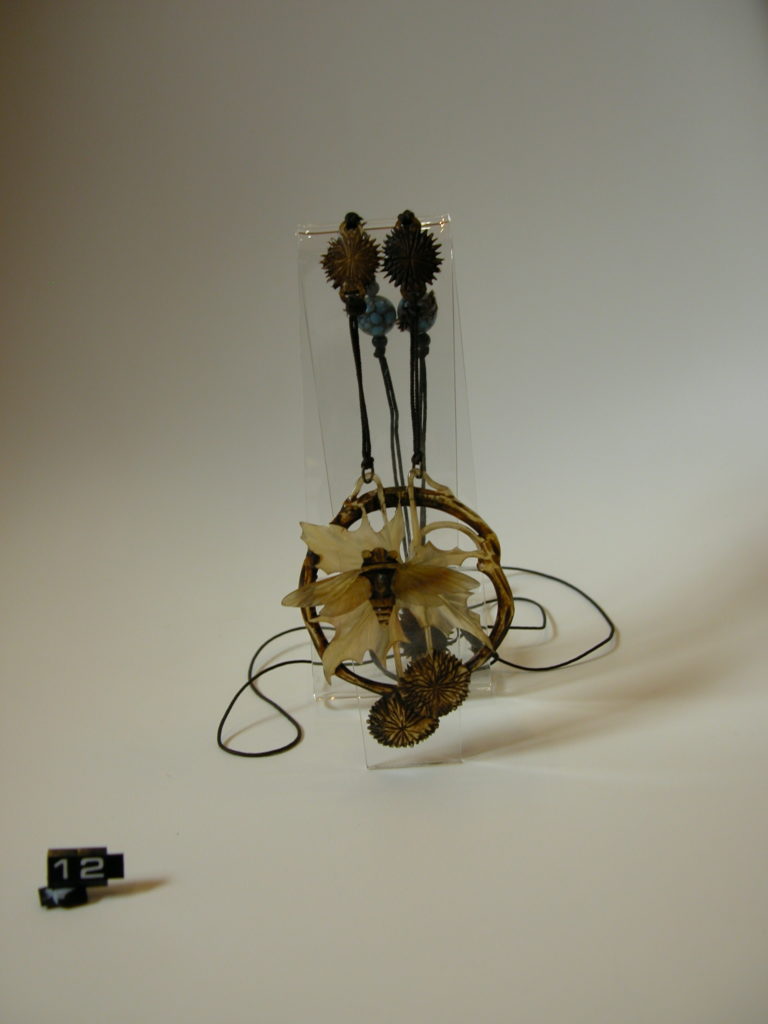

Necklace
1890s-1910s
Horn
Bequeathed by Miss Frances Aitken, 1992
Reference: 1992.1.357
Can be found: Animal in Materials and Masters Collection
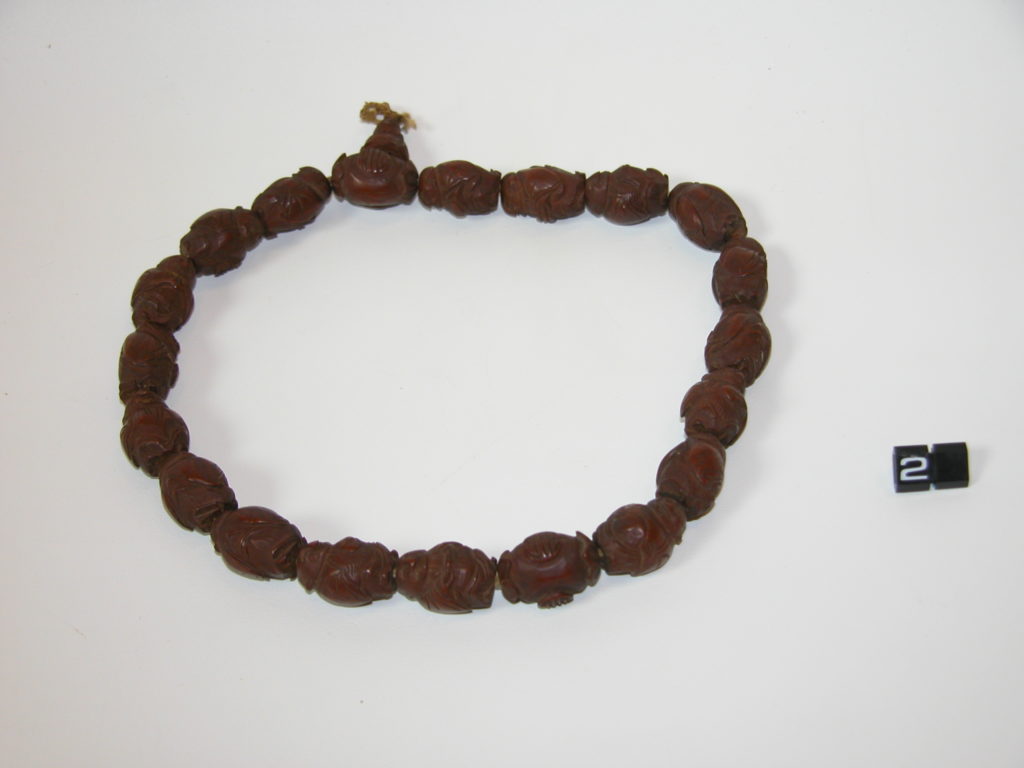

Necklace of carved beads Nut shells
Franks Collection
Reference: 4461
Can be found: Vegetable in Materials and Masters Collection


Nest of a Long-tailed tit
Bequeathed by William Oxenden Hammond, 1903
Reference: 544H
Can be found: Vegetable in Materials and Masters Collection
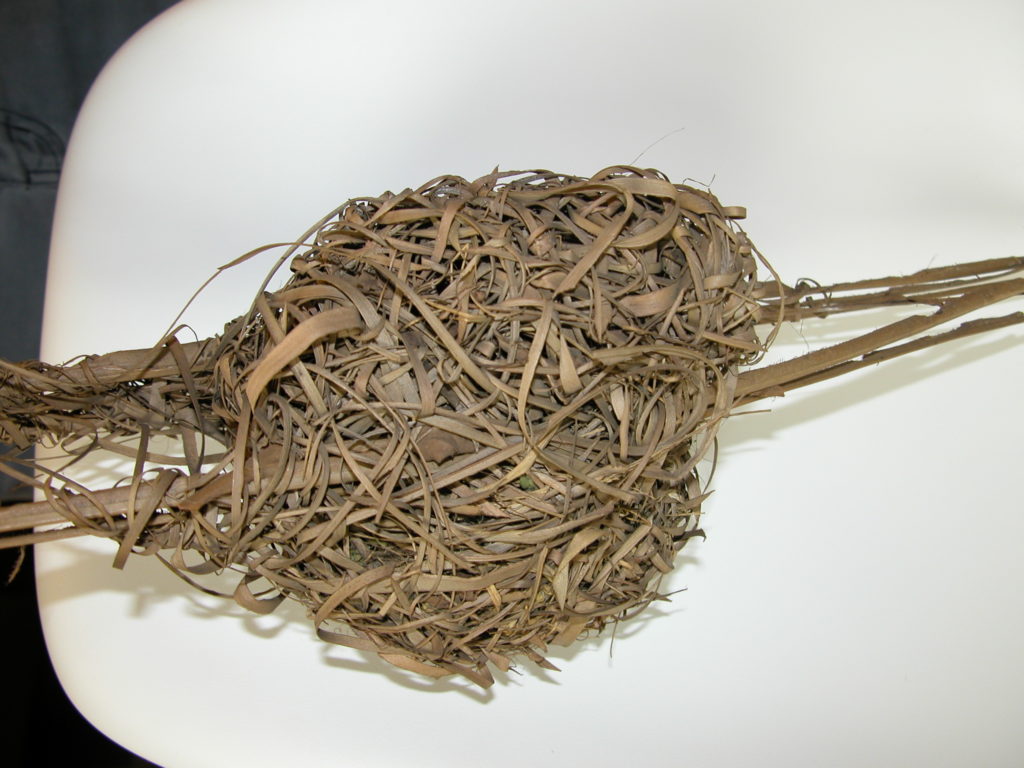

Nest of a Reed Warbler
From East Africa
Presented by Dr Brennan, 1912
Reference: 2000.103.1
Can be found: Vegetable in Materials and Masters Collection


Nest of a Sun Bird, also known as a Honey Eater
West Africa
Sun birds construct their nests of fibre found in the bark of palm trees and line them with soft filaments of flowers, cotton and other fine vegetable material.
Presented by Dr C H Brennan, 1912(?)
Reference: 2000.104
Can be found: Vegetable in Materials and Masters Collection
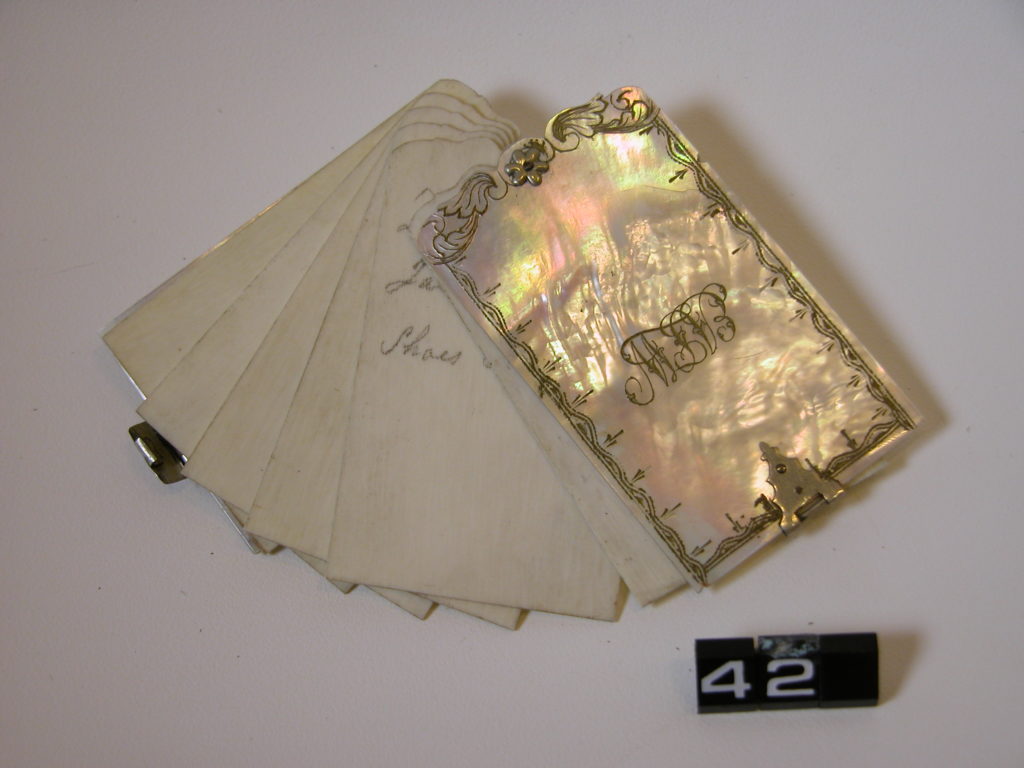

Notebook with mother-of-pearl cover
Bequeathed by Miss Frances Aitken, 1992
Reference: 1992.1.119
Can be found: Animal in Materials and Masters Collection


Ochre
A sandstone whose reddish colour is due to oxidised iron content.
Reference: 2002.128
Can be found: Metal in Materials and Masters Collection
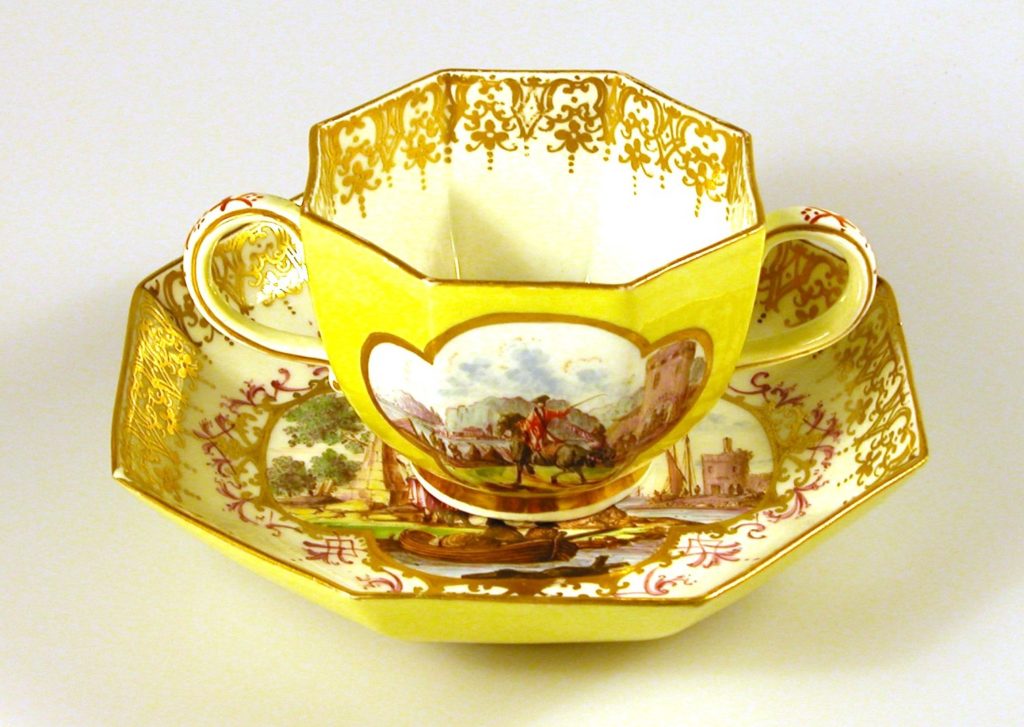

Octagonal cup and saucer with yellow ground and coastal scene 18th century, Meissen
Porcelain
Bequeathed by John Irving, 1915
Reference: 5402
Can be found: BaseColour and Pattern in Materials and Masters Collection


Olive green conical glass bottle
Reference: CANCM:nn
Can be found: BaseGlass in Materials and Masters Collection


One of a pair of open trellis baskets
18th century, Worcester
Porcelain
Bequeathed by John Irving, 1915
Reference: 5357
Can be found: Centre shelfEarth in Materials and Masters Collection
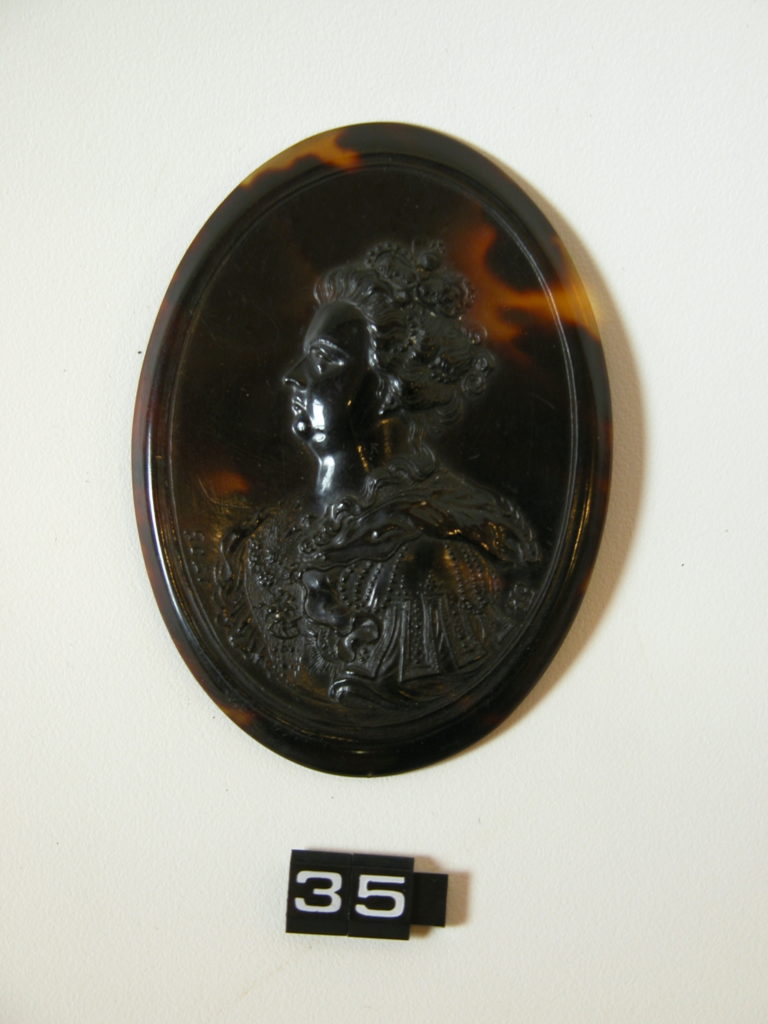

Oval medallion with portrait of Queen Anne
Tortoiseshell
Carved by J Obrisset
Presented by Lieutenant Colonel Copeland
Reference: 1800
Can be found: Animal in Materials and Masters Collection
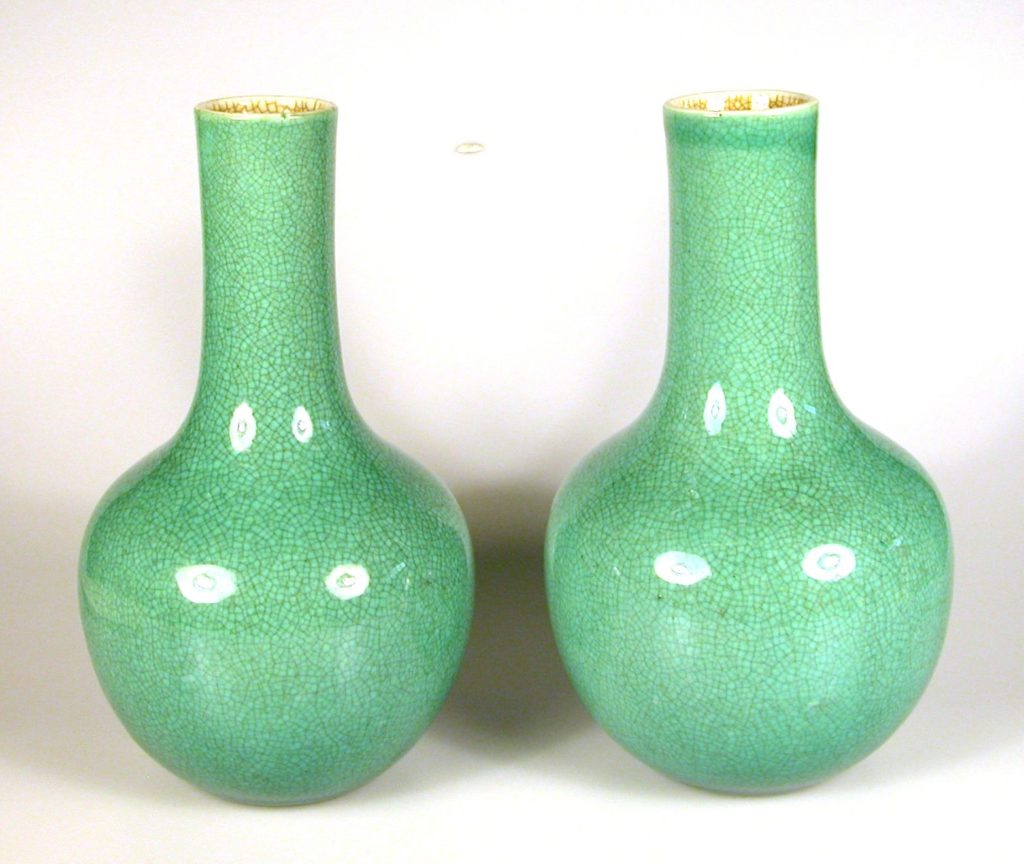

Pair of apple green crackle bottles China
Bequeathed by John Irving, 1915
Reference: 5542, 5543
Can be found: Colour and PatternLower shelf in Materials and Masters Collection


Pair of blue Jasperware pots with lids, decorated with classical scenes
Late 18th century
Wedgwood
Bequeathed by John Irving, 1915
Reference: 5596, 5597
Can be found: Colour and PatternLower shelf in Materials and Masters Collection


Pair of Jasperware oviform shaped vases decorated with Dancing Hours
Bequeathed by John Irving, 1915
Reference: 5310, 5311
Can be found: BaseColour and Pattern in Materials and Masters Collection
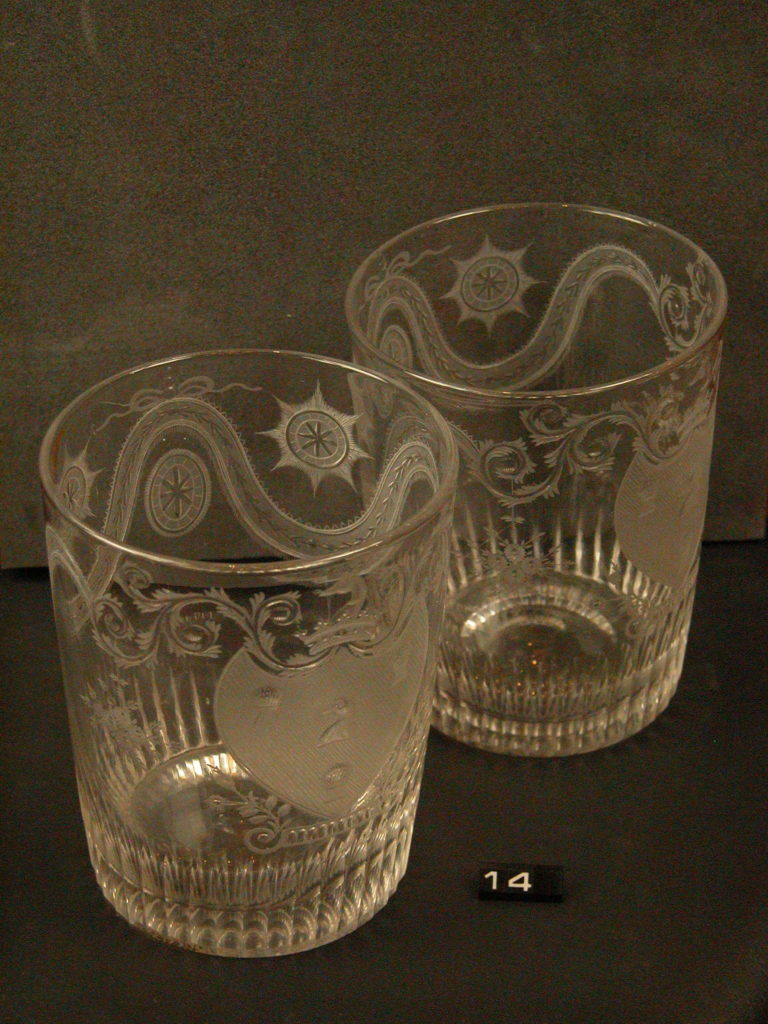

Pair of tumblers
19th century
Engraved with coats of arms and symbols.
Presented by Miss B Street from her brother’s collection, 1933
Reference: 5587, 5588
Can be found: GlassTop shelf in Materials and Masters Collection


Pair of vases
1814-17, Swansea
Porcelain
Finely painted with birds amongst roses on one side and groups of flowers in baskets on the other, the gilded handles in the shape of rams heads.
Bequeathed by John Irving, 1915
Reference: 5306, 5307
Can be found: BaseColour and Pattern in Materials and Masters Collection


Pair of vases
Perhaps Jacob Petit, France
Bequeathed by John Irving, 1915
Reference: 5432
Can be found: EarthTop shelf in Materials and Masters Collection
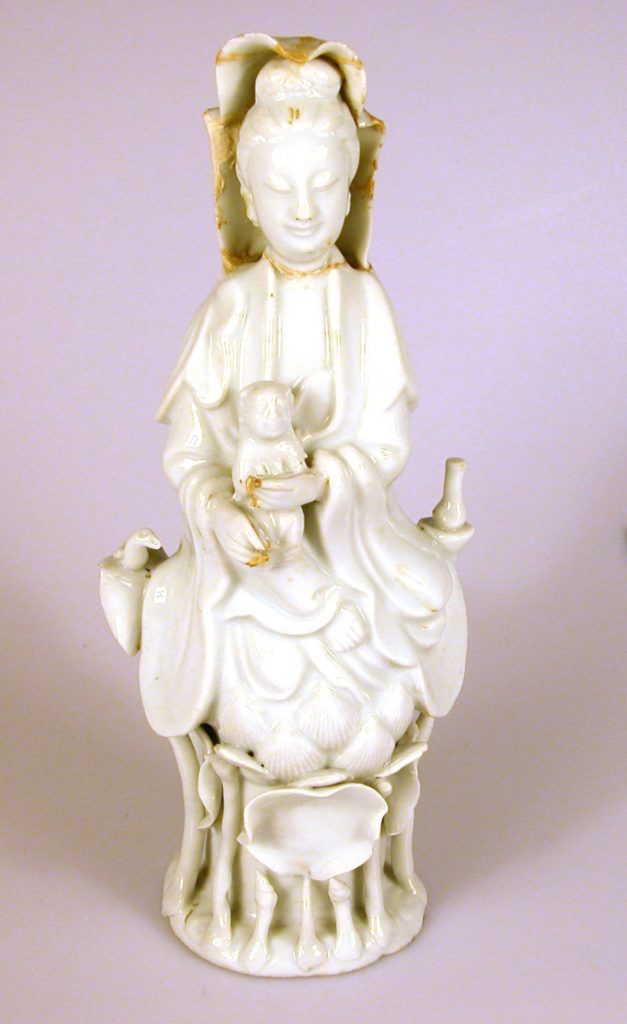

Pair of white-glazed figures China
Porcelain
Presented by Miss B. Street from her brother’s collection, 1933
Reference: 7780, 8629
Can be found: BaseColour and Pattern in Materials and Masters Collection


Pale green glass bottle
Reference: 899
Can be found: BaseGlass in Materials and Masters Collection


Part of the neck of a large Roman bottle
Reference: 821
Can be found: BaseGlass in Materials and Masters Collection








Penknife with bone handle
Bequeathed by Miss Frances Aitken, 1992
Reference: 1992.1.350
Can be found: Animal in Materials and Masters Collection








Penknife with mother-of-pearl handle
Bequeathed by Miss Frances Aitken, 1992
Reference: 1992.1.148
Can be found: Animal in Materials and Masters Collection
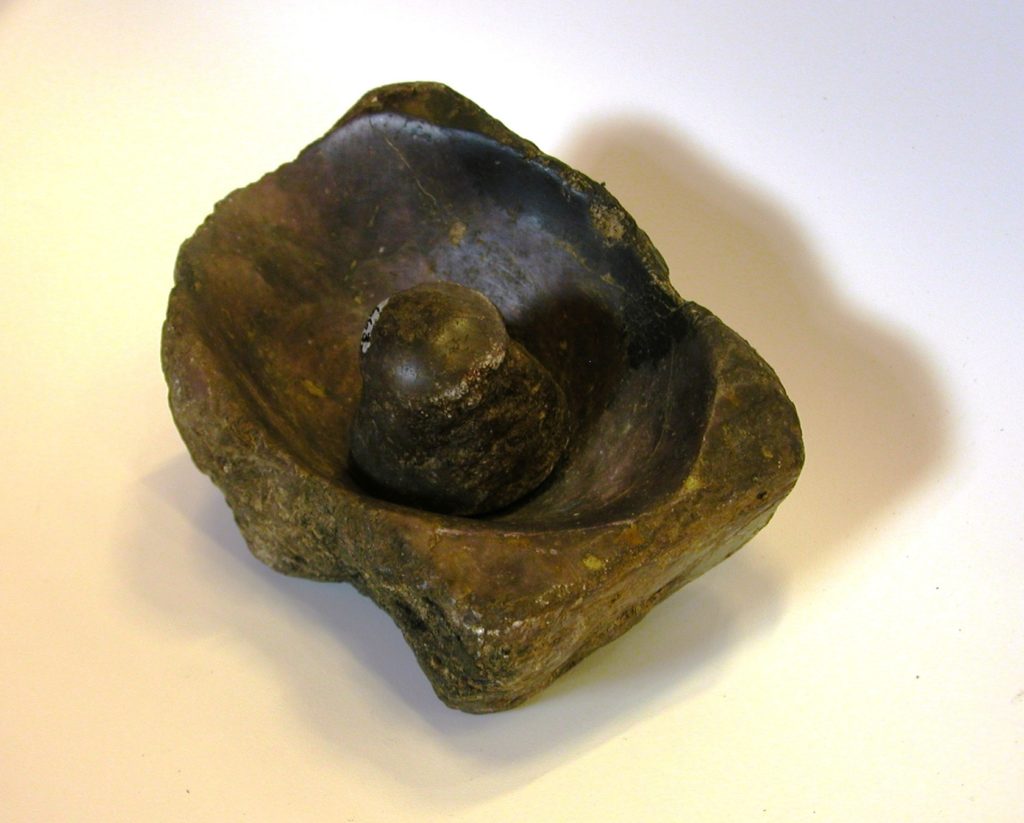

Pestle and mortar
Made of a stone that is hardwearing to continual grinding.
Reference: 663
Can be found: Stone in Materials and Masters Collection
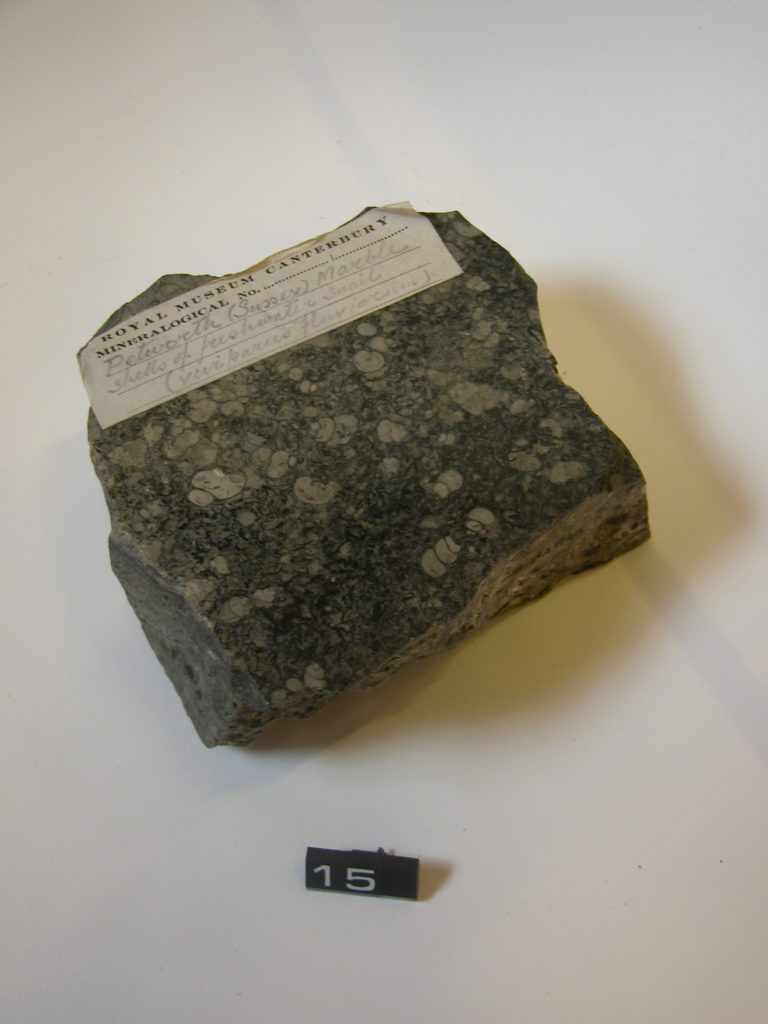

Petworth marble
This stone includes the fossil shells of freshwater snails. It was popular for decorative use in buildings and was called marble, although not really marble in the geological sense.
Reference: A1142
Can be found: Stone in Materials and Masters Collection
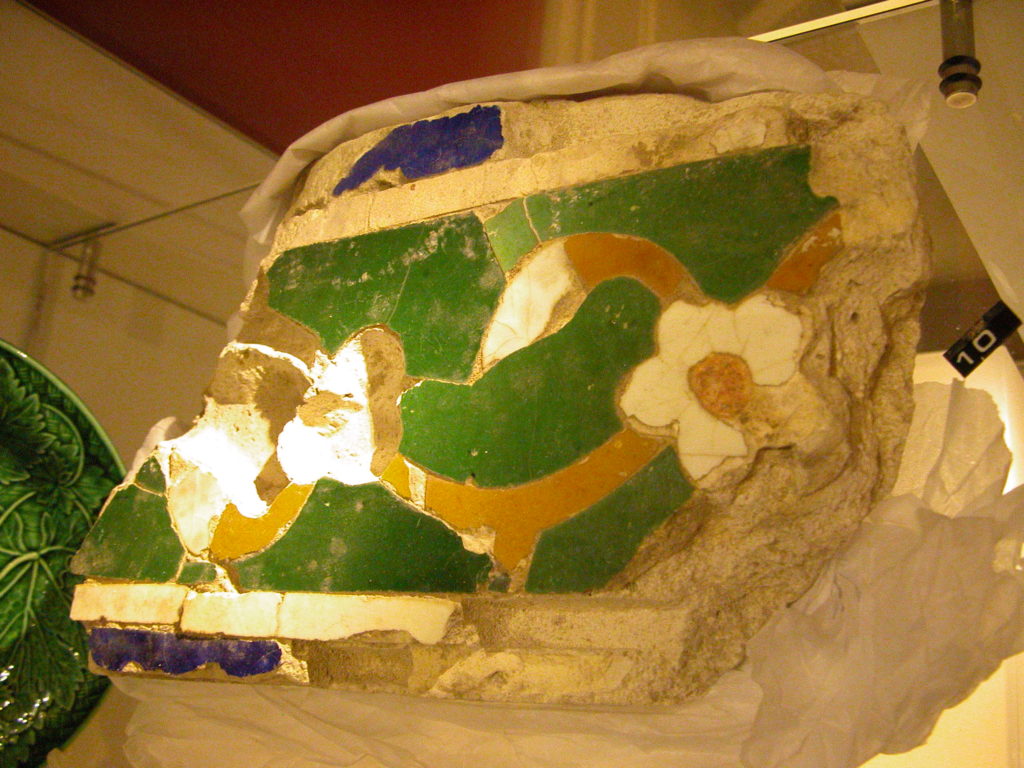

Piece of building decoration with coloured glaze insets
Probably Turkish or Spanish
From the floor or wall of an unknown building
Reference: CANCM:nn
Can be found: BaseColour and Pattern in Materials and Masters Collection
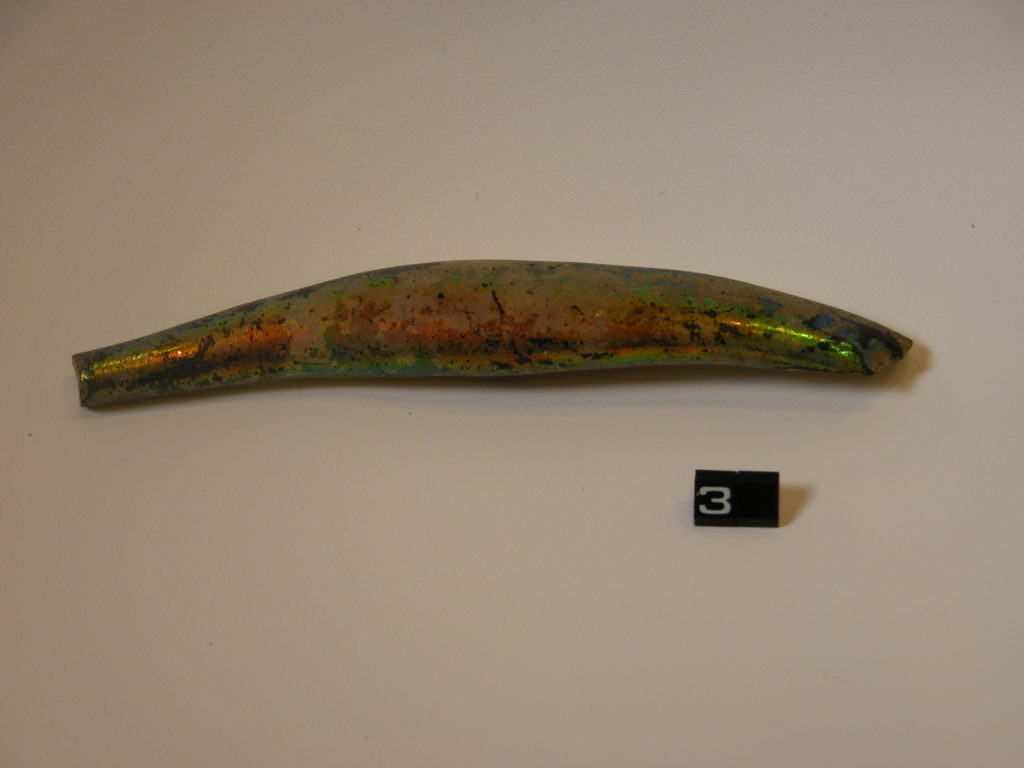

Piece of thick iridescent glass
Reference: 2500
Can be found: BaseGlass in Materials and Masters Collection


Piece of tortoiseshell
Tortoiseshell
This piece of tortoiseshell belonged to the donor’s brother, who was an optician with Clement Clarks in Canterbury from the 1920s to 1940s. It was used in a window display advertising tortoiseshell frames for spectacles.
Presented by Miss S I Robinson, 1984
Reference: 1984.1
Can be found: Animal in Materials and Masters Collection
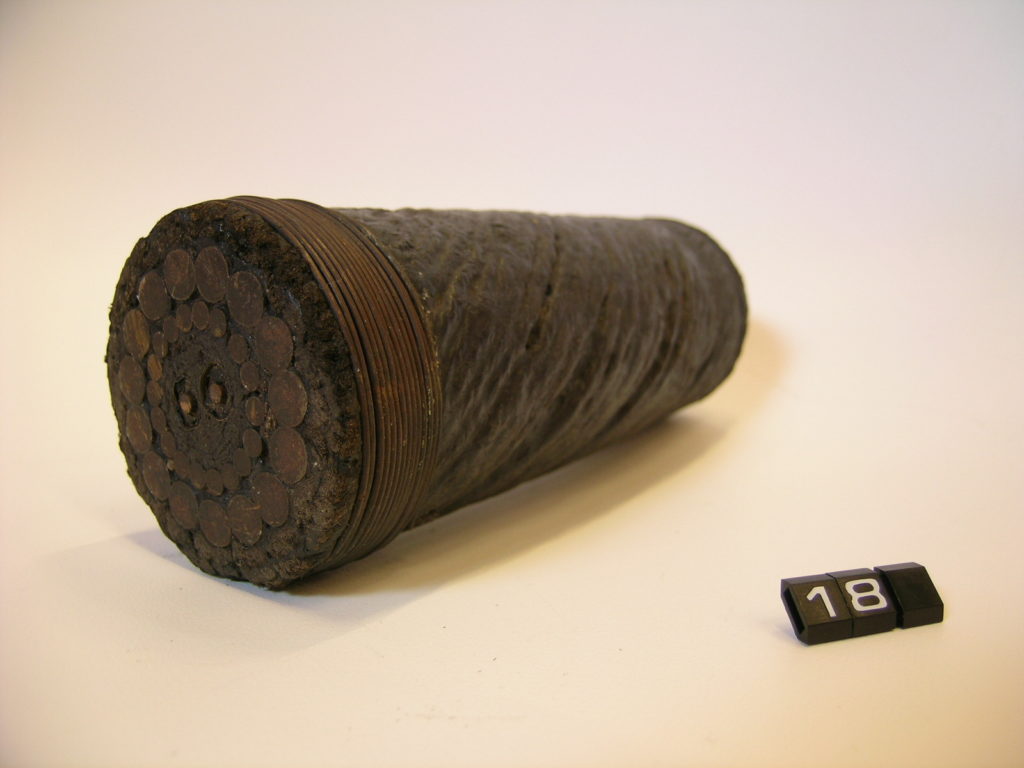

Piece of undersea communications cable
Communication across the Atlantic is by metal wires in cable like this early example.
Reference: CANCM:nn
Can be found: Metal in Materials and Masters Collection


Piece of wood from Nelson’s HMS Victory
Bequeathed by Miss Frances Aitken, 1992
Reference: 1992.1.131
Can be found: Vegetable in Materials and Masters Collection


Pilgrim badges
Pewter
Pewter – a lead tin mixture – is soft and can be pressed easily into moulds. It was used to manufacture large quantities of souvenirs like these for medieval pilgrims. The head of Becket and knight on a horse were made for pilgrims to Canterbury.
Reference: 1988.34, (nn)
Can be found: Metal in Materials and Masters Collection
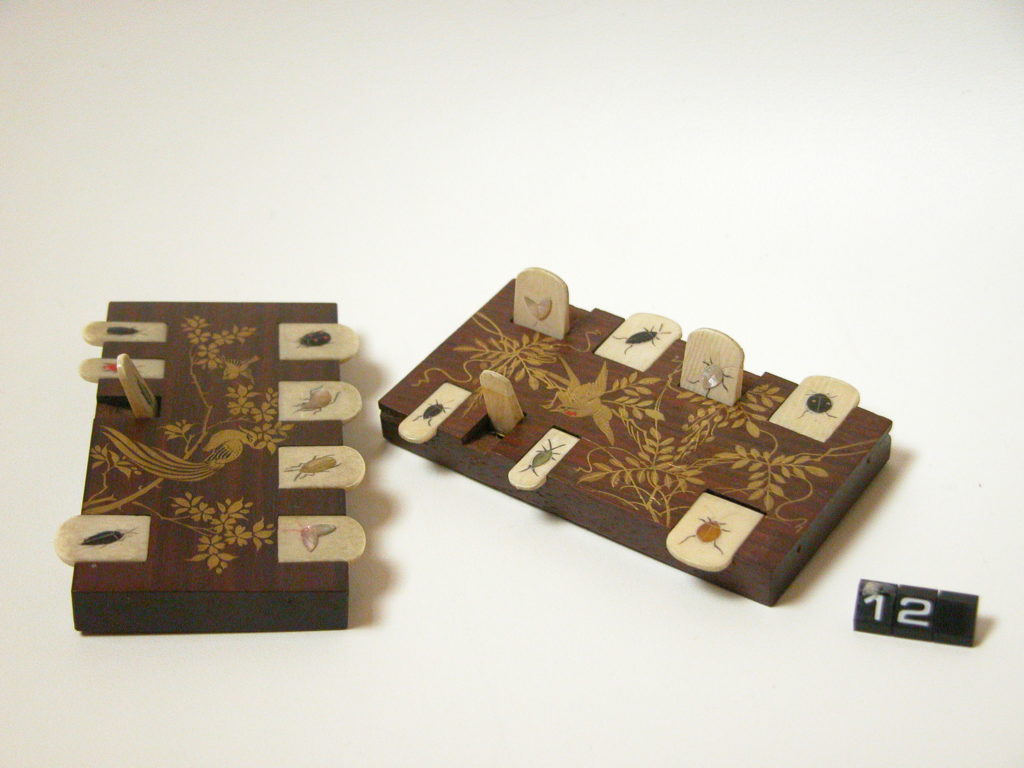

Piquet markers with bird and insect decoration
Wood and ivory
Bequeathed by Miss Frances Aitken, 1992
Reference: 1992.1.45
Can be found: Animal in Materials and Masters Collection
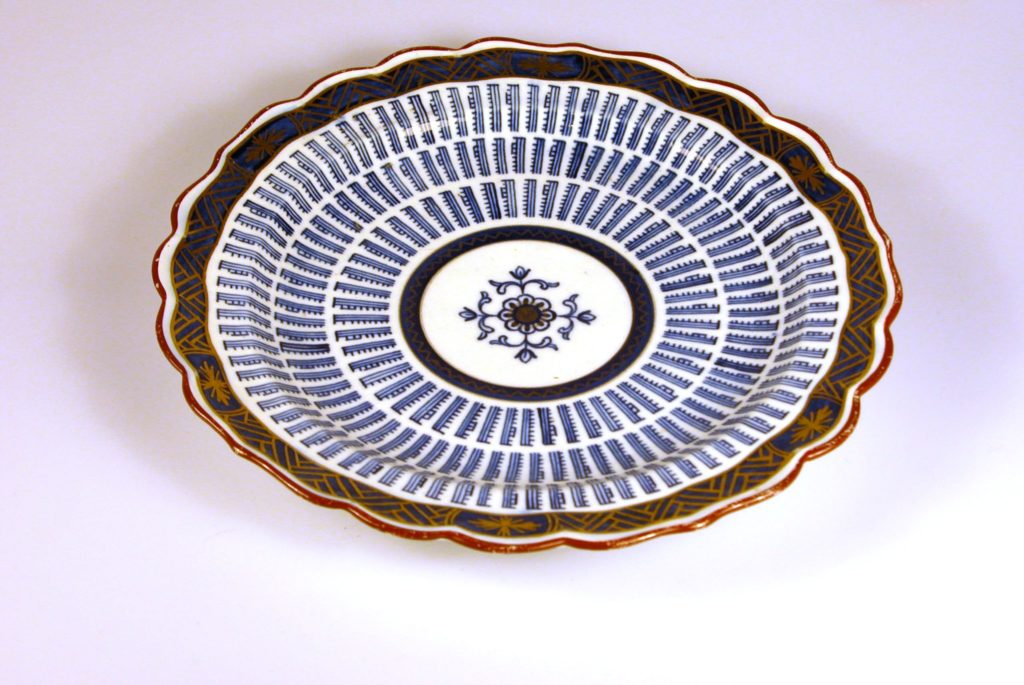

Plate with blue and gold pattern Worcester
Porcelain
Presented by Lieutenant Colonel Copeland
Reference: 53
Can be found: Centre shelfColour and Pattern in Materials and Masters Collection
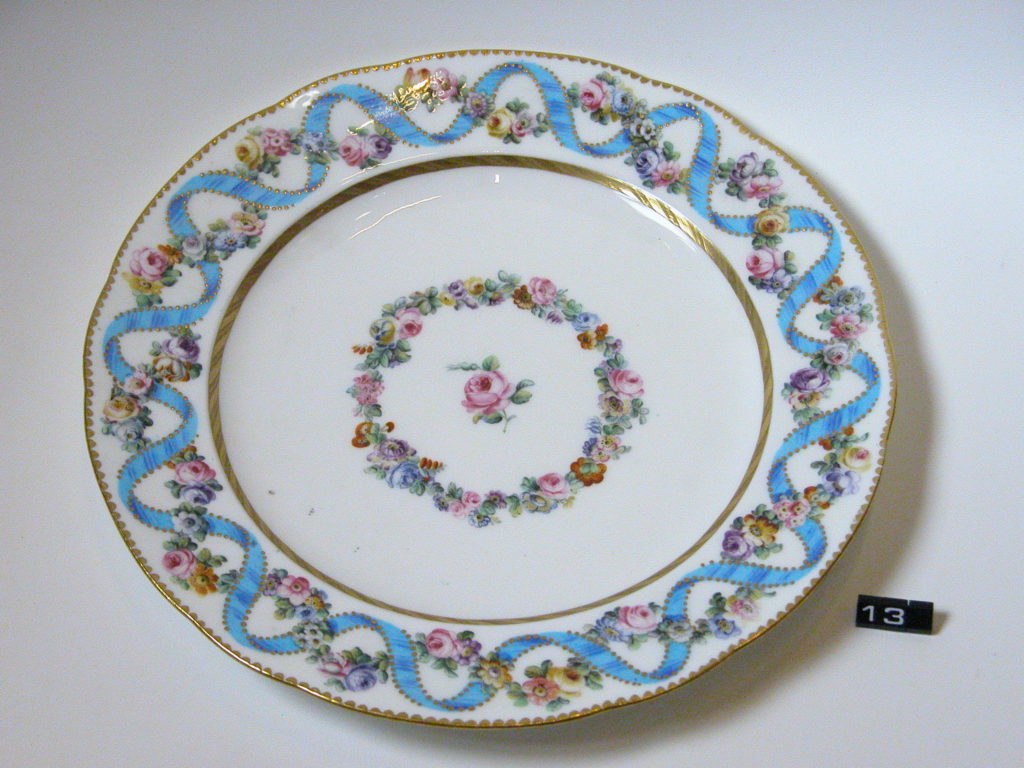

Plate with blue ribbon decoration around rim
18th century, Sevres, Paris
Porcelain
Painted by Dubois
Bequeathed by John Irving, 1915
Reference: 5499
Can be found: Centre shelfColour and Pattern in Materials and Masters Collection
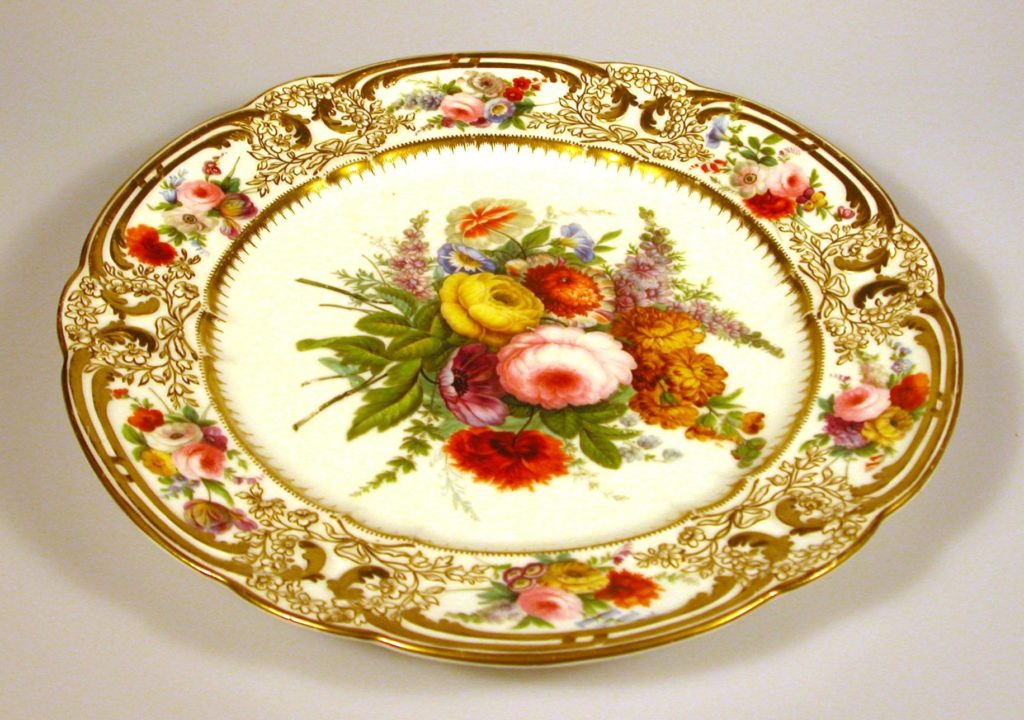

Plate with bouquet of flowers 1813-20, Nantgarw, Cardiff
Porcelain
Bequeathed by John Irving, 1915
Reference: 5300
Can be found: Colour and PatternTop shelf in Materials and Masters Collection
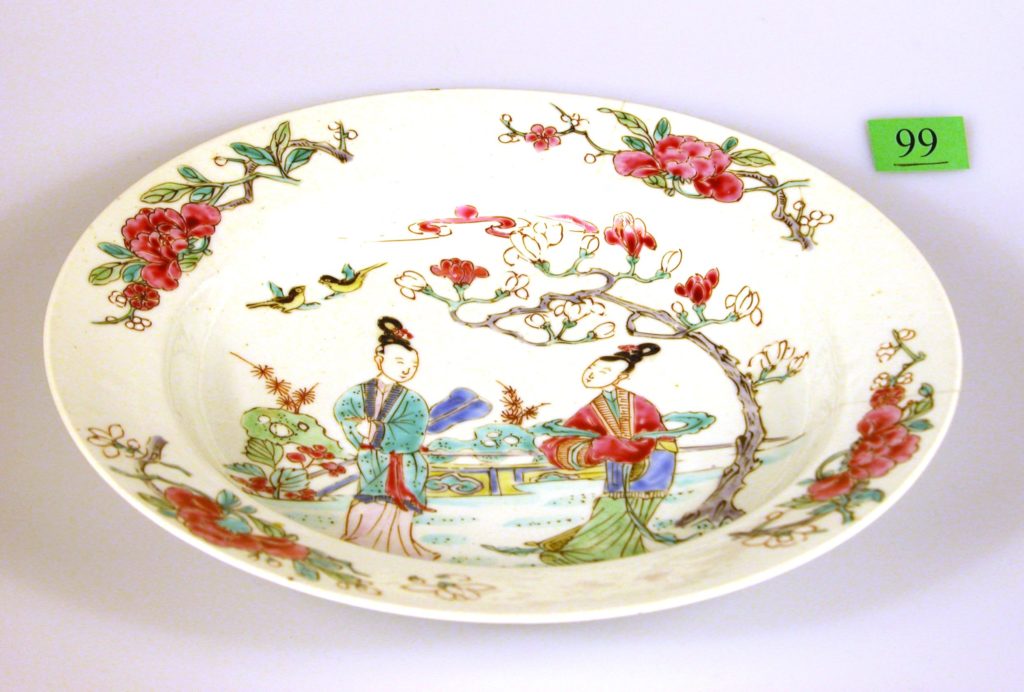

Plate with Chinese figures and flowers
China
Porcelain
Type of colour and pattern known as ‘famille rose’
Reference: 5552
Can be found: Colour and PatternLower shelf in Materials and Masters Collection
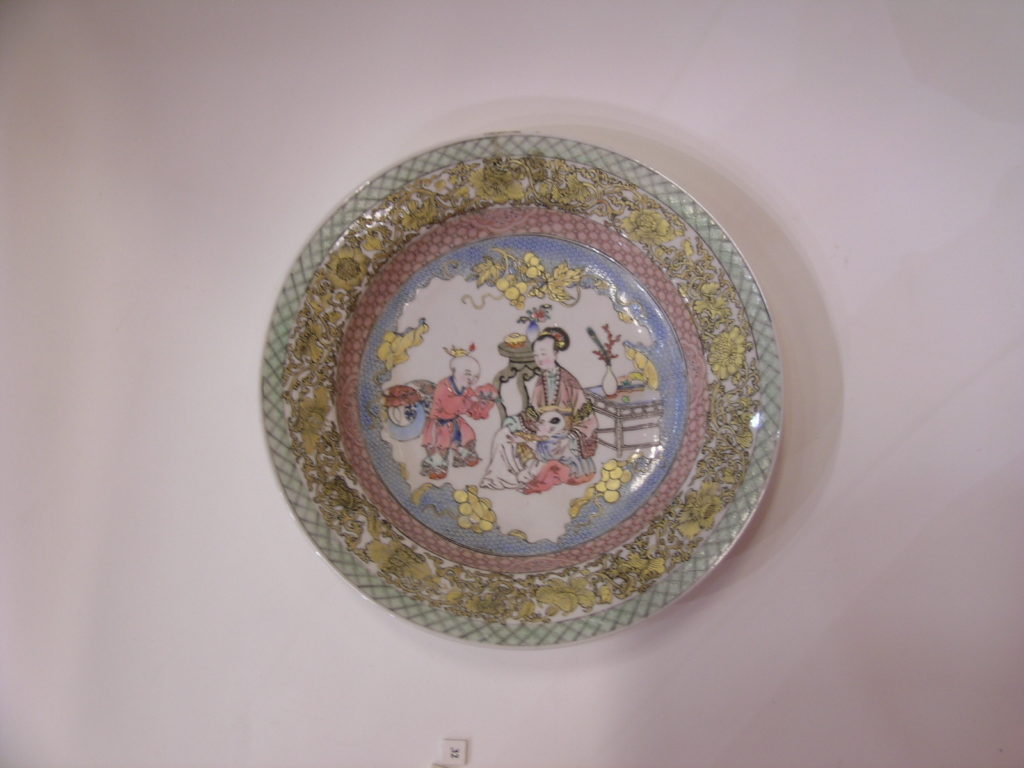

Plate with Chinese figures Porcelain
Reference: CANCM:nn
Can be found: EarthTop shelf in Materials and Masters Collection
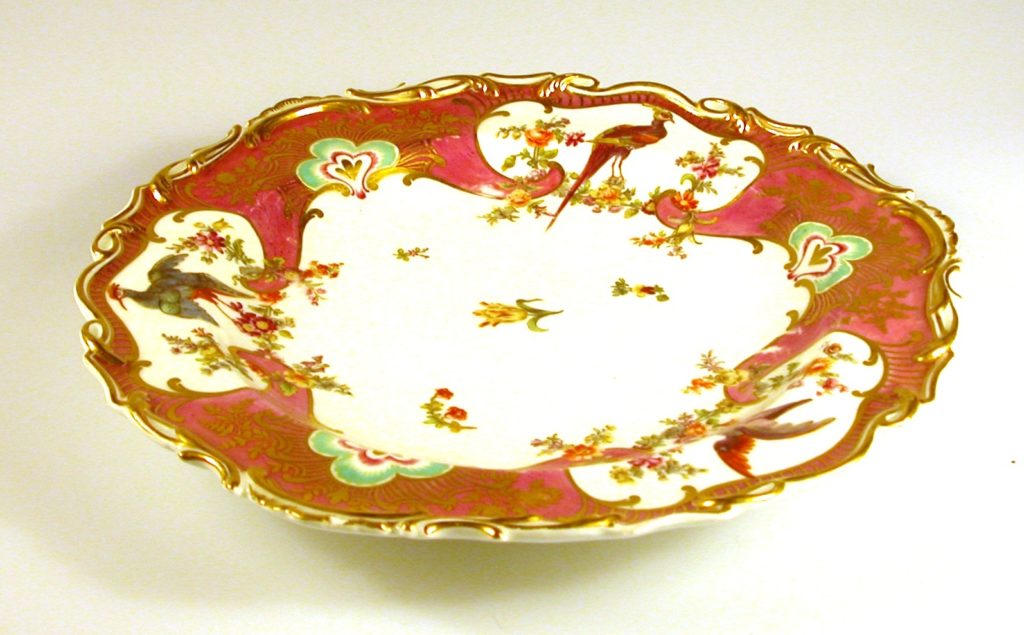

Plate with decoration of birds and flowers
1745, Chelsea
Porcelain
Bequeathed by John Irving, 1915
Reference: 5278
Can be found: Colour and PatternLower shelf in Materials and Masters Collection
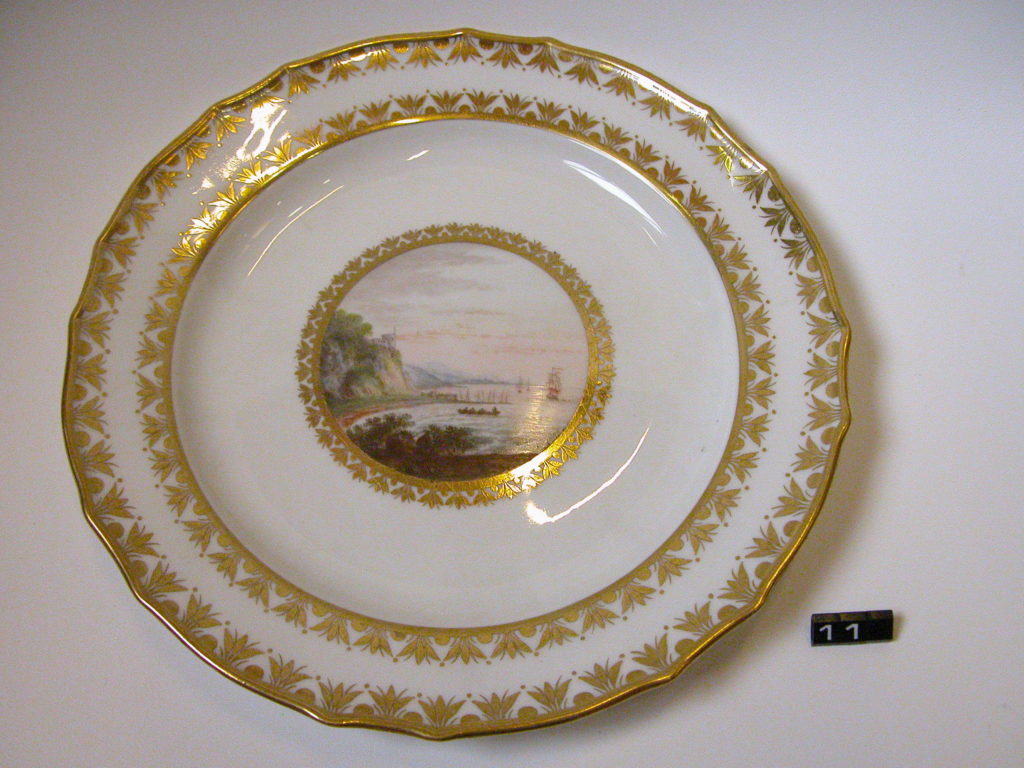

Plate with gilded rim and painted view ‘Near Kinghorn, Fifeshire’ Early 18th century, Derby
Porcelain
Painted by Zacariah Boreman
Bequeathed by John Irving, 1915
Reference: 5295
Can be found: Colour and PatternLower shelf in Materials and Masters Collection
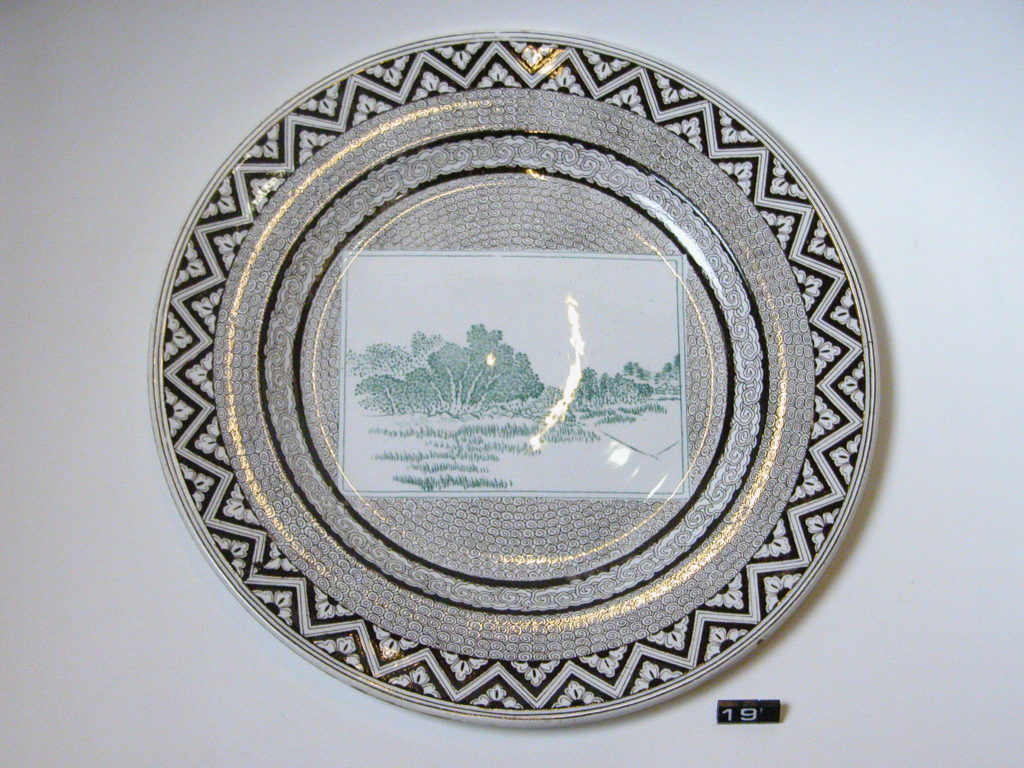

Plate with green and black decoration
Reference: CANCM:nn
Can be found: Colour and PatternTop shelf in Materials and Masters Collection
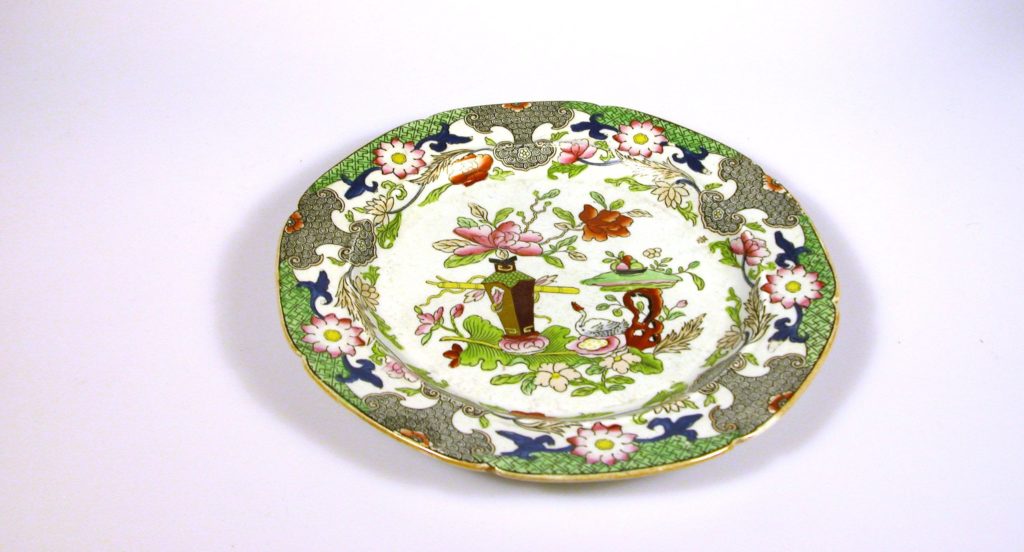

Plate with oriental design Probably Masons
Ironstone porcelain
Bequeathed by John Irving, 1915
Reference: 5764
Can be found: Colour and PatternLower shelf in Materials and Masters Collection
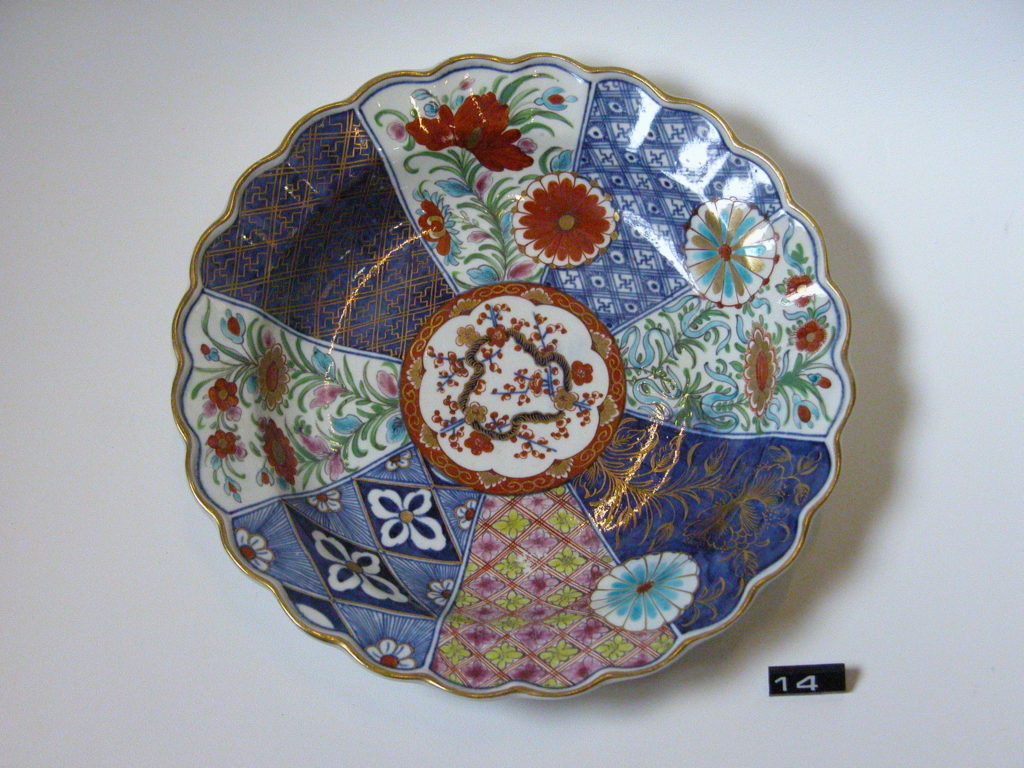

Plate with patterned segments in Japanese style
18th century, Worcester
Bequeathed by John Irving, 1915
Reference: 5329
Can be found: Centre shelfColour and Pattern in Materials and Masters Collection
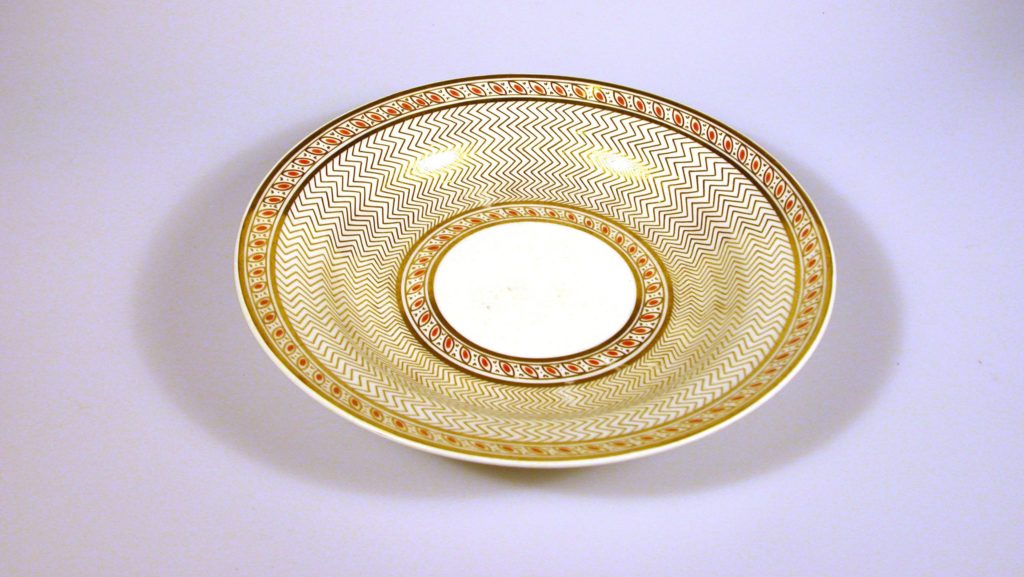

Plate with pink and gilded decoration
Porcelain
Early 19th century, Minton
Reference: 10346.2
Can be found: Colour and PatternLower shelf in Materials and Masters Collection


Pocket watches and keys
One of the watches has its casing removed to show the inner clock mechanism; another sits in a wooden pocket watch stand.
Reference: CANCM:nn
Can be found: Metal in Materials and Masters Collection
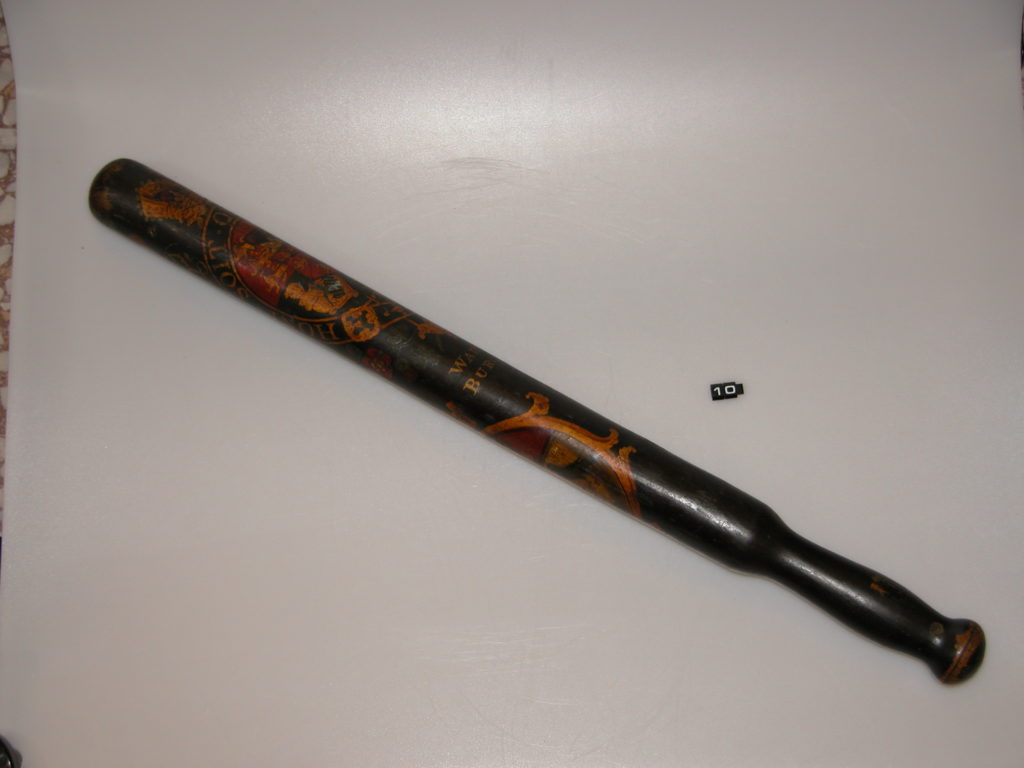

Police truncheon with Canterbury coat of arms
19th century
Wood
Reference: CANCM:nn
Can be found: Vegetable in Materials and Masters Collection
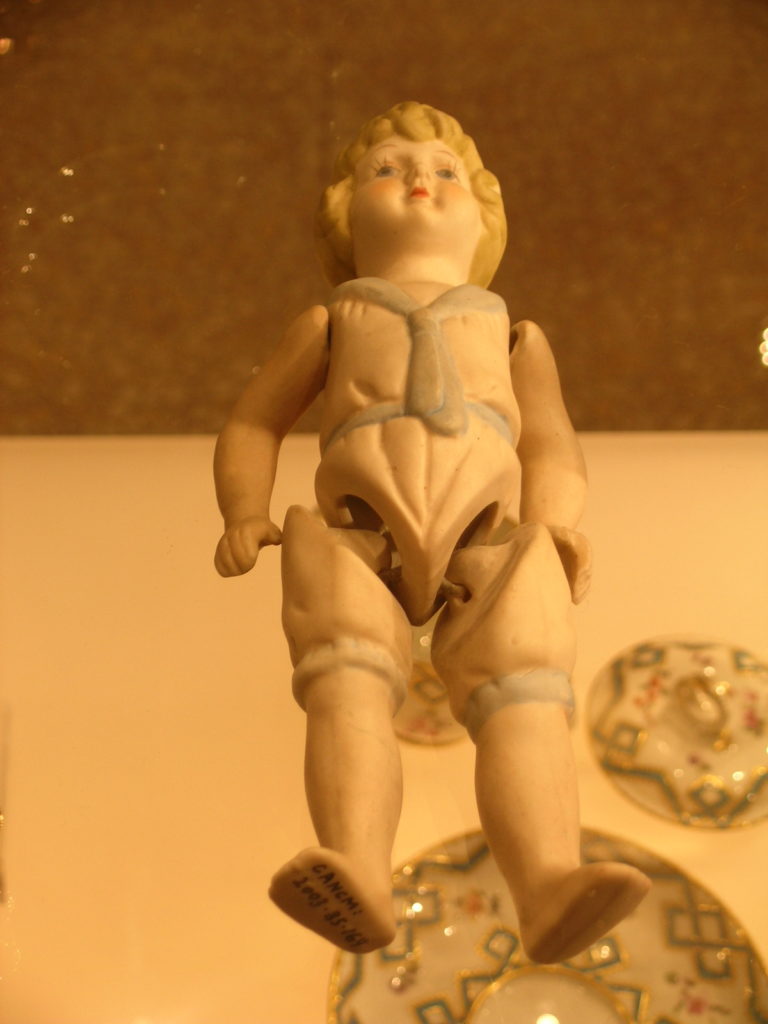

Porcelain doll
Porcelain, often called bisque, was used in the manufacture of dolls until the advent of plastic. Fine features could be modelled and painted for faces. Usually it was just the head, and perhaps also the hands and forearms, that were made of porcelain and attached to cloth or wooden bodies.
Bequeathed by Miss Anne Clelland, 2003
Reference: 2003.85.169
Can be found: Centre shelfEarth in Materials and Masters Collection


Pots, pans and candlesticks from the dolls’ house furniture collection
Metals conduct heat so are very useful for utensils in which water can be heated, and food cooked, on a fire. They are also shiny and have been used for lanterns, candlesticks and mirrors to reflect candlelight.
Bequeathed by Miss G H Veraguth to the daughter of Dr Wynn and presented to the Museum in memory of Miss Veraguth, 1974
Reference: 9870
Can be found: Metal in Materials and Masters Collection


Powder or snuff flask
Carved bean shell with cork stopper
Reference: 4546
Can be found: Vegetable in Materials and Masters Collection


Powder, tobacco or snuff holder
Horn, leather and cloth
Reference: 4826
Can be found: Animal in Materials and Masters Collection
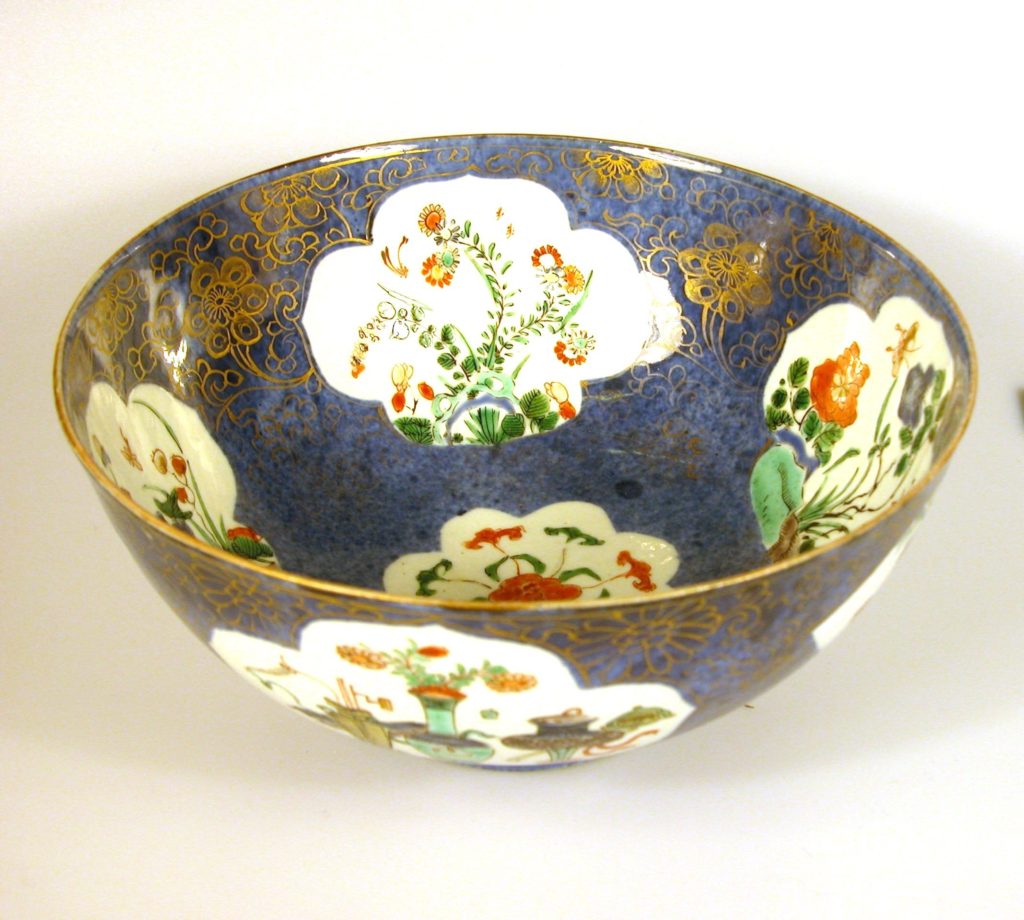

Powdered blue bowl with chrysanthemum panels
1662-1722, K’ang He, China
Porcelain
Bequeathed by John Irving, 1915
Reference: 5545
Can be found: Centre shelfColour and Pattern in Materials and Masters Collection
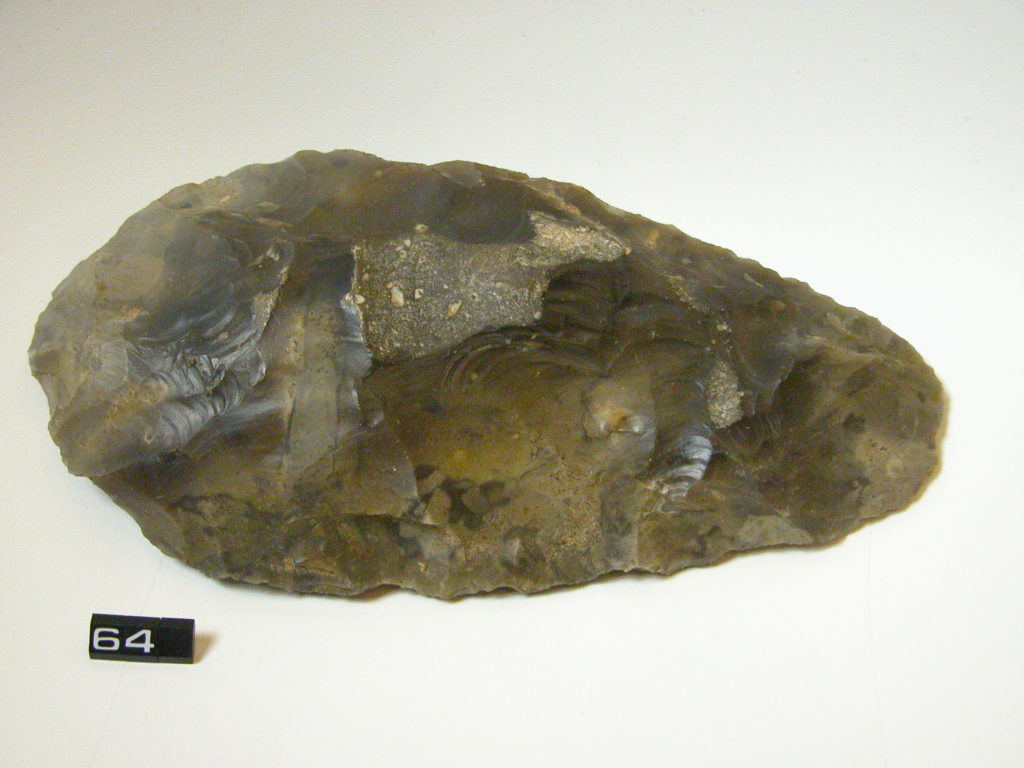

Prehistoric flint hand-axe
Flint is a variety of quartz. It is strong and heavy but can also be chipped away to create very fine sharp edges.
Reference: 430.L.1963/4
Can be found: GlassLower shelf in Materials and Masters Collection
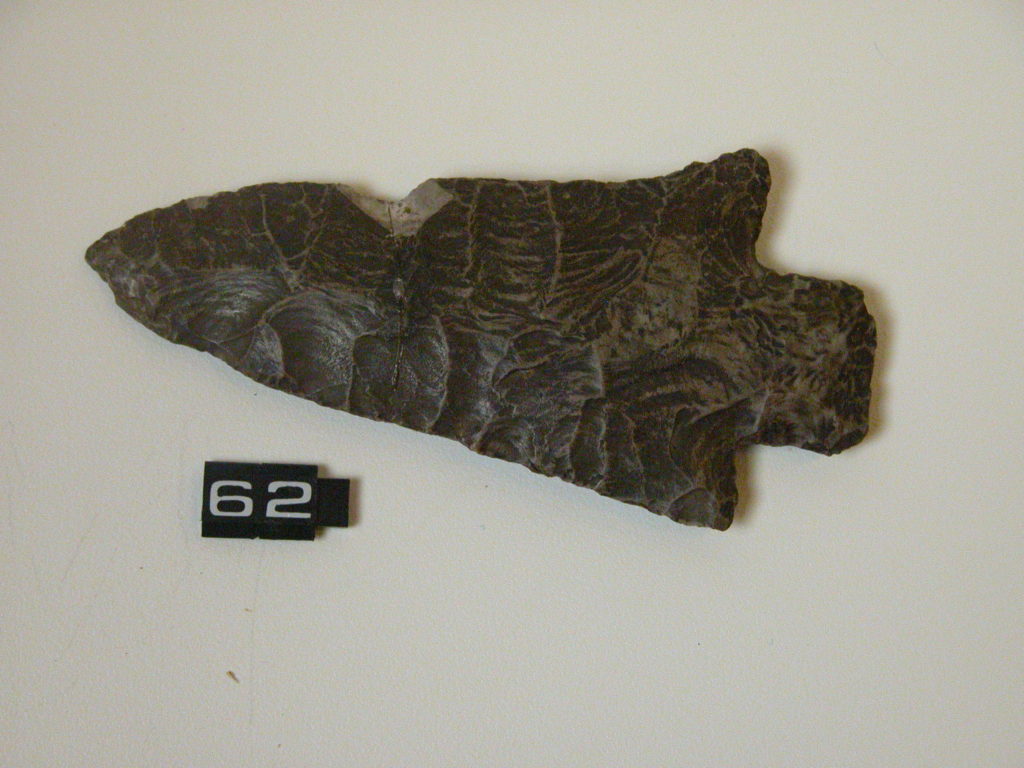

Prehistoric flint lance head, knife and spearheads
Flint is a variety of quartz. It is strong and heavy but can also be chipped away to create very fine sharp edges, sometimes serrated, as in these examples.
Several presented by Lt Col Copeland
Reference: 296, 764, 396, 394
Can be found: GlassLower shelf in Materials and Masters Collection


Red lacquered and gilded box with mother-of-pearl counters Lacquered wood, mother-of-pearl
Probably presented by Mr Alexander Wetherelt, by 1884
Reference: 2000.255.34.1-55
Can be found: Animal in Materials and Masters Collection
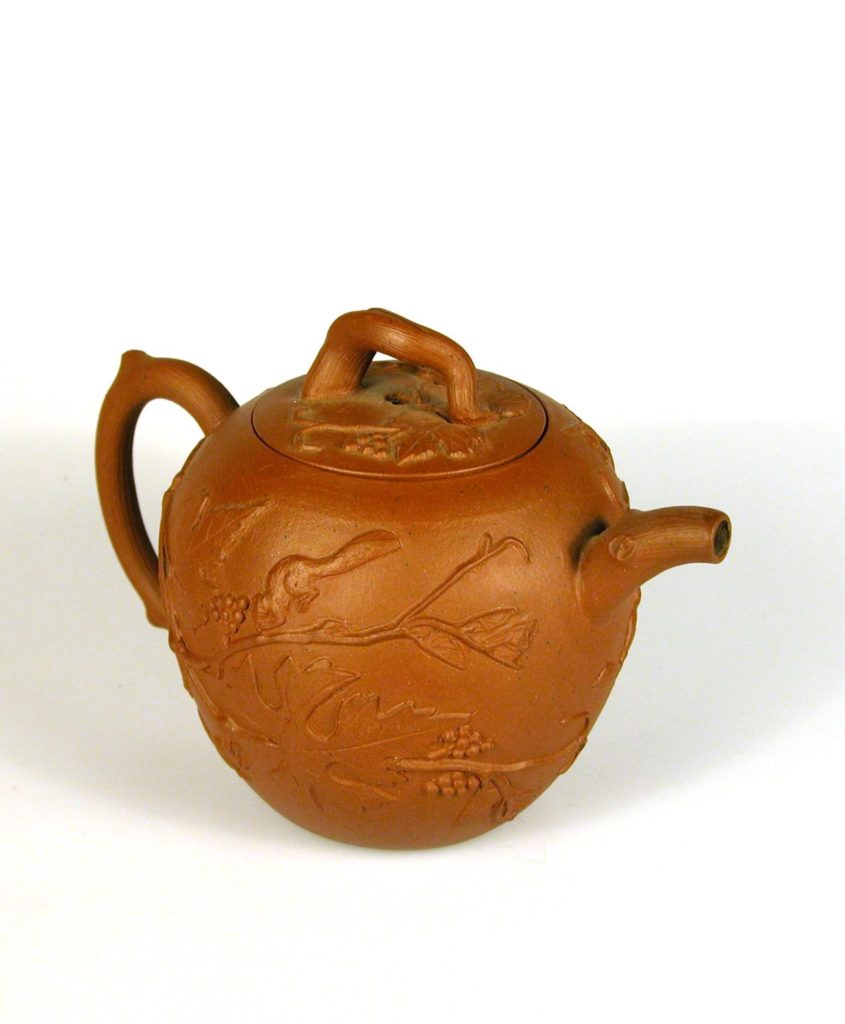

Red ware teapots
Presented by Lieutenant Colonel Copeland
Reference: 44, 45
Can be found: EarthTop shelf in Materials and Masters Collection
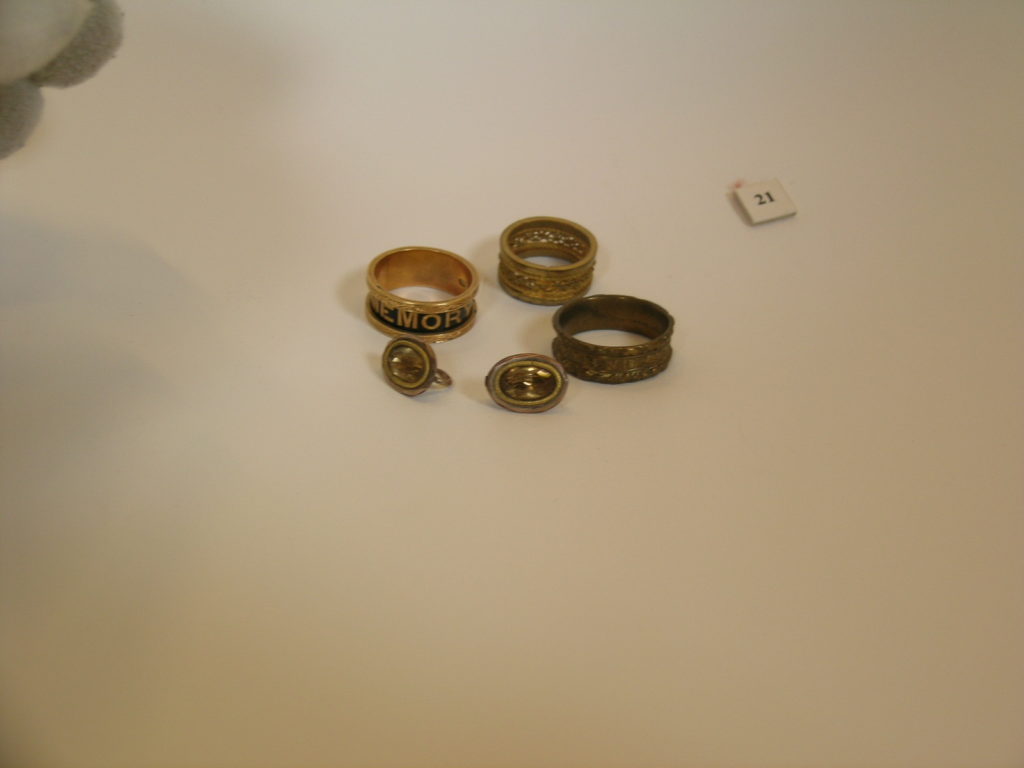

Rings and studs
The warm yellow colour and mellow shine of gold, its rarity and its relative softness for working have made it a very popular metal for jewellery since ancient times. Black enamelling on gold was popular for mourning jewellery like one of the rings here.
Presented by Mr Alexander Wetherelt, by 1884
Reference: 2000.255.1
Can be found: Metal in Materials and Masters Collection


Rock crystal
Quartz is a silicate that can form large clear crystals, known as Rock Crystal, or dark opaque lumps, known as Flint.
Reference: CANCM:nn
Can be found: GlassLower shelf in Materials and Masters Collection
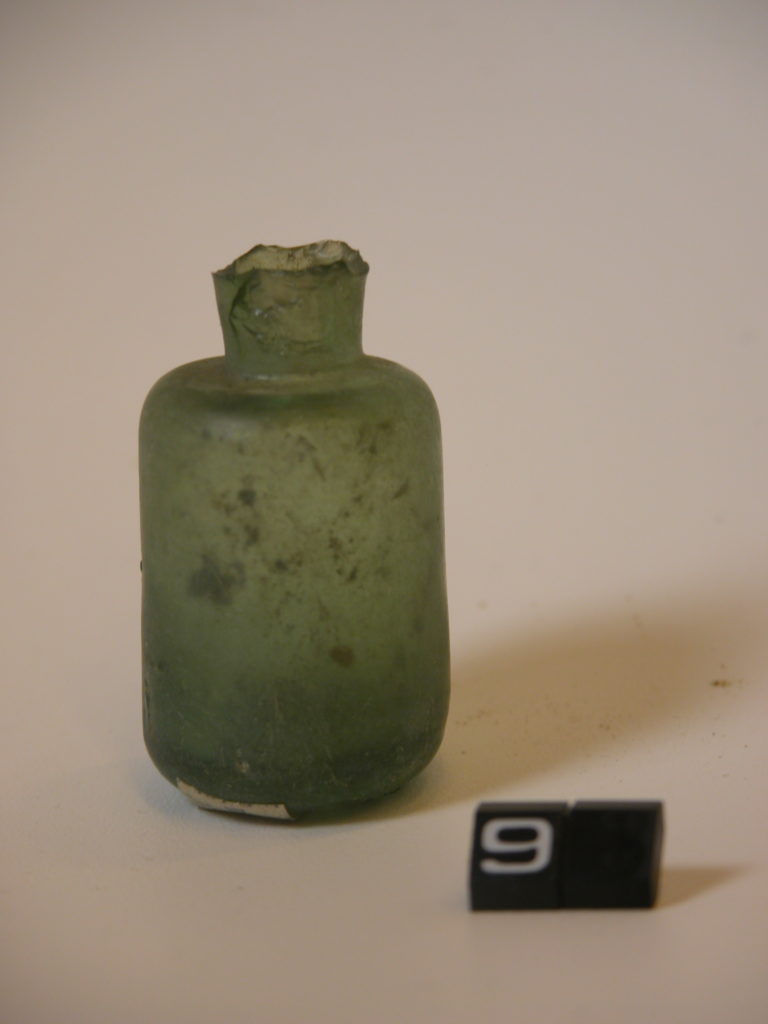

Roman blue and green glass bottles
Reference: 2581, 2589, 895, nn, 2549, 2580, 2583
Can be found: BaseGlass in Materials and Masters Collection
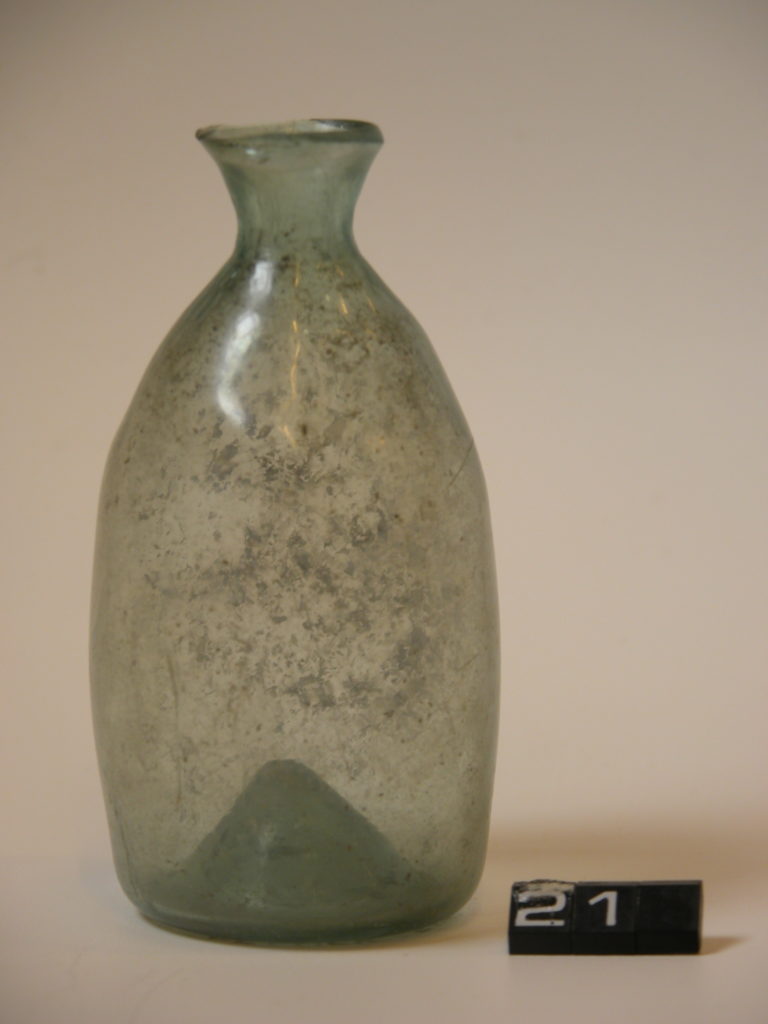

Roman bottle
Found during building of the extension to the 1899 Beaney Institute building in 1933. The extension was funded by the Slater family, with a purpose-built picture gallery on the first floor (now the People and Places room) and lecture hall on the ground floor (now part of the Library).
Reference: 6644
Can be found: BaseGlass in Materials and Masters Collection
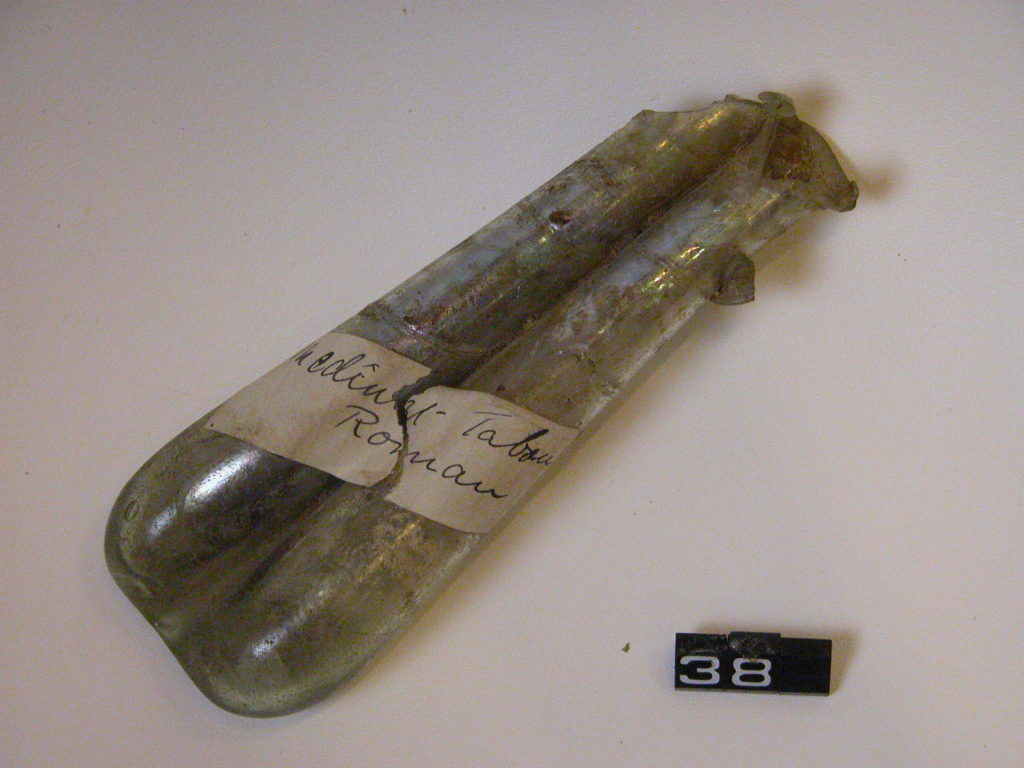

Roman bottles
These small bottles include many found during excavations in Canterbury. The double one has a label identifying it as found in Medinet-Tabou (Habou?) in Egypt. The bottles would have contained perfume, cosmetics, medicine and similar.
Reference: 6146, E11 and nn
Can be found: GlassLower shelf in Materials and Masters Collection
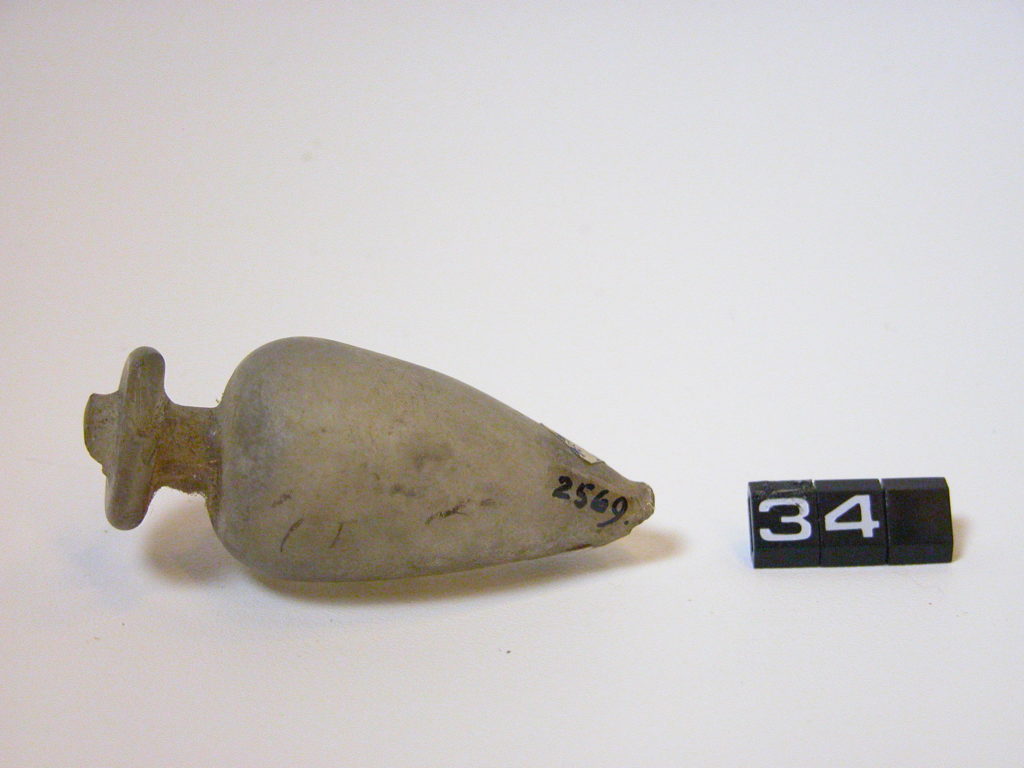

Roman bottles and fragments of stems
Reference: 2588, nn, 2569, 2556
Can be found: BaseGlass in Materials and Masters Collection
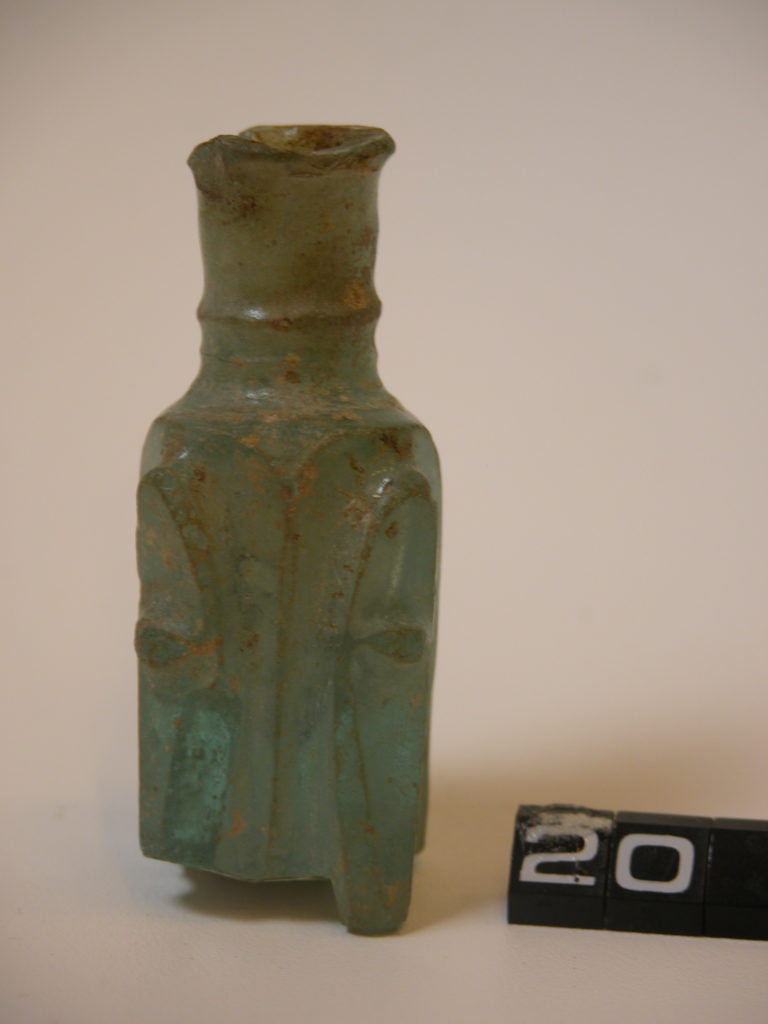

Roman green glass bottle with square body and cast or engraved pattern
Reference: 2541
Can be found: BaseGlass in Materials and Masters Collection
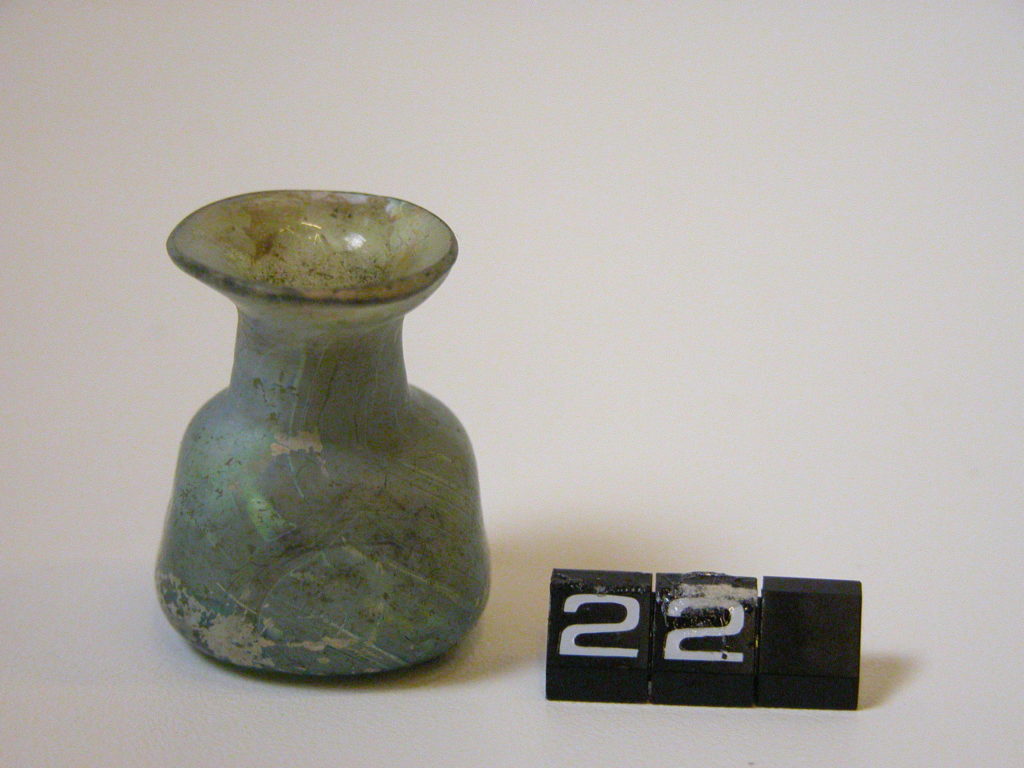

Roman green glass bottles
Reference: 2585, 2587
Can be found: BaseGlass in Materials and Masters Collection
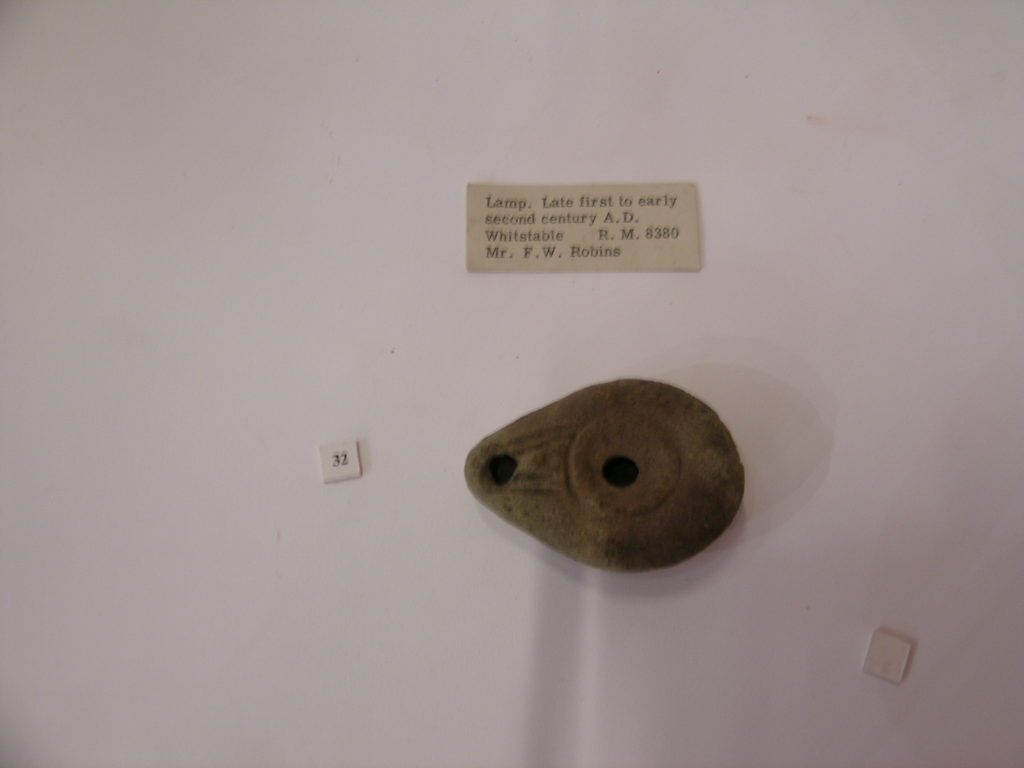

Roman lamp
Late 1st to early 2nd century AD, found in Whitstable
Terracotta
Presented by Mr F. W. Robins
Reference: 8380
Can be found: EarthTop shelf in Materials and Masters Collection


Roman or later bottle and fragments of stems
Reference: nn, 2561, 2502, nn
Can be found: BaseGlass in Materials and Masters Collection
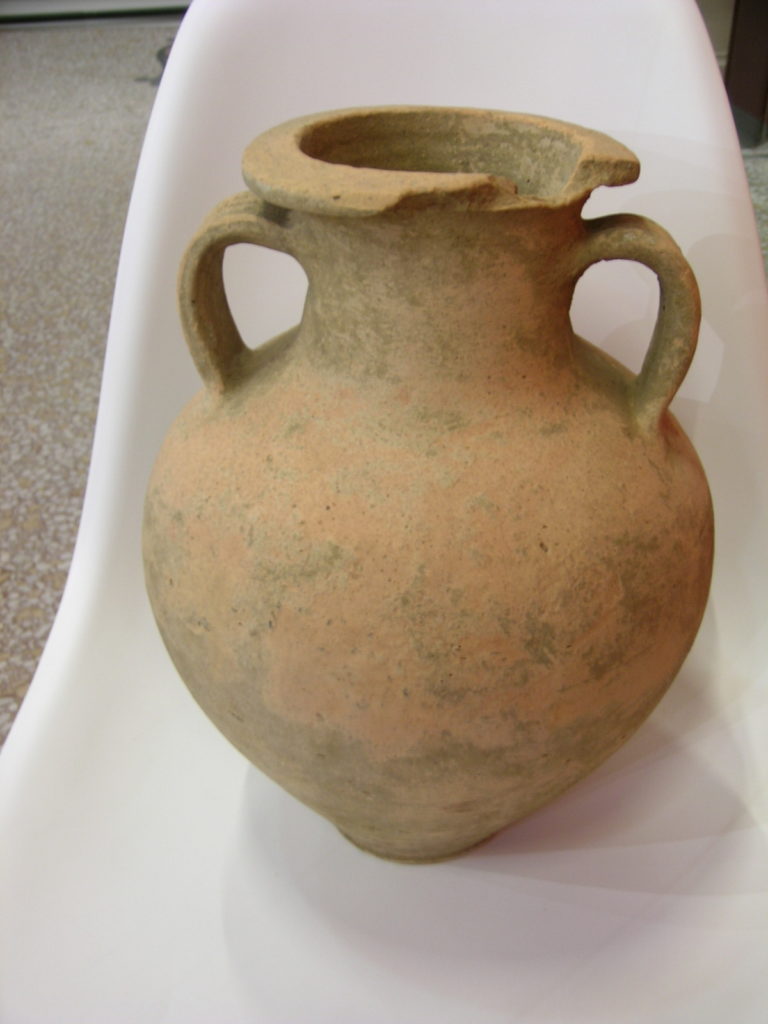

Roman two-handled urn
Terracotta
Reference: 8215
Can be found: EarthTop shelf in Materials and Masters Collection
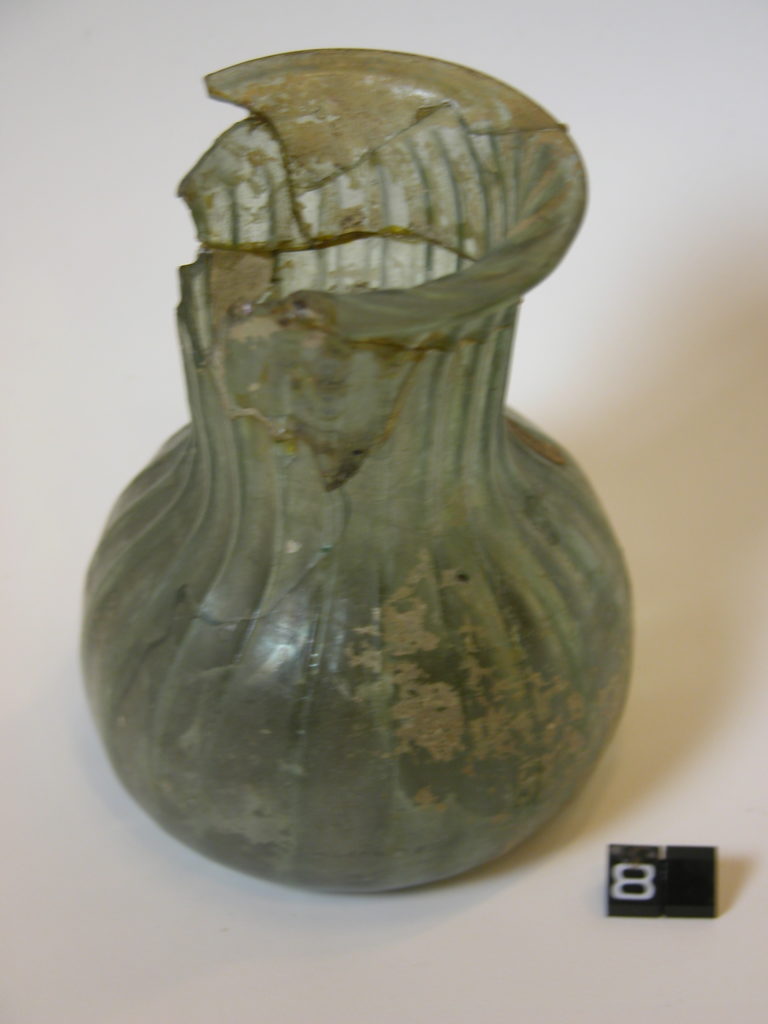

Roman vessel with ribbed sides and indented base
Bequeathed by John Brent
Reference: 2137
Can be found: BaseGlass in Materials and Masters Collection
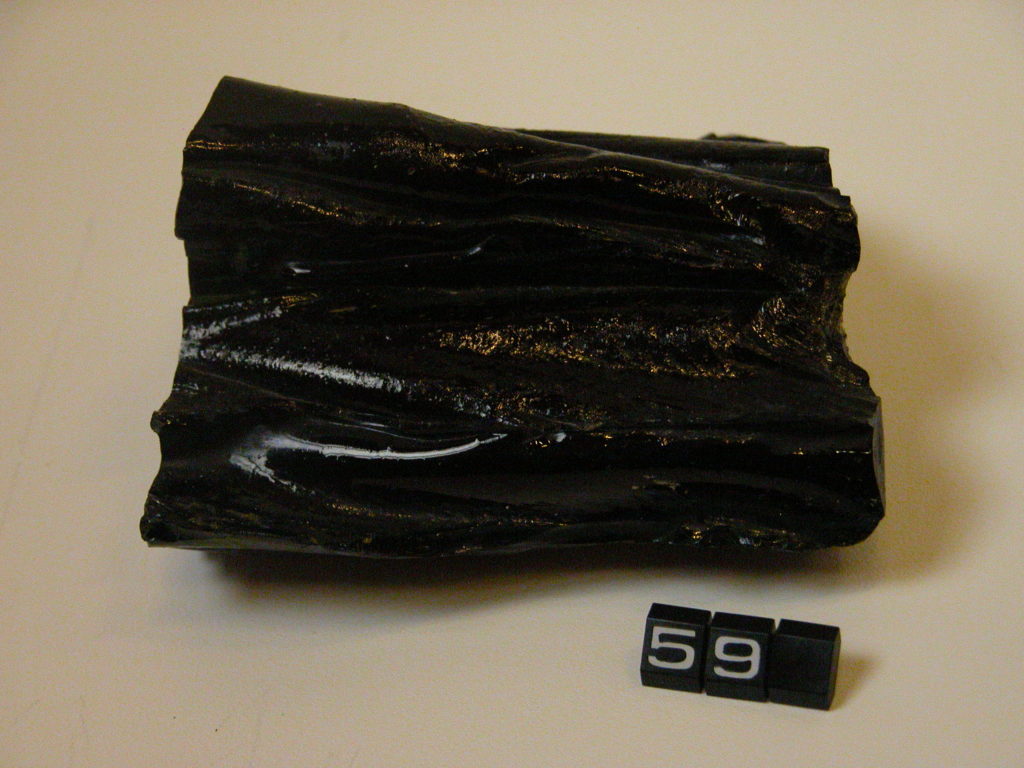

Ropy obsidian
Obsidian is a glassy rock formed through cooling of volcanic lava so fast that few crystals form. It can be black or green (like examples in Colour and Camouflage), and sometimes ropy, like this piece.
Reference: K 334
Can be found: GlassLower shelf in Materials and Masters Collection
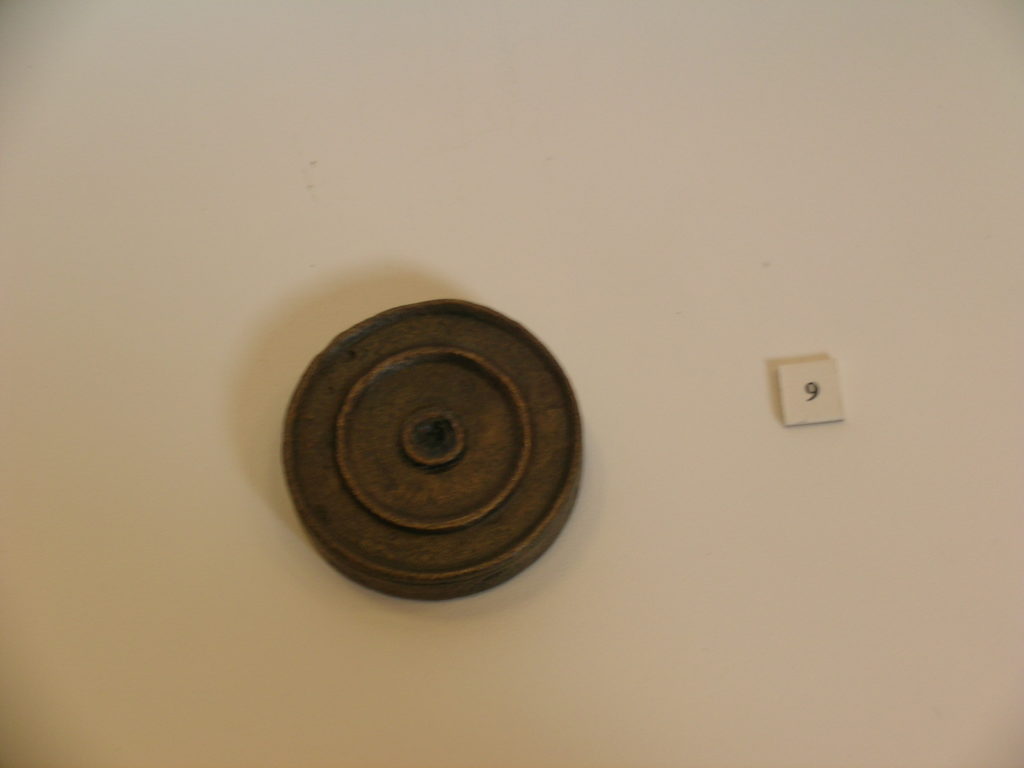

Round bronze and lead weight
Presented by Lieutenant Colonel Copeland
Reference: CANCM:nn
Can be found: Metal in Materials and Masters Collection
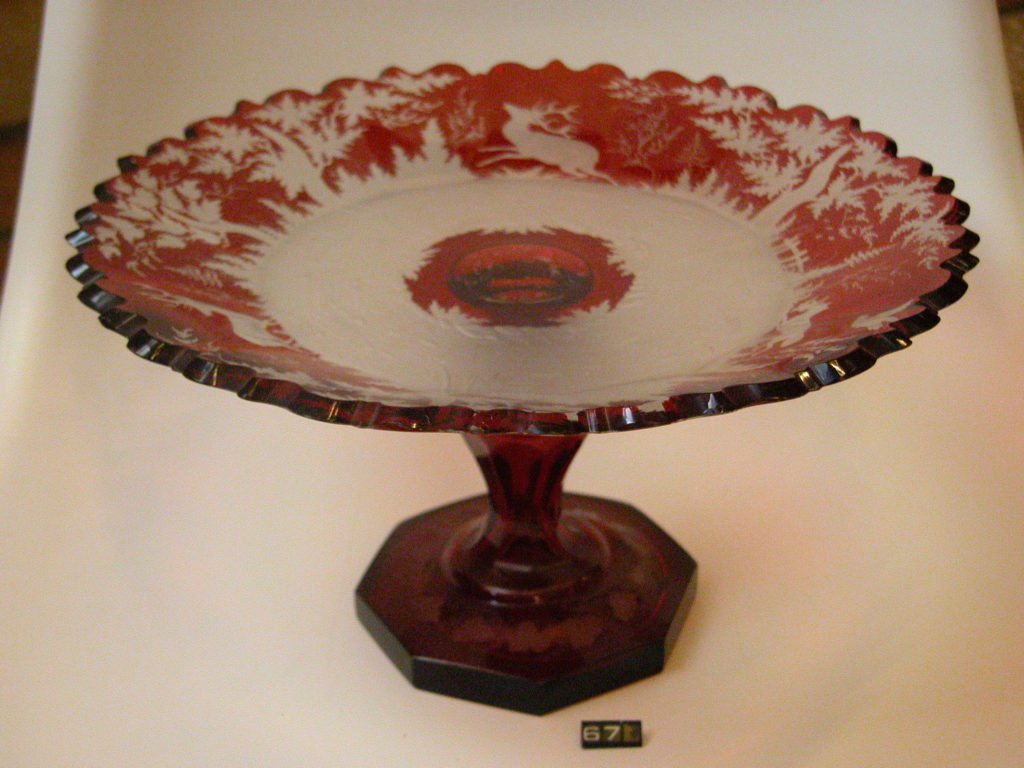

Ruby glass dishes with etched decoration
Glass can be coloured by the addition of minerals. Gold creates ruby-coloured glass.
Presented by Miss G Arrowsmith, from the collection of her late sister Miss G L Arrowsmith, 1992
Reference: 1992.38
Can be found: GlassTop shelf in Materials and Masters Collection
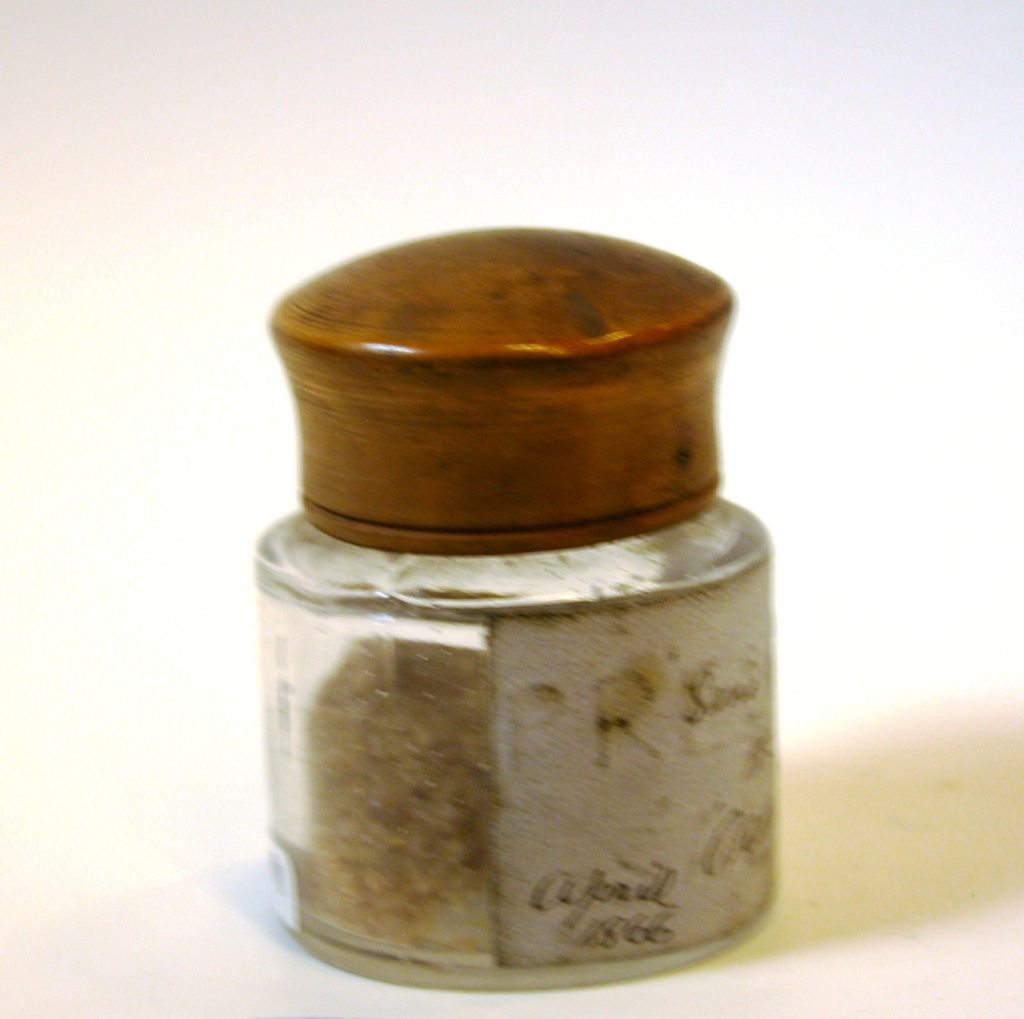

Sand
Grains of Silicate minerals.
Reference: 1984.3.291
Can be found: Stone in Materials and Masters Collection
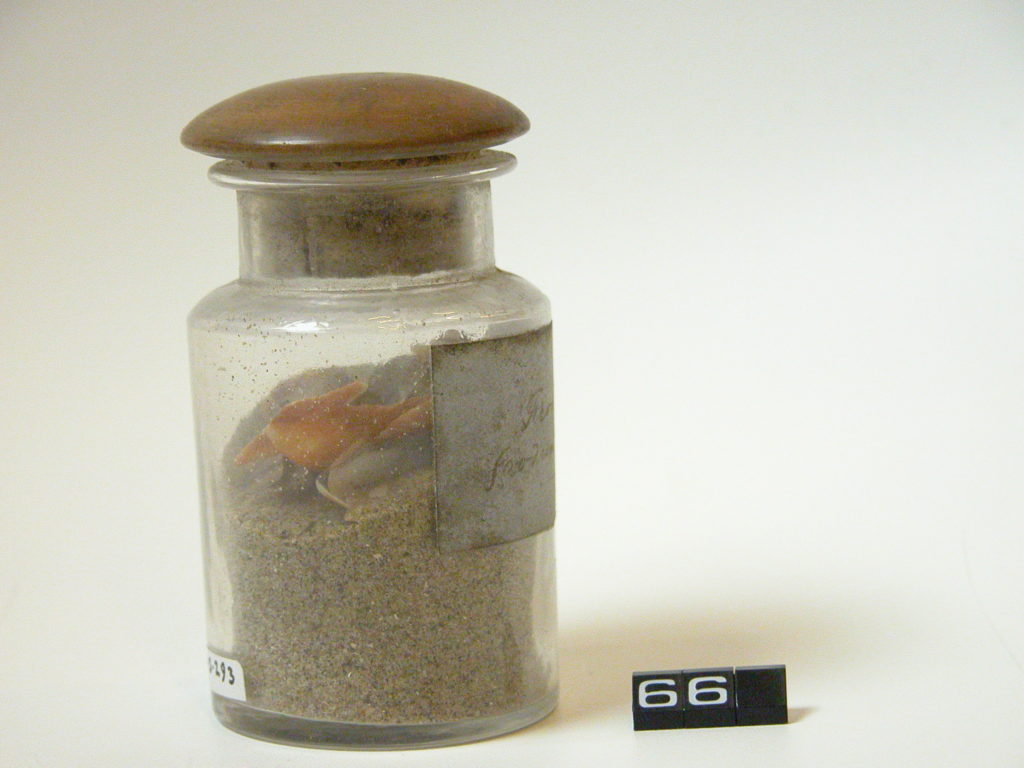

Sand in a jar
Sand is made of silica – glass.
From the collection of Rev V. P. Bowen
Reference: 1984.3.293
Can be found: GlassLower shelf in Materials and Masters Collection


Sandstone
This is a rock formed from deposited grains of sand. The grains are weakly cemented so the rock breaks easily, making it ideal for quarrying. Local sandstones from the Tertiary age were extensively quarried around Canterbury in the past.
Reference: CANCM:nn
Can be found: Stone in Materials and Masters Collection


Selenite
Transparent Selenite is a variety of Gypsum, a hydrated calcium sulphate.
From the collection of Mr J. E. Cooper
Reference: 2004.148
Can be found: GlassLower shelf in Materials and Masters Collection
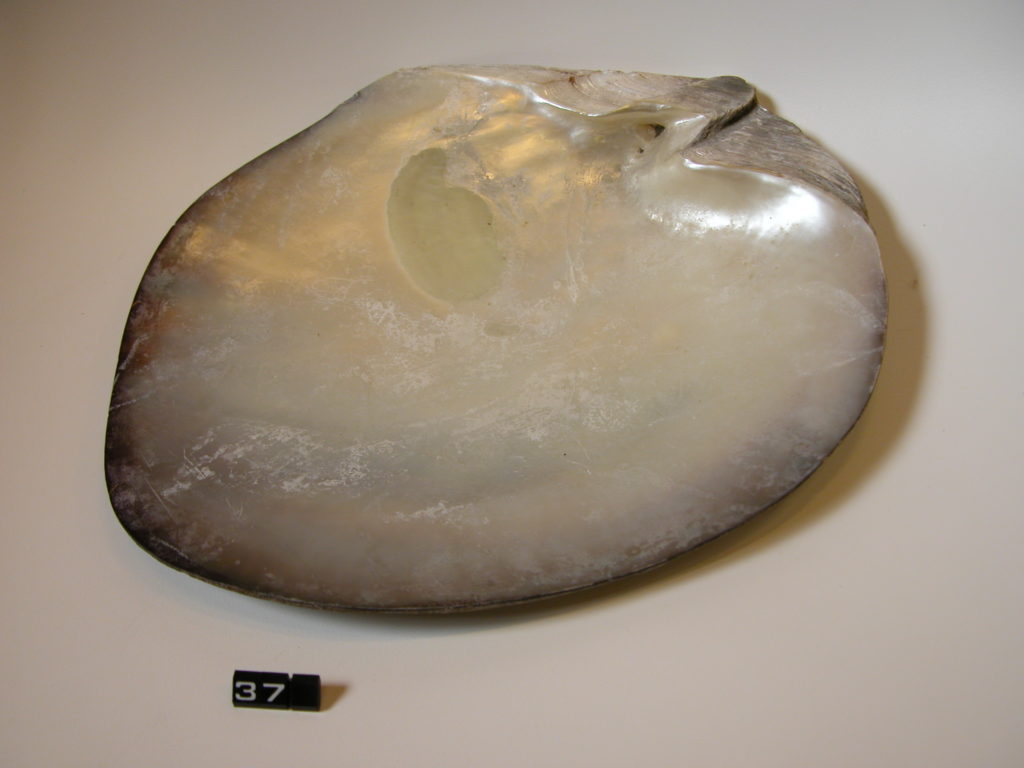

Shell of a pearl oyster (Avicula)
Reference: 2011.11
Can be found: Animal in Materials and Masters Collection
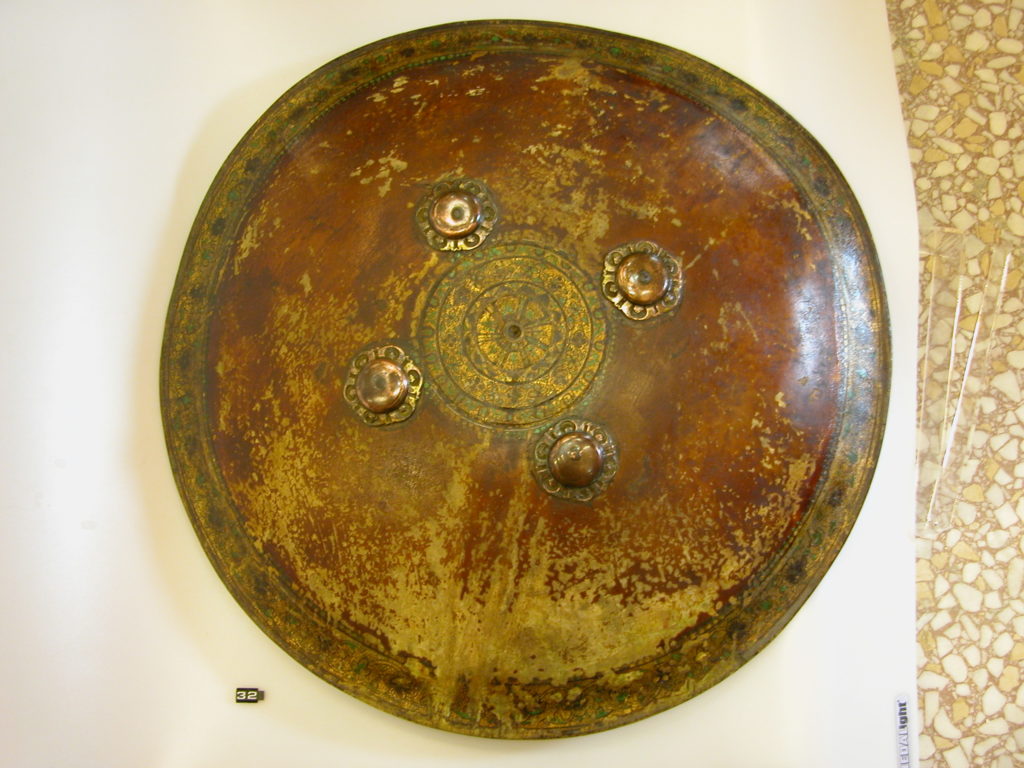

Shield made of rhino hide
18th century; probably Rajasthan, South India
Rhino hide, metal and wood
Rhino hide was popular for dhal shields in South India because it is translucent: light shines through it. Rajasthan was the centre for manufacture and decoration of the traditional Indian round dhal fighting shields, with shallow domed shape and four metal bosses (round knobs) on the front corresponding to handle fixings inside.
Presented by Stephen Lushington to Canterbury Philosophical and Literary Institution Museum, 1825-68, and acquired through purchase of the Museum by Canterbury Corporation, 1846-47
Reference: CANCM:nn
Can be found: Animal in Materials and Masters Collection
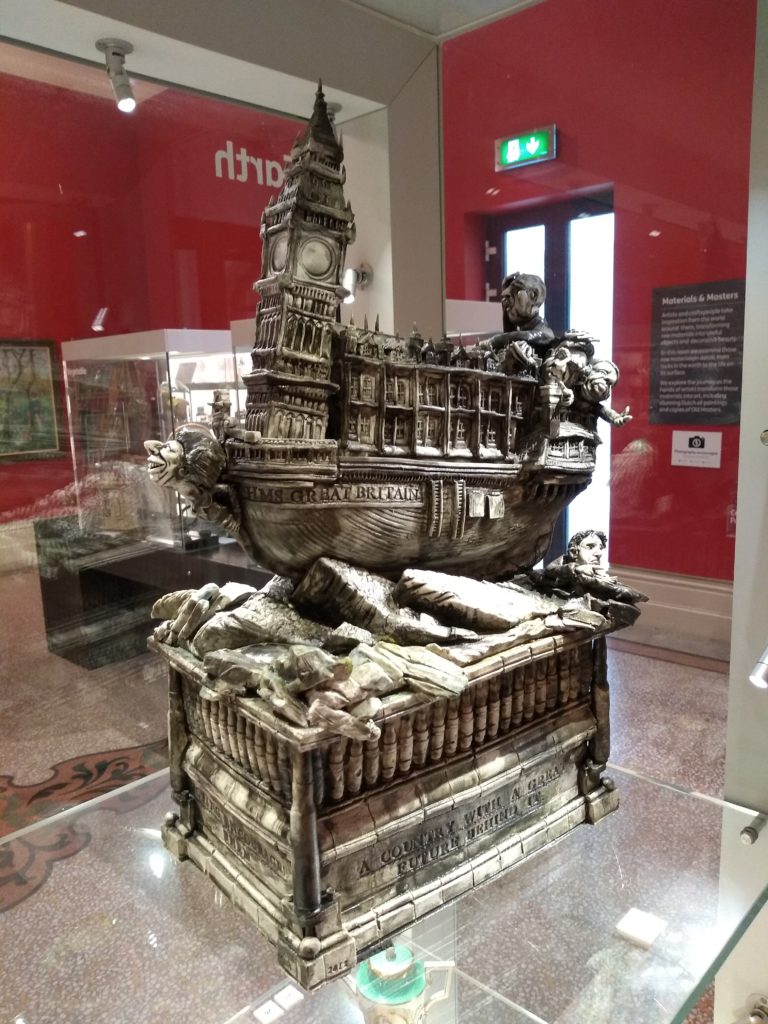

Ship of Fools
2012, Clive Soord
Porcelain
Clive Soord is a sculptor in ceramics, and a ceramics tutor at Canterbury College. He can be seen within his studio in the photograph by Neil Sloman displayed in the Materials and Masters room.
“Ship of Fools is a work inspired by the old saying ‘too many steersmen sink the ship’. It’s a satirical political work. The tall ship is indicative of the ships we had when we had an empire. Westminster represents our seat of government on the poop deck, and we have a gaggle of politicians all waving their white papers pointing in different directions. The figurehead on HMS Britain is Thatcher, running the ship aground on the Grand Banks RBS, Lloyds etc.”
Lent by the artist
Reference: CANCM:nn
Can be found: BaseEarth in Materials and Masters Collection


Shoes
1920s
Leather
Presented by Mrs Lloyd Roberts, 1976
Reference: CANCM:nn
Can be found: Animal in Materials and Masters Collection


Sicilian stone
A stone with mineral veins, cut into an obelisk shape.
Reference: CANCM:nn
Can be found: Stone in Materials and Masters Collection


Silver filigree needle case 18th century
Recorded by the donor as having come from India, belonged to Lady Burroughs in 1768, and presented by her niece to the donor.
Presented by Mr Alexander Wetherelt, by 1884
Reference: 2000.255.10
Can be found: Metal in Materials and Masters Collection
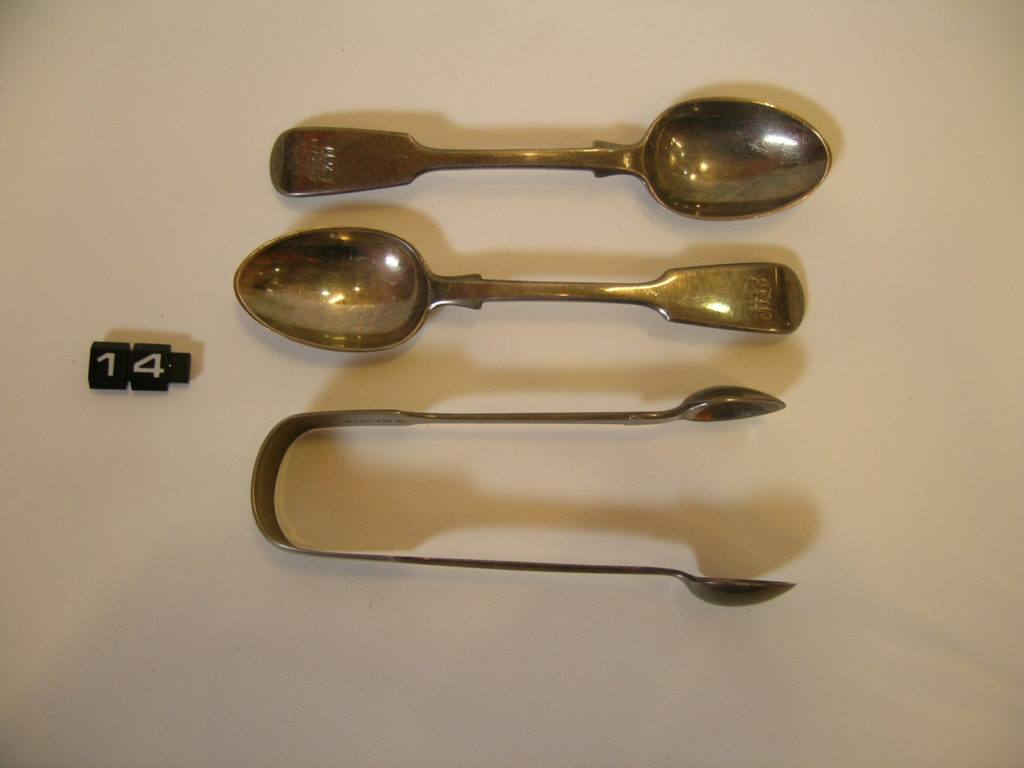

Silver teaspoons and sugar tongs
Presented by Mr Alexander Wetherelt, by 1884
Reference: 2000.255.18
Can be found: Metal in Materials and Masters Collection
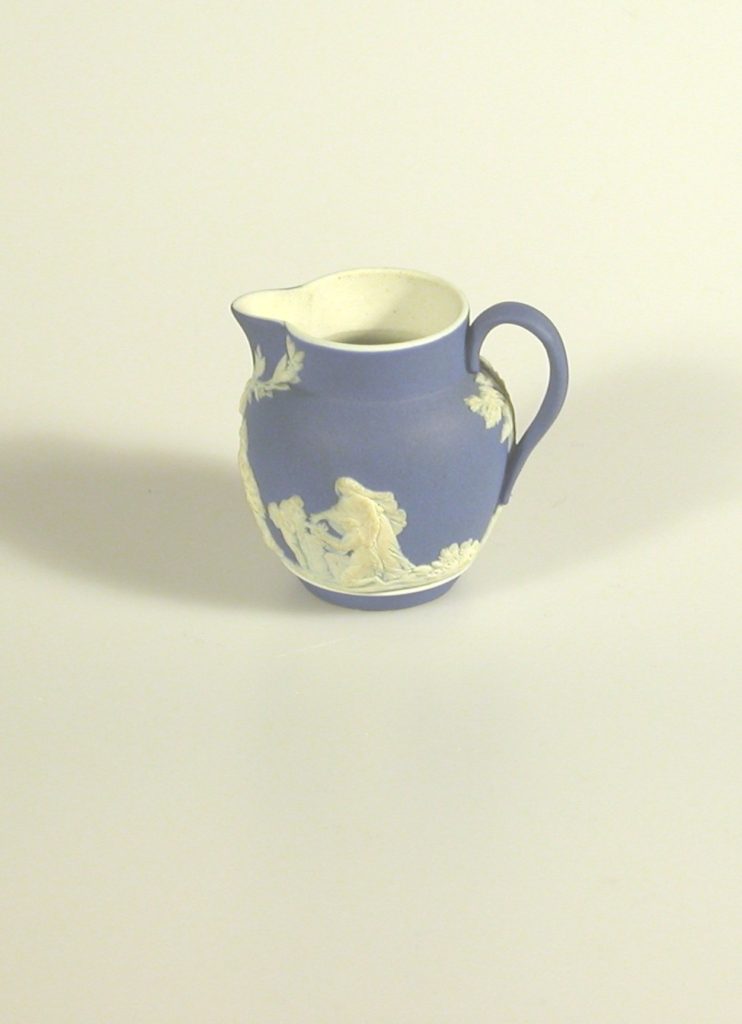

Small blue Jasperware jug Wedgwood
Bequeathed by John Irving, 1915
Reference: 5600
Can be found: Colour and PatternLower shelf in Materials and Masters Collection
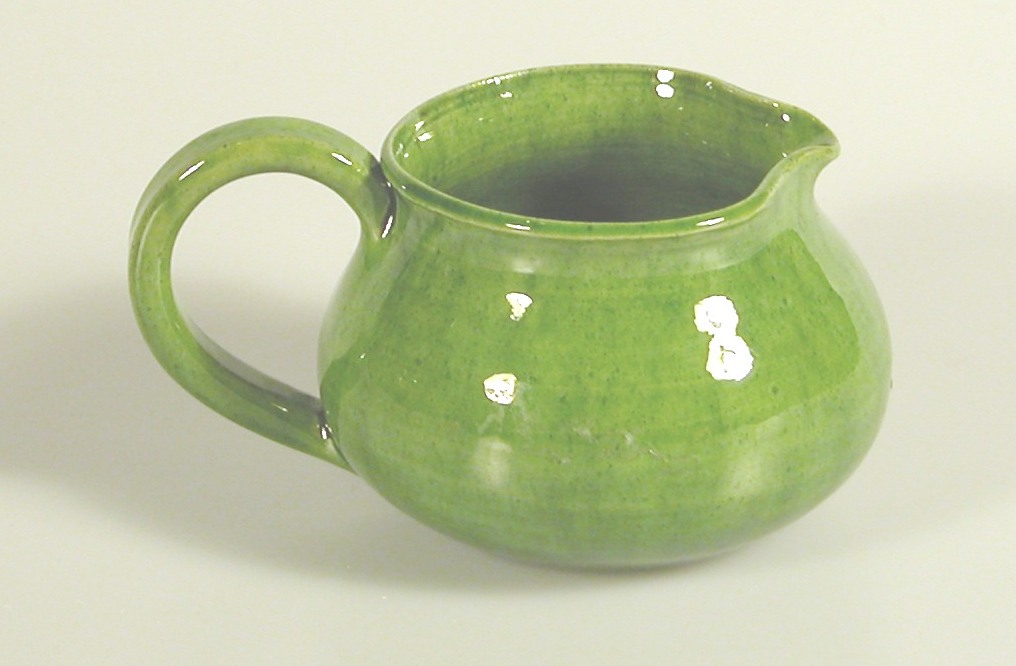

Small green-glazed jug 1940s, Rye
Made by ‘H H’
Reference: 1992.17
Can be found: Centre shelfColour and Pattern in Materials and Masters Collection
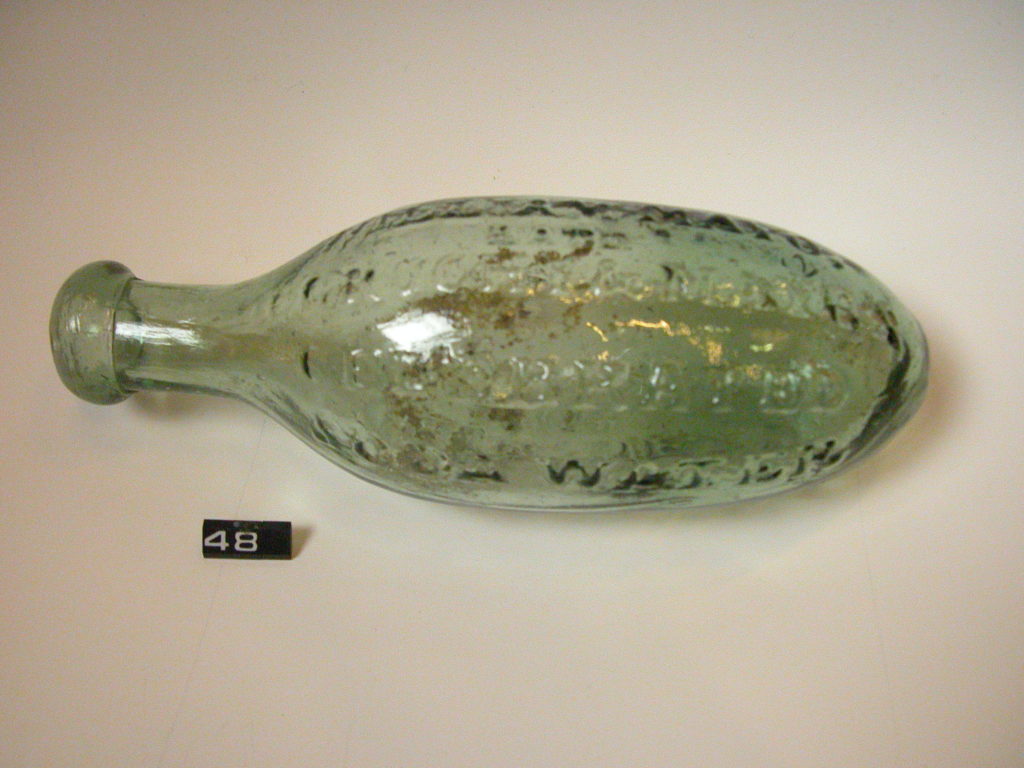

Soda water bottle
From the soda water supplier William Mayor of Silver Street, London.
Reference: CANCM:nn
Can be found: Centre shelfGlass in Materials and Masters Collection
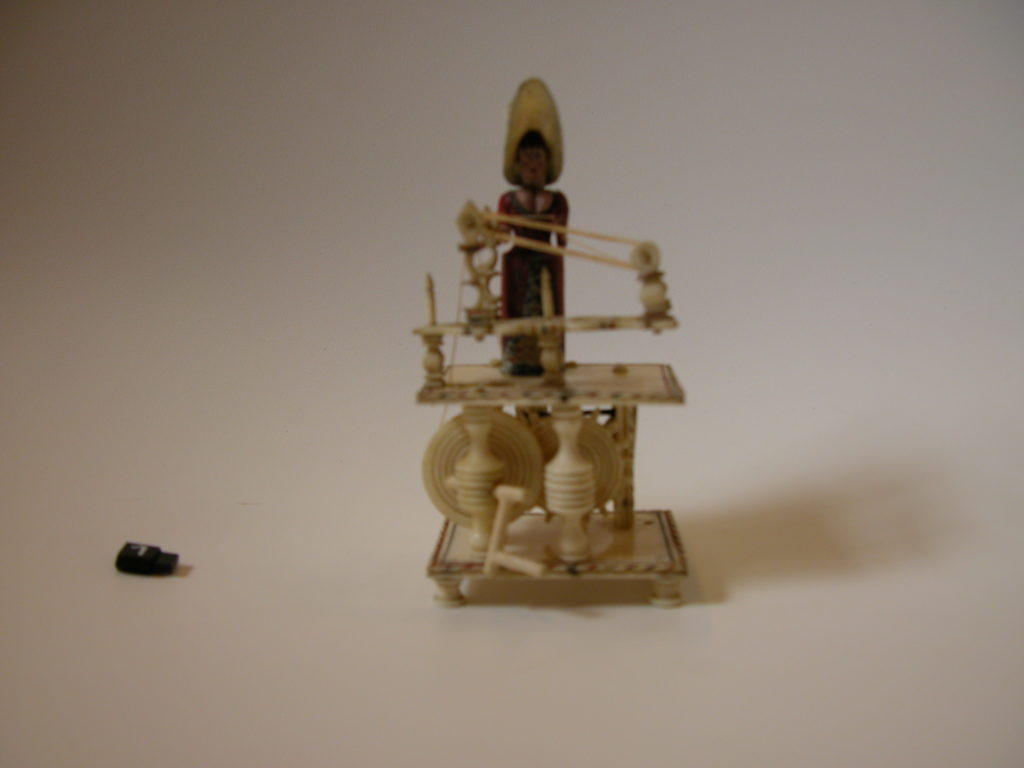

Spinning Jenny
Bone
Made from mutton bones by a French prisoner in the Napoleonic wars.
Reference: 8245
Can be found: Animal in Materials and Masters Collection


Squat Mill Green jug 1270-1350, Mill Green
Glazed earthenware
Bequeathed by John Brent
Reference: 26
Can be found: Centre shelfColour and Pattern in Materials and Masters Collection
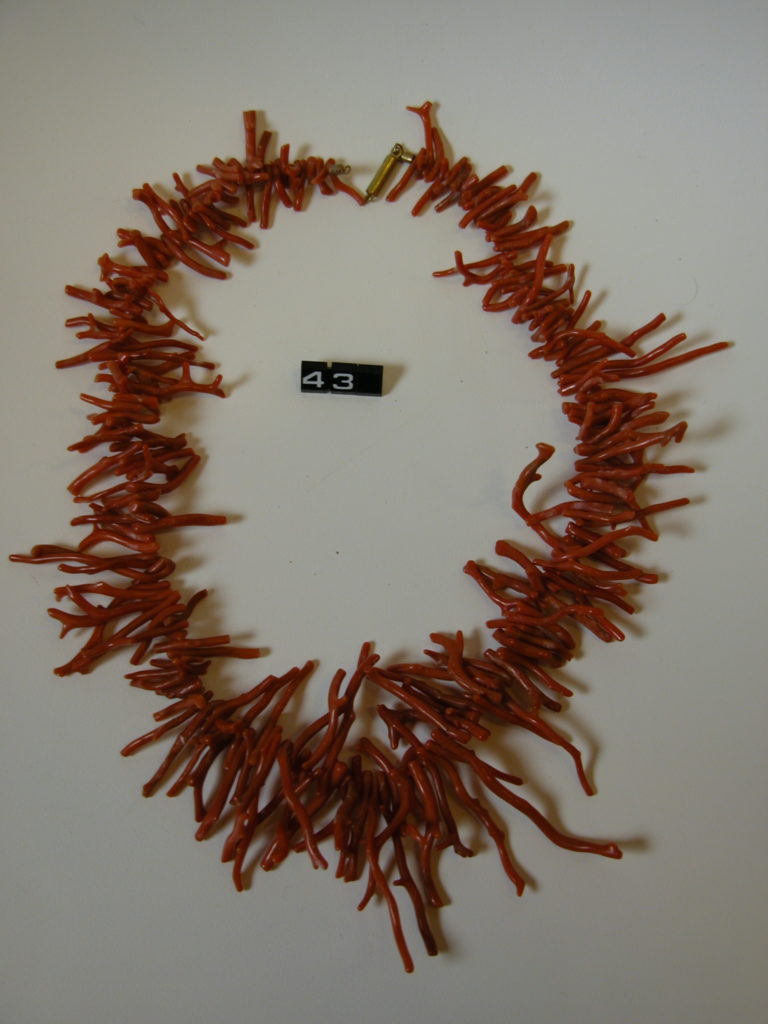

Staghorn coral necklace
Red was considered a lucky colour for centuries and Mediterranean red coral (Corallium rubrum) was used to make bracelets, necklaces and other jewellery, as well as decorating babies’ rattles. Staghorn coral is the name given to long spiky growths. Mediterranean red coral is now becoming increasingly rare due to over-exploitation.
Reference: CANCM:nn
Can be found: Animal in Materials and Masters Collection
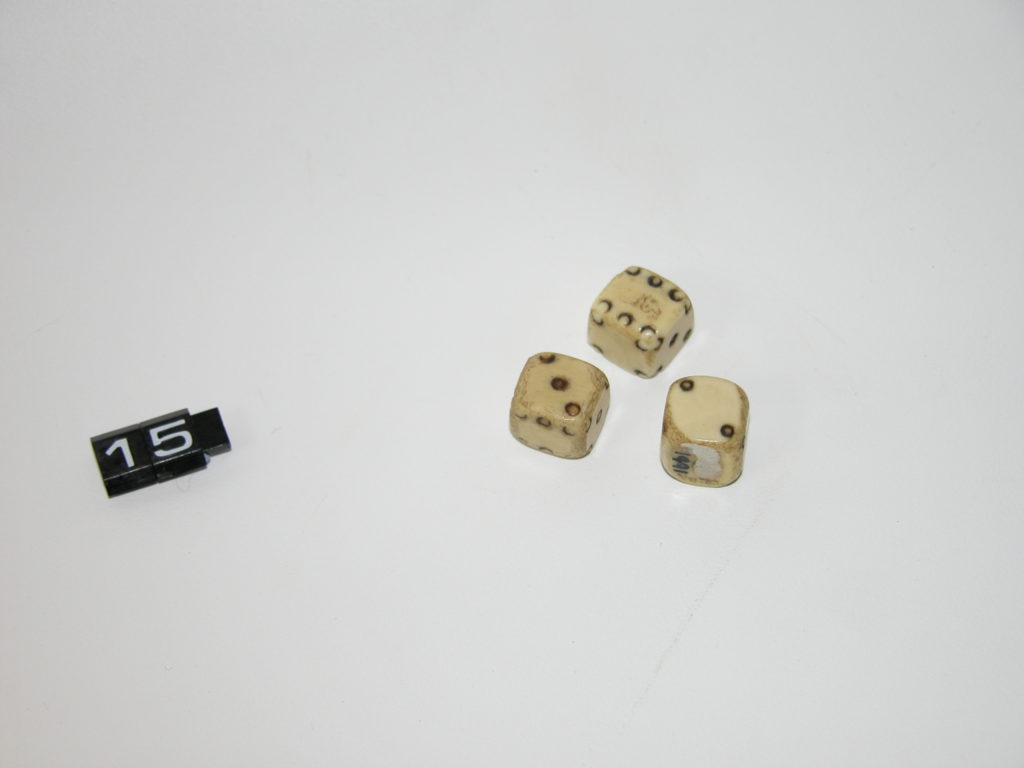

Stamped dice from a backgammon board
Ivory
Presented by Lieutenant Colonel Copeland
Reference: 1989, 1990, 1991
Can be found: Animal in Materials and Masters Collection
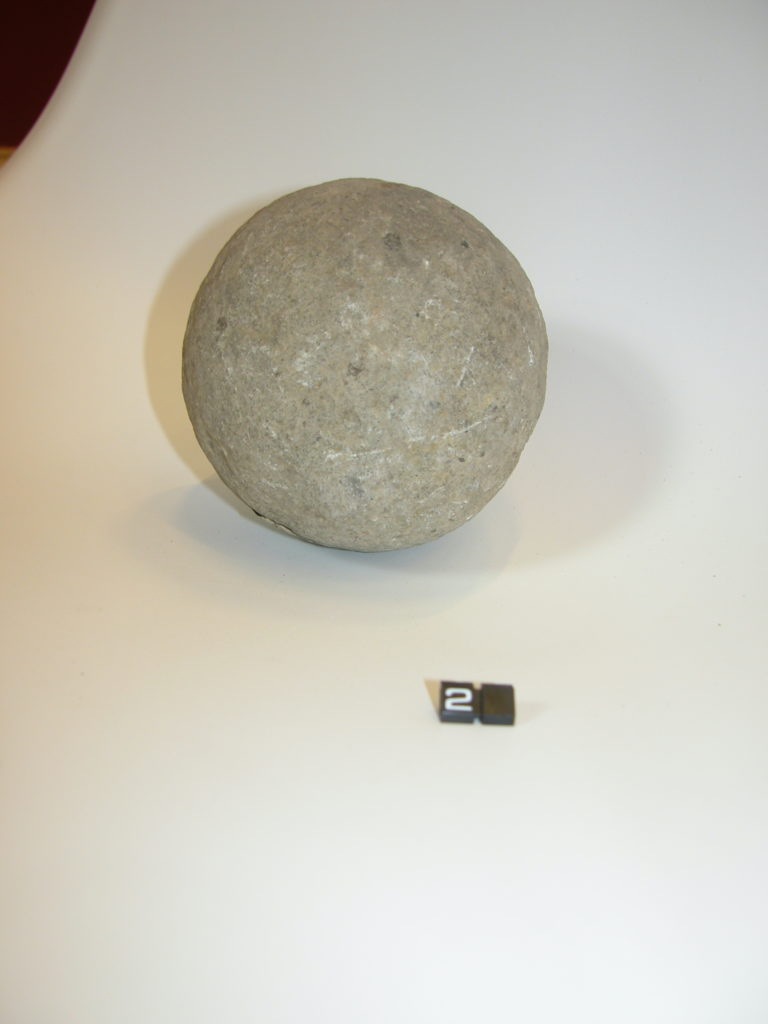

Stone ball
Found in Canterbury.
Reference: CANCM:nn
Can be found: Stone in Materials and Masters Collection
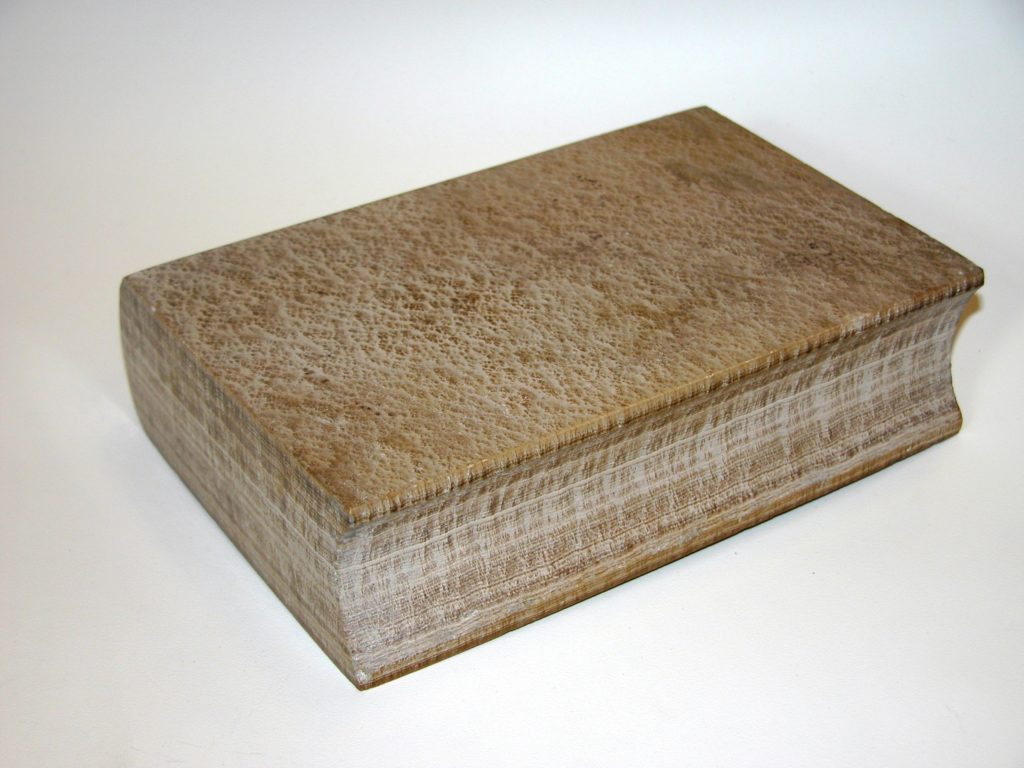

Stone book
Made from a stalagmite – a formation of Calcite minerals deposited by water seeping through rocks and dripping in caves to make stalactites, which hang down, and stalagmites, which build up from cave floors.
Reference: 2009.547
Can be found: Stone in Materials and Masters Collection
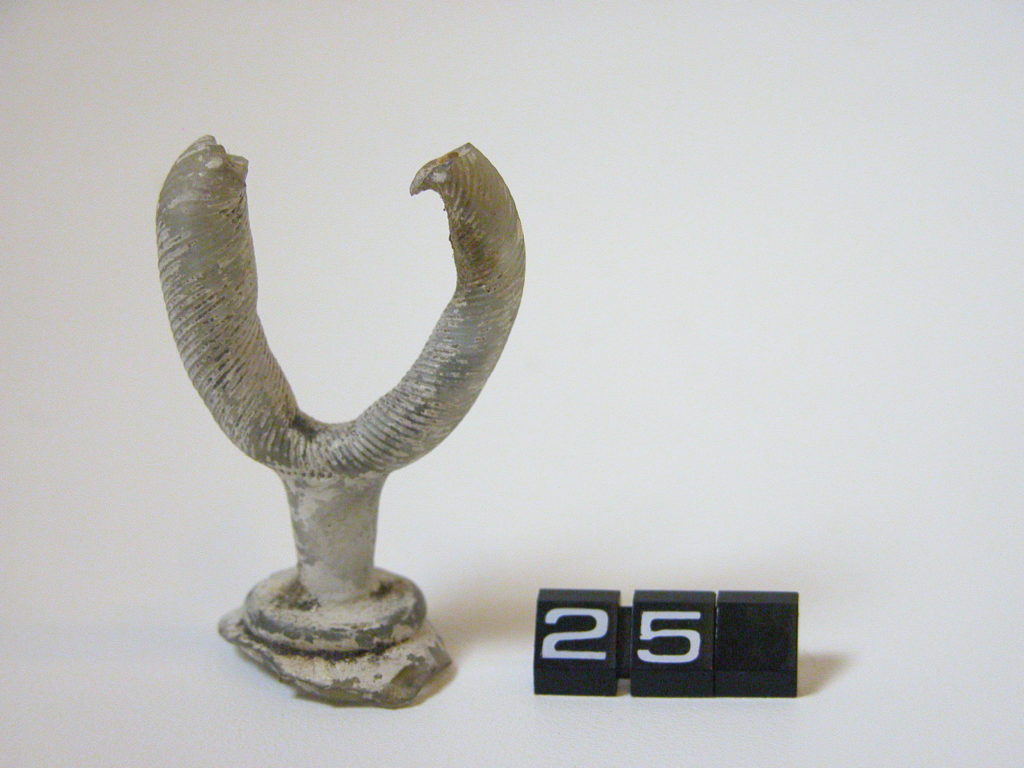

Stopper or dipper and decorative fragment
Reference: 2467, 7912
Can be found: BaseGlass in Materials and Masters Collection
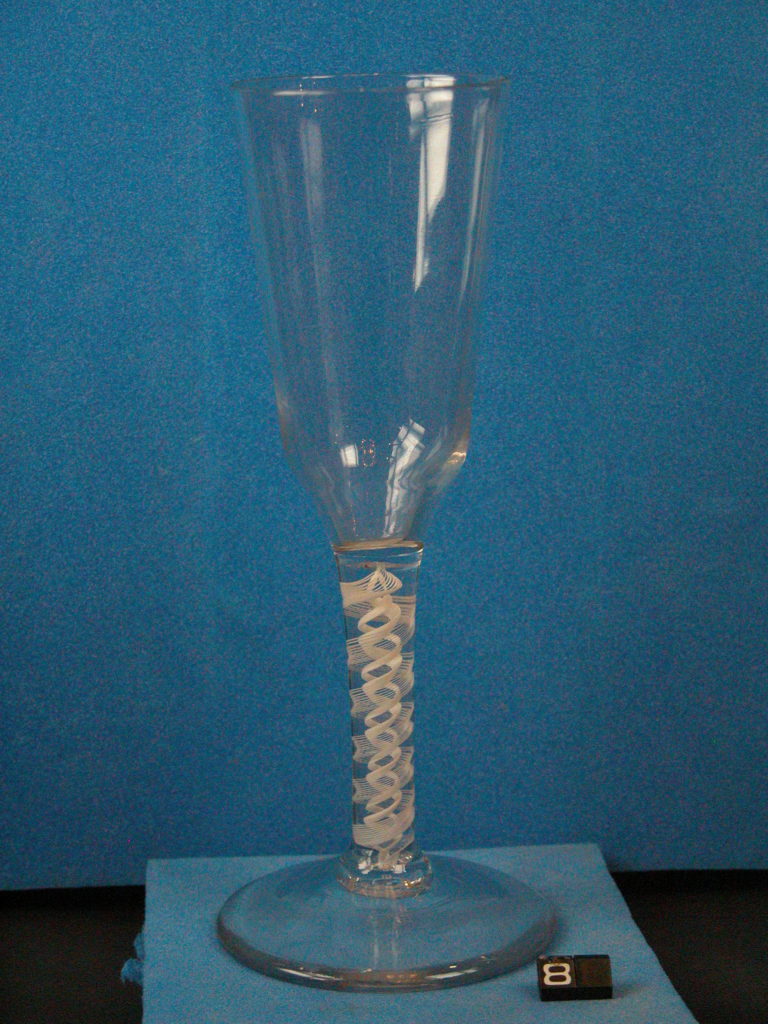

Tall wine glass
18th – 19th century
Plain bowl with an opaque twist stem.
Presented by Miss B Street from her brother’s collection, 1933
Reference: CANCM:nn
Can be found: GlassTop shelf in Materials and Masters Collection
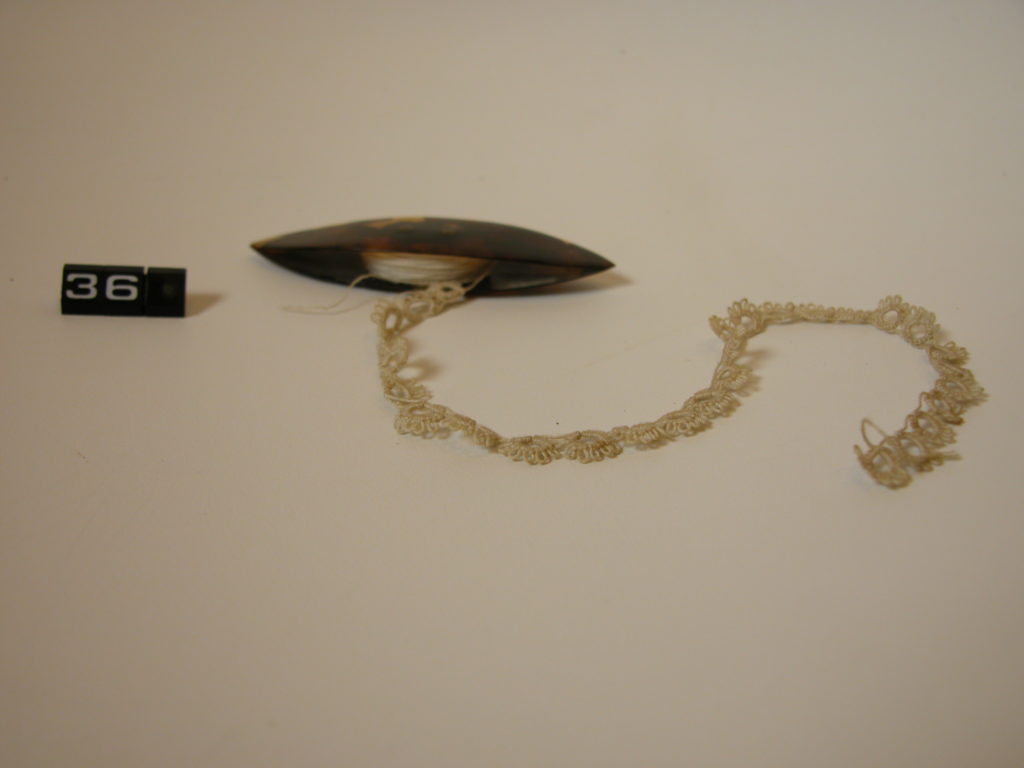

Tatting spool
Tortoiseshell
Presented by Miss R H Beck Peacock
Reference: 8759
Can be found: Animal in Materials and Masters Collection
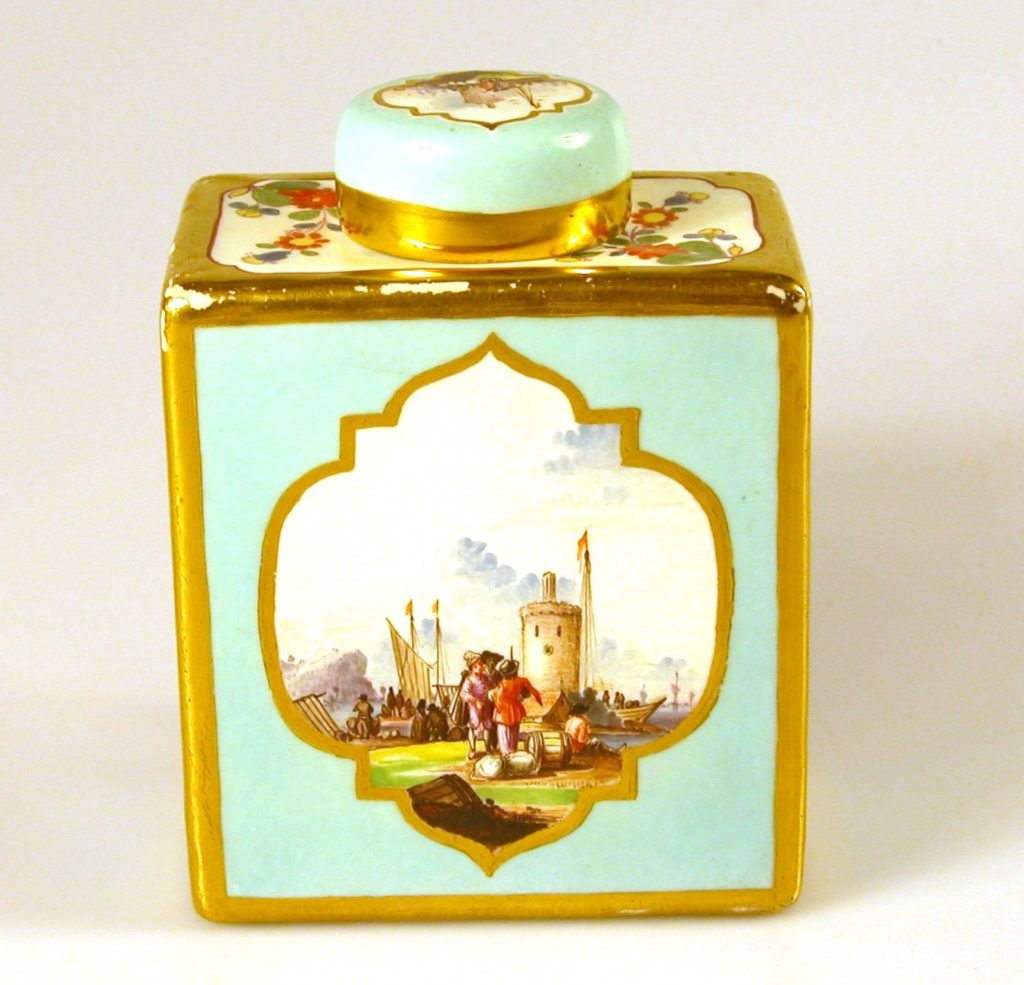

Tea canister and lid with celadon green ground
Early 18th century, Meissen
Porcelain
Bequeathed by John Irving, 1915
Reference: 5421, 5422
Can be found: Colour and PatternLower shelf in Materials and Masters Collection
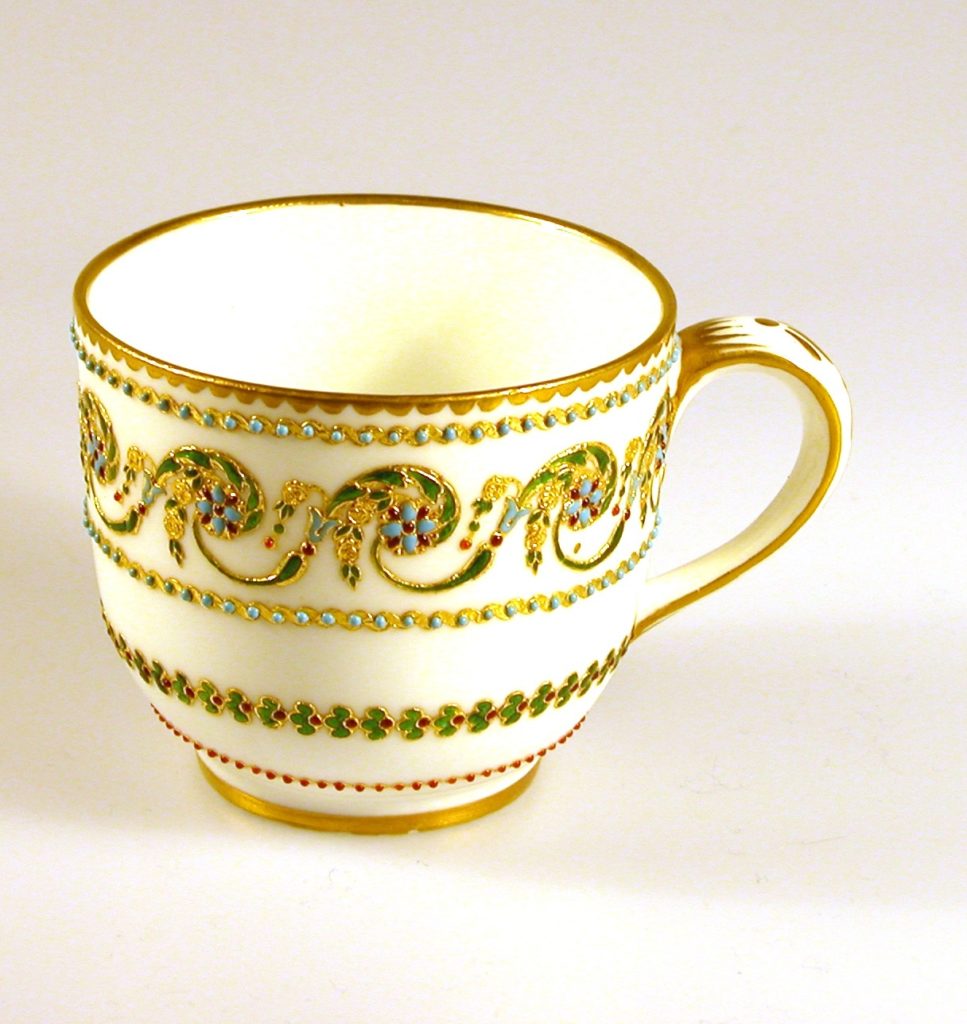

Tea cup and saucer
1767, Sevres, Paris, made by Vincent
Porcelain
Bequeathed by John Irving, 1915
Reference: 5479, 5480
Can be found: Colour and PatternLower shelf in Materials and Masters Collection


Tea pot with lid
19th century, Copeland
Designed by Hurton
From a tea set made by workmen at Copeland’s factory as a wedding gift to the donor
Presented by Lieutenant Colonel Copeland
Reference: 1252
Can be found: Colour and PatternLower shelf in Materials and Masters Collection
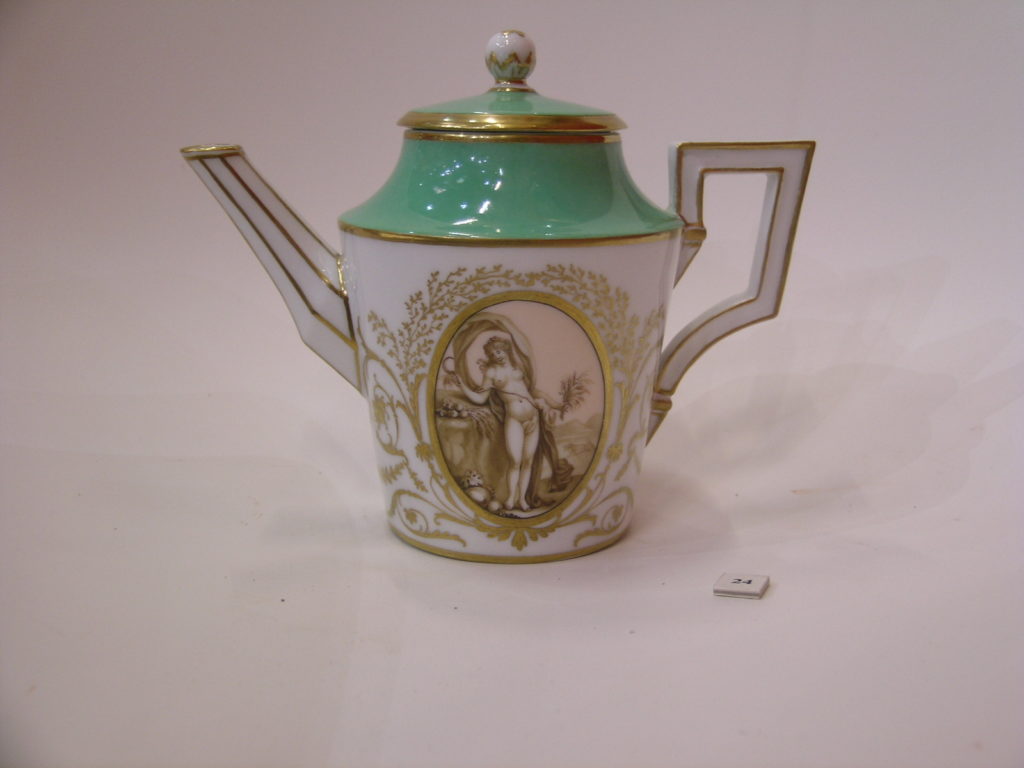

Teapot
Bequeathed by John Irving, 1915
Reference: CANCM:nn
Can be found: Centre shelfEarth in Materials and Masters Collection
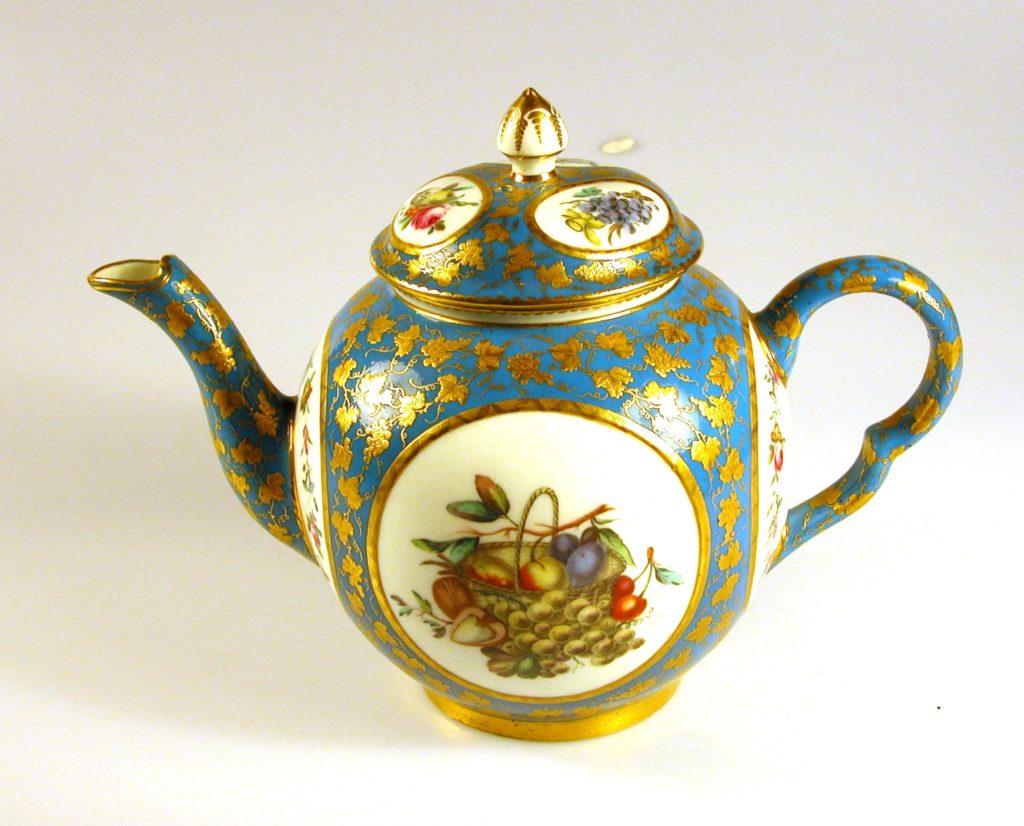

Teapot with turquoise ground 1770-84, Derby, manufactured by W Duesbury
Porcelain
Bequeathed by John Irving, 1915
Reference: 5286-7
Can be found: Centre shelfColour and Pattern in Materials and Masters Collection


Tiles
16th – 17th century, Delft, Netherlands
Tin-glazed earthenware
Tiles like these more usually had blue on white decoration. They were used for tiling fireplaces.
Presented by Miss Haddaway
Reference: 7773
Can be found: BaseEarth in Materials and Masters Collection
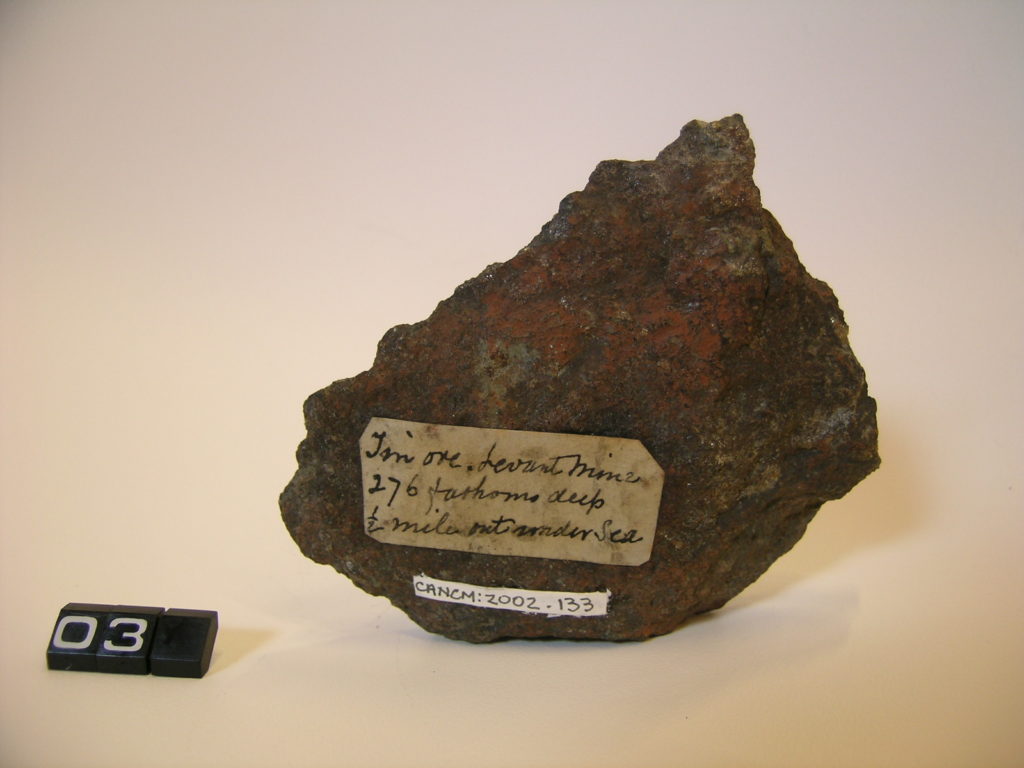

Tin ore
From the Levant mine, Cornwall ‘276 fathom deep half mile out under sea’, collector ‘CGD’, probably 1829
Reference: 2002.133
Can be found: Metal in Materials and Masters Collection


Toy soldiers and Native Americans
Lead is a soft and plentiful metal that was used for making toys, as well as pipes and roof covering – it does not corrode easily and is waterproof. Large quantities of items could be cast, making the toys cheap and readily available. It ceased being used for toys in the mid-20th century when it was discovered to be poisonous.
Reference: CANCM:nn
Can be found: Metal in Materials and Masters Collection


Toy train carriages
Lead is a soft and plentiful metal that was used for making toys, as well as pipes and roof covering – it does not corrode easily and is waterproof. Large quantities of items could be cast, making the toys cheap and readily available. It ceased being used for toys in the mid-20th century when it was discovered to be poisonous.
Reference: CANCM:nn
Can be found: Metal in Materials and Masters Collection
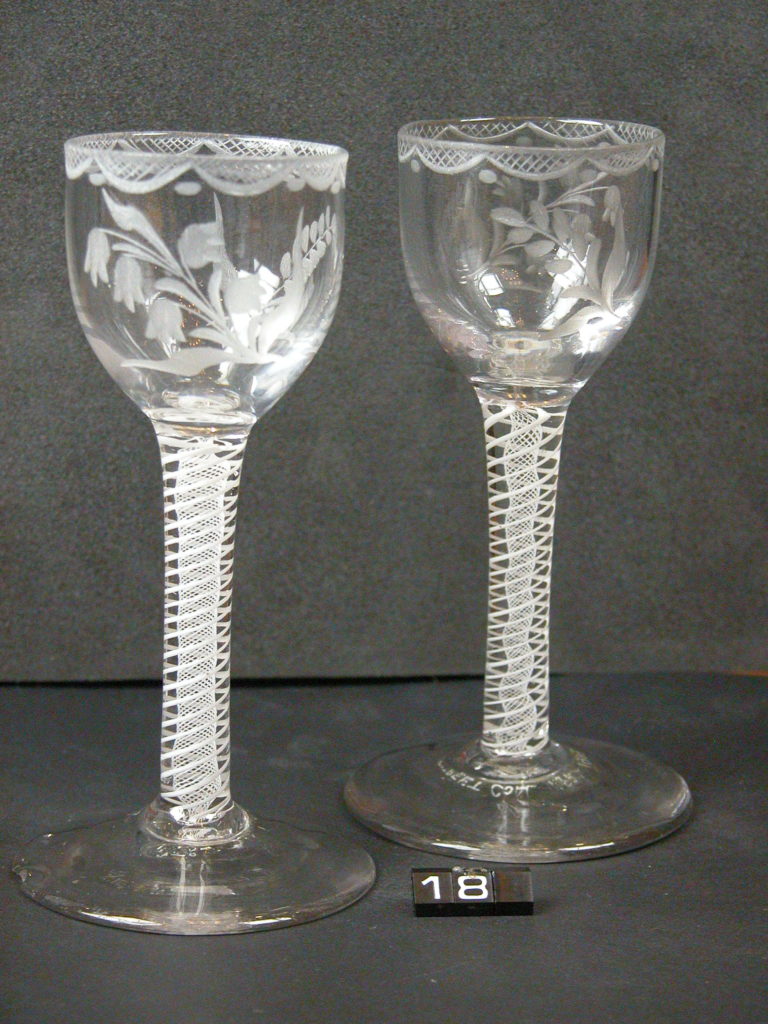

Two cordial glasses
18th – 19th century
With opaque twist stems and engraved with floral sprigs.
Presented by Miss B Street from her brother’s collection, 1933
Reference: CANCM:nn
Can be found: GlassTop shelf in Materials and Masters Collection


Two Jacobite wine glasses 1745 – 60
Engraved with Jacobite roses, one also with a butterfly. Both have air twist stems, one of them ‘knopped’ with thicker blobs of glass. The air twist stems are created by trapping a bubble of air in molten glass then pulling and twisting as it cools.
Presented by Miss B Street from her brother’s collection, 1933
Reference: CANCM:nn
Can be found: GlassTop shelf in Materials and Masters Collection
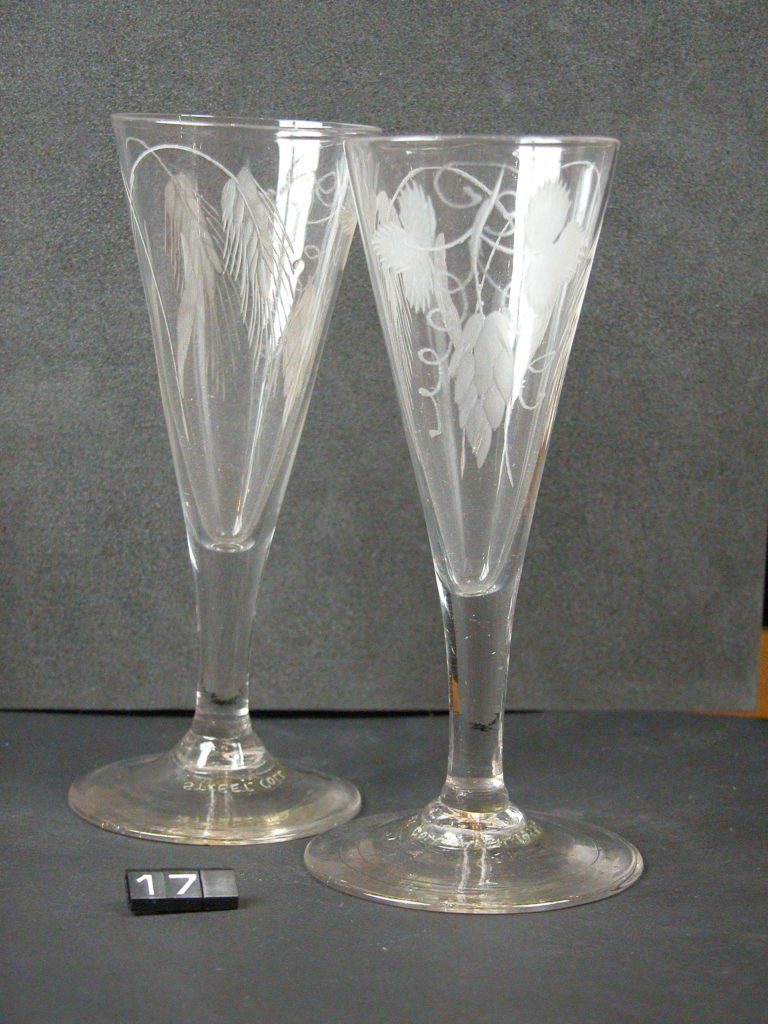

Two wine or ale glasses
18th – 19th century
Engraved decoration of barley and hops.
Presented by Miss B Street from her brother’s collection, 1933
Reference: CANCM:nn
Can be found: GlassTop shelf in Materials and Masters Collection


Two wine or dessert glasses 18th – 19th century
With knopped stems, one with air bubbles trapped for decoration.
Presented by Miss B Street from her brother’s collection, 1933
Reference: CANCM:nn
Can be found: GlassTop shelf in Materials and Masters Collection


Venus flower basket
The skeleton of an ocean sponge, known as Venus Flower Basket, is made of silica by the soft-bodied creature living inside. David Attenborough chose the Venus Flower Basket as one of the amazing creatures he would save if he had an ark, in a recent TV series.
Reference: CANCM:nn
Can be found: GlassLower shelf in Materials and Masters Collection
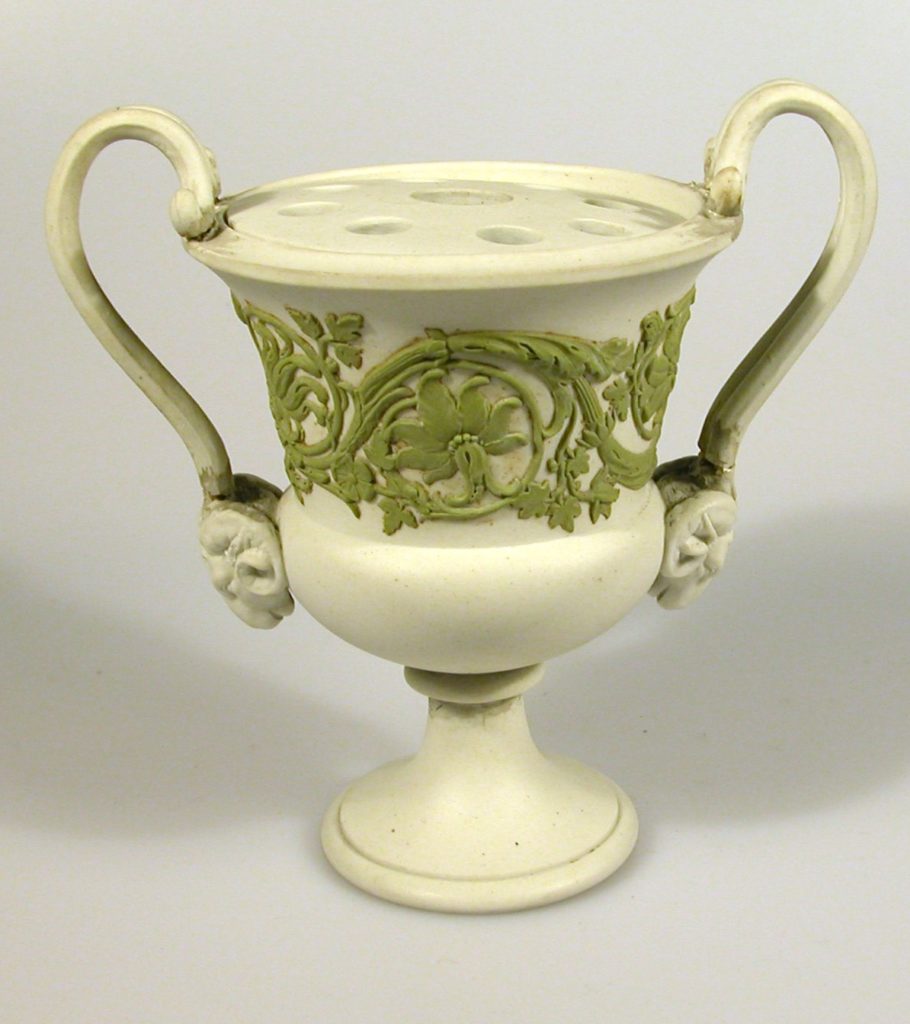

White Jasperware vase with green scroll pattern in relief 1750
Wedgwood
Bequeathed by John Irving, 1915
Reference: 5313
Can be found: Colour and PatternTop shelf in Materials and Masters Collection
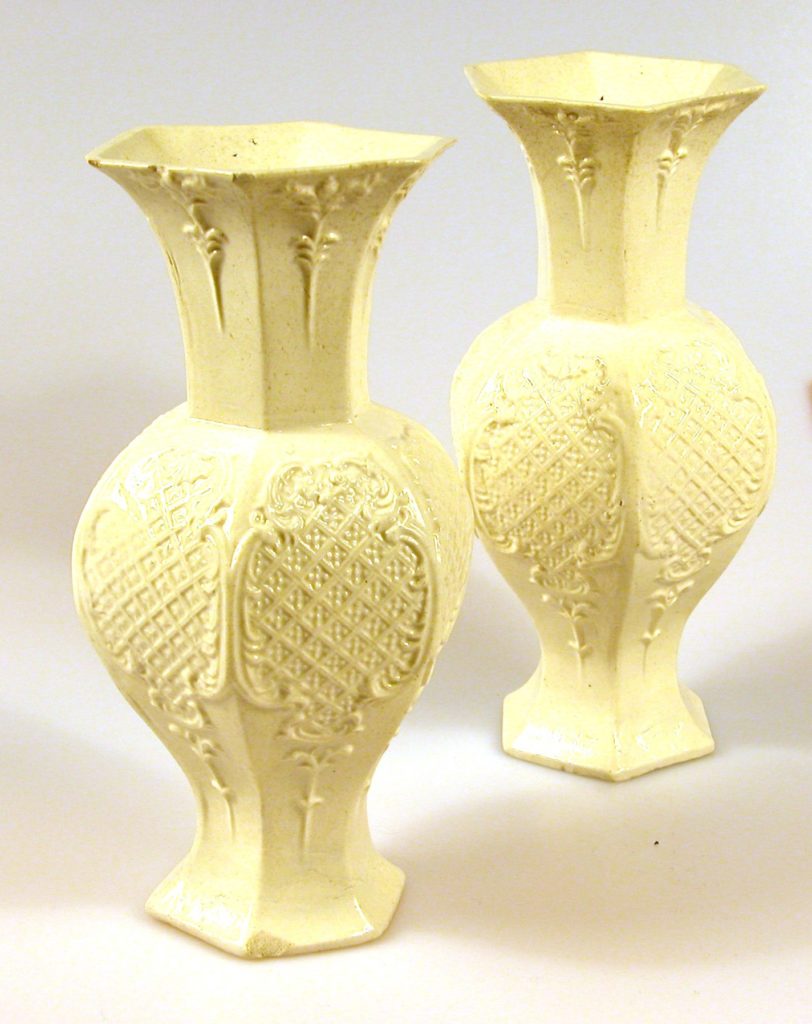

White plates, dishes, sauceboat, vases and teapot
1750-75, Staffordshire
Saltglaze stoneware
Presented by Miss B. Street from her brother’s collection, 1933
Reference: 8599 & 2 other, 7787, 7786, 7783, 7782, 7784
Can be found: Colour and PatternTop shelf in Materials and Masters Collection
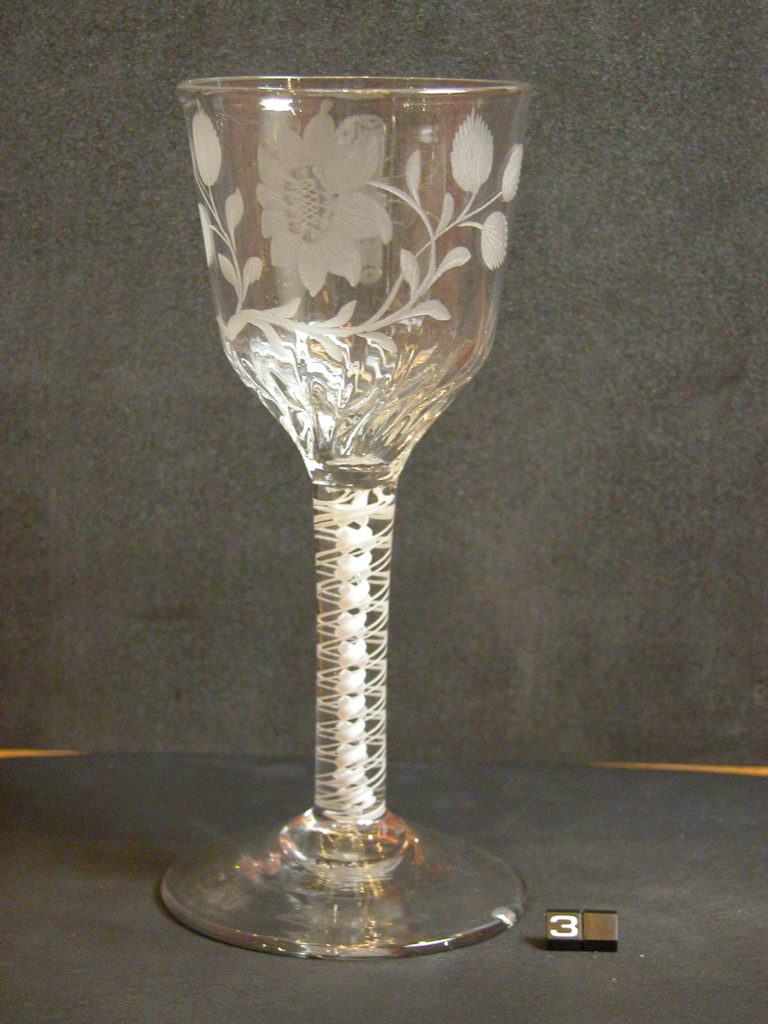

Wine glass
about 1750
With engraved decoration of flowers and a butterfly, and an opaque twist stem.
Bequeathed by John Irving, 1915
Reference: 5571
Can be found: Centre shelfGlass in Materials and Masters Collection
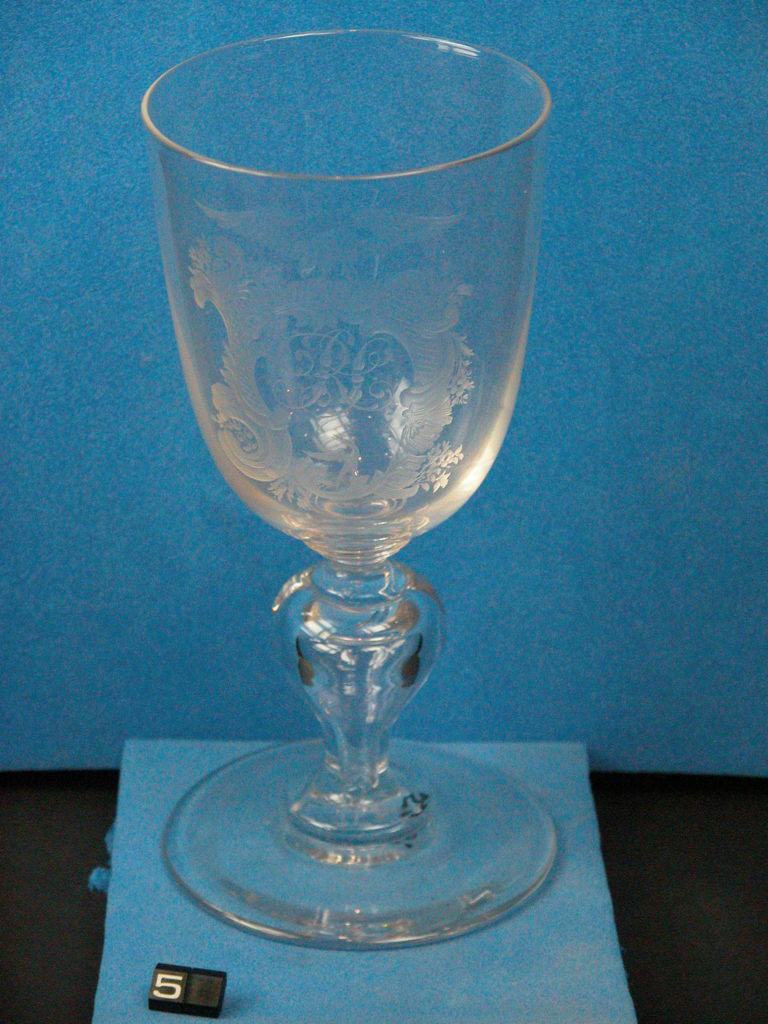

Wine glass
18th – 19th century
With a knopped stem and large bowl engraved with a coat of arms and initials.
Bequeathed by John Irving, 1915
Reference: 5581
Can be found: Centre shelfGlass in Materials and Masters Collection


Wine or ale glass
about 1745 – 70
With an air twist stem, the bowl is richly engraved with hops and barley.
Bequeathed by John Irving, 1915
Reference: 5574
Can be found: Centre shelfGlass in Materials and Masters Collection
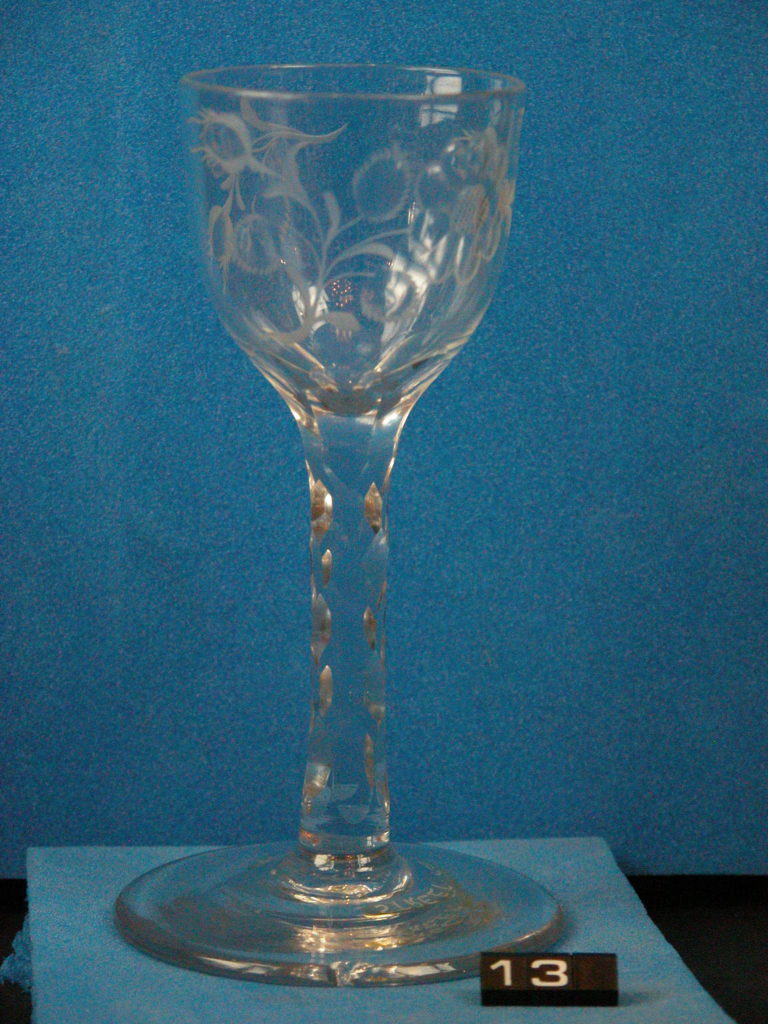

Wine or cordial glass
1760 – 1810
With a faceted stem, the bowl with dog rose pattern engraved.
Presented by Miss B Street from her brother’s collection, 1933
Reference: CANCM:nn
Can be found: GlassTop shelf in Materials and Masters Collection
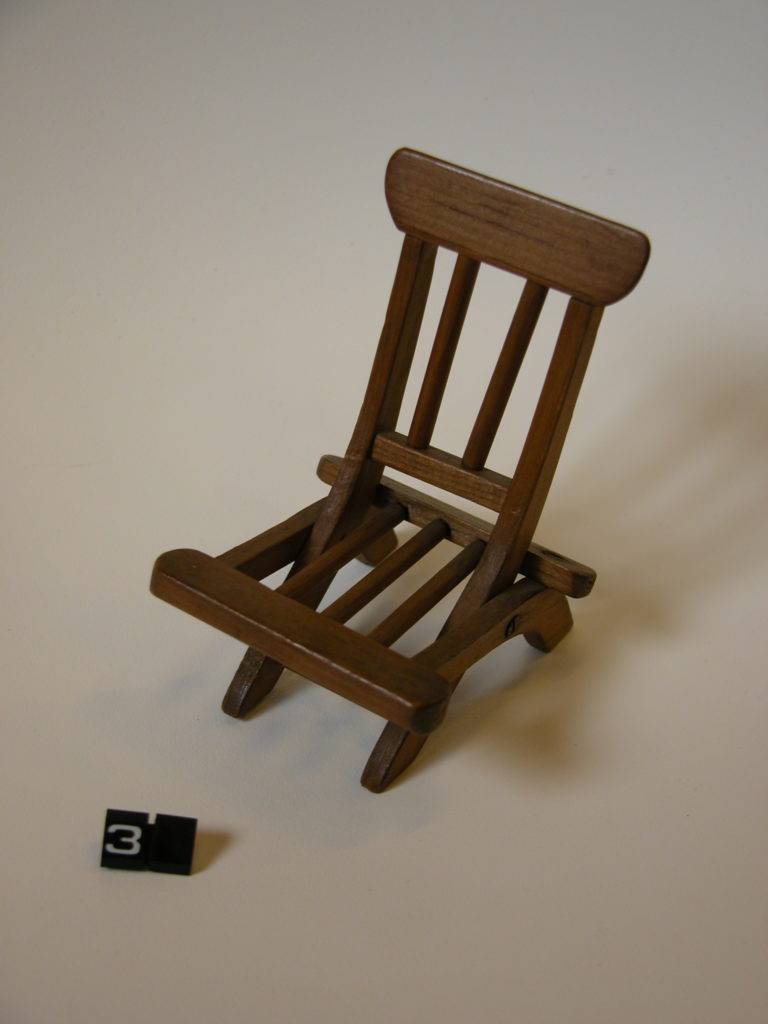

Wooden and bamboo dolls’ house furniture, wooden and sisal brush, linen and cotton dolls’ house bedding
Bequeathed by Miss G H Veraguth to the daughter of Dr Wynn and presented to the Museum in memory of Miss Veraguth, 1974
Reference: 9870
Can be found: Vegetable in Materials and Masters Collection








Wooden box and game counters (Seven Men’s Morris?)
Bequeathed by Miss Frances Aitken, 1992
Reference: 1992.1.105
Can be found: Vegetable in Materials and Masters Collection








Wooden paper knife
Bequeathed by Miss Frances Aitken, 1992
Reference: 1992.1.343
Can be found: Vegetable in Materials and Masters Collection


Zincite
Dark brown and white zinc manganese oxide.
Reference: D4.A.161
Can be found: Metal in Materials and Masters Collection


‘Glen Mist’ teapot
1970s, Wedgwood
Designed by Susie Cooper
Bone china
Reference: 2002.320.1-2
Can be found: BaseEarth in Materials and Masters Collection
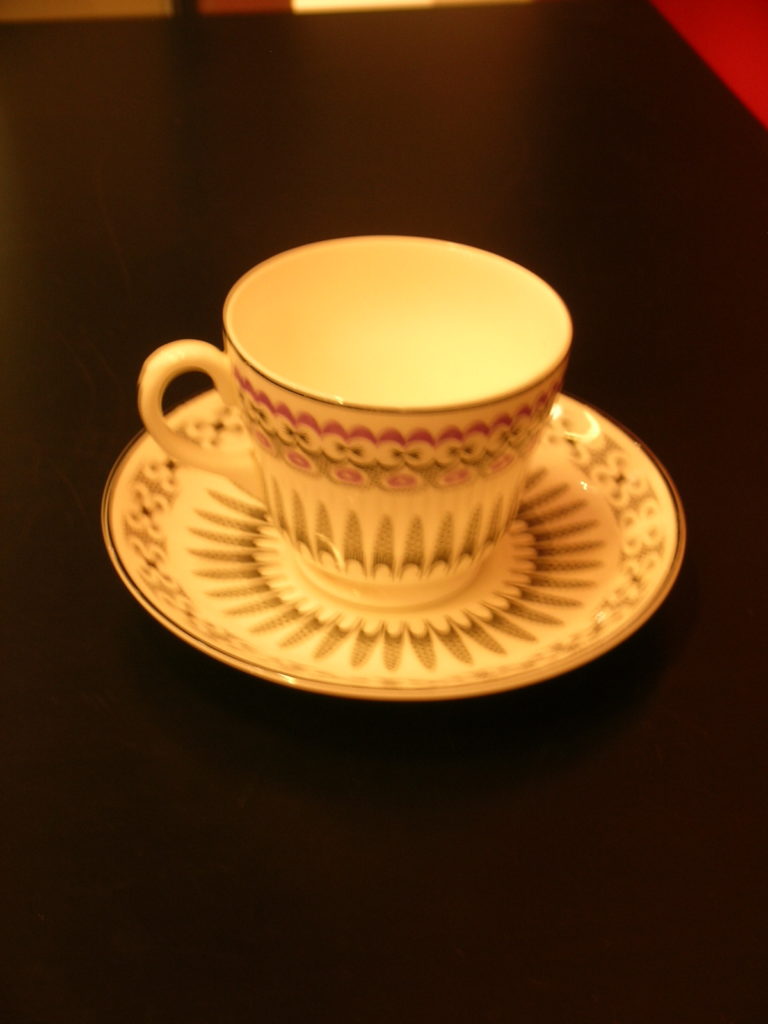

‘Heartsease’ cup and saucer 1952, Wedgwood for the Orient Line
Designed by Edward Bawden
Bone china
Bequeathed by George and Lorna Maynard, 2010
Reference: 2010.1.3-4
Can be found: Centre shelfEarth in Materials and Masters Collection
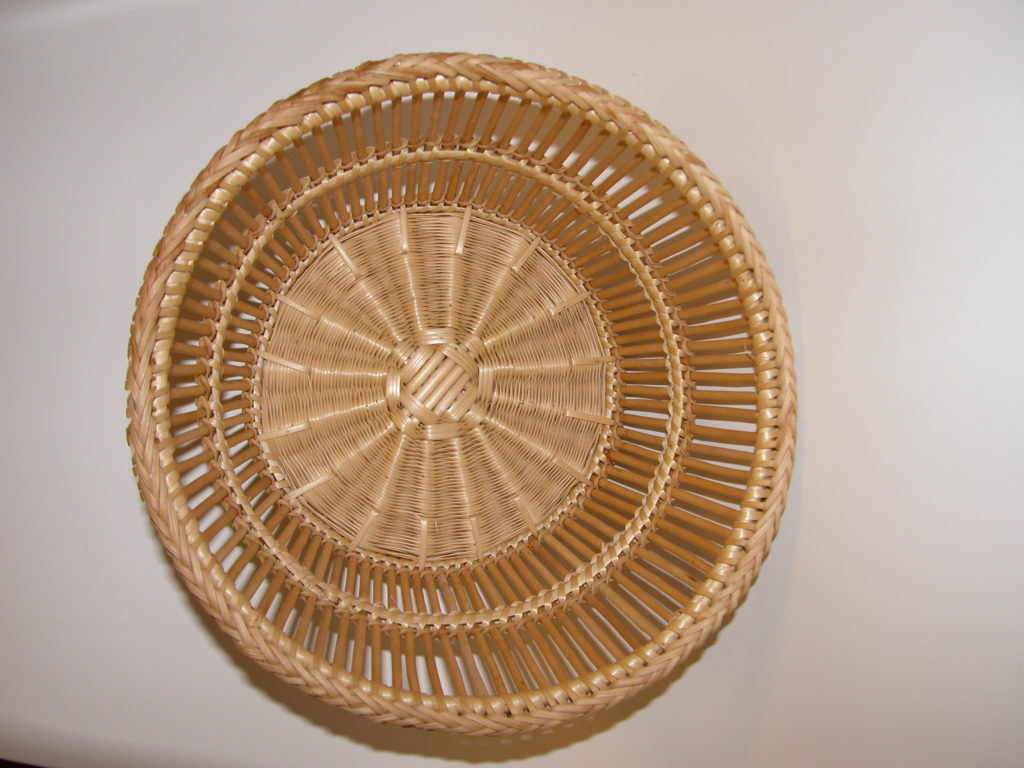

‘Old World, New World’ skeined basket
White willow and yellow cedar
Mary Butcher, MBE
Lent by Mary Butcher, 2012
Reference: CANCM:nn
Can be found: Vegetable in Materials and Masters Collection








“Enemy Country” First World War letter
1915
Paper
Easter card and envelope sent by Canterbury resident Frances Katherine Aitken to her cousin in Germany, but returned as undeliverable due to war. Part of a large collection of personal letters, poems, ration books, propaganda cartoons, special passes to travel on railway journeys to Dover Docks and much more that forms an important snapshot of Home Front Canterbury.
Bequeathed by Miss Frances Aitken, 1992
Reference: 1992.1.334
Can be found: Vegetable in Materials and Masters Collection

